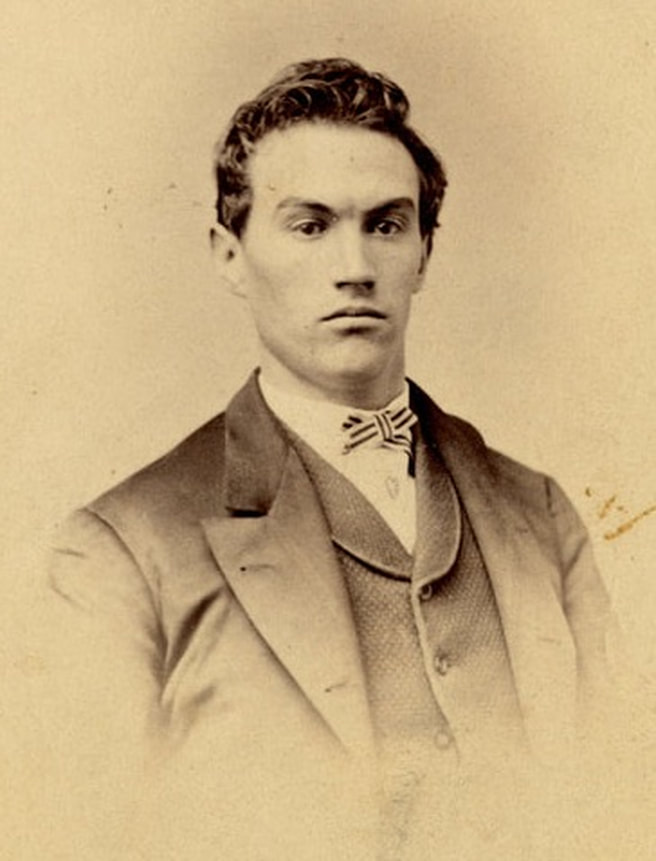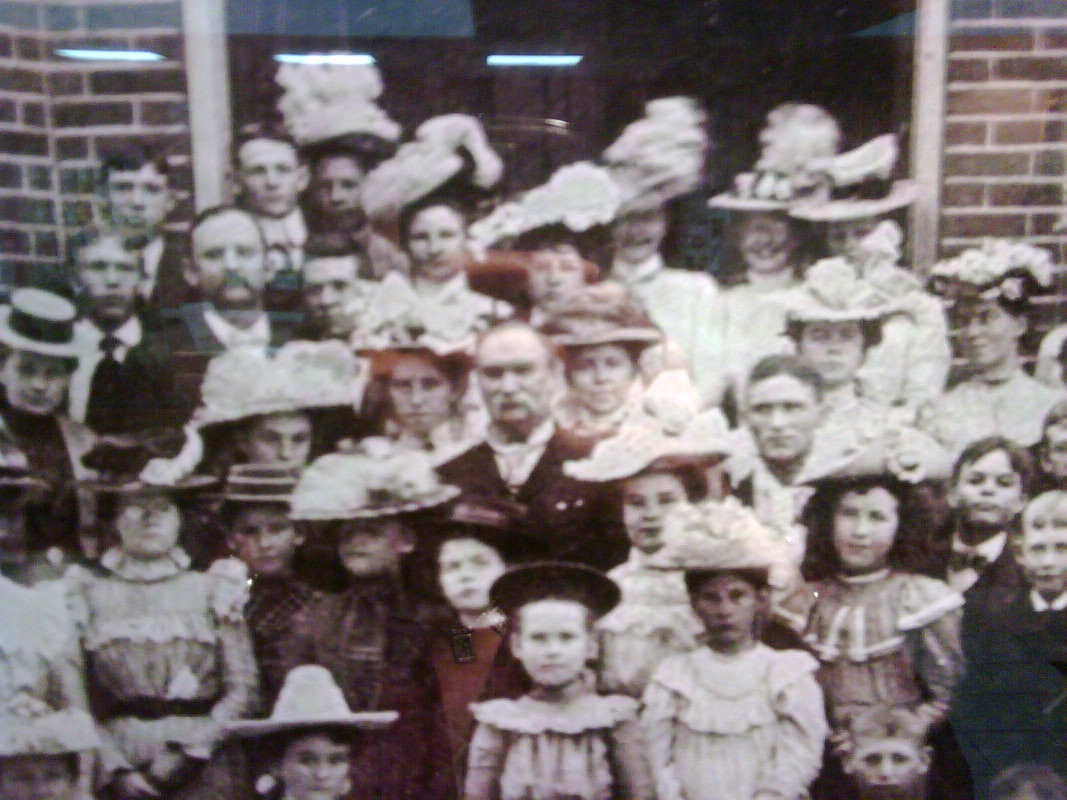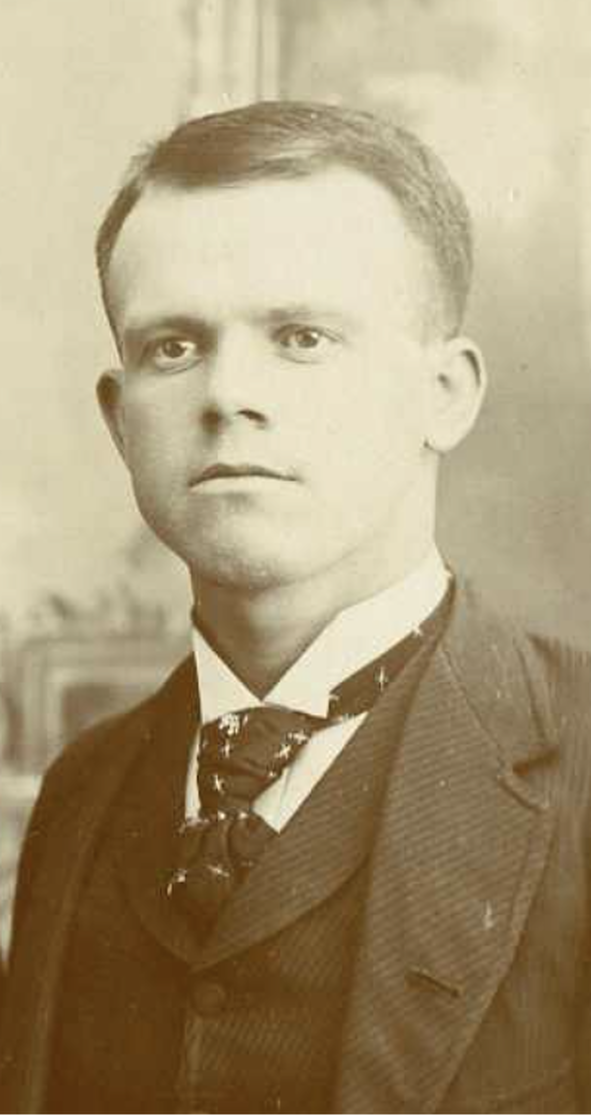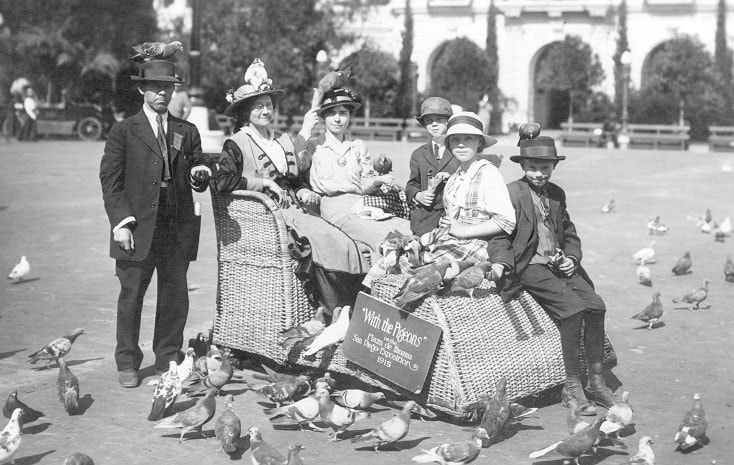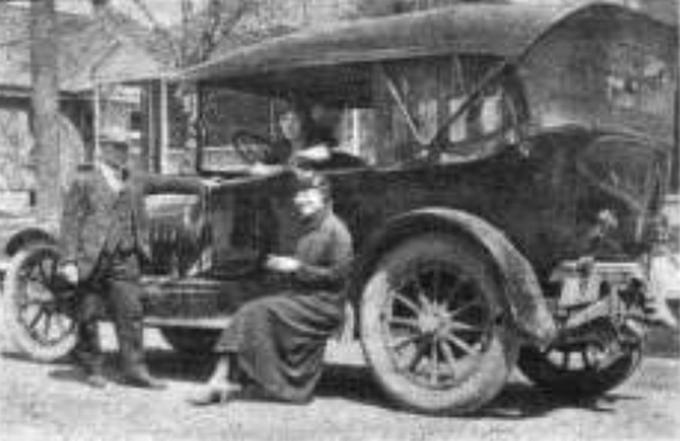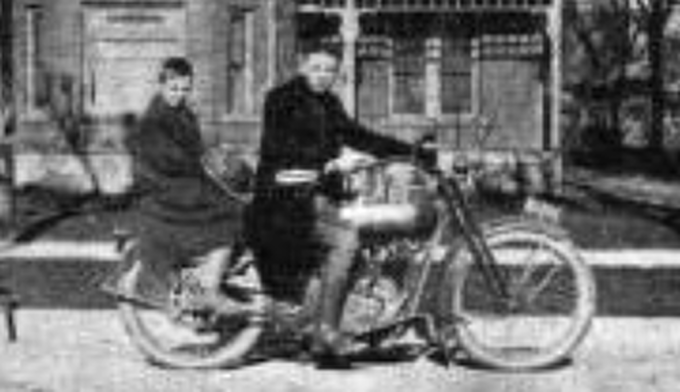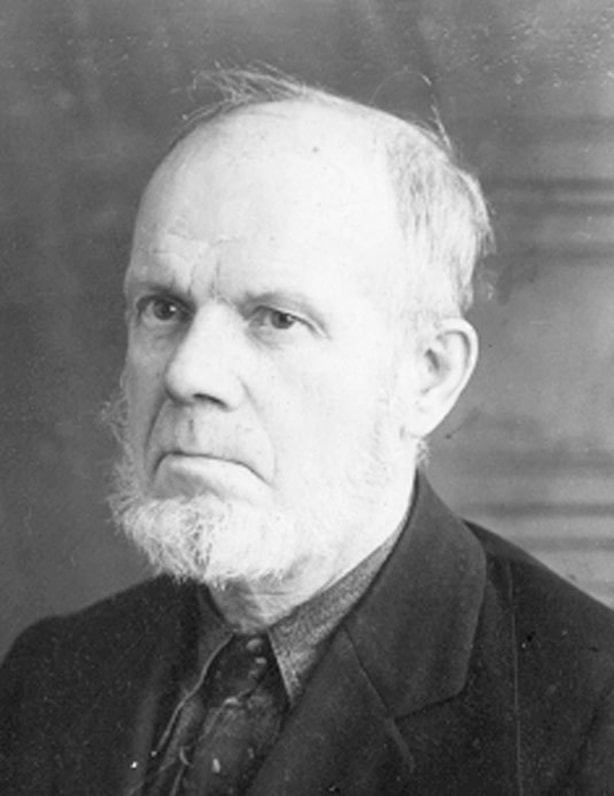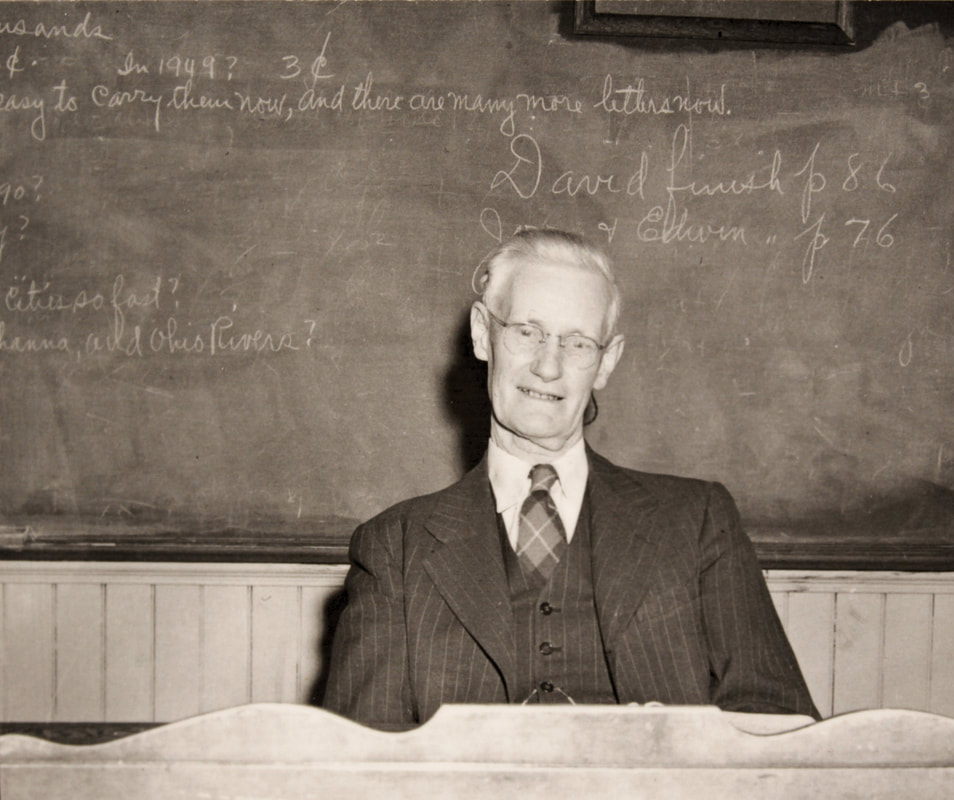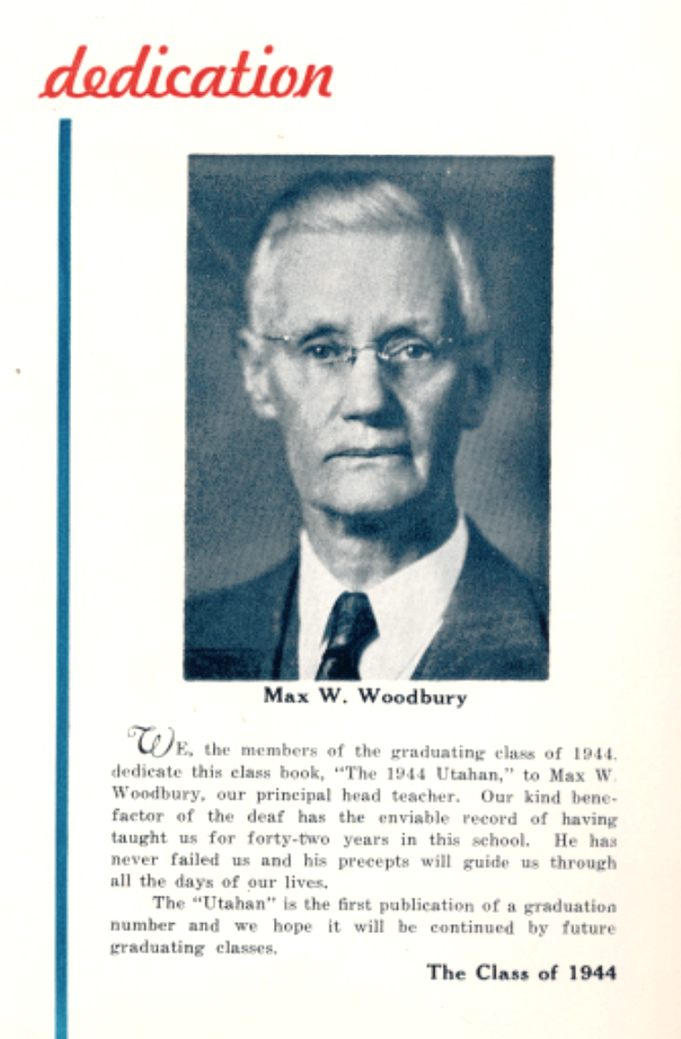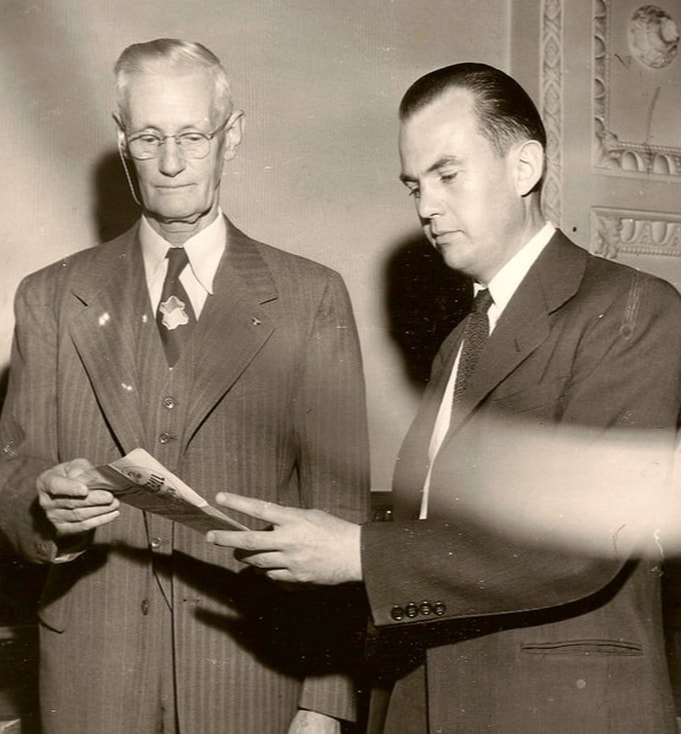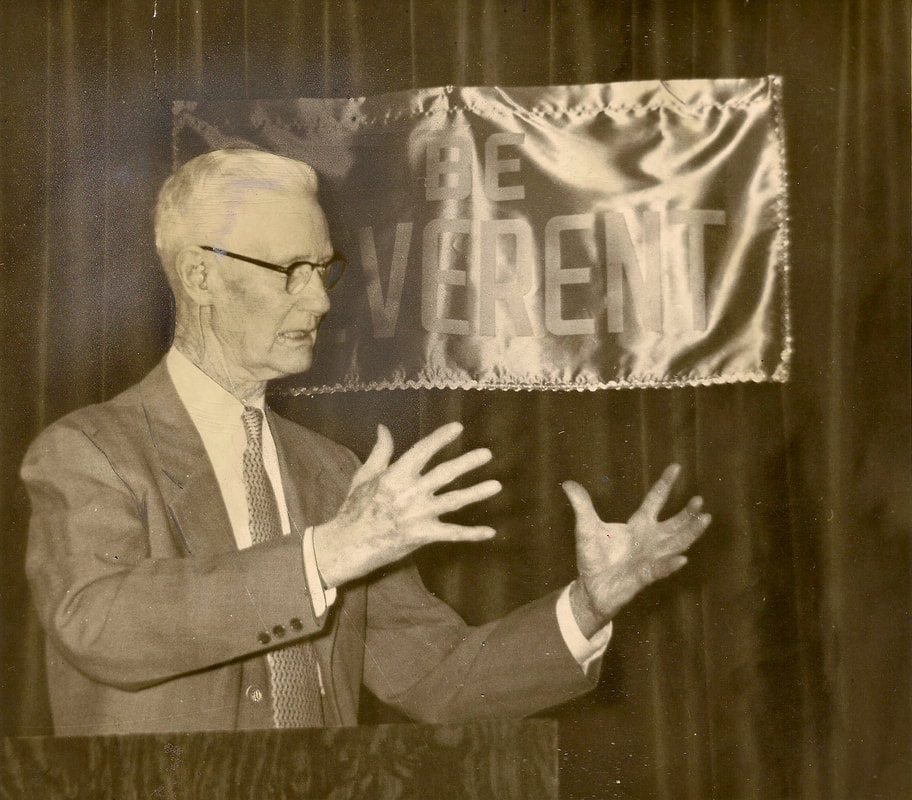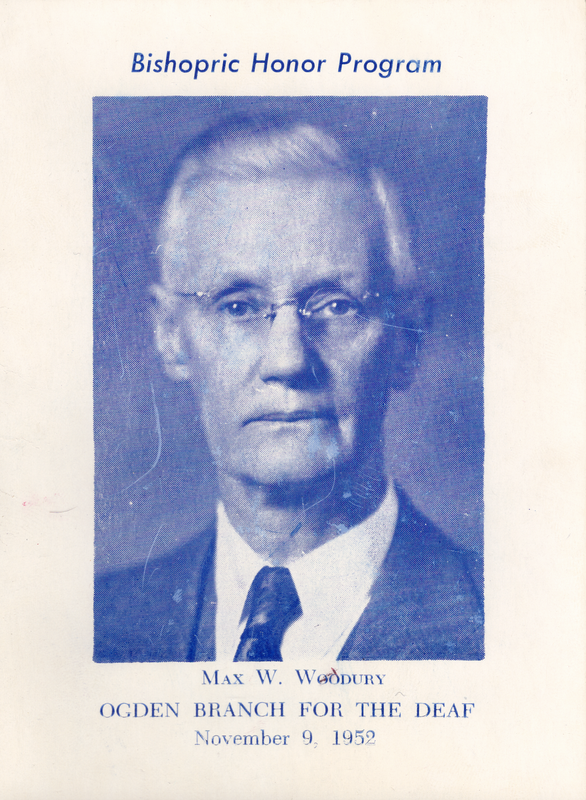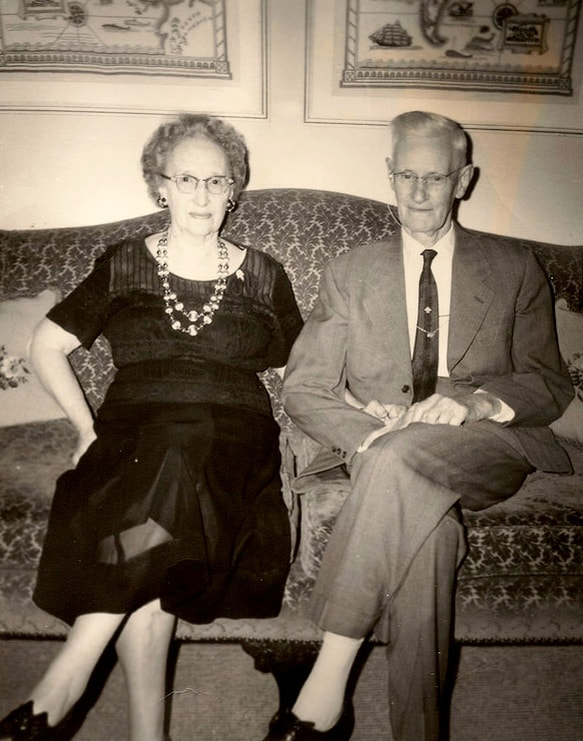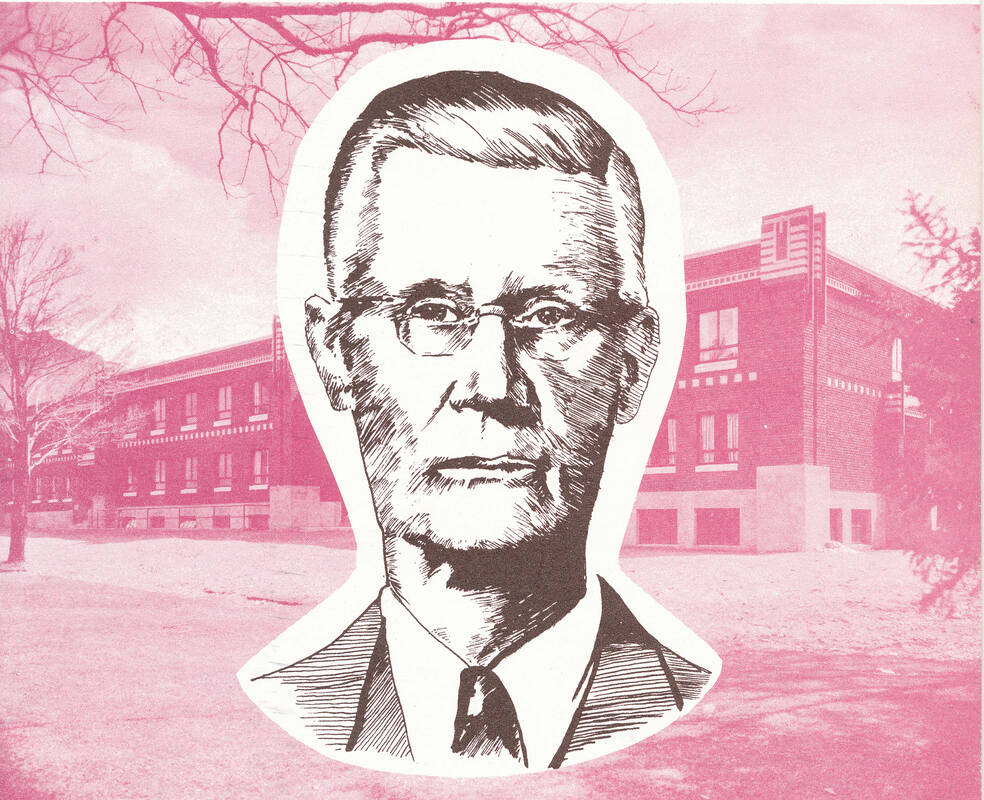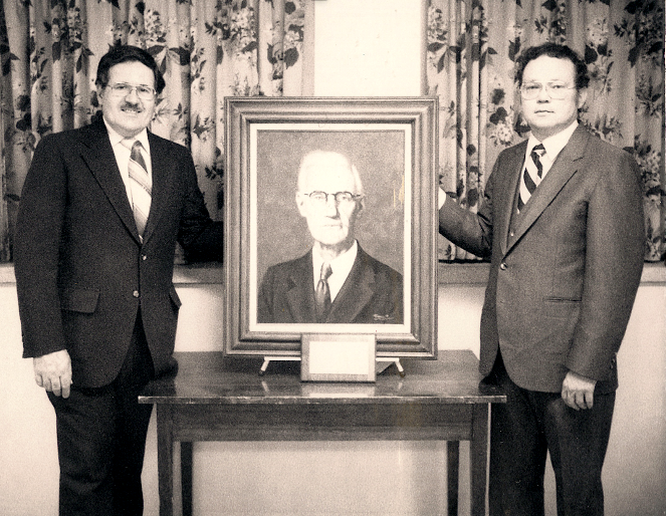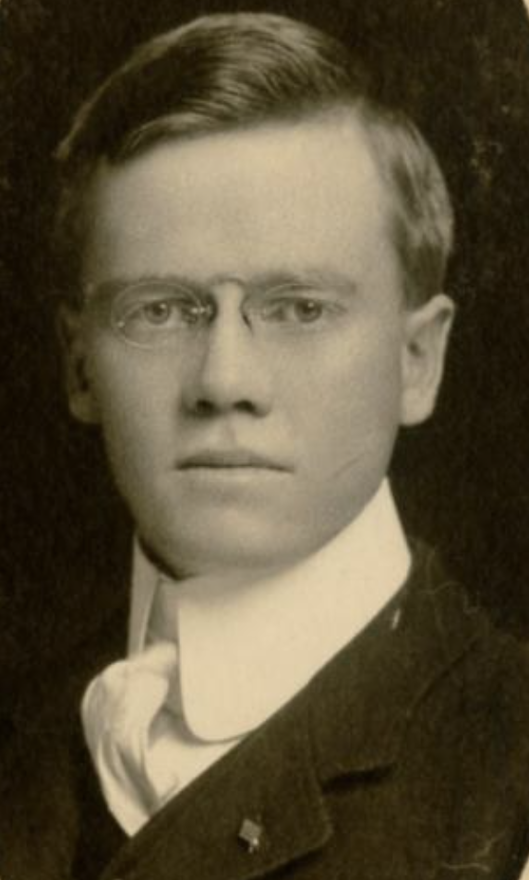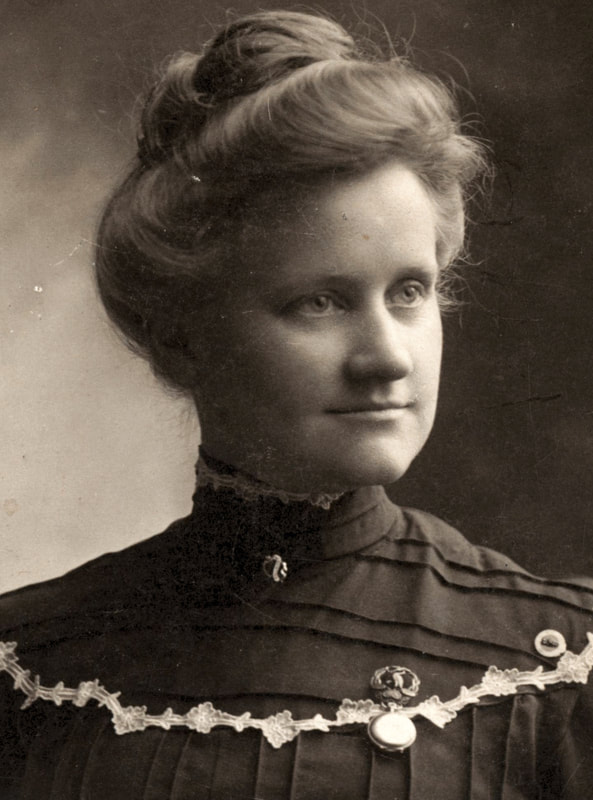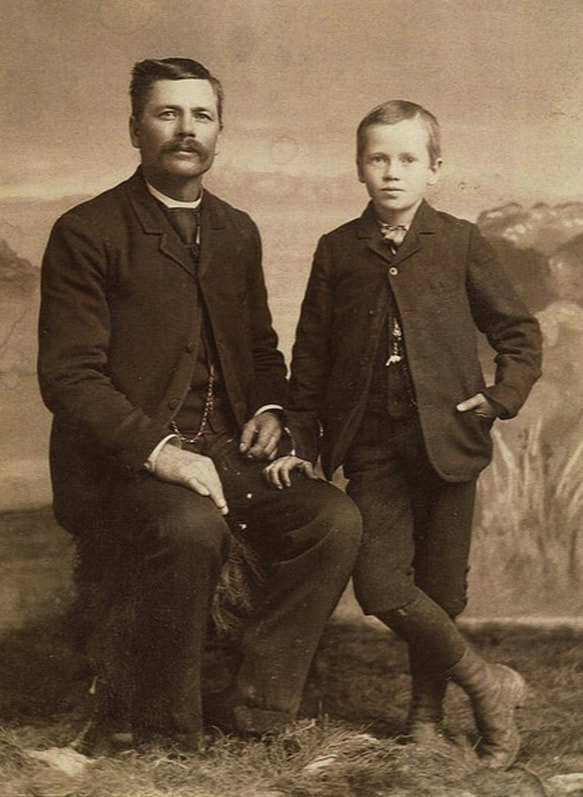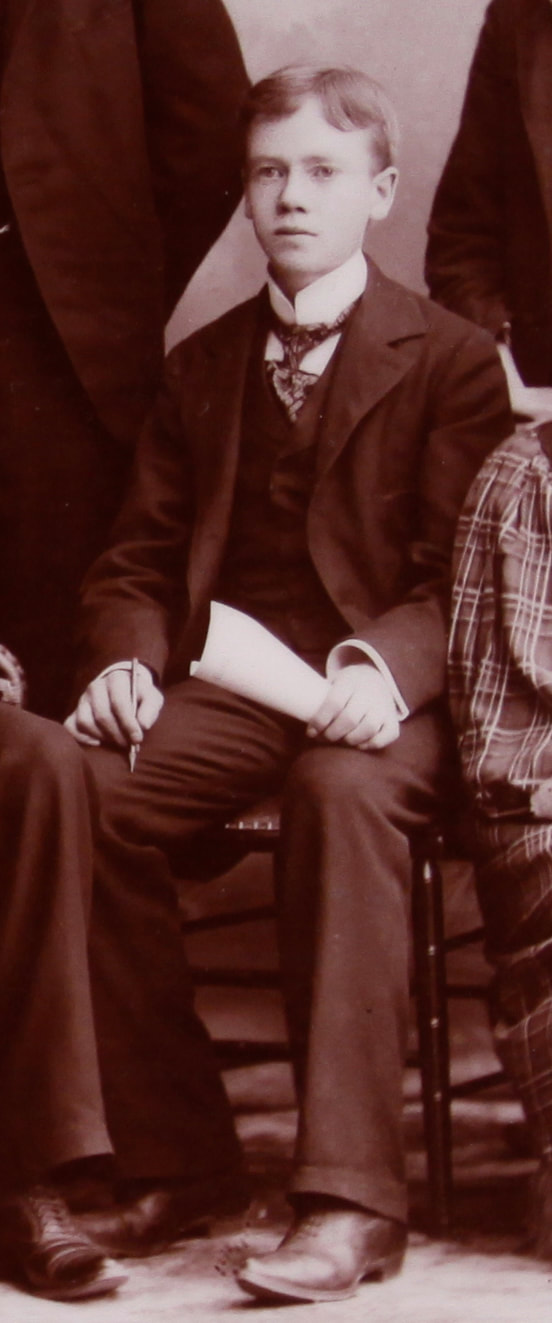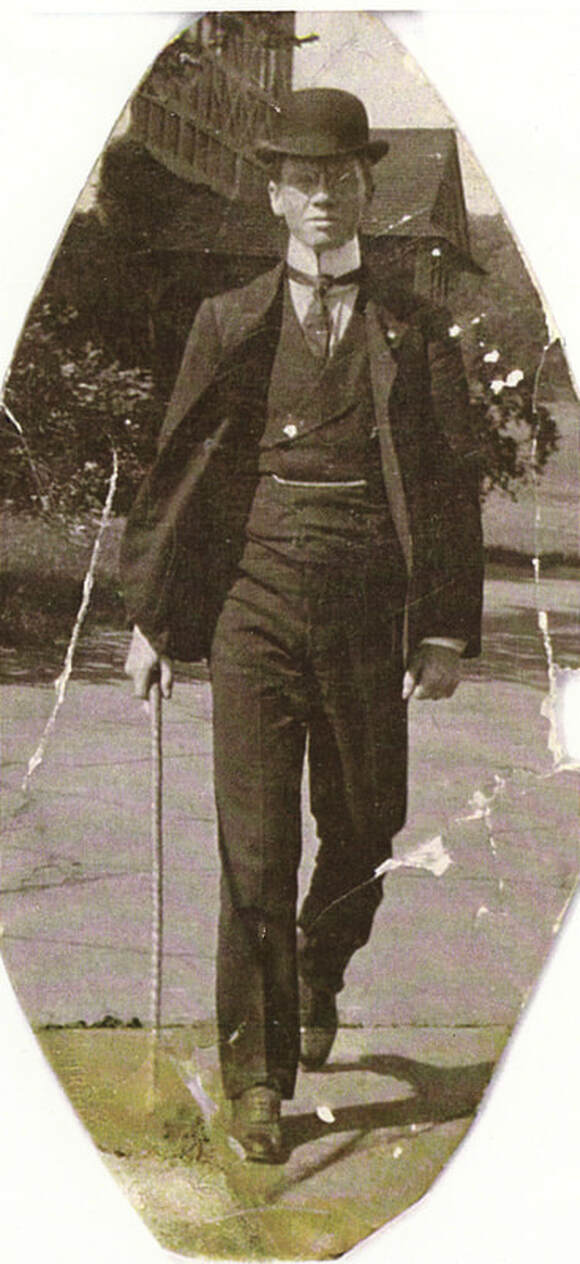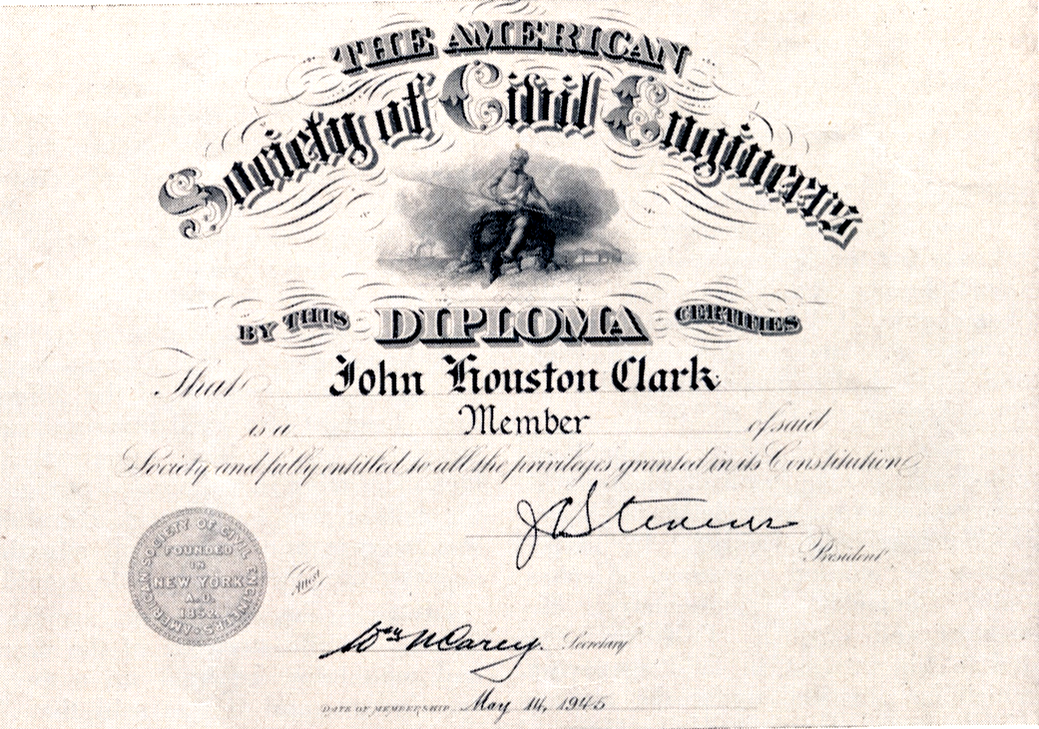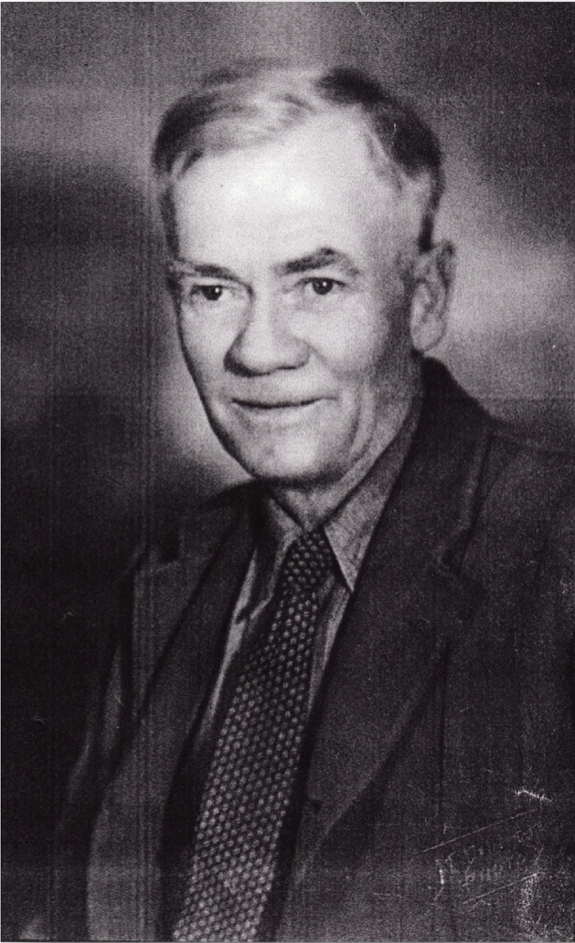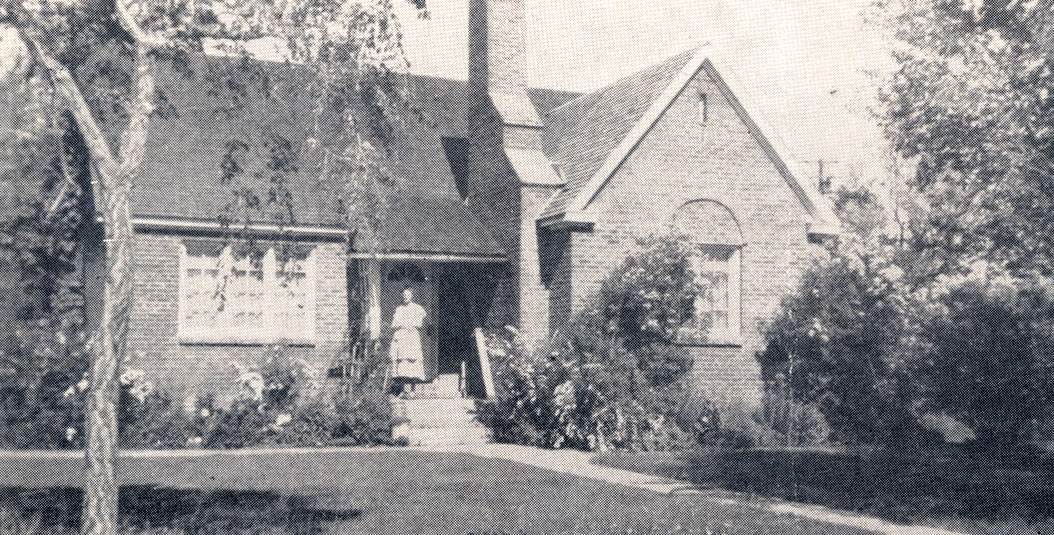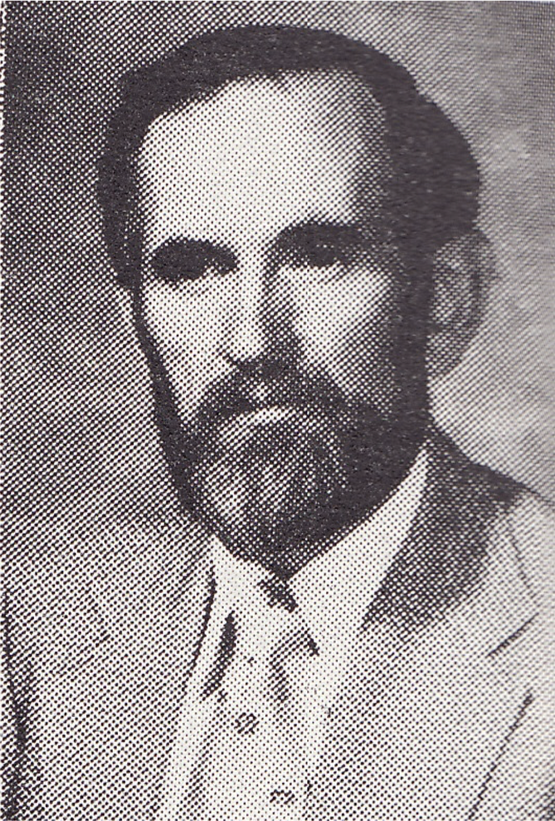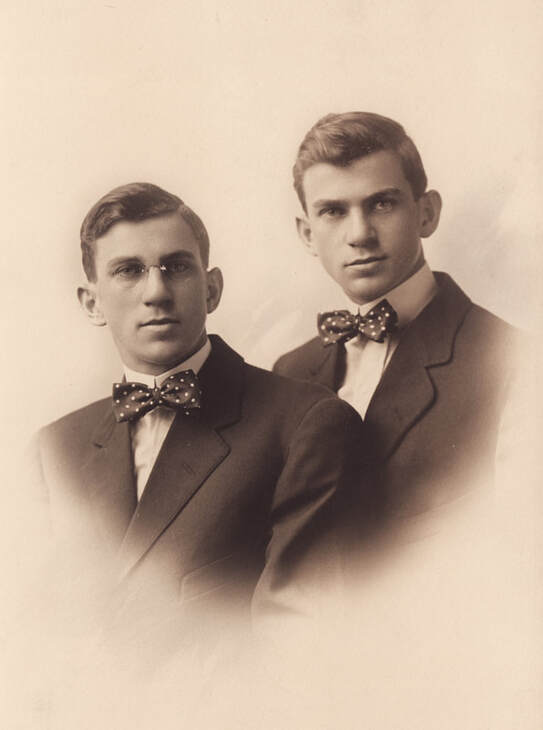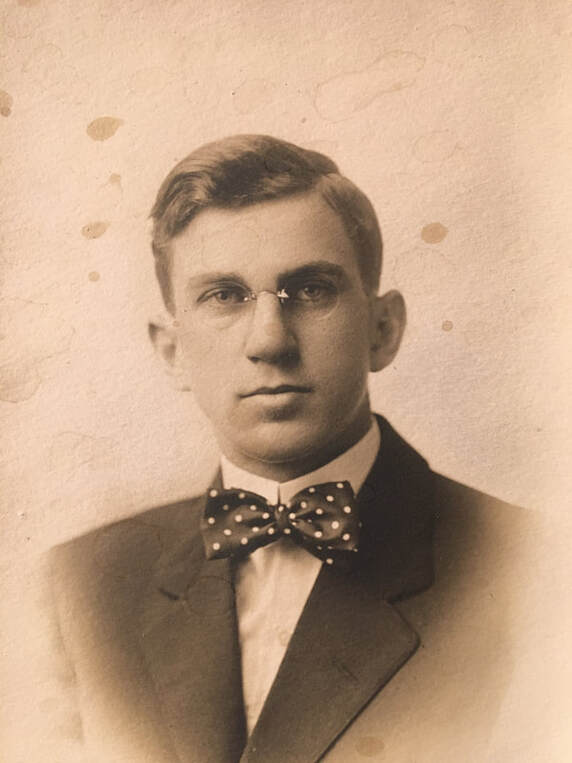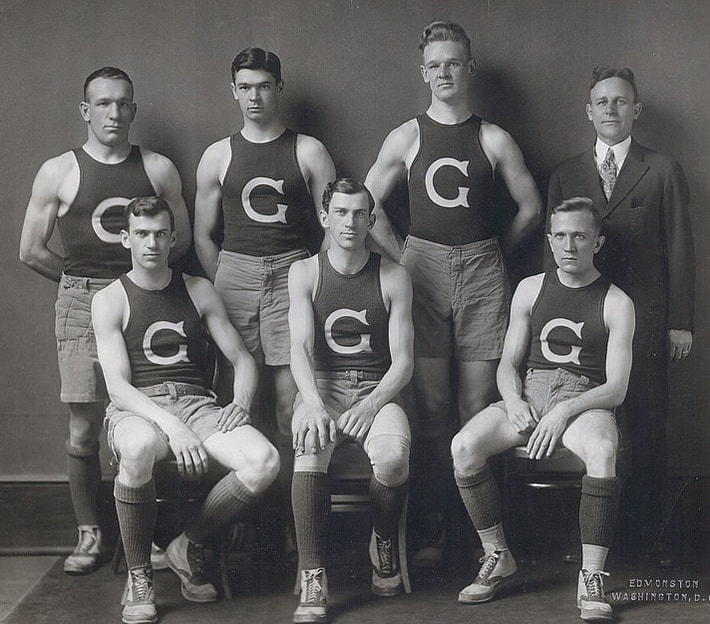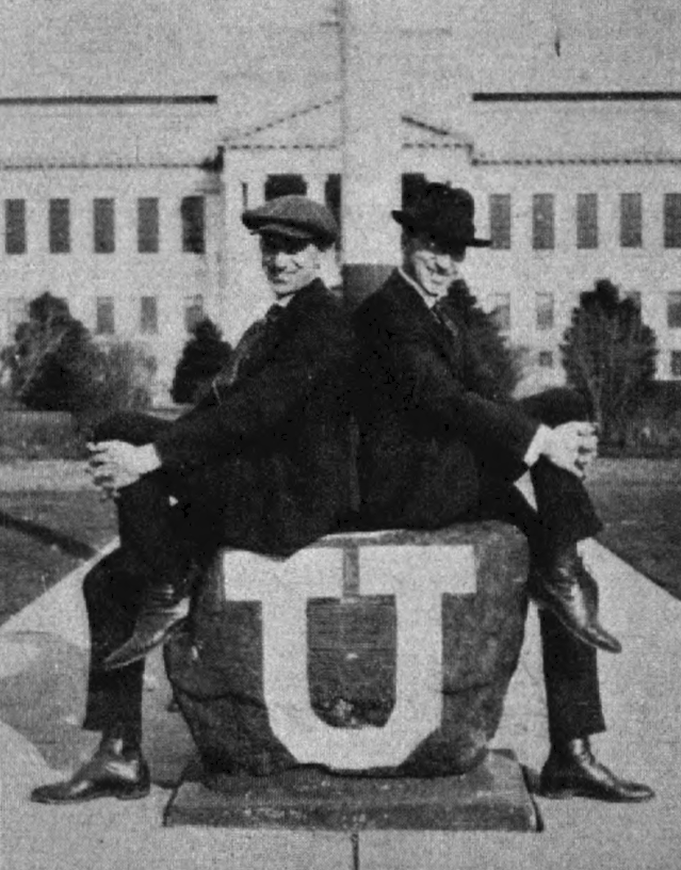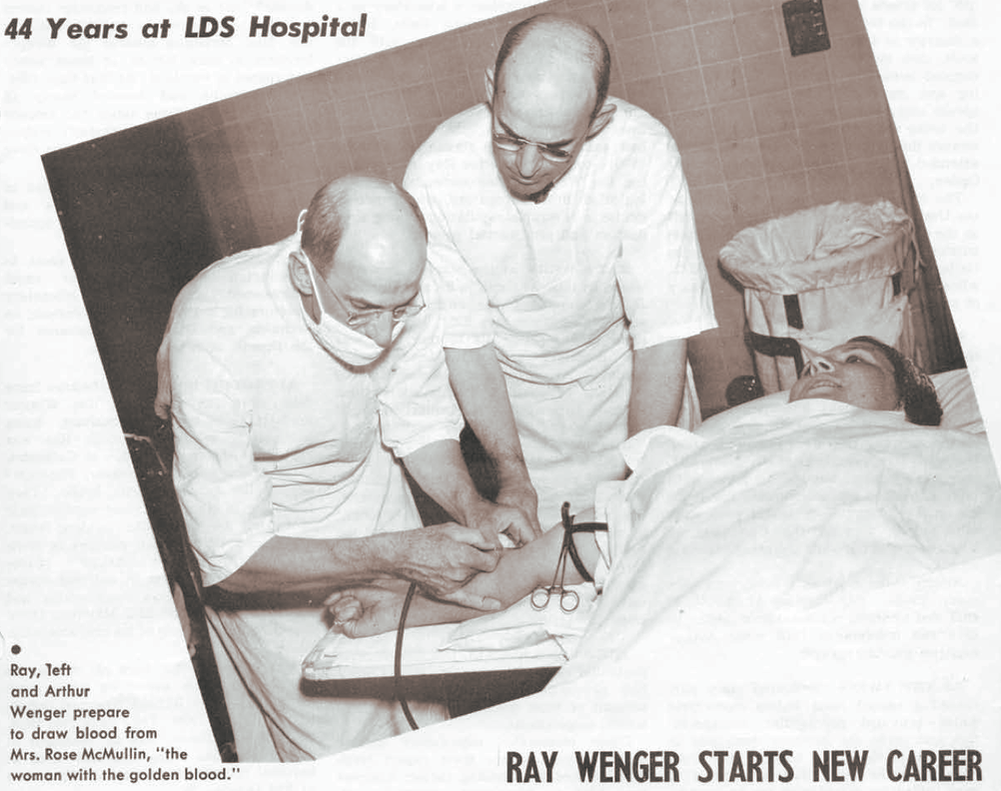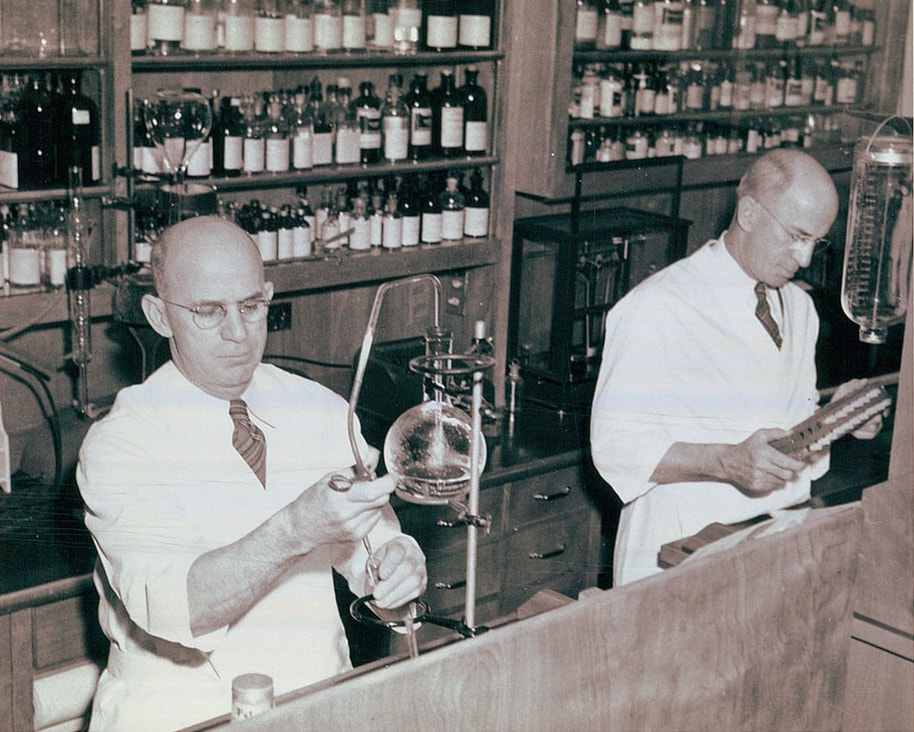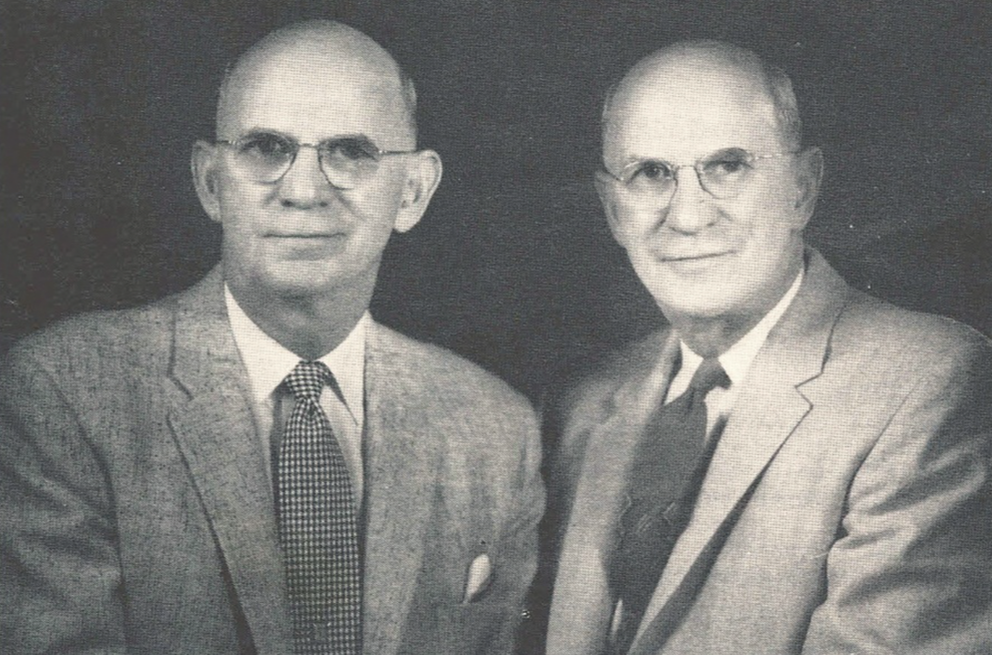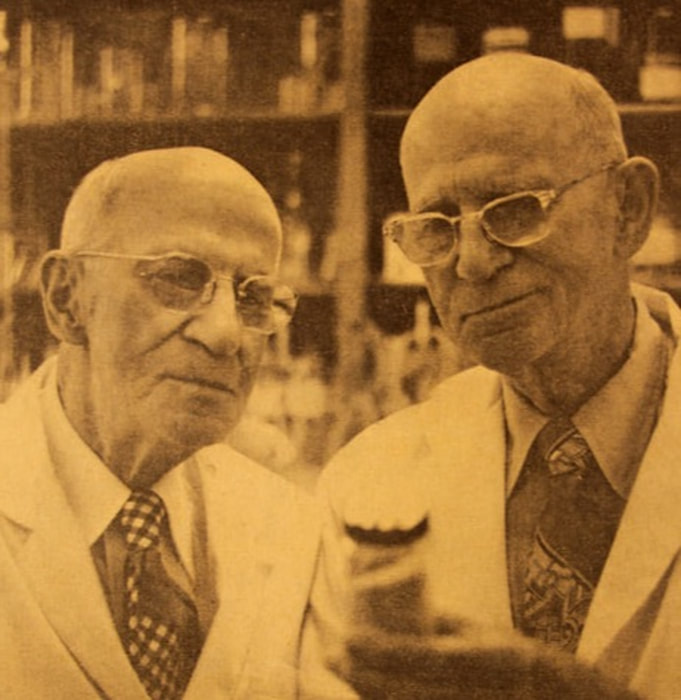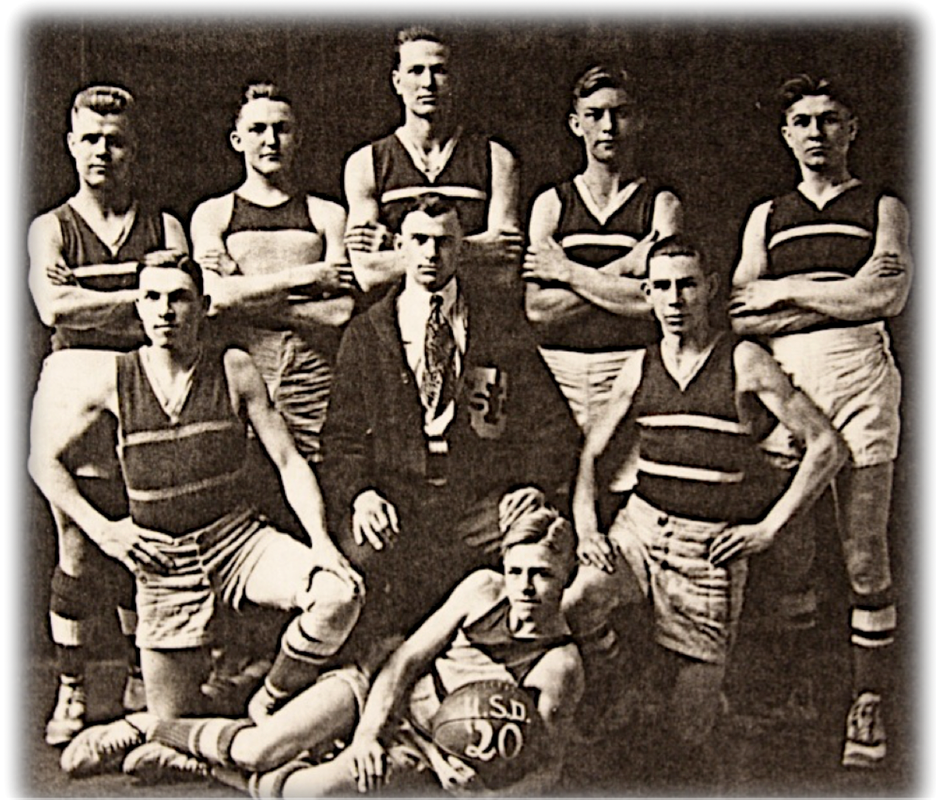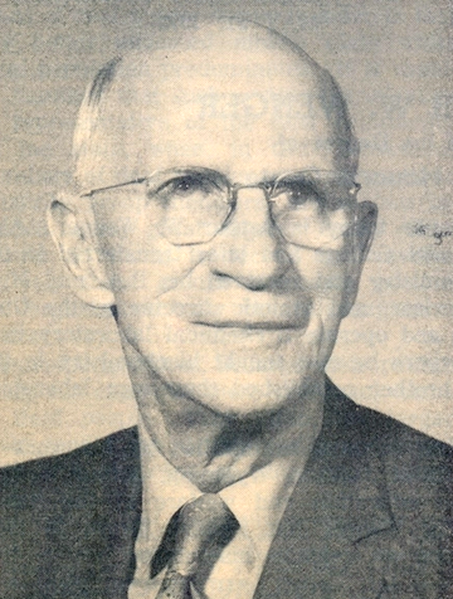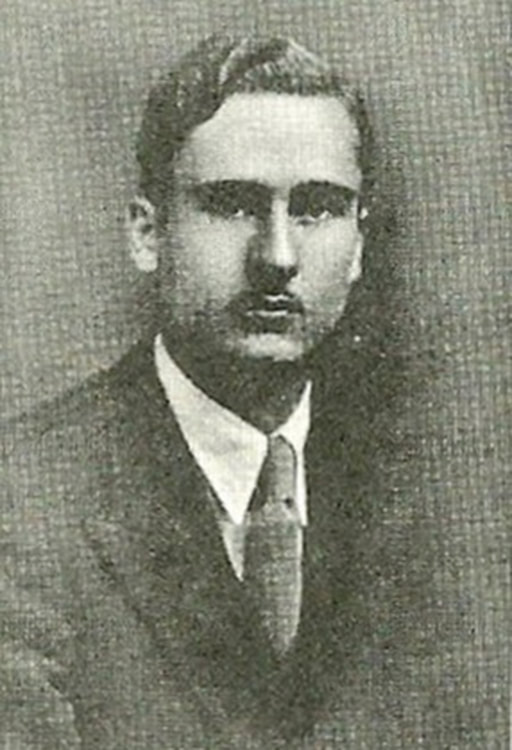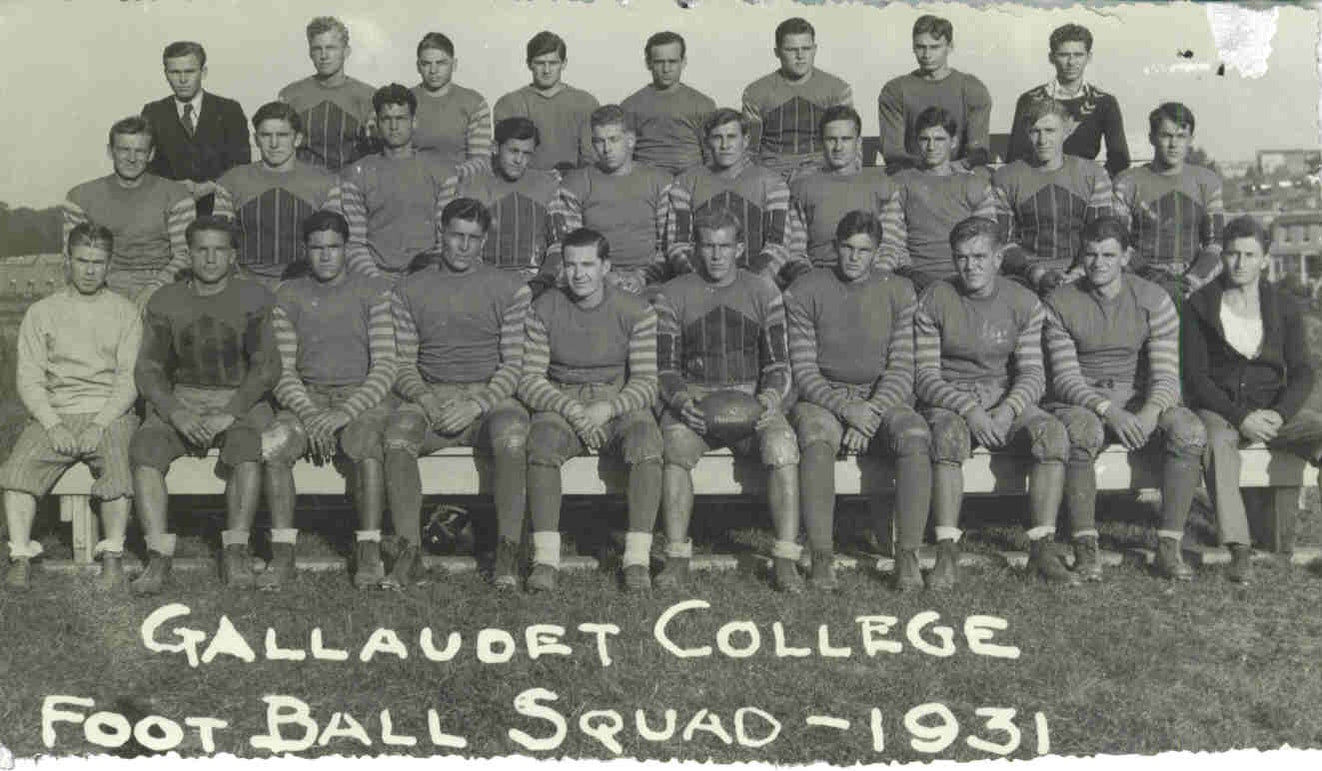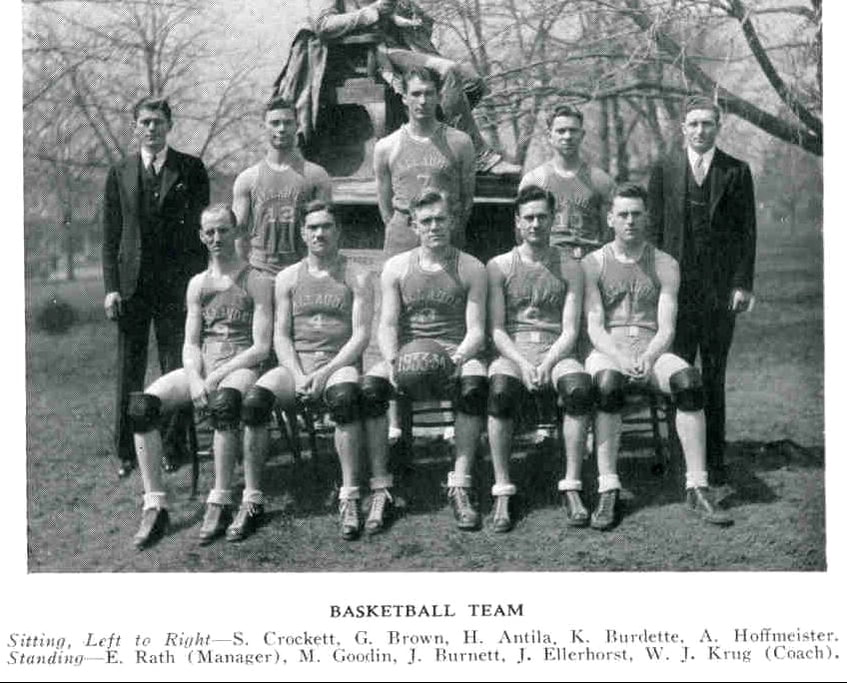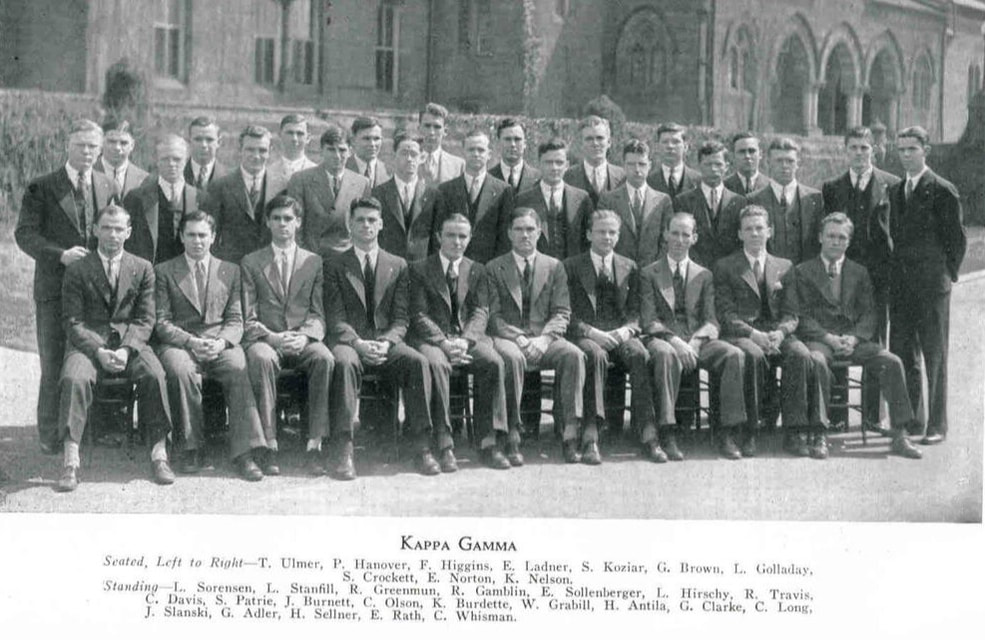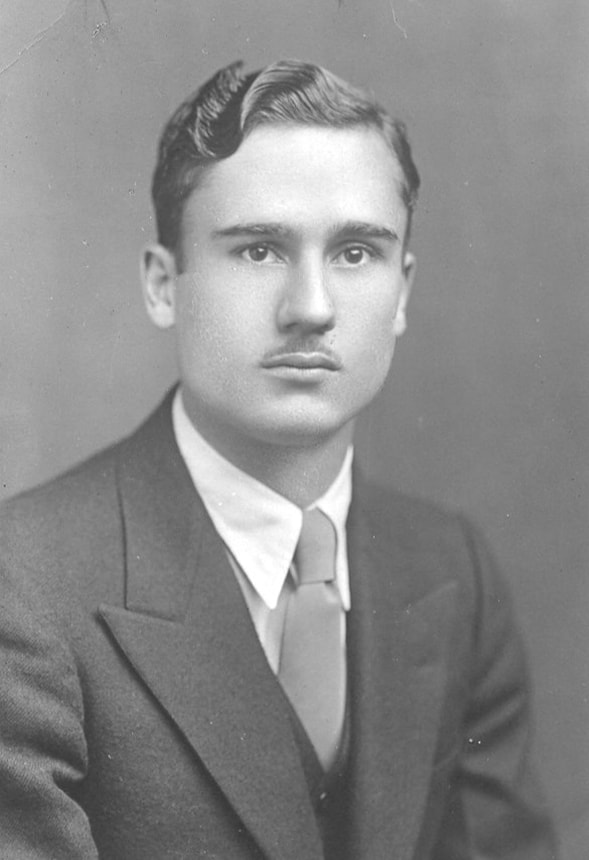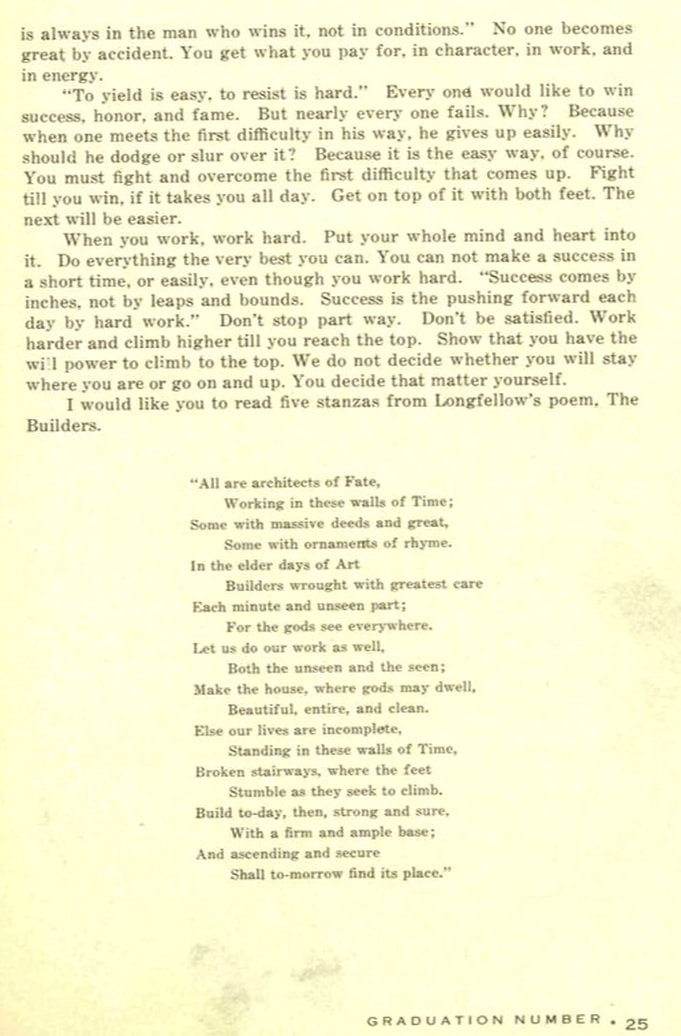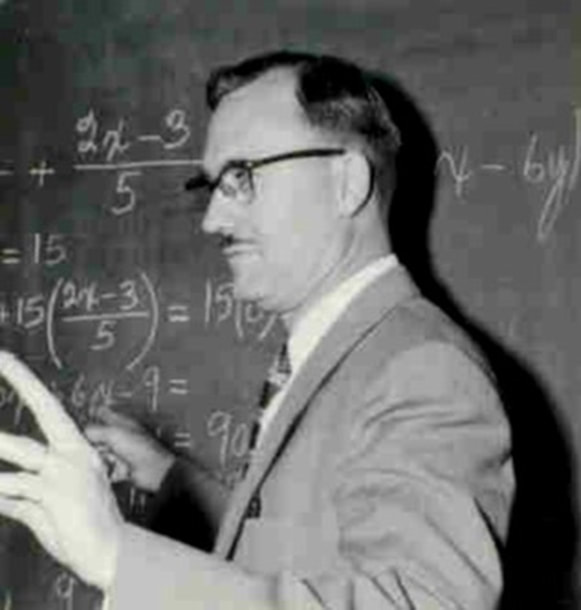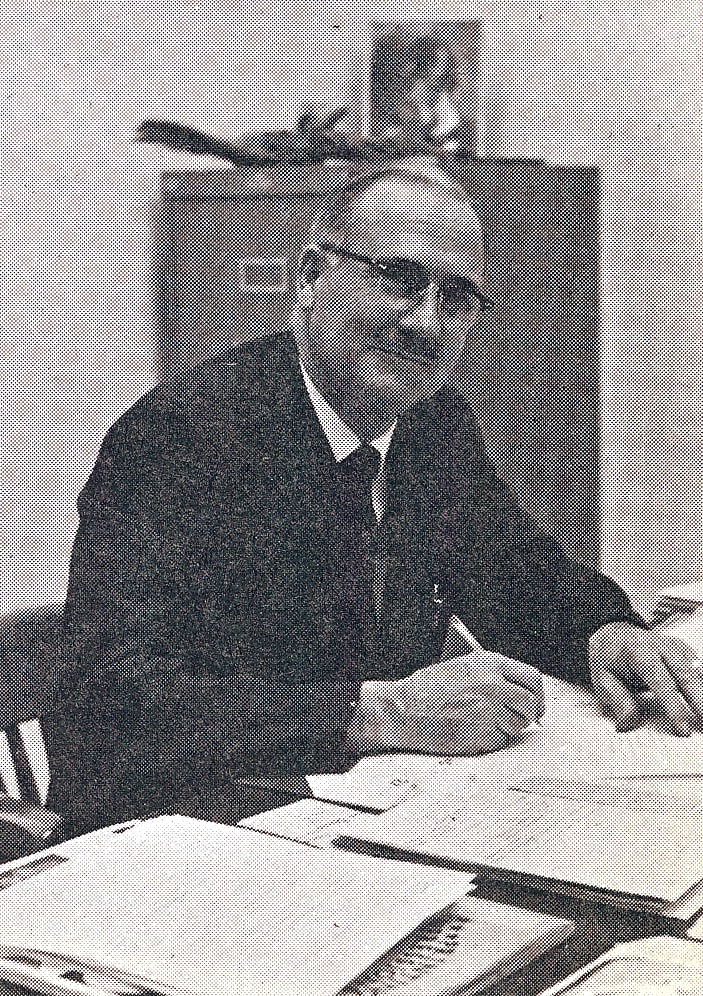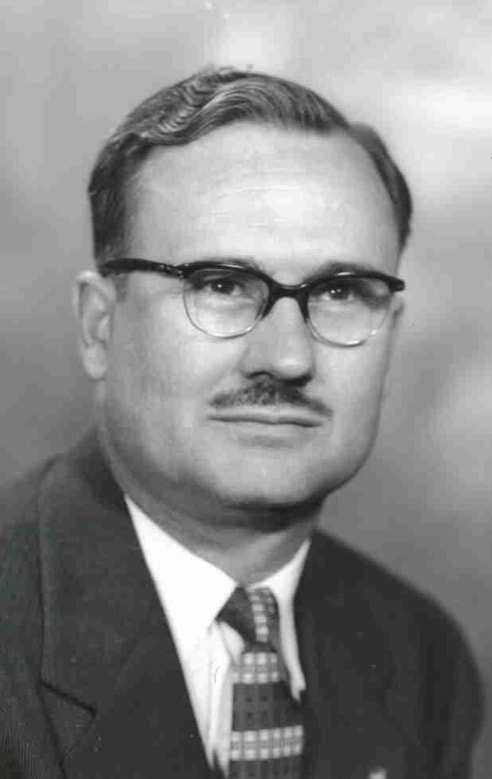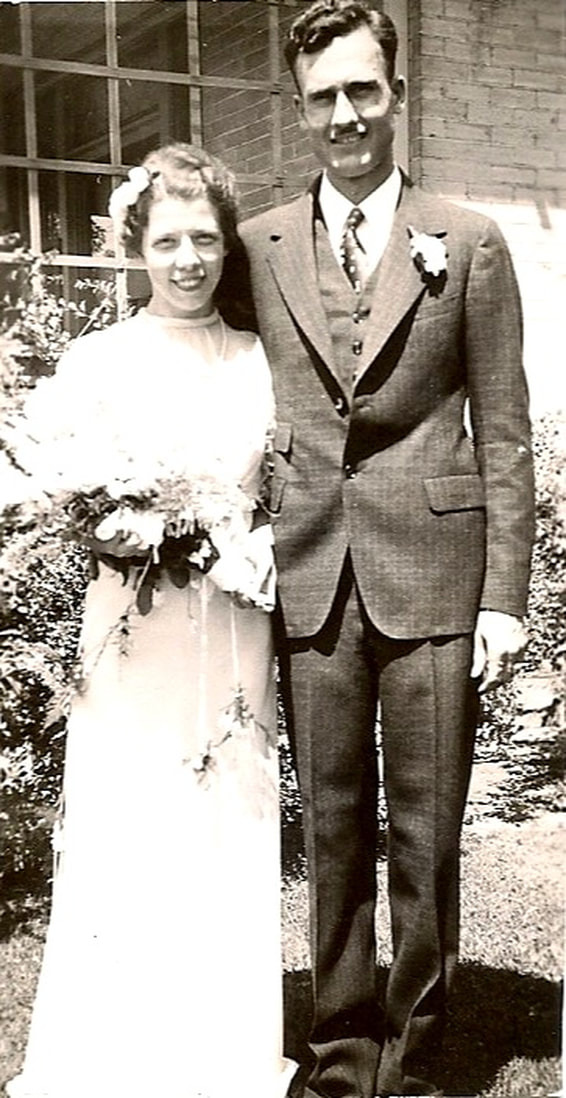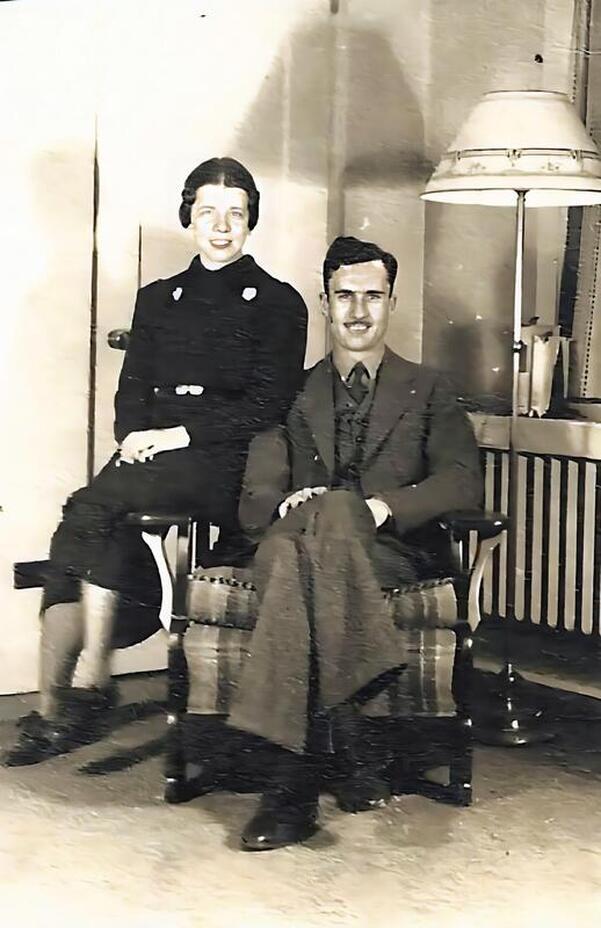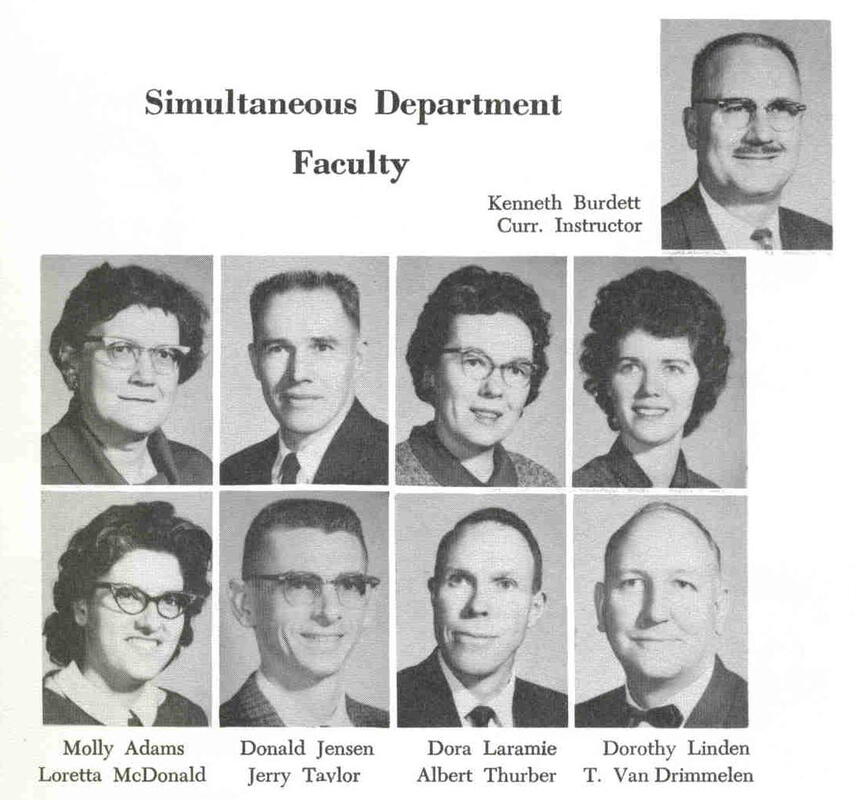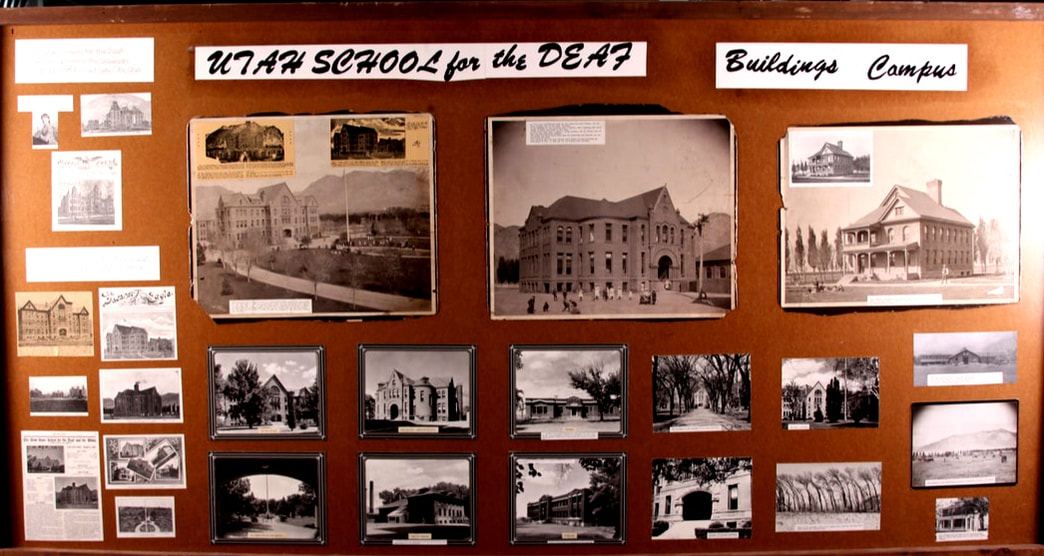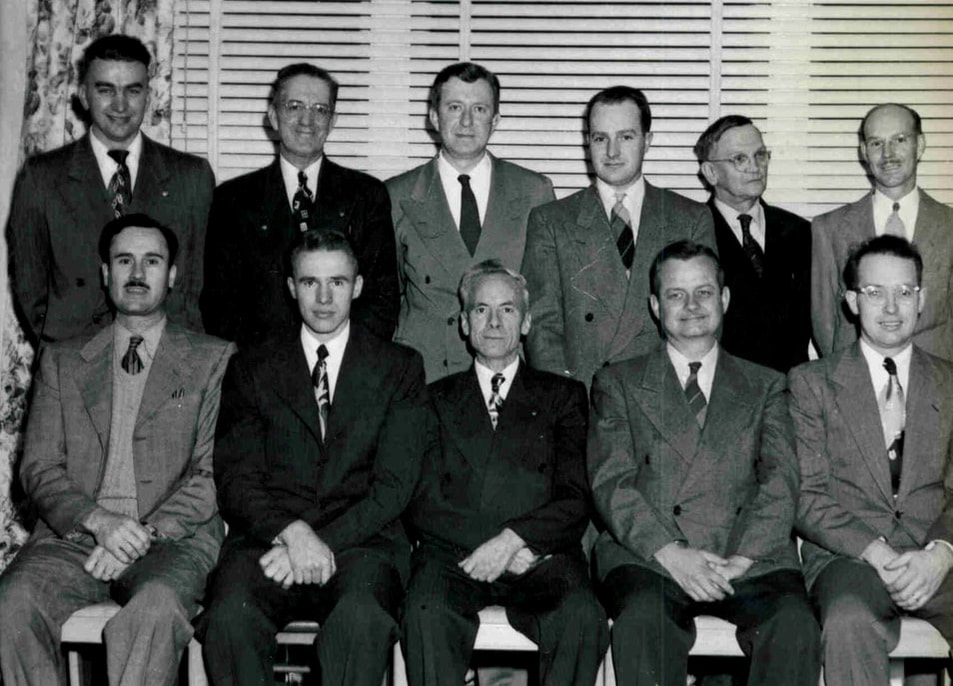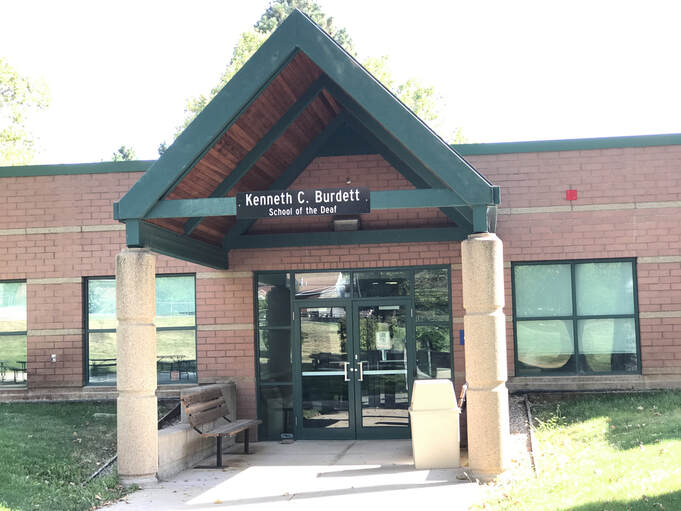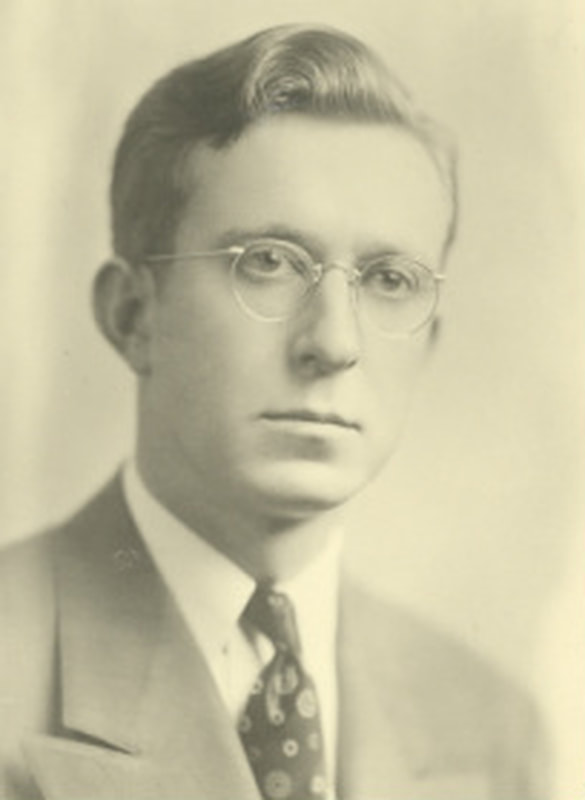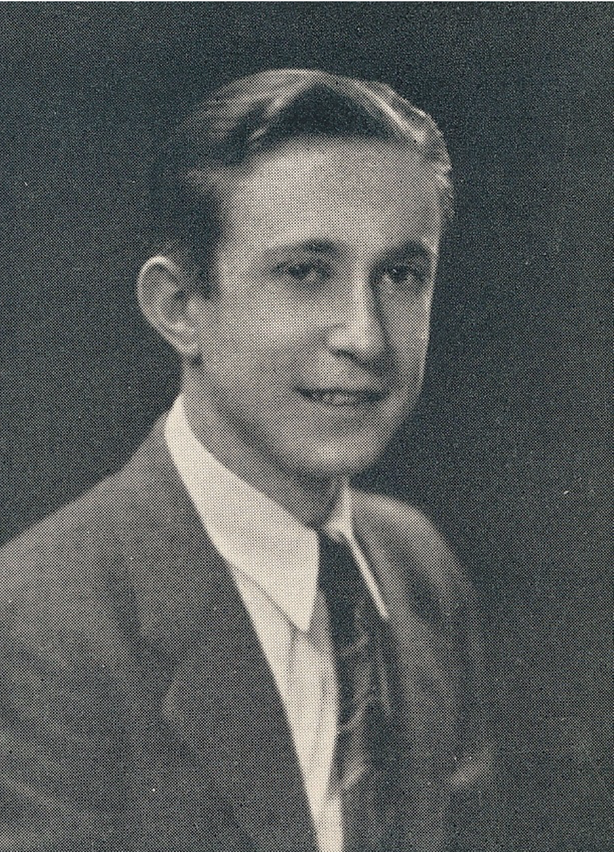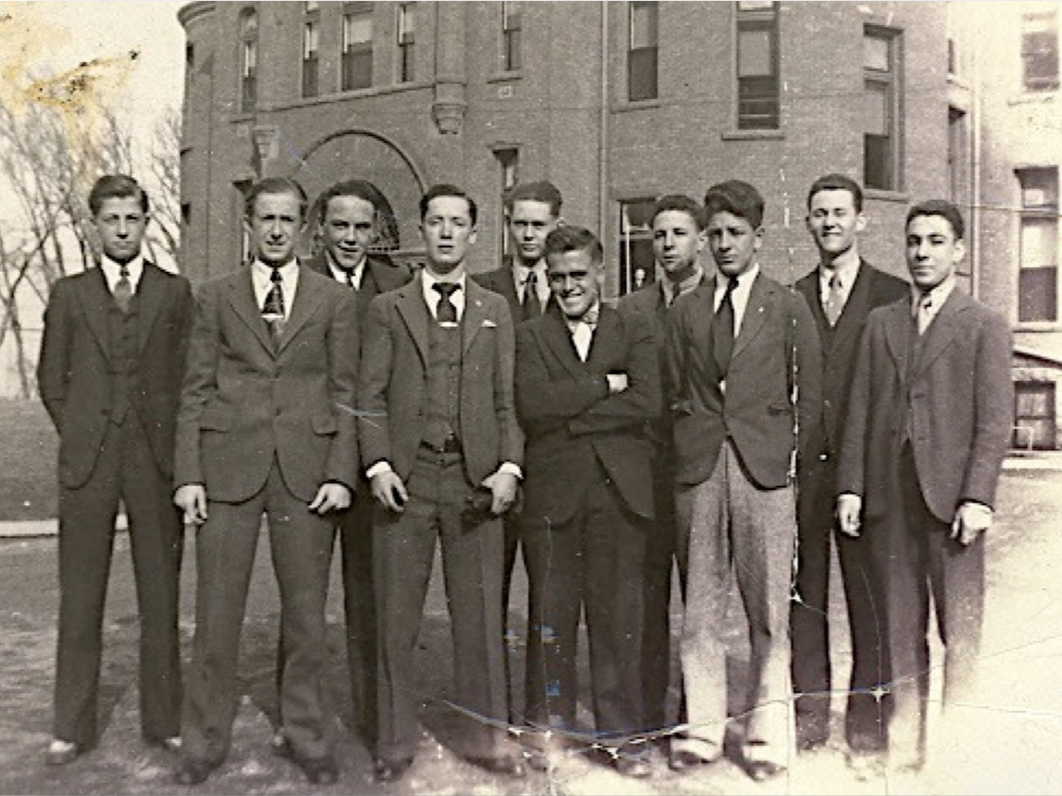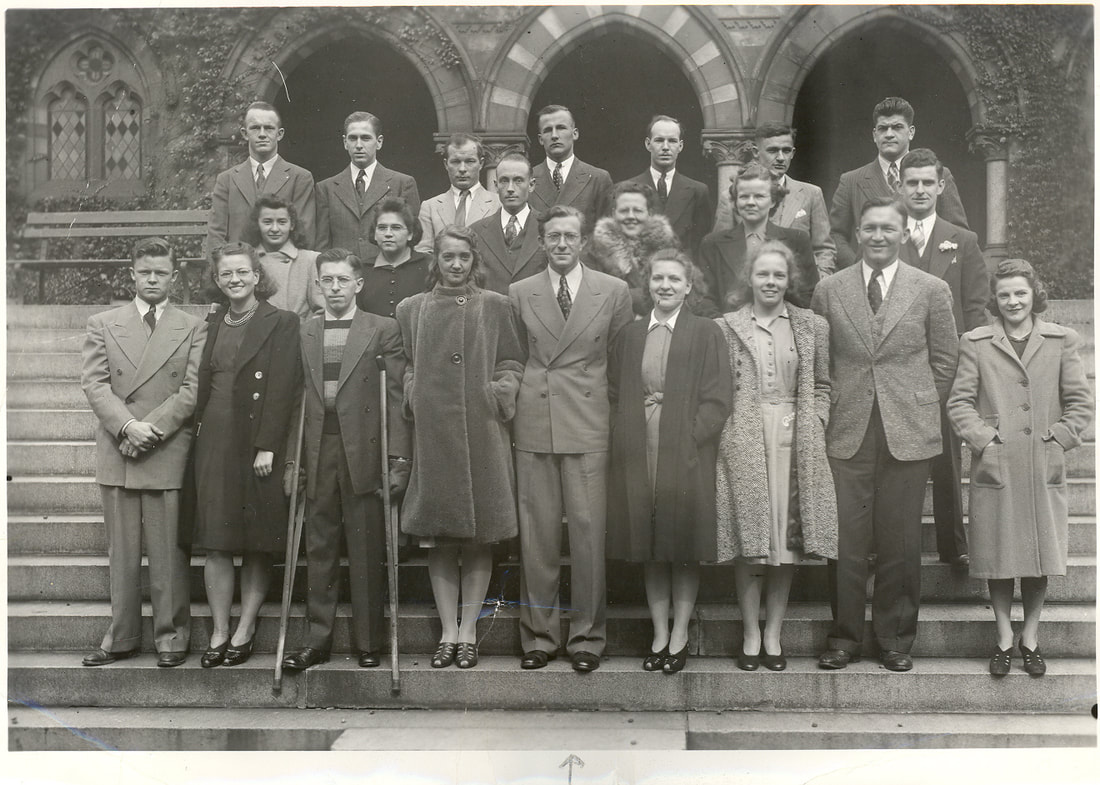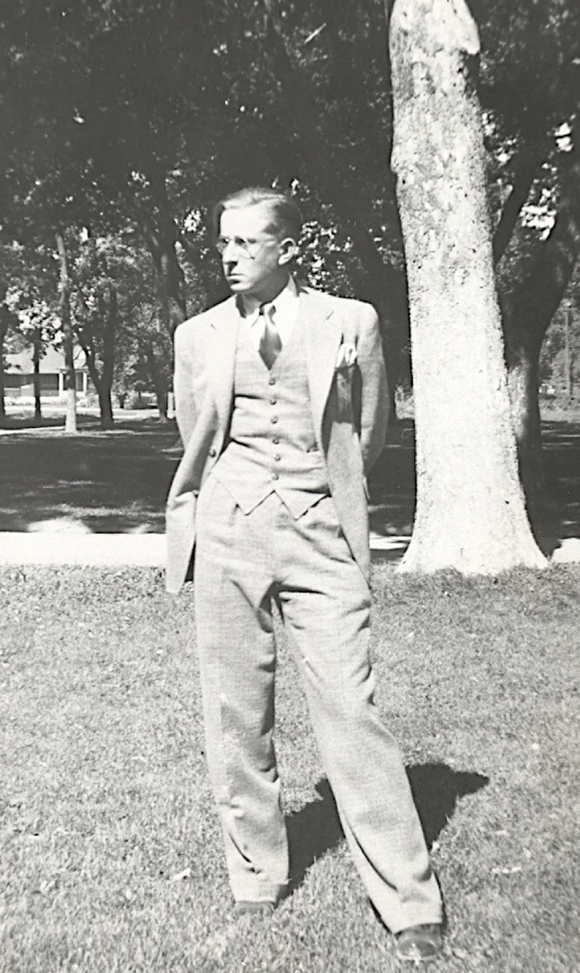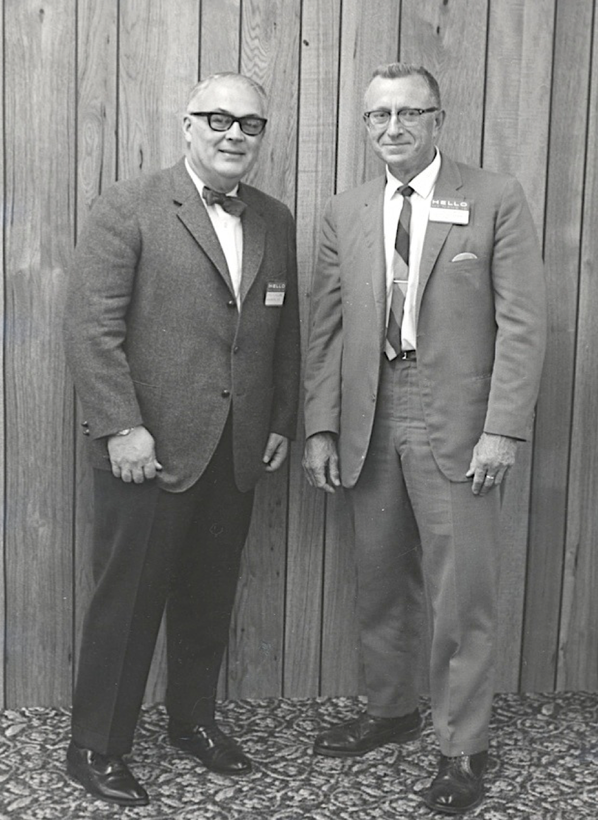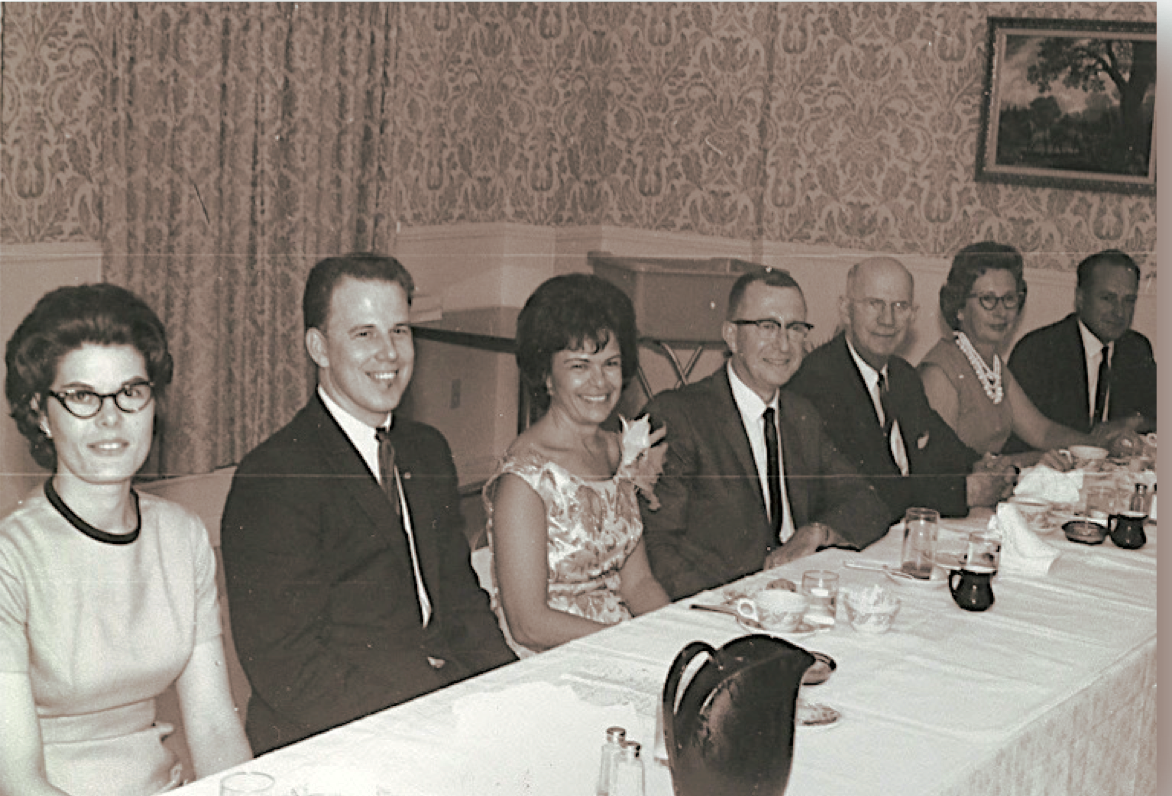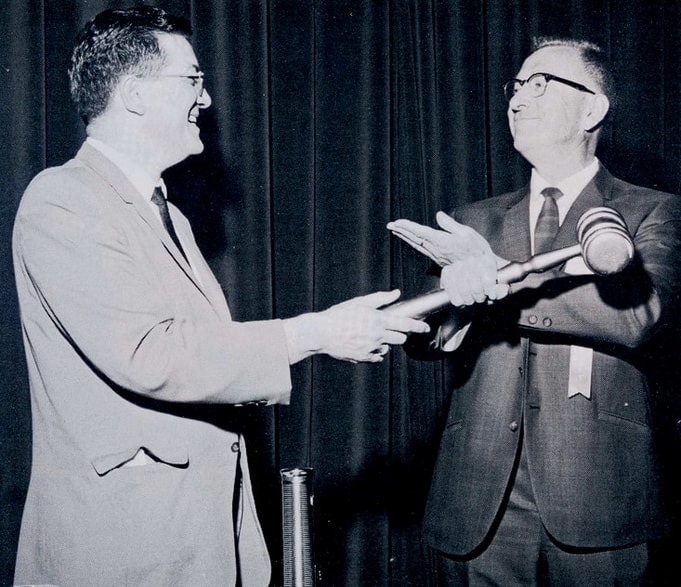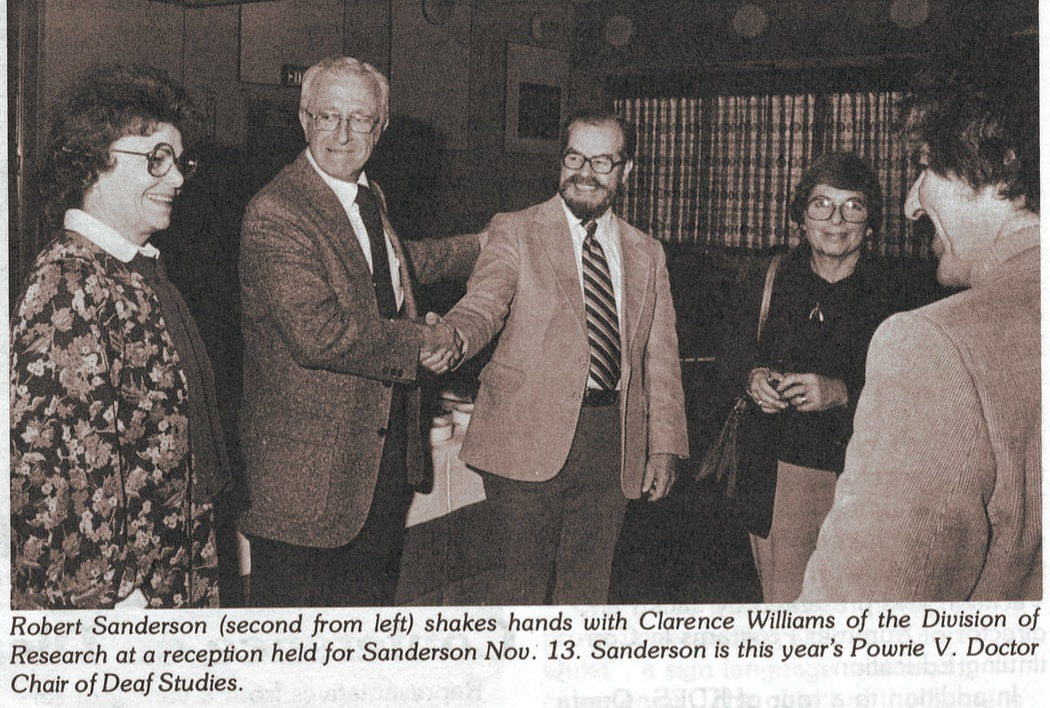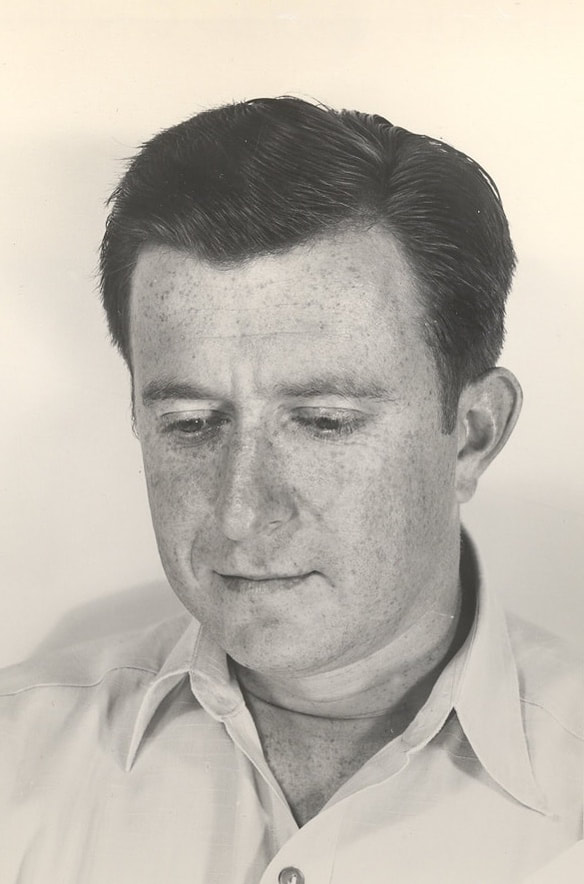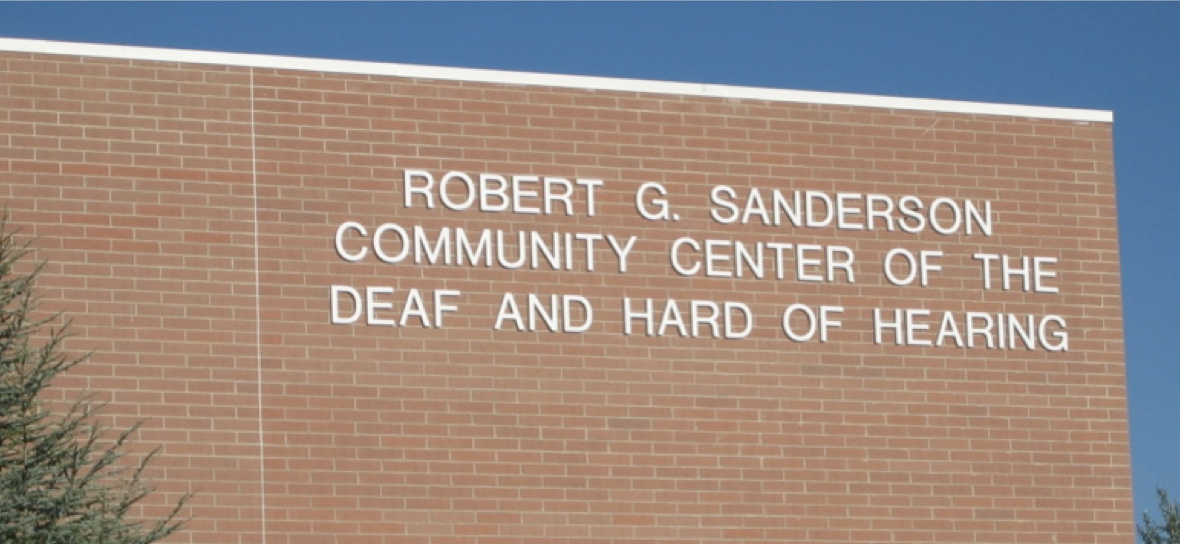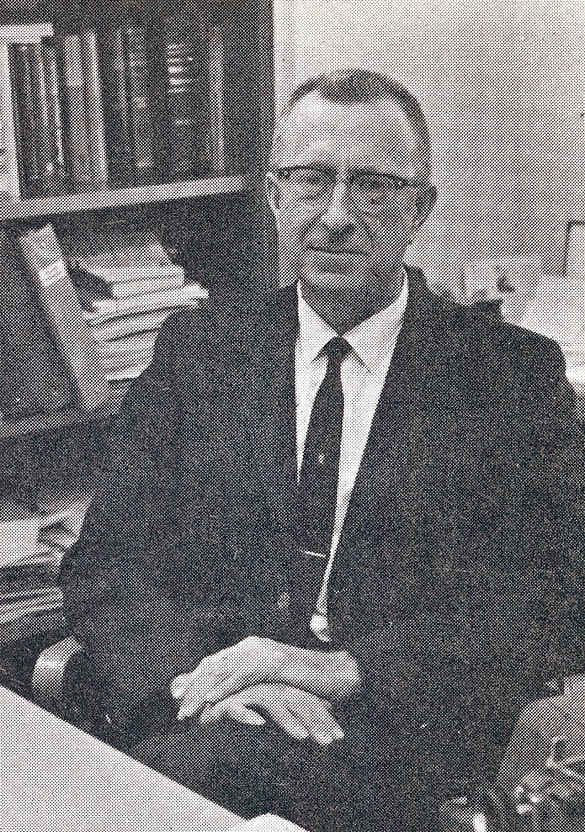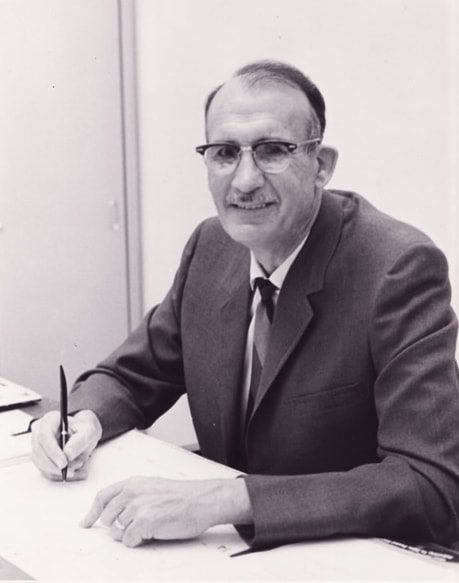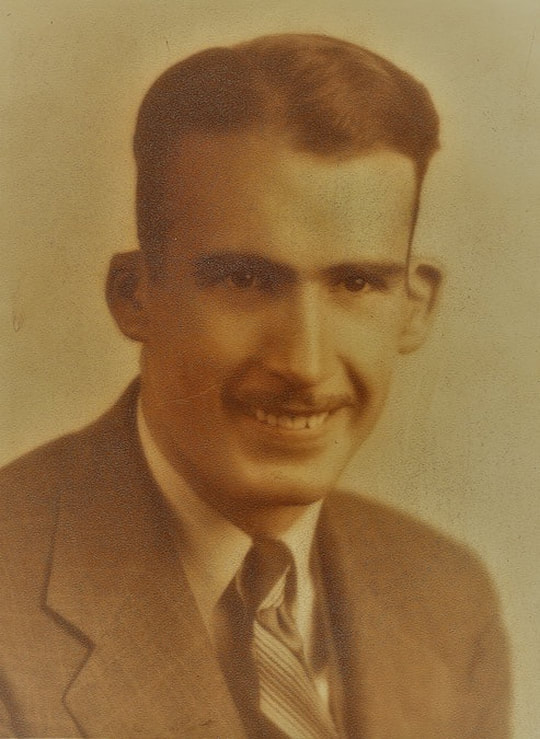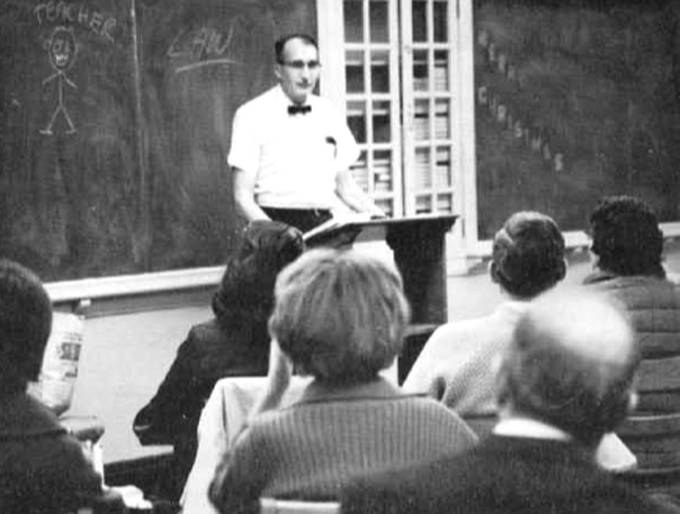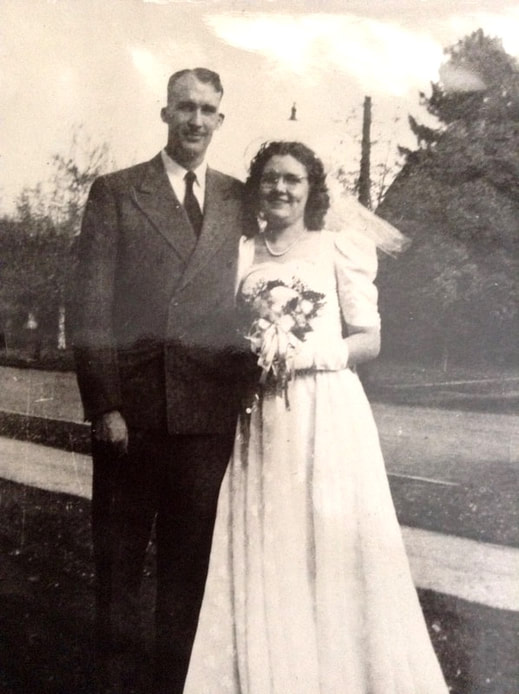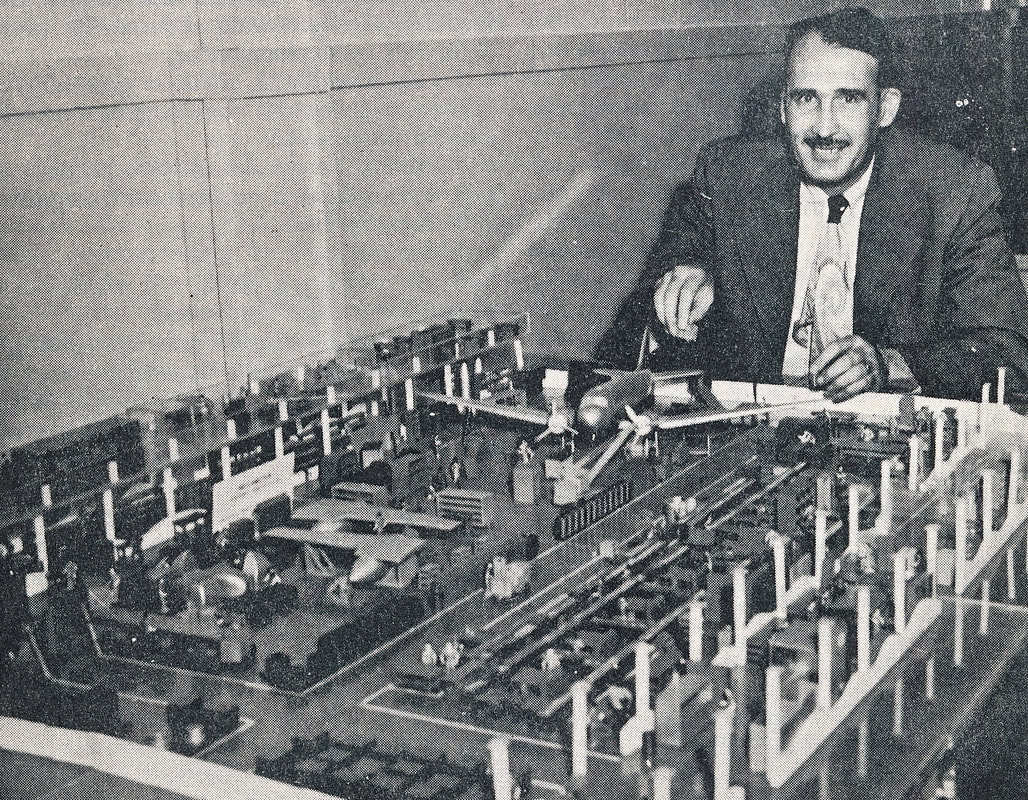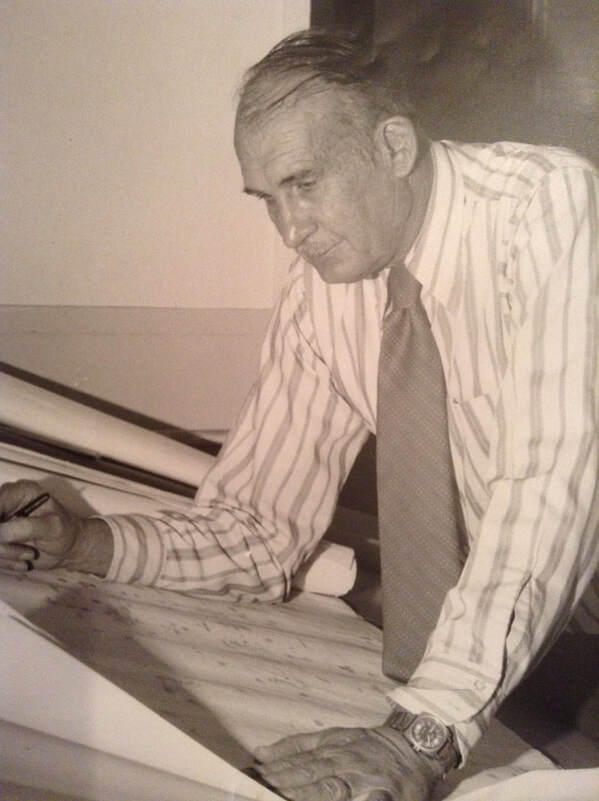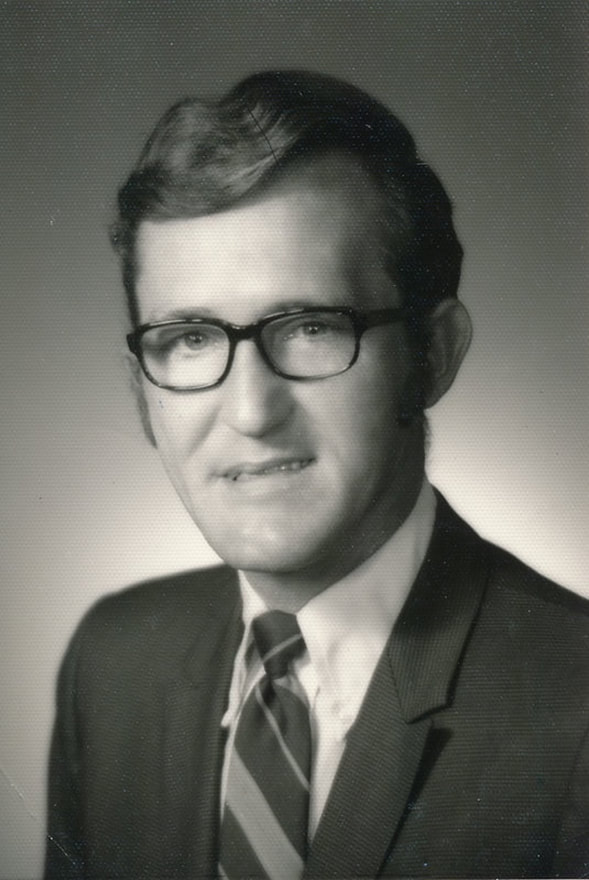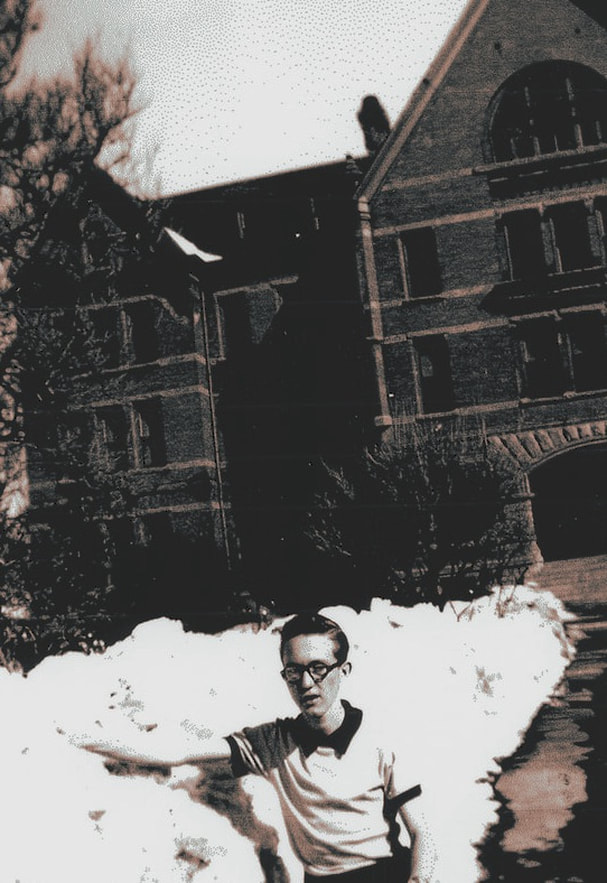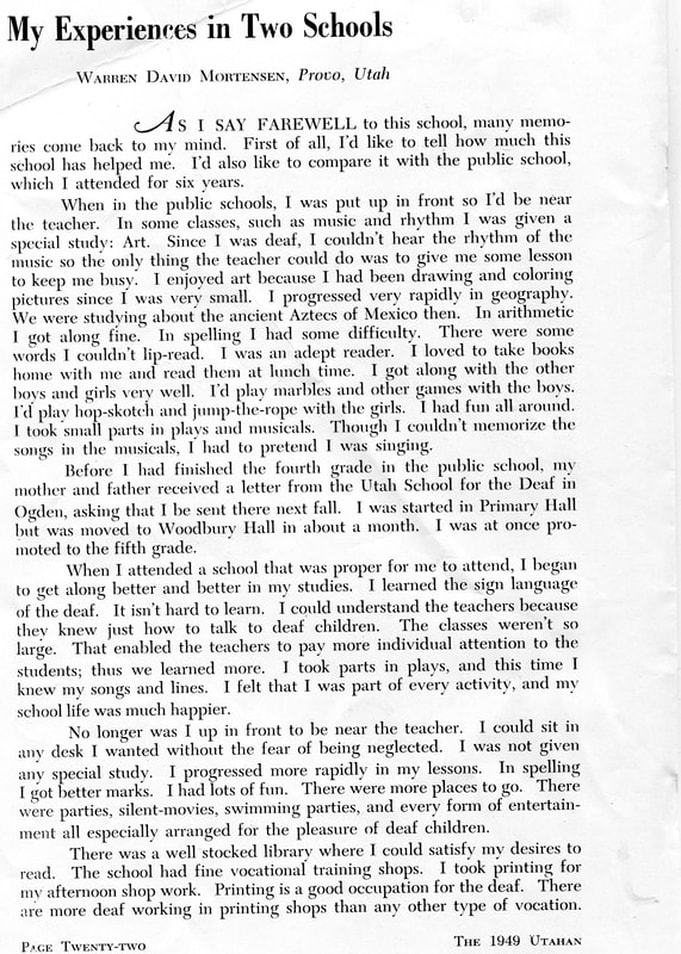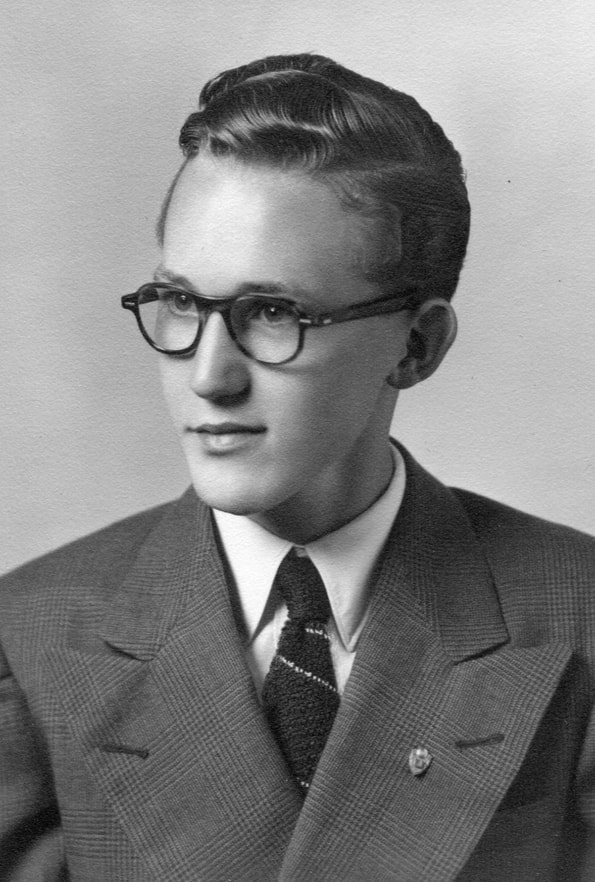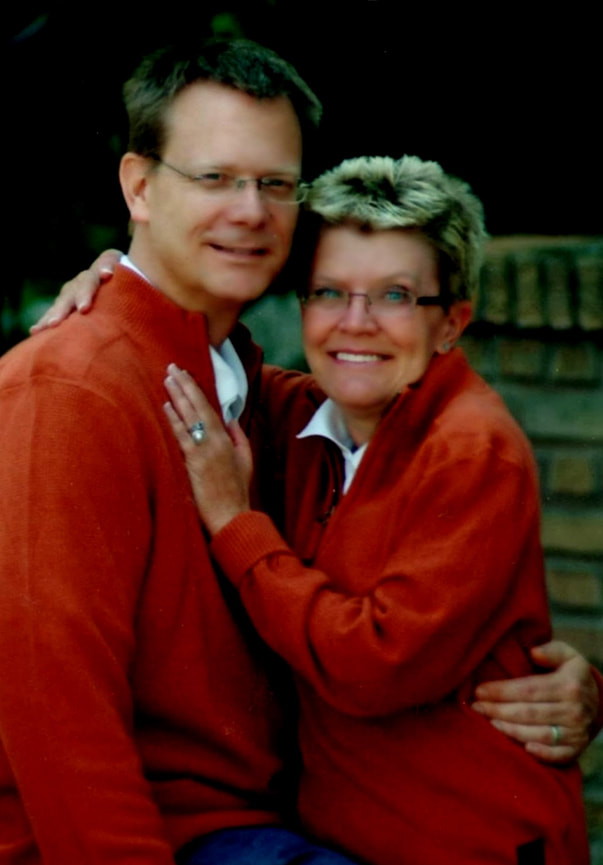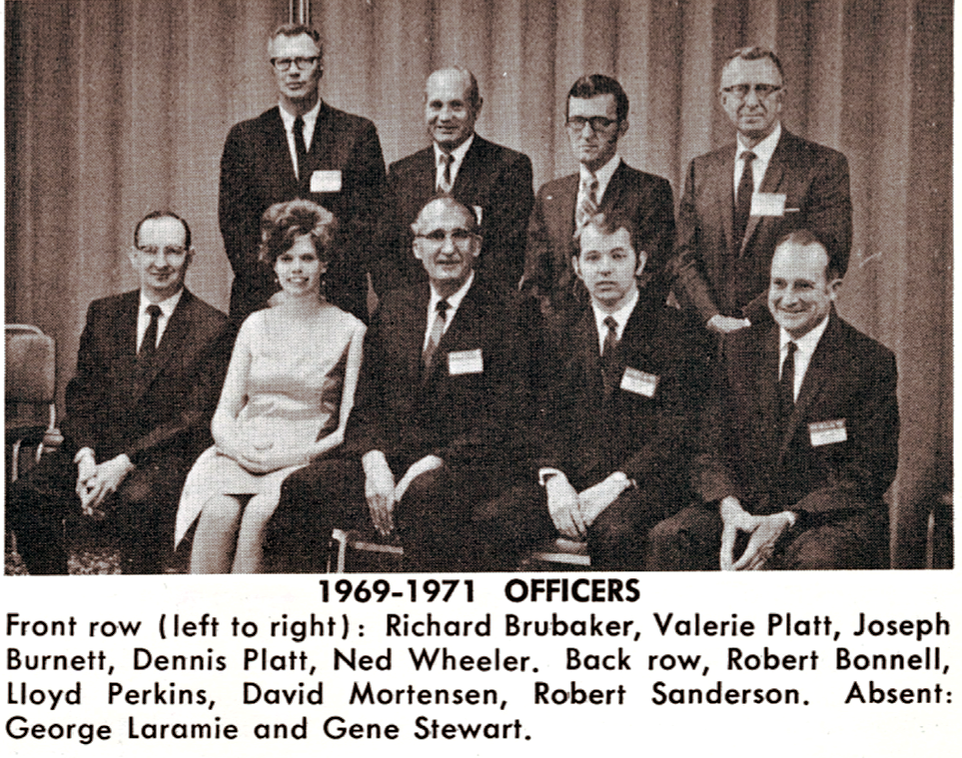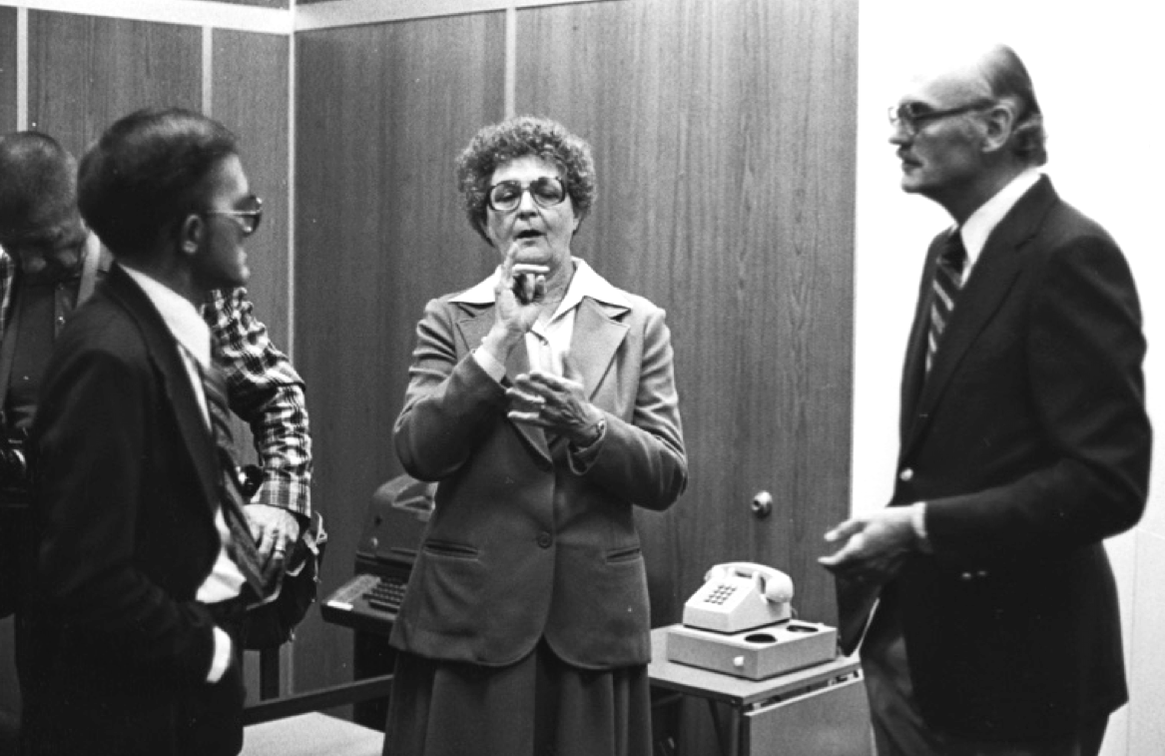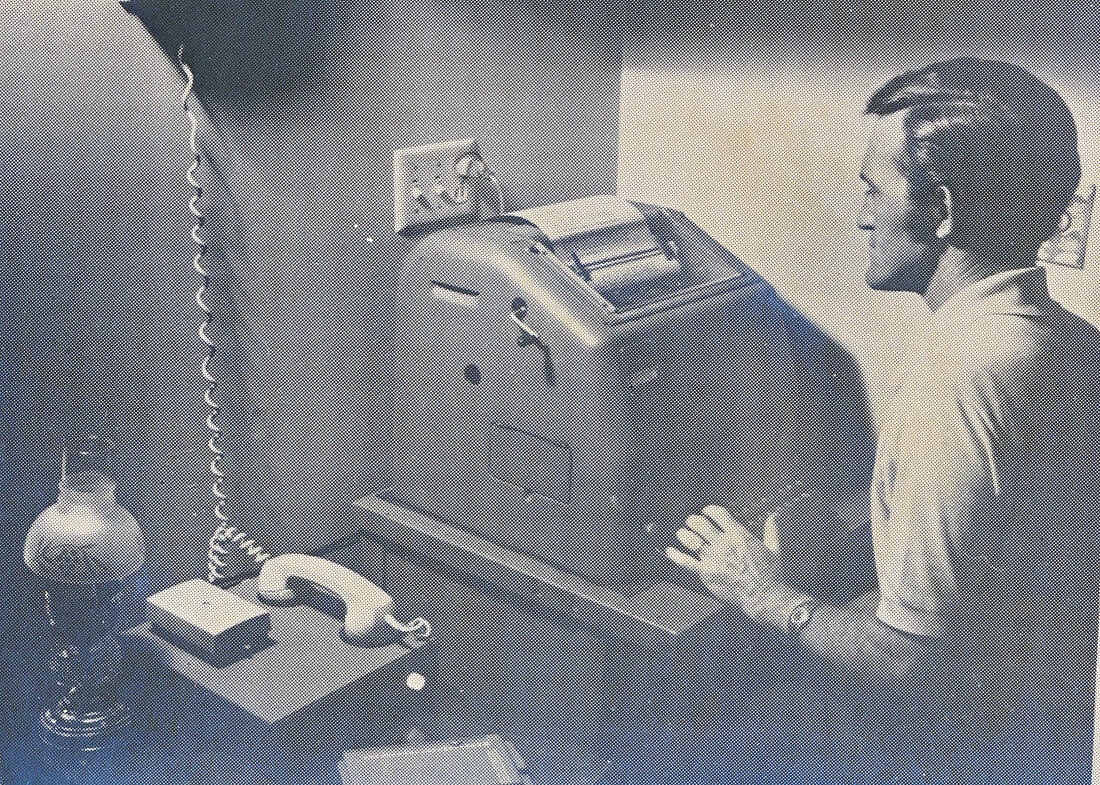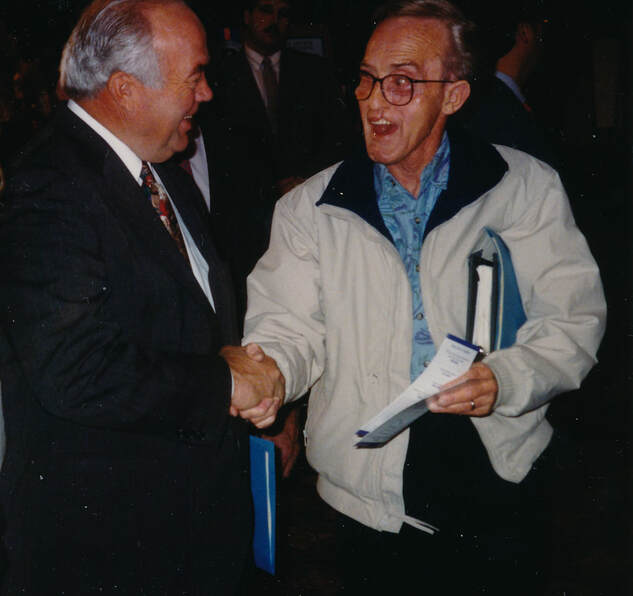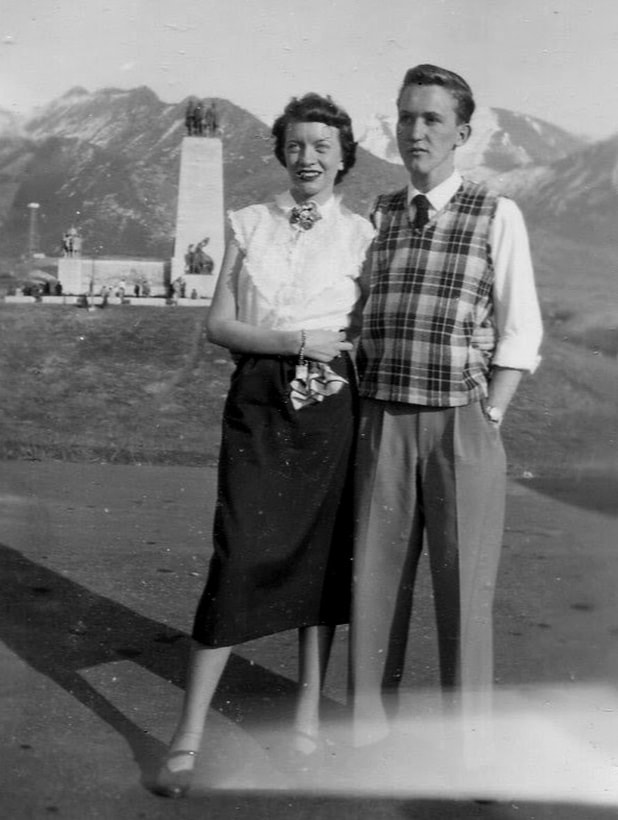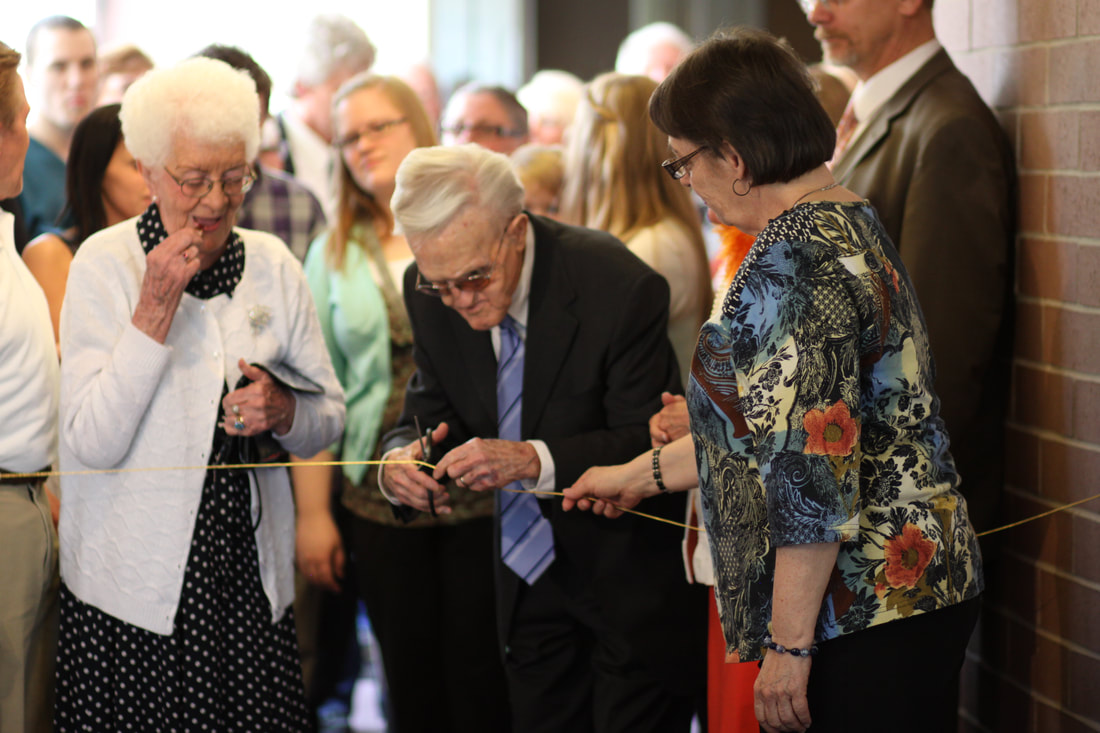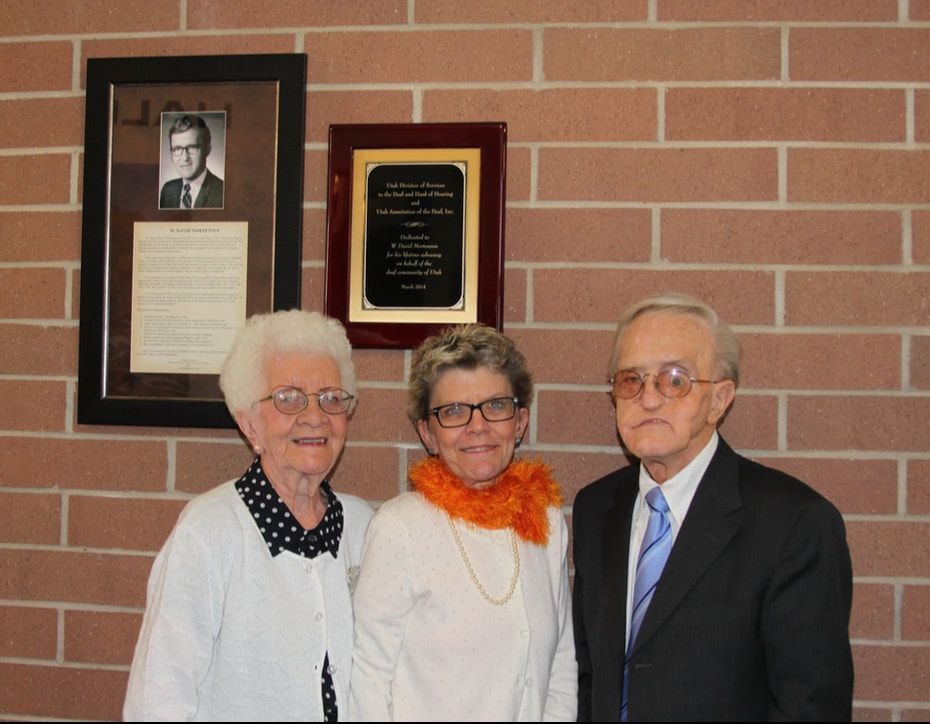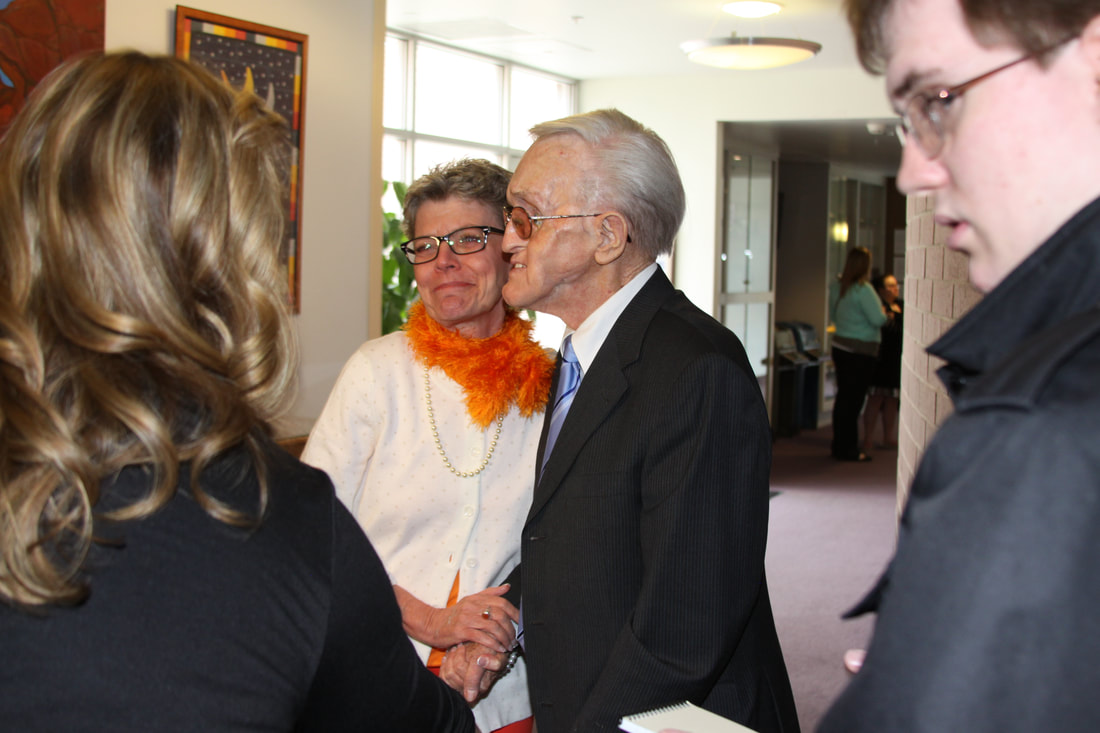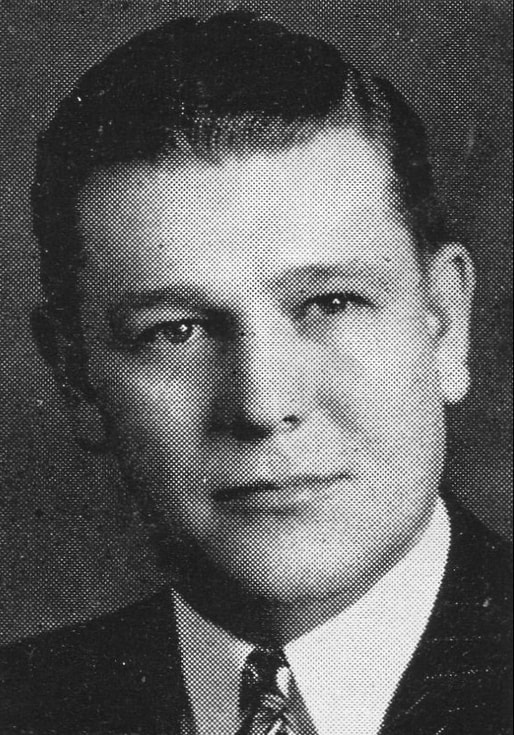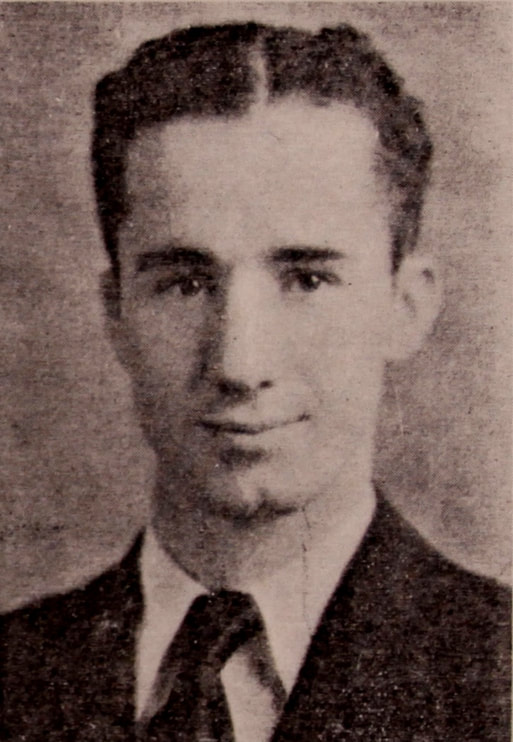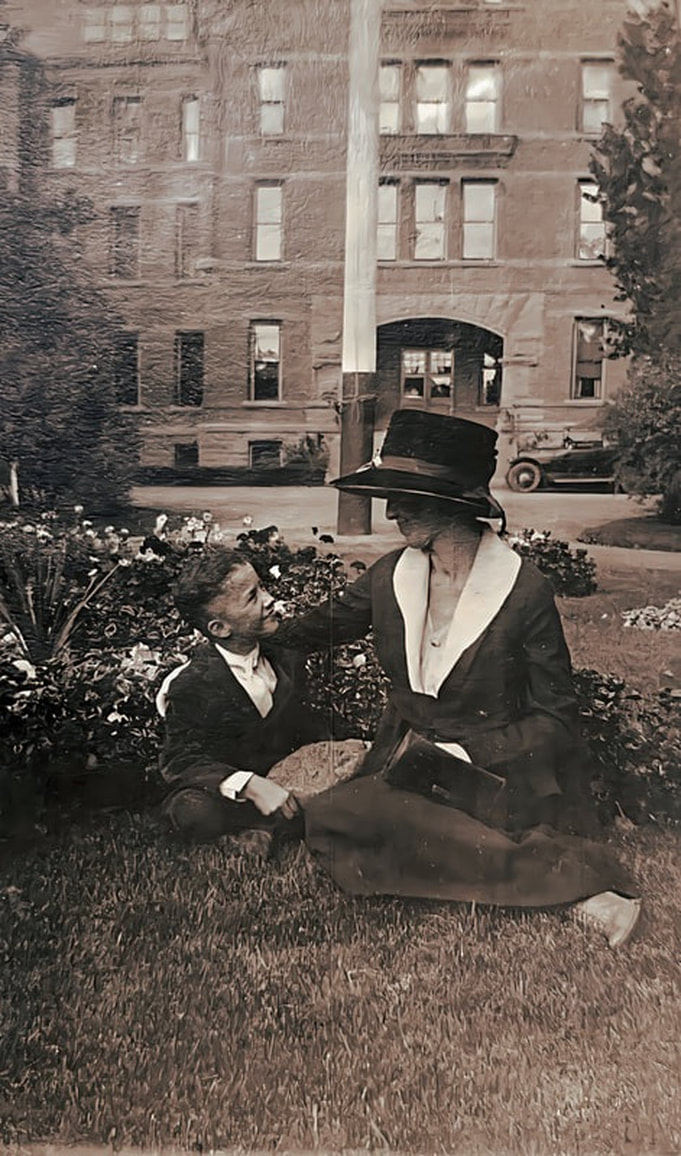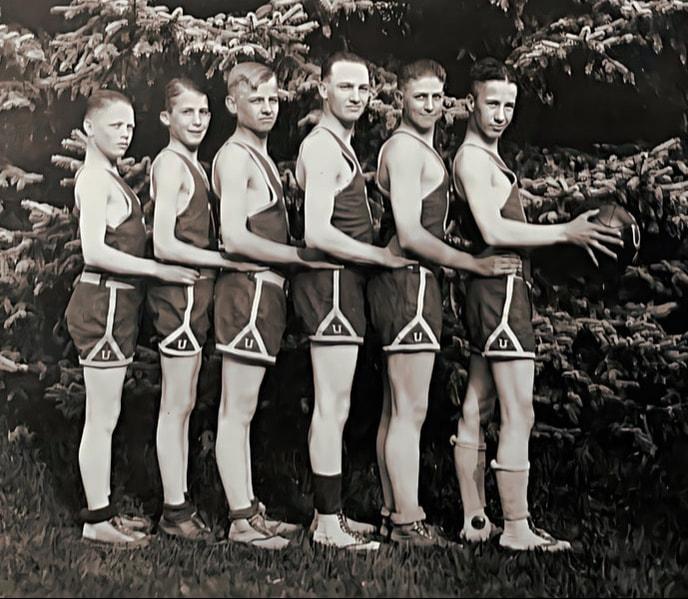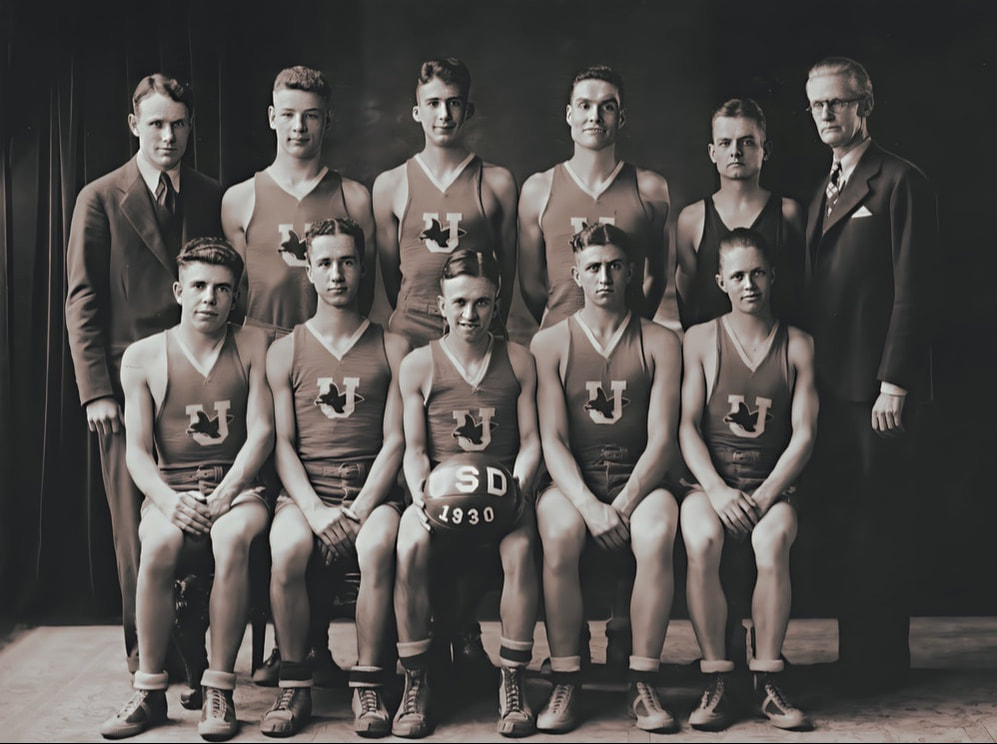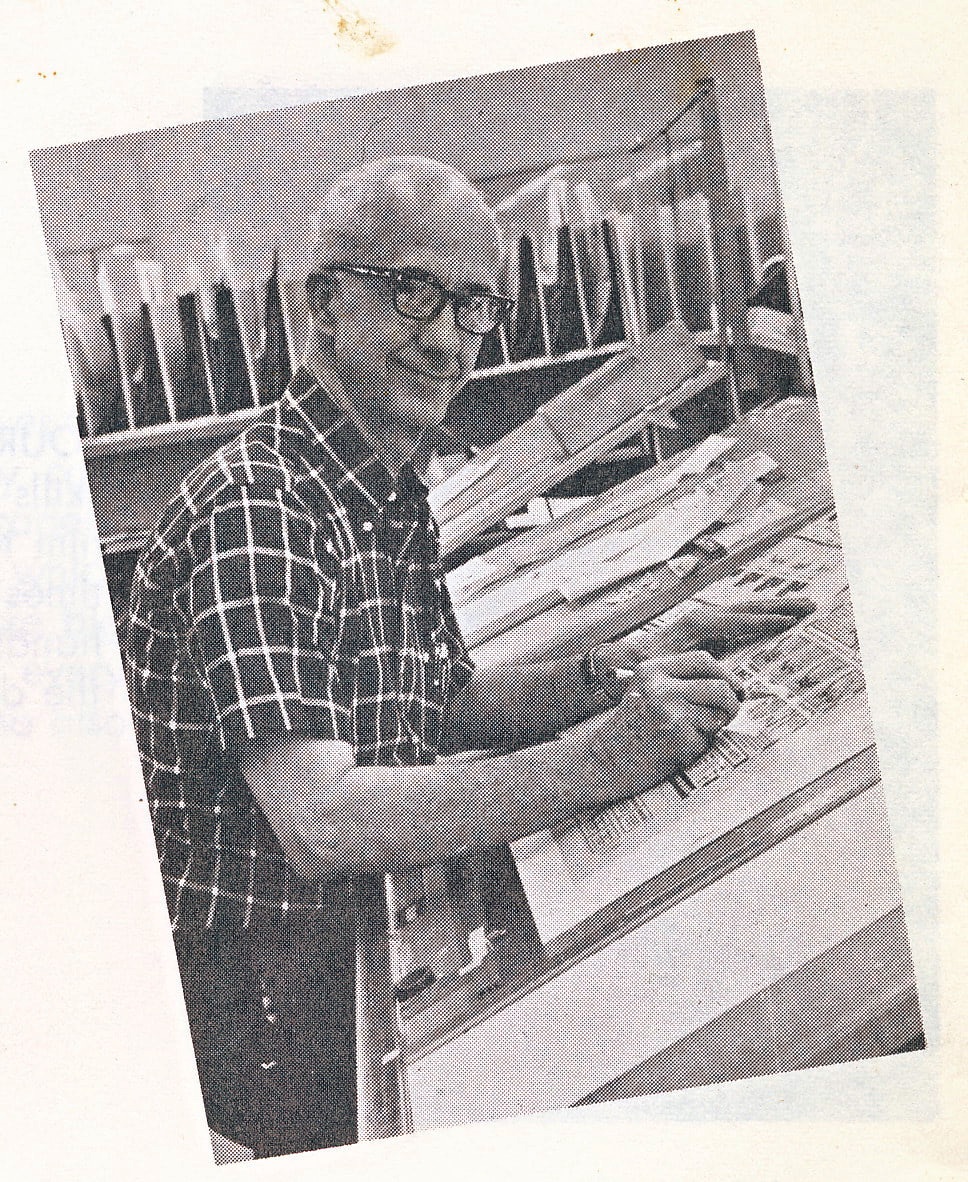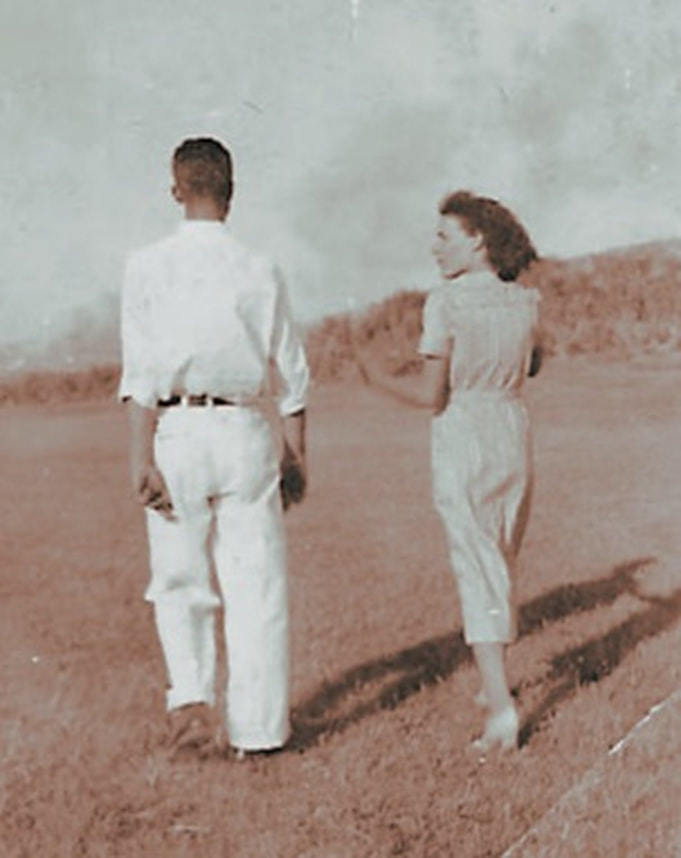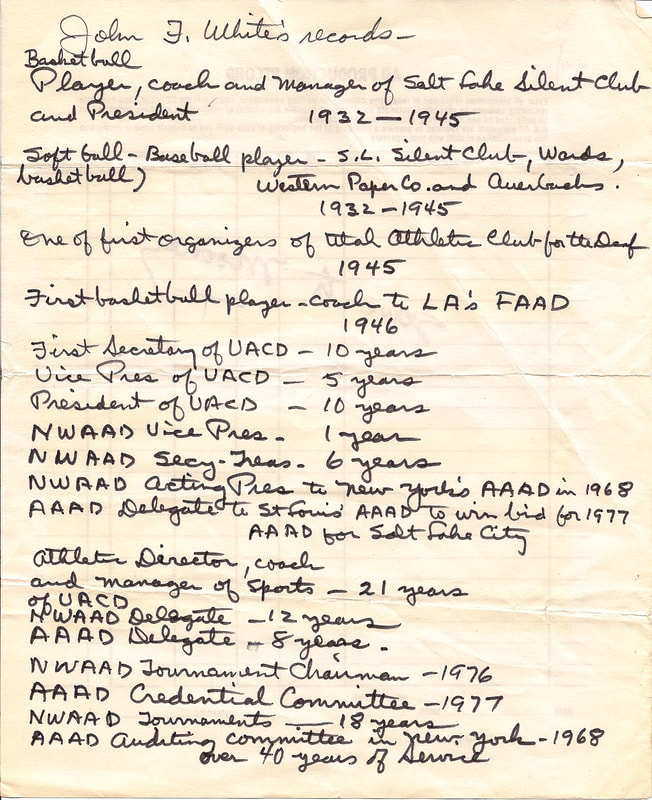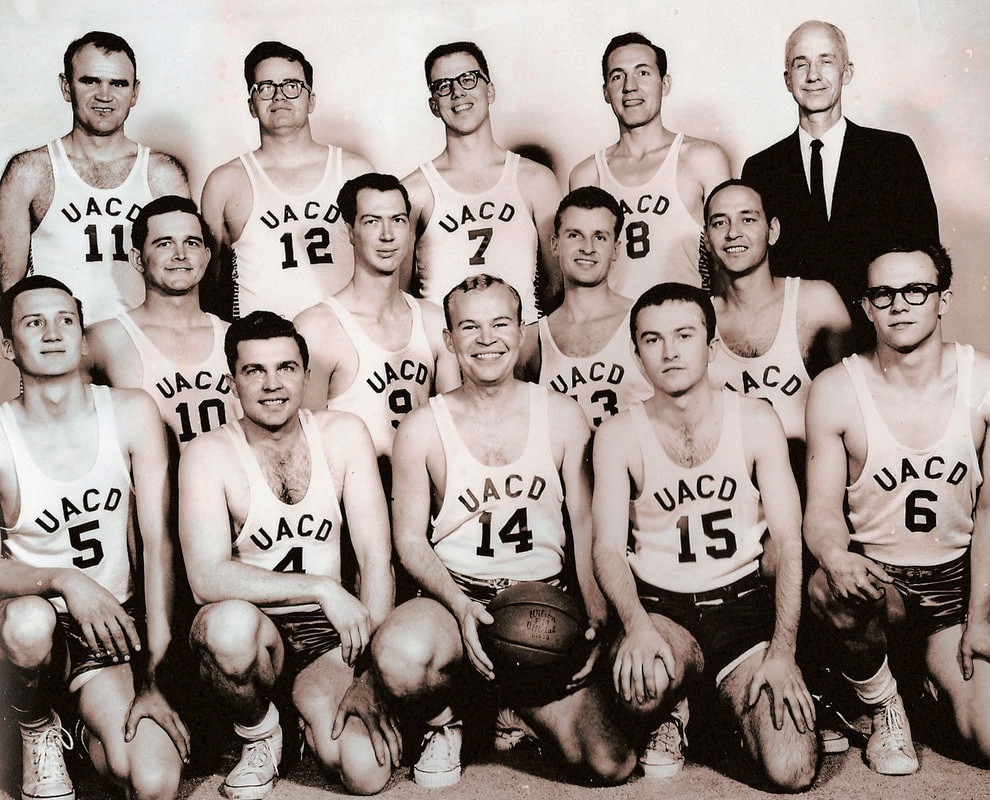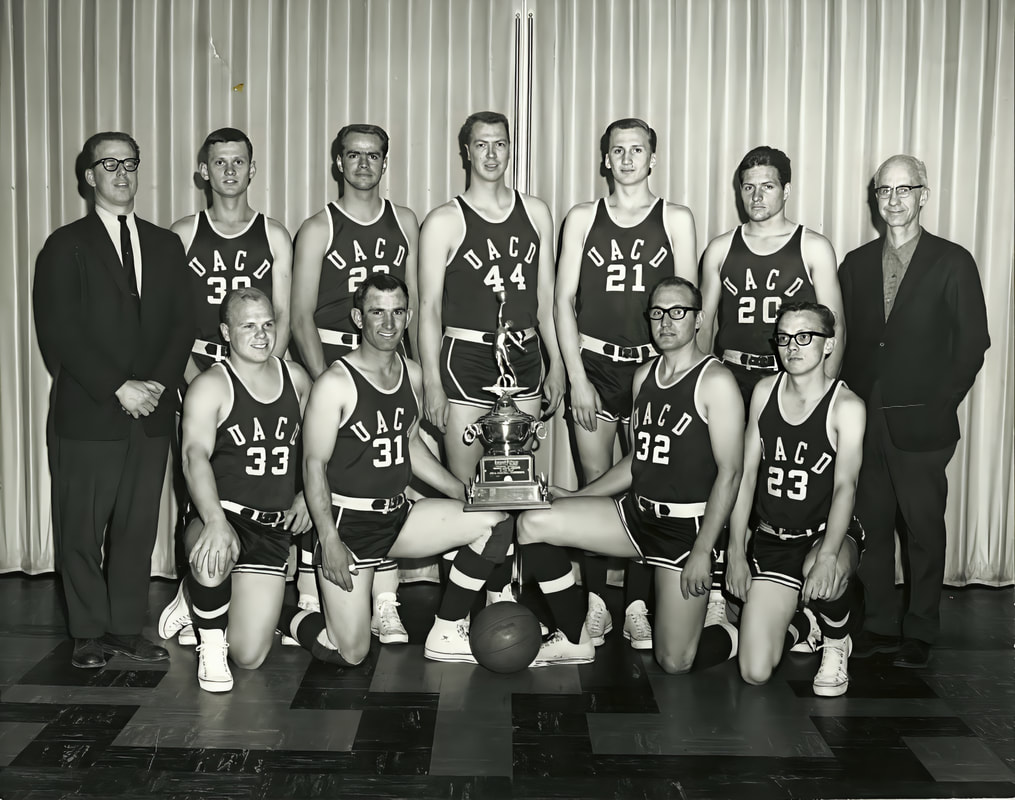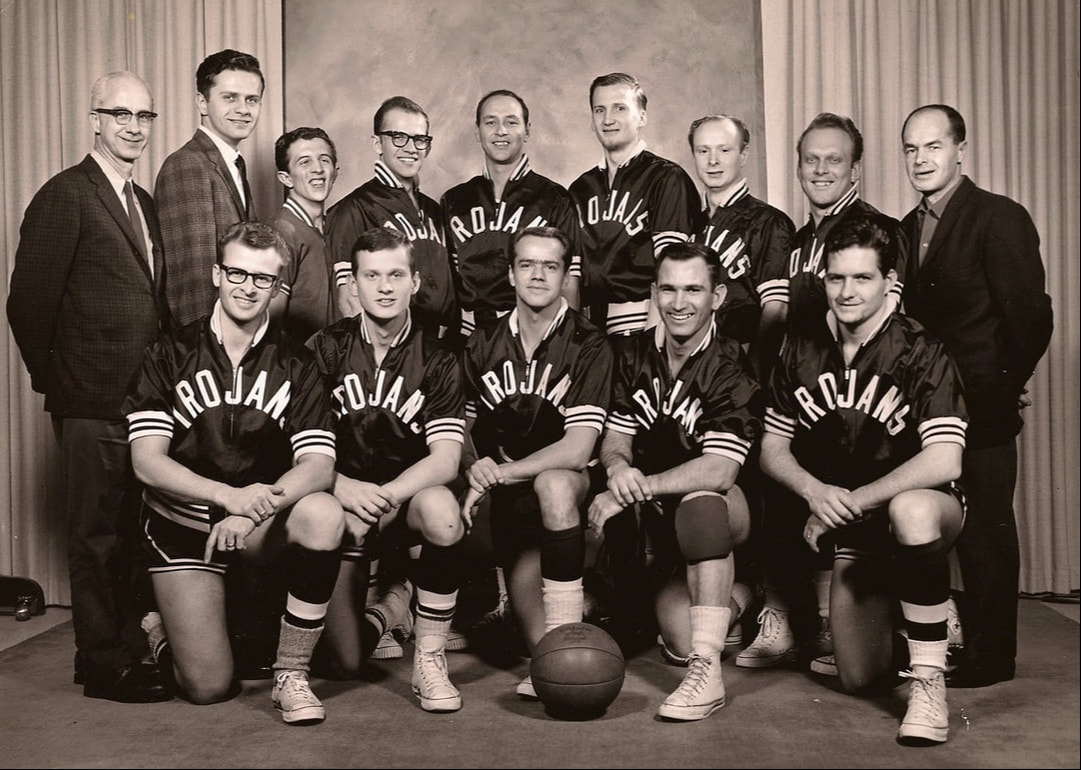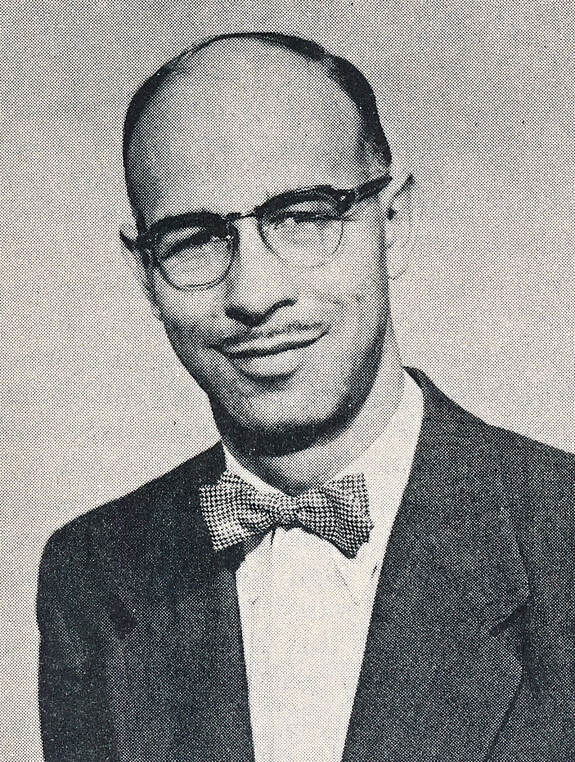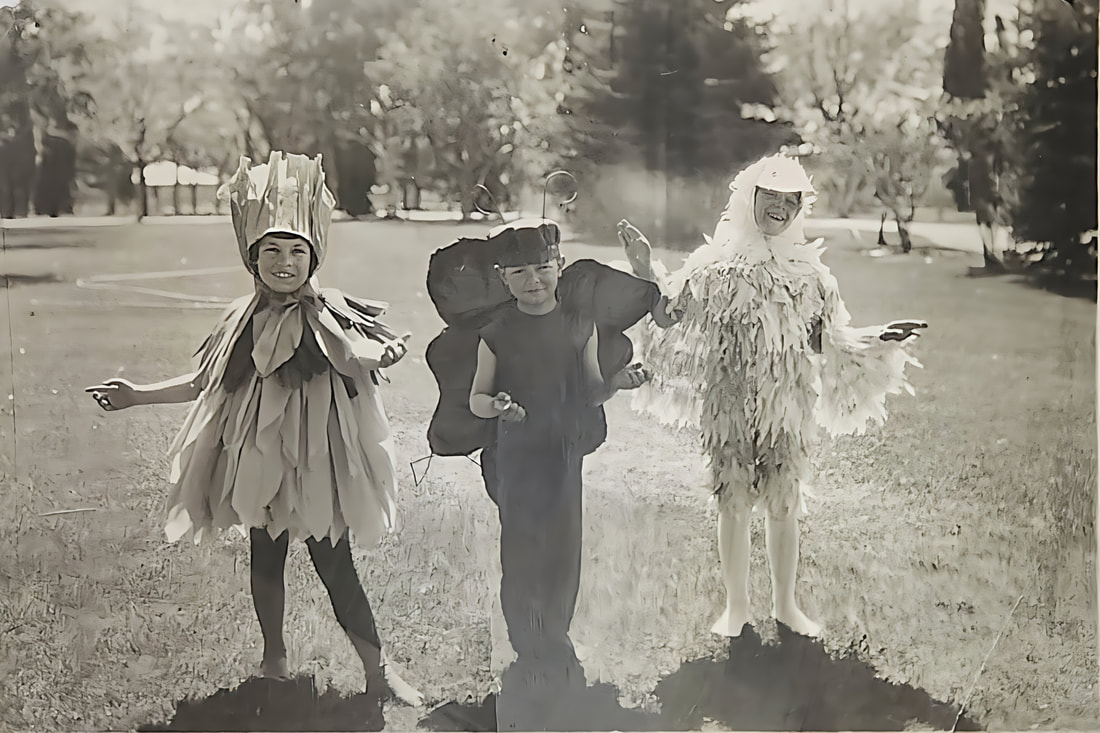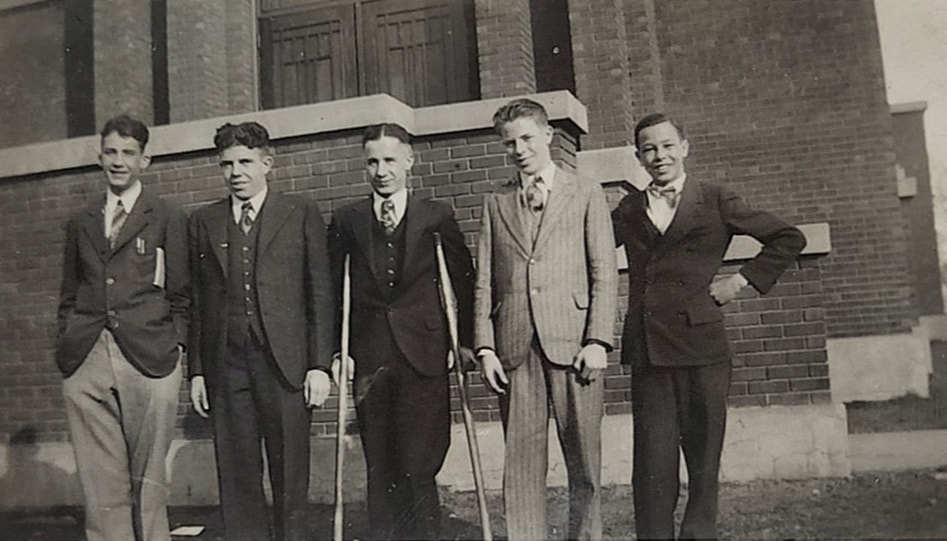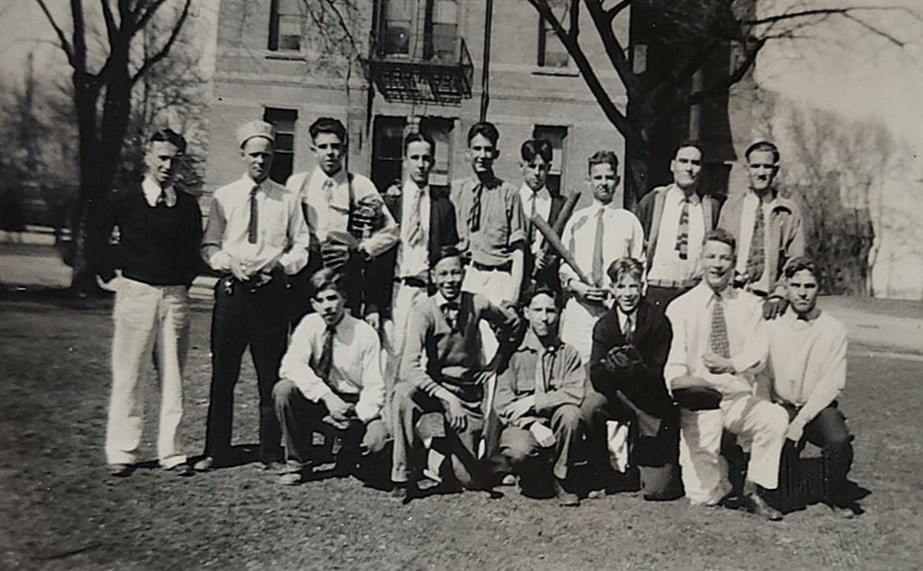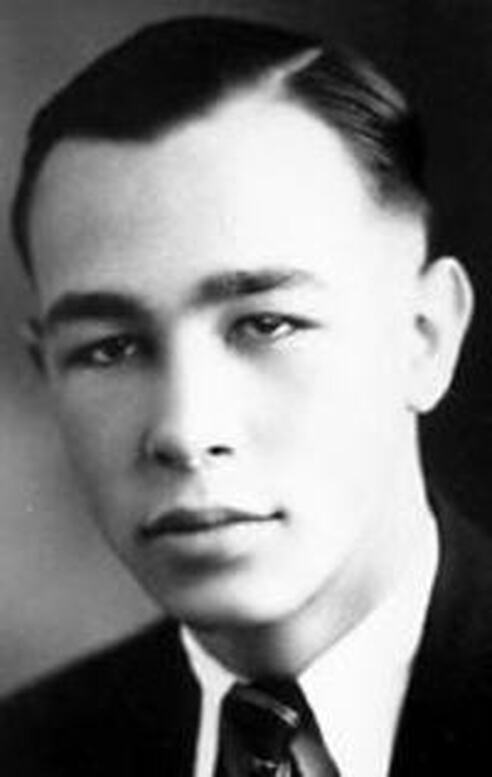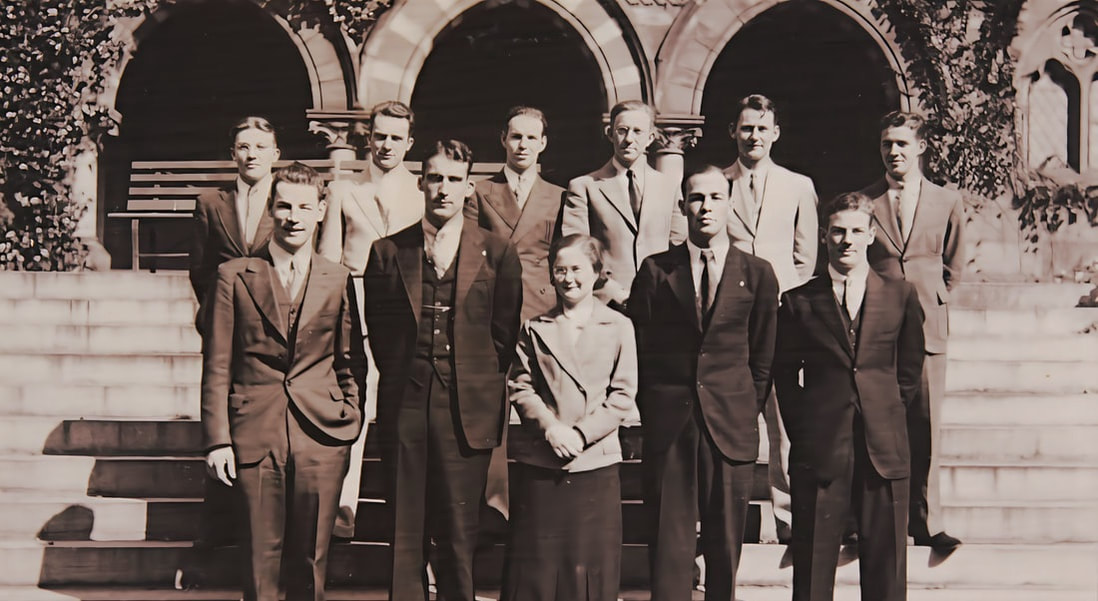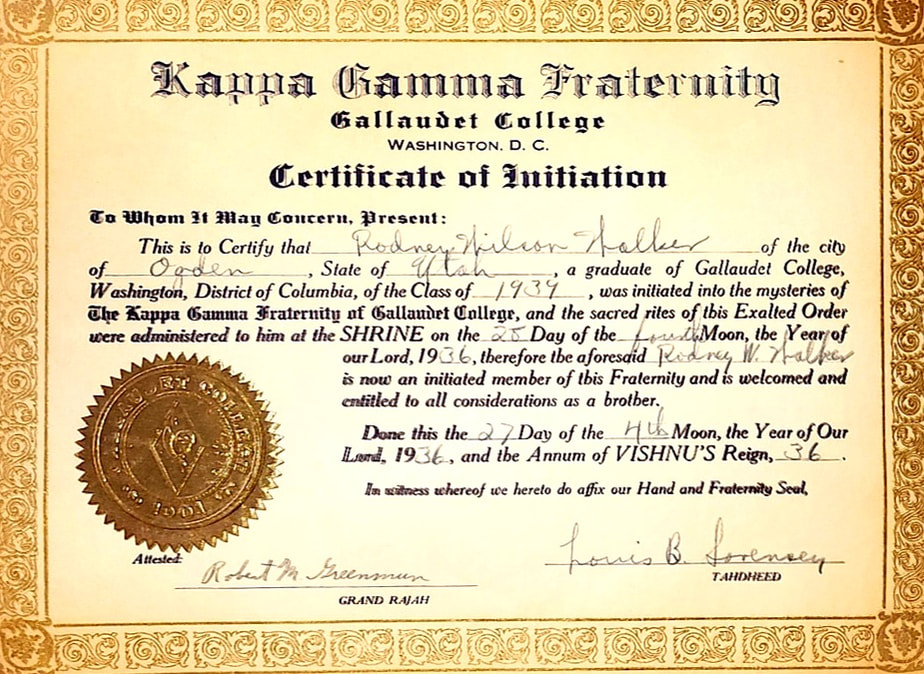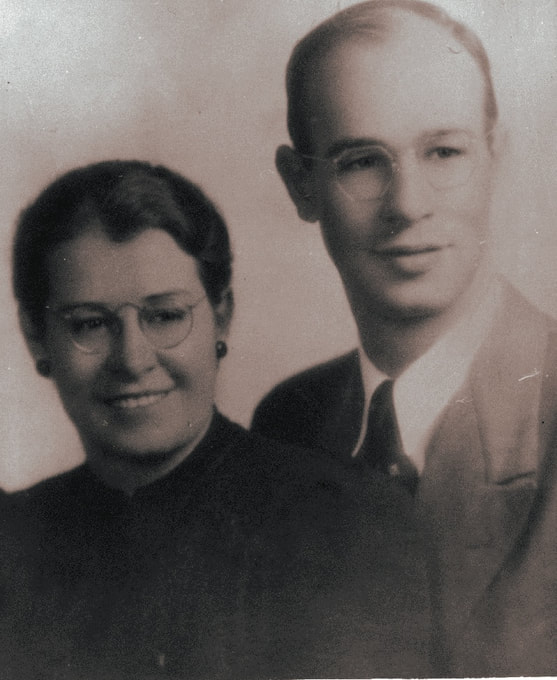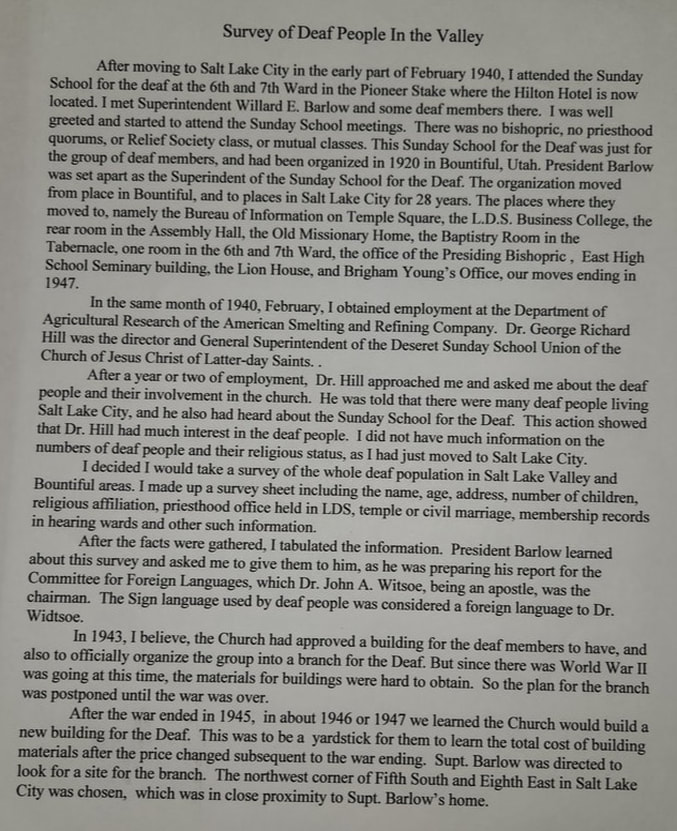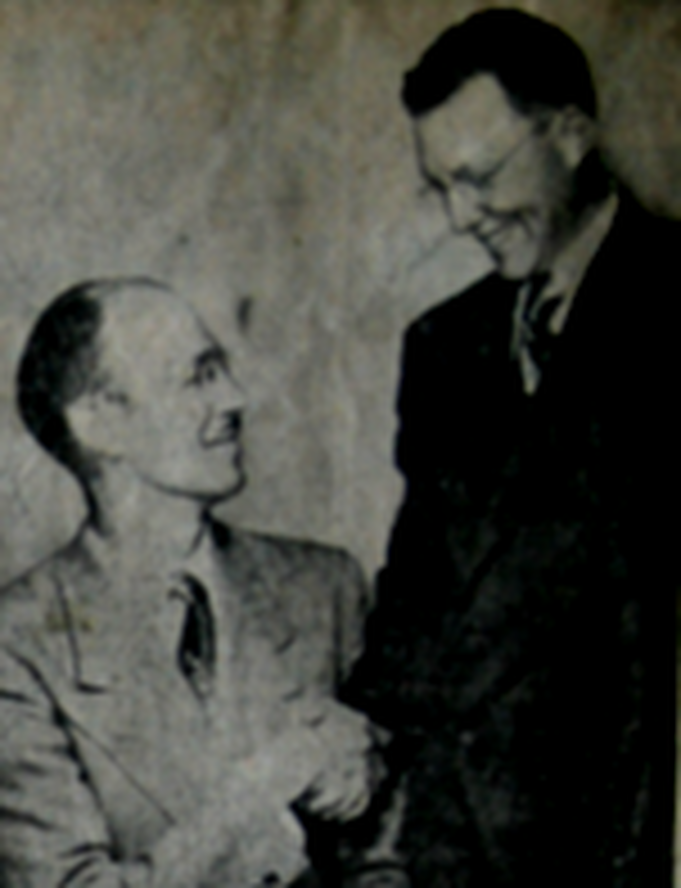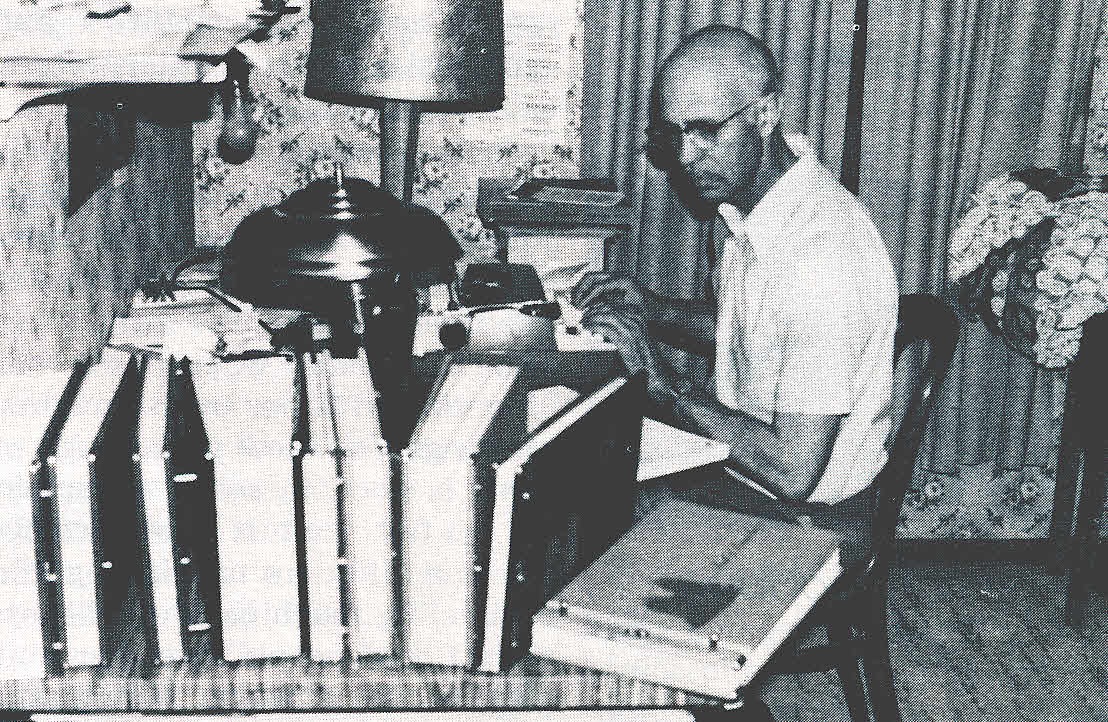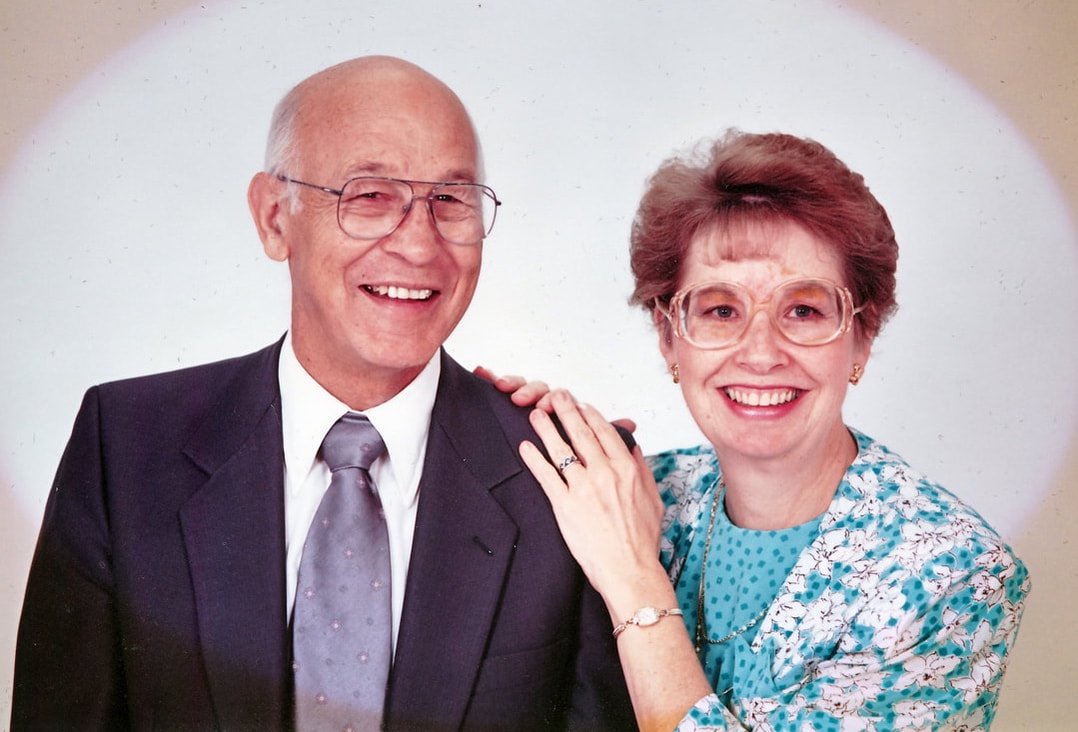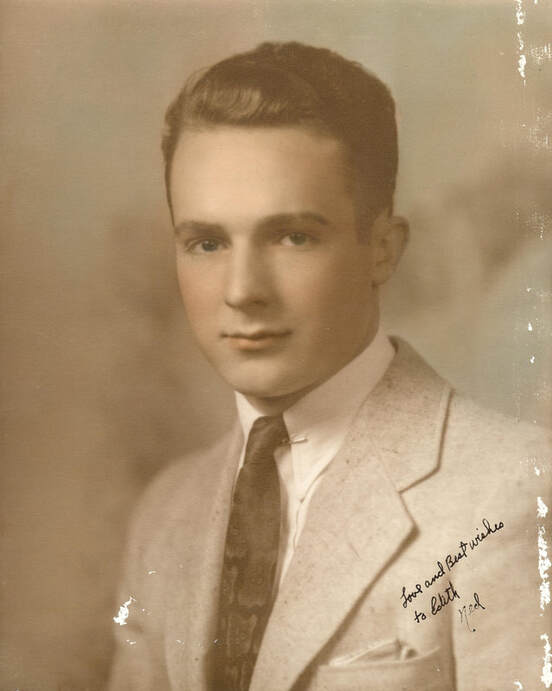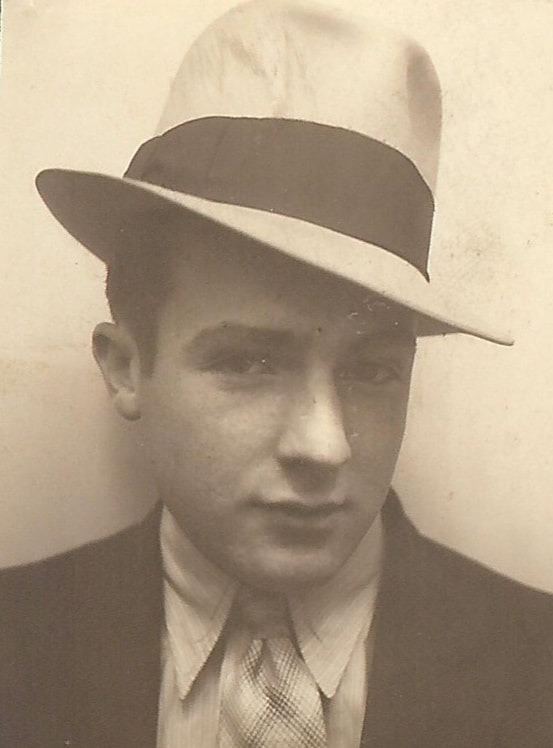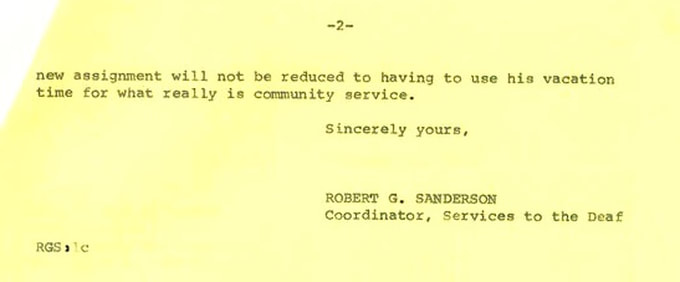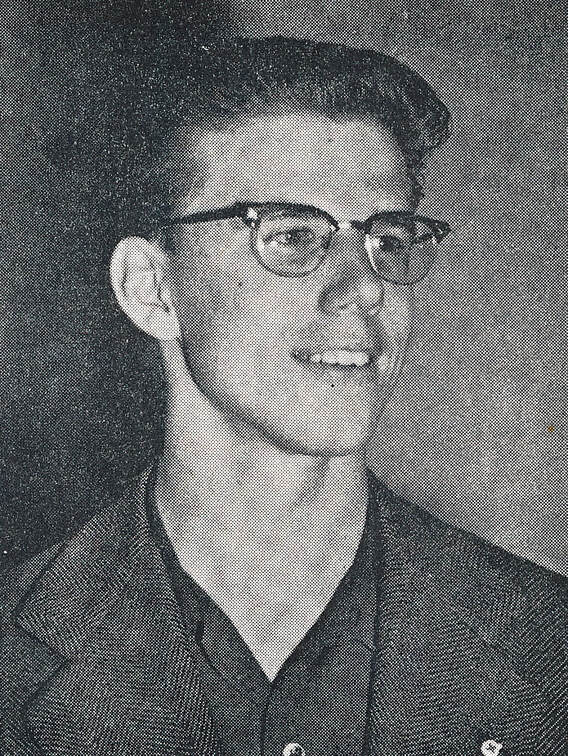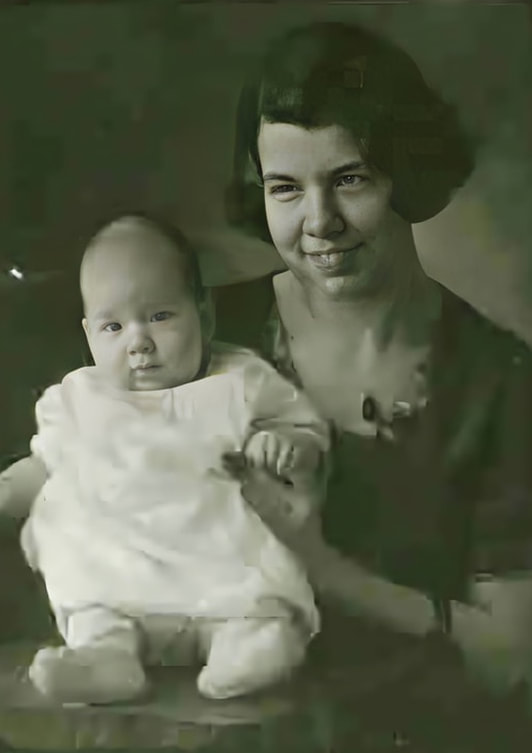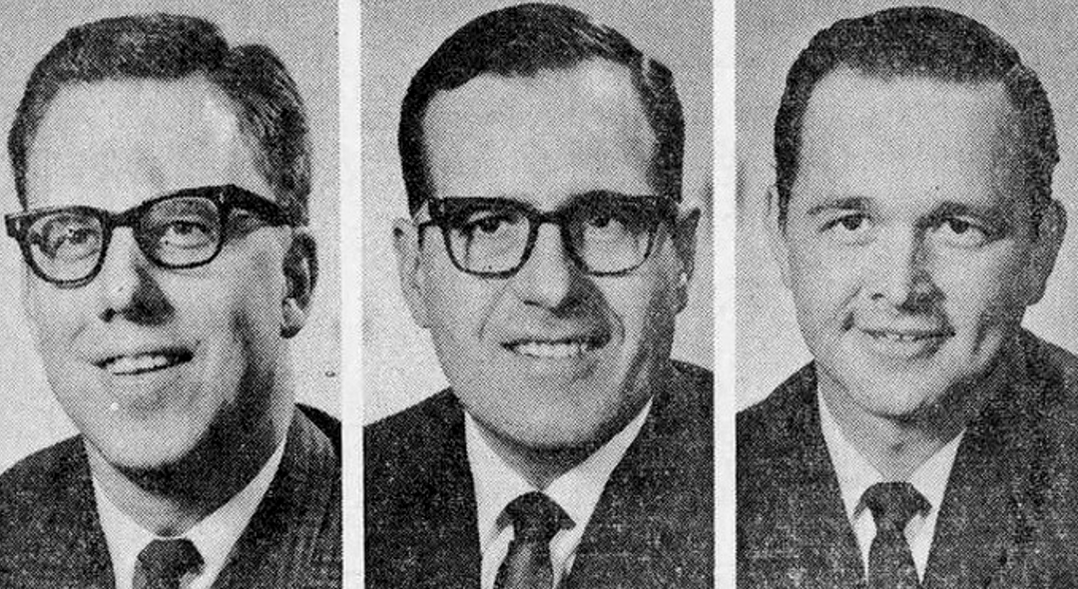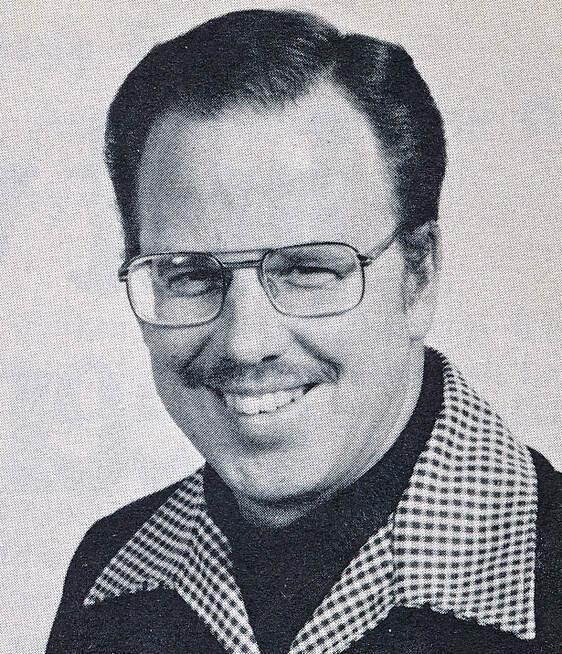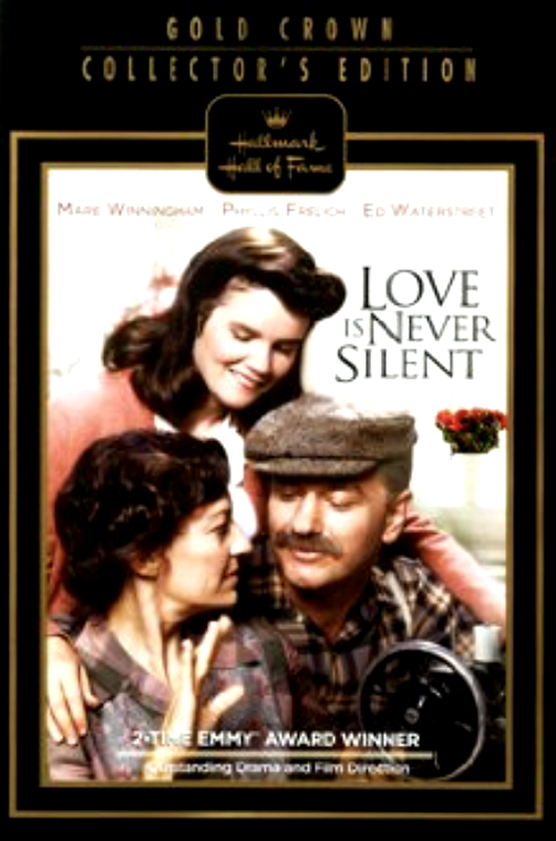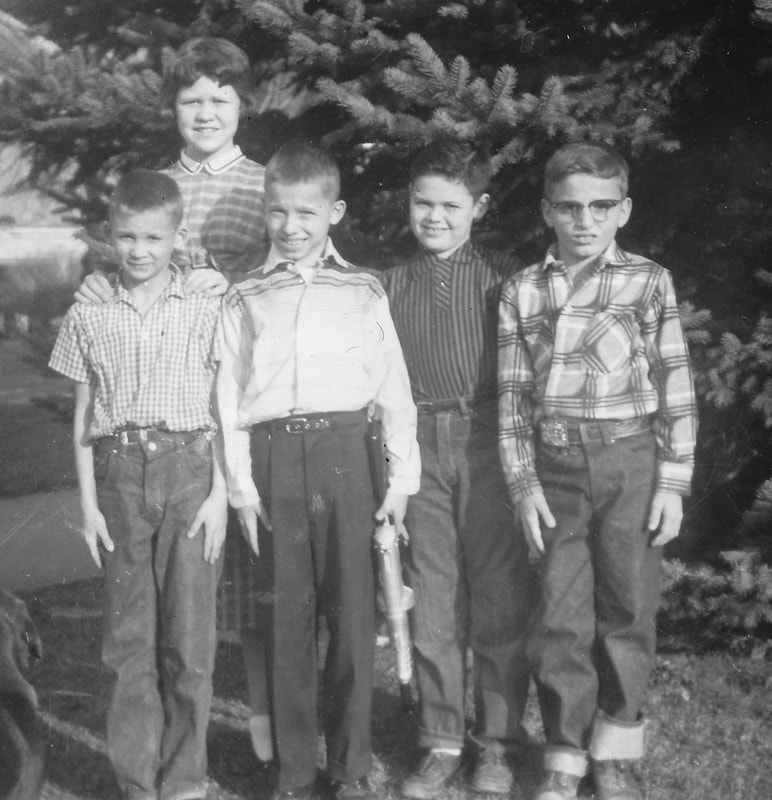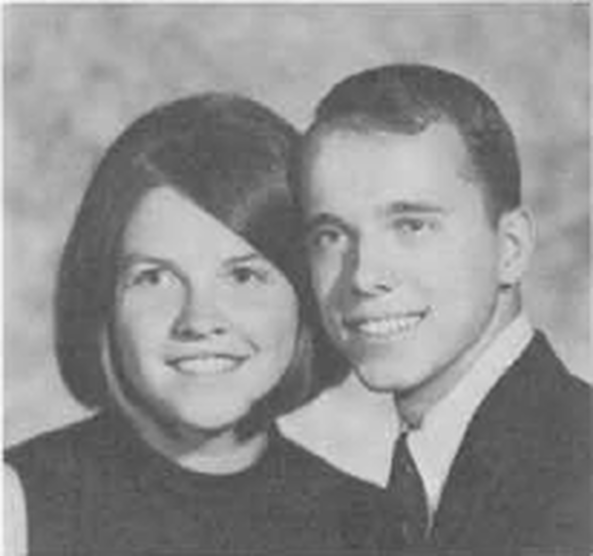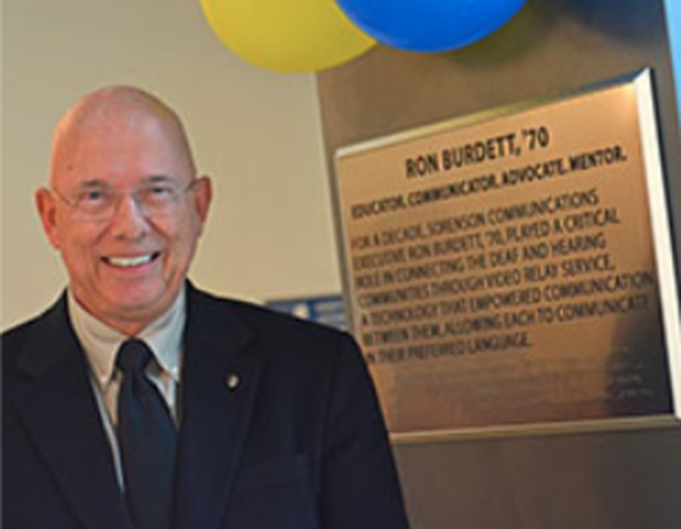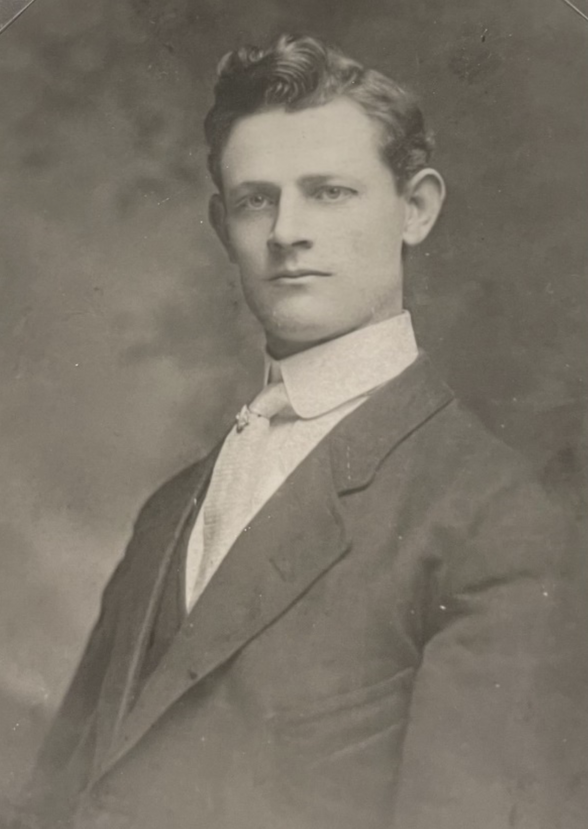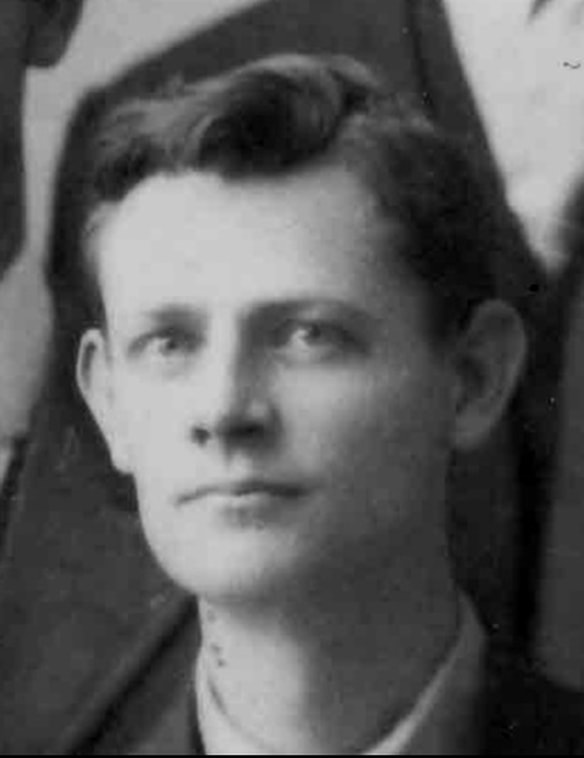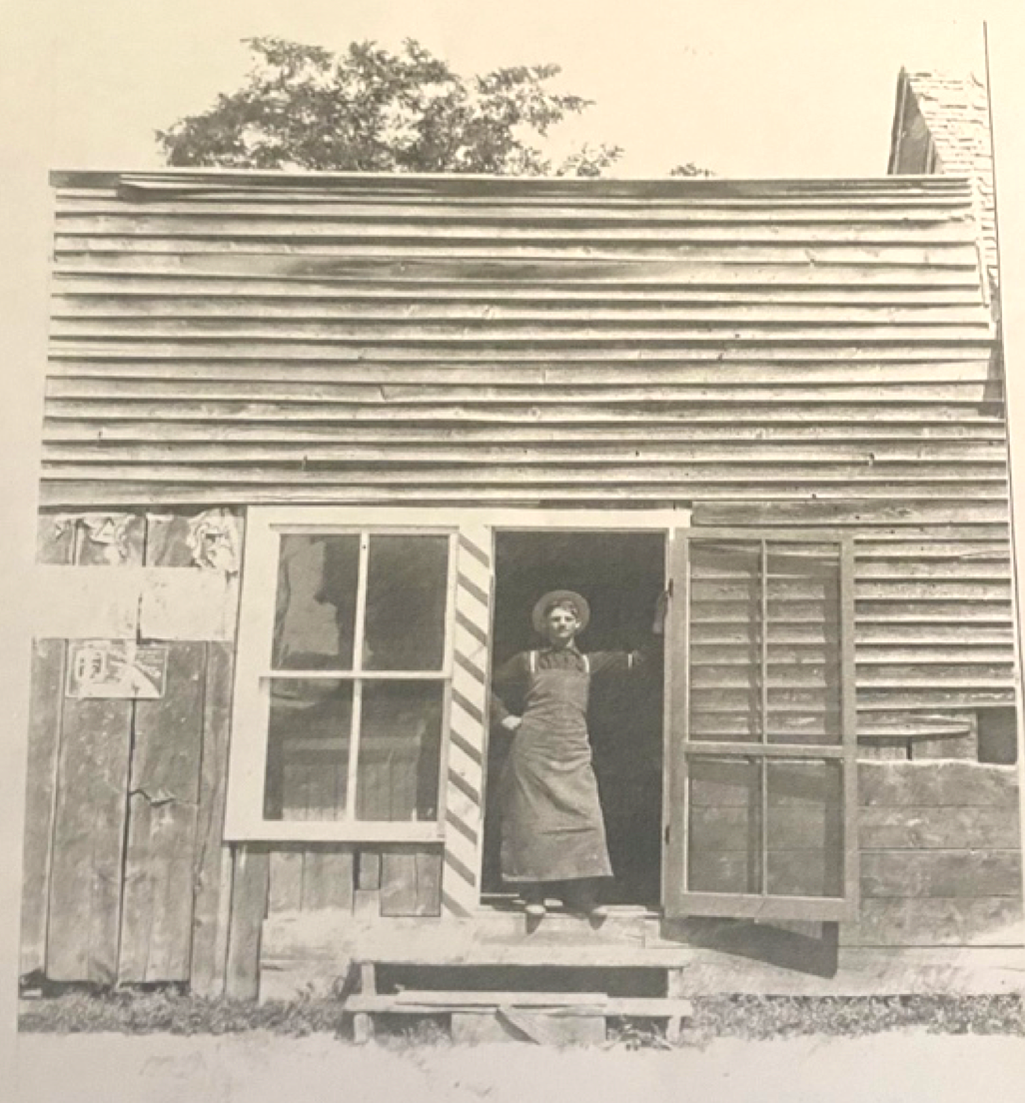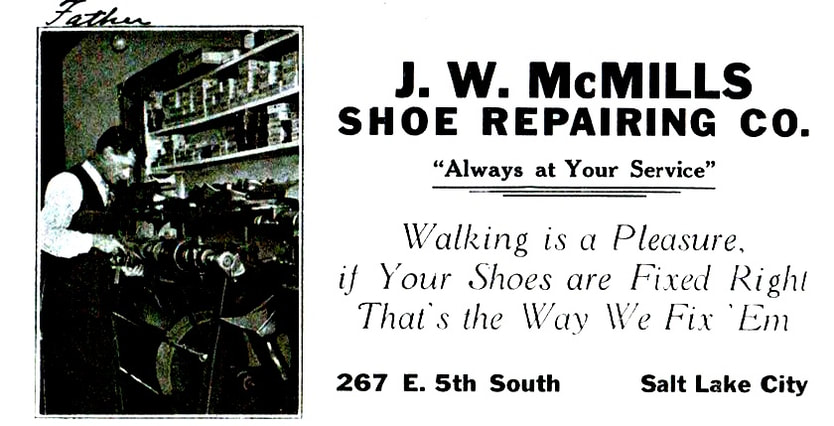Construction-In-Progress
Biographies of Prominent
Utah Deaf Men
Compiled & Written by Jodi Becker Kinner
Published in 2012
Updated in 2021
Updated in 2023
Published in 2012
Updated in 2021
Updated in 2023
Acknowledgement
I want to express my sincere gratitude to Valerie G. Kinney for her essential support in proofreading this document and interviewing sources close to prominent individuals for more biographical details.
I am deeply thankful to Anne Leahy for her generosity in assisting and contributing to the hard-to-find archive collections of specific individuals.
I would like to show my appreciation and thanks to Helen Salas-McCarty for donating her time to proofread and edit the documents.
I also want to thank Dr. Robert G. Sanderson (via Valerie G. Kinney), Kenneth L. Kinner, and Doug Stringham for recommending the names of prominent individuals.
I am deeply thankful to Anne Leahy for her generosity in assisting and contributing to the hard-to-find archive collections of specific individuals.
I would like to show my appreciation and thanks to Helen Salas-McCarty for donating her time to proofread and edit the documents.
I also want to thank Dr. Robert G. Sanderson (via Valerie G. Kinney), Kenneth L. Kinner, and Doug Stringham for recommending the names of prominent individuals.
I would also like to express my gratitude to Anne Leahy, Doug Stringham, and David Samuelson for their valuable direction and guidance. Moreover, I extend special thanks to those who provided important biographical details about the subjects of these biographies.
I want to express my gratitude to Eleanor McCowan for suggesting that I take on the Utah Deaf History project. Without her suggestion, none of this would have been possible.
I also want to thank my colleague, James Fenton, for recommending that I include a summary of each biography.
I am incredibly appreciative of the support and patience of my spouse, Duane Kinner, and my children, Joshua and Danielle, throughout the completion of this project. The "Biographies of Prominent Utah Deaf Women" webpage would not have been possible without their support. Thank you!
I want to express my gratitude to Eleanor McCowan for suggesting that I take on the Utah Deaf History project. Without her suggestion, none of this would have been possible.
I also want to thank my colleague, James Fenton, for recommending that I include a summary of each biography.
I am incredibly appreciative of the support and patience of my spouse, Duane Kinner, and my children, Joshua and Danielle, throughout the completion of this project. The "Biographies of Prominent Utah Deaf Women" webpage would not have been possible without their support. Thank you!
Why Does The Biographies
of Prominent Utah Deaf Men Matter?
of Prominent Utah Deaf Men Matter?
"The Biographies of Prominent Utah Deaf Men" is an invaluable resource for the ASL community, particularly for the younger Deaf generation in Utah. It provides insight into the lives of local Deaf role models, helping future generations learn from their leadership traits. By studying these biographies, individuals can effectively advocate for causes and become more literate, educated, prosperous, and productive citizens.
I admire the Utah Deaf individuals featured on this webpage for their unwavering dedication to improving the lives of the Deaf community in Utah. I hope their biographies encourage readers to follow in their extraordinary footsteps. Finally, I appreciate these leaders' selfless dedication and contributions to our Utah Deaf community.
Have fun while reading!
Jodi Becker Kinner
I admire the Utah Deaf individuals featured on this webpage for their unwavering dedication to improving the lives of the Deaf community in Utah. I hope their biographies encourage readers to follow in their extraordinary footsteps. Finally, I appreciate these leaders' selfless dedication and contributions to our Utah Deaf community.
Have fun while reading!
Jodi Becker Kinner

Students of Utah School for the Deaf, 1928-1930. Back L-R: Wayne Stewart, William Woodward, Alton Fisher, John (Jack) White, Joseph Burnett, possible Leon Edwards, Arvel Christensen, Virgil Greenwood, ____
Front L-R: J. Sherwood Messerly, Rodney Walker, Melvin Penman, Wesley Perry, Verl Throup, _____
“The price of success is hard work, dedication to the job at hand, and the determination that whether we win or lose, we have applied the best of ourselves to the task at hand.”
~Vince Lombardi~
~Vince Lombardi~
Note
Some biographies included religion, specifically The Church of Jesus Christ of Latter-day Saints, which has had a significant and lasting impact on Utah's history. This influence also extends to the Utah Deaf community, making it an important part of our collective heritage.
The biographies will be valuable for the individuals' families, aiding in preserving history and exploring their lineage. Additionally, these biographies will help preserve the life stories of these individuals for future generations to appreciate and remember.
To avoid confusion, I will refer to the organization as the Utah Association of the Deaf on this webpage, as they used the word "of" in their name from 1909 to 1962. The organization changed its name to the Utah Association for the Deaf in 1963 and then reversed it in 2012 to become the Utah Association of the Deaf.
The biographies will be valuable for the individuals' families, aiding in preserving history and exploring their lineage. Additionally, these biographies will help preserve the life stories of these individuals for future generations to appreciate and remember.
To avoid confusion, I will refer to the organization as the Utah Association of the Deaf on this webpage, as they used the word "of" in their name from 1909 to 1962. The organization changed its name to the Utah Association for the Deaf in 1963 and then reversed it in 2012 to become the Utah Association of the Deaf.
Laron Pratt,
the Utah's first Deaf leader in the 1800s
the Utah's first Deaf leader in the 1800s
On January 10, 1892, Laron Pratt was appointed assistant superintendent of the Deaf Mute Sunday School in Salt Lake City's 19th Ward. He eventually became a stake Sunday School missionary and started giving talks at local and general church gatherings and signing hymns with his daughter as an interpreter. Laron is believed to have been the first and only Deaf leader in Utah of the newly formed Deaf community in the 1800s before establishing the Utah School for the Deaf in 1880. He has made significant contributions to the Utah Deaf community and Deaf members of The Church of Jesus Christ of Latter-day Saints.
Laron Pratt was born in Florence, Douglas County, Nebraska, on April 14, 1847. He was the son of the late Church of Jesus Christ of Latter-day Saints Apostle Orson Pratt and his first wife (of 10), Sarah Marinda Bates. Plural marriage was common at the time.
Laron was three years old when he developed a high fever and went deaf. He had some spoken language skills as an adult. He was also fluent in sign language. He could also read lips and speak well (The Utah Eagle, March 1917).
Laron arrived in the Salt Lake Valley with his father's Pioneer Company from Winter Quarters on October 4, 1851, at the age of four (Anne Leahy, personal communication, June 3, 2011). Apostle Pratt was a member of President Brigham Young's pioneering company, the "Vanguard Company.
Laron relocated to St. George with his family ten years later, in October 1861. In August 1864, he went to Salt Lake City, where he became the first Deaf leader of the newly formed Deaf community (Doug Stringham, personal communication, June 2, 2011; Anne Leahy, personal communication, June 3, 2011).
Like other Deaf people in Utah between 1850 and 1880, they were most likely educated or tutored at home by their parents (Doug Stringham, personal communication, June 2, 2011). Laron was one of them. He authored and published a few articles for the Deseret News as a well-educated man.
He started working for the Deseret News in 1862 and stayed for nearly 50 years (Deseret News, August 24, 1908). He rose through the ranks to become a well-known compositor (typesetter) (Anne Leahy, personal communication, June 3, 2011).
On June 7, 1876, while working for the Deseret News, Laron's essay "The English of Deaf Mutes" was reprinted from an unknown newspaper exchange source (Anne Leahy, personal communication, June 3, 2011).
According to the 1880 census, Laron's household included a hearing wife, Ethelwynne Clarissa Brown, and six children. He hired a young Swiss woman to do housekeeping. He married Ethelwynne on June 27, 1869, in Salt Lake City, Utah. Their children were Laron Jr., Maude Eudora, Ethelwynne Clarissa, Sarah Marinda, Hermie Estelle, and Pemelia Pearl. Laron's eldest son, Laron Jr., died at the age of 15 in 1885 (Deseret News, November 18, 1885).
Laron, at 37, had two essays published in the Deseret Evening News. On April 16, 1884, he submitted his first article, "Deaf Mutes: A Good Word on Behalf of the Unfortunates." It was printed on page 211, seven days later. Loran praised the legislature's provision for the education of Deaf children in Utah Territory and provided an insider's view of Deaf culture for a hearing audience (Pratt, Deseret Evening News, April 16, 1884; Anne Leahy, personal communication, June 3, 2011).
On June 22, 1884, he authored his second article, "A Kind Word in Behalf of Deaf Mutes," which was submitted and published in the Deseret Evening News, p. 379. He quoted Marquis L. Brock from a lecture at the American Instructors of the Deaf and Dumb convention in his essay: "The whole world of sound is a sealed book [to deaf people]." Laron also advocated for religious and moral education. This suggests that he subscribed to the American Annals of the Deaf, which published his paper (Pratt, Deseret News, June 22, 1884; Anne Leahy, personal communication, June 3, 2011).
Laron was three years old when he developed a high fever and went deaf. He had some spoken language skills as an adult. He was also fluent in sign language. He could also read lips and speak well (The Utah Eagle, March 1917).
Laron arrived in the Salt Lake Valley with his father's Pioneer Company from Winter Quarters on October 4, 1851, at the age of four (Anne Leahy, personal communication, June 3, 2011). Apostle Pratt was a member of President Brigham Young's pioneering company, the "Vanguard Company.
Laron relocated to St. George with his family ten years later, in October 1861. In August 1864, he went to Salt Lake City, where he became the first Deaf leader of the newly formed Deaf community (Doug Stringham, personal communication, June 2, 2011; Anne Leahy, personal communication, June 3, 2011).
Like other Deaf people in Utah between 1850 and 1880, they were most likely educated or tutored at home by their parents (Doug Stringham, personal communication, June 2, 2011). Laron was one of them. He authored and published a few articles for the Deseret News as a well-educated man.
He started working for the Deseret News in 1862 and stayed for nearly 50 years (Deseret News, August 24, 1908). He rose through the ranks to become a well-known compositor (typesetter) (Anne Leahy, personal communication, June 3, 2011).
On June 7, 1876, while working for the Deseret News, Laron's essay "The English of Deaf Mutes" was reprinted from an unknown newspaper exchange source (Anne Leahy, personal communication, June 3, 2011).
According to the 1880 census, Laron's household included a hearing wife, Ethelwynne Clarissa Brown, and six children. He hired a young Swiss woman to do housekeeping. He married Ethelwynne on June 27, 1869, in Salt Lake City, Utah. Their children were Laron Jr., Maude Eudora, Ethelwynne Clarissa, Sarah Marinda, Hermie Estelle, and Pemelia Pearl. Laron's eldest son, Laron Jr., died at the age of 15 in 1885 (Deseret News, November 18, 1885).
Laron, at 37, had two essays published in the Deseret Evening News. On April 16, 1884, he submitted his first article, "Deaf Mutes: A Good Word on Behalf of the Unfortunates." It was printed on page 211, seven days later. Loran praised the legislature's provision for the education of Deaf children in Utah Territory and provided an insider's view of Deaf culture for a hearing audience (Pratt, Deseret Evening News, April 16, 1884; Anne Leahy, personal communication, June 3, 2011).
On June 22, 1884, he authored his second article, "A Kind Word in Behalf of Deaf Mutes," which was submitted and published in the Deseret Evening News, p. 379. He quoted Marquis L. Brock from a lecture at the American Instructors of the Deaf and Dumb convention in his essay: "The whole world of sound is a sealed book [to deaf people]." Laron also advocated for religious and moral education. This suggests that he subscribed to the American Annals of the Deaf, which published his paper (Pratt, Deseret News, June 22, 1884; Anne Leahy, personal communication, June 3, 2011).
Laron personally called President Wilford W. Woodruff of The Church of Jesus Christ of Latter-day Saints on January 24, 1881, to express a desire to teach the Deaf (Anne Leahy, personal communication, June 3, 2011). Eleven years later, on January 10, 1892, Laron established the Deaf Mute Sunday School in Salt Lake City's 19th Ward and was called as assistant superintendent. He became a stake Sunday School missionary, traveling to local and general church meetings to give talks and sign hymns with his daughter as an interpreter (The Daily Enquirer, February 11, 1892; Anne Leahy, personal communication, June 3, 2011).
Following the relocation of the Utah School for the Deaf in 1896, the Deaf Mute Sunday School was relocated to the Ogden 4th Ward. He began his weekly train trips to continue serving as a teacher and assistant superintendent until he was appointed as an honorary member of the superintendency on October 7, 1907, "as a reward for his faithful service" (Desert News, November 21, 1896; Anne Leahy, personal communication, June 3, 2011).
Laron was featured in Orson F. Whitney's History of Utah, p. 29, in 1904, as one of the seventeen most prominent of Orson Pratt's forty-five children (Anne Leahy, personal communication, June 3, 2011).
Laron passed away in Salt Lake City, Utah, on August 22, 1908. His dedicated friends organized his funeral in the Seventeenth Ward chapel, packed with relatives and friends. Students from the Utah School for the Deaf came to pay their respects at the funeral. His former colleagues from the Deseret News, where he had worked as a printer, were also present. Many florals were on exhibit, expressing the community's esteem and affection for Elder Laron Pratt (Deseret News, August 24, 1908).
Following the relocation of the Utah School for the Deaf in 1896, the Deaf Mute Sunday School was relocated to the Ogden 4th Ward. He began his weekly train trips to continue serving as a teacher and assistant superintendent until he was appointed as an honorary member of the superintendency on October 7, 1907, "as a reward for his faithful service" (Desert News, November 21, 1896; Anne Leahy, personal communication, June 3, 2011).
Laron was featured in Orson F. Whitney's History of Utah, p. 29, in 1904, as one of the seventeen most prominent of Orson Pratt's forty-five children (Anne Leahy, personal communication, June 3, 2011).
Laron passed away in Salt Lake City, Utah, on August 22, 1908. His dedicated friends organized his funeral in the Seventeenth Ward chapel, packed with relatives and friends. Students from the Utah School for the Deaf came to pay their respects at the funeral. His former colleagues from the Deseret News, where he had worked as a printer, were also present. Many florals were on exhibit, expressing the community's esteem and affection for Elder Laron Pratt (Deseret News, August 24, 1908).
Laron's memorial service featured three speakers. Elder J.M. Sjodahl, an editor for the Deseret News, was the first to speak. He highlighted Laron's noble and honest life and his condolences to Loran's family (Deseret News, August 24, 1908).
Elder John Henry Smith, who had known Laron since his youth, remarked on his heroic life and how he faced "almost insurmountable obstacles that made a success of the great battle of life." John also praised Laron for raising his honored family, remaining faithful, and earning the respect of all who knew him. Laron's life, according to John, was "truly an exemplary one, and he was a worthy son of his distinguished father, Orson Pratt, one of the earliest standard bearers of Mormonism and a Utah pioneer" (Deseret News, August 24, 1908).
Lastly, Elder Fred W. Chambers, superintendent of the Deaf Mute Sunday school, Ogden, spoke feelingly of the devotion of Elder Pratt [who lived in Salt Lake City], who went to Ogden every Sabbath for nearly nine years to teach Deaf children the gospel (Deseret News, August 24, 1908).
Elder Fred W. Chambers, superintendent of the Deaf Mute Sunday school in Ogden, talked movingly of Elder Pratt [who lived in Salt Lake City], who traveled to Ogden every Sunday for over nine years to teach Deaf children the gospel (Deseret News, August 24, 1908).
Elder John Henry Smith, who had known Laron since his youth, remarked on his heroic life and how he faced "almost insurmountable obstacles that made a success of the great battle of life." John also praised Laron for raising his honored family, remaining faithful, and earning the respect of all who knew him. Laron's life, according to John, was "truly an exemplary one, and he was a worthy son of his distinguished father, Orson Pratt, one of the earliest standard bearers of Mormonism and a Utah pioneer" (Deseret News, August 24, 1908).
Lastly, Elder Fred W. Chambers, superintendent of the Deaf Mute Sunday school, Ogden, spoke feelingly of the devotion of Elder Pratt [who lived in Salt Lake City], who went to Ogden every Sabbath for nearly nine years to teach Deaf children the gospel (Deseret News, August 24, 1908).
Elder Fred W. Chambers, superintendent of the Deaf Mute Sunday school in Ogden, talked movingly of Elder Pratt [who lived in Salt Lake City], who traveled to Ogden every Sunday for over nine years to teach Deaf children the gospel (Deseret News, August 24, 1908).
Notes
Anne Leahy, e-mail message to Jodi Becker Kinner, June 3, 2011.
Doug Stringham, e-mail message to Jodi Becker Kinner, June 2, 2011.
Doug Stringham, e-mail message to Jodi Becker Kinner, June 2, 2011.
References
"A Brief History of the Sunday School for the Deaf." The Utah Eagle, Vol. 28, No. 6, March 1917.
"A Sunday School Organized for the Deaf Mutes." The Daily Enquirer, February 11, 1892. Transcribed and proofread by David Grow, Aug. 2006. http://jared.pratt-family.org/orson_family_histories/laron_pratt_organization.html
"Bereaved." Deseret News, November 18, 1885. http://jared.pratt-family.org/orson_family_histories/laron_pratt_son_dies.html
“For Blind, Deaf, and Dumb.” Deseret News, November 21, 1896. Transcribed and proofread by David Grow, Aug. 2006. http://jared.pratt-family.org/orson_family_histories/laron_pratt_organization.html
“Funeral of Laron Pratt: Veteran Printer Laid to Rest After Impressive Service
Attended by Host of Devoted Friends.” Deseret News, August 24, 1908. Transcribed and proofread by David Grow, Aug. 2006. http://jared.pratt-family.org/orson_family_histories/laron_pratt_obituary.html
Pratt, Laron. "Deaf Mutes: A good word in behalf of the unfortunates." Deseret News, April 16, 1884. Transcribed and proofread by David Grow, Apr. 2006 http://jared.pratt-family.org/orson_family_histories/laron_pratt_good_word.html
Pratt, Larson. “A Kind Word in Behalf of Deaf Mutes.” Deseret News, June 22, 1884. Transcribed and proofread by David Grow, Apr. 2006. (Online). Available HTTP: http://jared.pratt-family.org/orson_family_histories/laron_pratt_kind_word.html
"A Sunday School Organized for the Deaf Mutes." The Daily Enquirer, February 11, 1892. Transcribed and proofread by David Grow, Aug. 2006. http://jared.pratt-family.org/orson_family_histories/laron_pratt_organization.html
"Bereaved." Deseret News, November 18, 1885. http://jared.pratt-family.org/orson_family_histories/laron_pratt_son_dies.html
“For Blind, Deaf, and Dumb.” Deseret News, November 21, 1896. Transcribed and proofread by David Grow, Aug. 2006. http://jared.pratt-family.org/orson_family_histories/laron_pratt_organization.html
“Funeral of Laron Pratt: Veteran Printer Laid to Rest After Impressive Service
Attended by Host of Devoted Friends.” Deseret News, August 24, 1908. Transcribed and proofread by David Grow, Aug. 2006. http://jared.pratt-family.org/orson_family_histories/laron_pratt_obituary.html
Pratt, Laron. "Deaf Mutes: A good word in behalf of the unfortunates." Deseret News, April 16, 1884. Transcribed and proofread by David Grow, Apr. 2006 http://jared.pratt-family.org/orson_family_histories/laron_pratt_good_word.html
Pratt, Larson. “A Kind Word in Behalf of Deaf Mutes.” Deseret News, June 22, 1884. Transcribed and proofread by David Grow, Apr. 2006. (Online). Available HTTP: http://jared.pratt-family.org/orson_family_histories/laron_pratt_kind_word.html
Henry C. White, Outspoken Leader
Henry C. White was named principal of the Utah School for the Deaf (USD) in Salt Lake City, Utah in 1884 by Dr. John R. Park, president of the University of Utah, following the recommendation of Dr. Edward M. Gallaudet, president of Gallaudet College. He remained at USD until 1890, serving as a teacher, principal, and headmaster. Henry established the Arizona School for the Deaf at the University of Arizona in 1911, similar to the Utah School for the Deaf. He graduated from Gallaudet College in 1880 and was one of the first attendees at the first convention of the National Association of the Deaf in Cincinnati, Ohio, in the same year.
Henry C. White was born hearing on November 9, 1856 in Roxbury, Boston, Suffolk, Massachusetts. He lost his hearing at age four from scarlet fever (Census of Henry C. White). He was raised in Roxbury, Massachusetts. He first attended the Horace Mann Day School for the Deaf in Boston. In 1866, when he was nine years old, he went to the Hartford School for the Deaf as a student (The Utah Eagle, February 1922). After graduating from Hartford in 1880, he went to the Columbia Institute for the Deaf and Dumb (later renamed Gallaudet University) in Washington, D.C., where he got a Bachelor of Arts degree in 1880 (Gallaudet University Alumni Cards, 1866–1957; The Utah Eagle, February 1922). The same year, he attended the National Association of the Deaf's first Cincinnati convention (Gannon, 1981).
Soon after he graduated, Henry became the manager of a home for older Deaf people in Allston, Massachusetts (Gallaudet University Alumni Cards, 1866–1957). Then, on the advice of Dr. Edward M. Gallaudet, president of Gallaudet College, Dr. John R. Park, president of the University of Utah, made Henry the first principal of the Utah School for the Deaf in Salt Lake City, Utah, in 1884. The Legislature created the school as a part of the state university because John Beck and William Wood, both parents of Deaf children, pushed for it. It opened in a room in the University building on August 26, 1884 (The Utah Eagle, February 1922). Henry stayed at USD as a teacher, principal, and head teacher until 1890. Although Henry C. White did not found the Utah School for the Deaf, he is credited with leading and maintaining it, which still exists today, as a leader and administrator despite limited financial resources and a lack of support from the hearing community.
Before Henry left USD in 1890, he was the principal for five years. However, the impact of oralism spread across the country after the infamous Milan Conference of 1880 passed a resolution requiring using the oral method in deaf education. As a result, Henry's job was jeopardized. The oral movement in Utah reflected Henry's replacement as principal in 1889 by a hearing teacher from the Kansas School for the Deaf, Frank W. Metcalf (Evans, 1999).
When Frank was appointed principal in 1889, Henry took over as head teacher. He was enmity toward his successor, Frank and this conflict caused disputes between them. The Board of Regents investigated the situation and terminated Henry's employment with the school (The Utah Eagle, February 1922). He severed his ties with the school in February 1890 (White, 1890; Fay, 1893; Pace, 1946; Burdett; Utah School for the Deaf Brochure).
Professor White was not, in fact, alone in this situation. Deaf men who founded state schools for the deaf faced a similar challenge and were fired as principals for no reason other than being deaf. The Deaf community believed hearing people preferred hearing people to hold the positions. Professor White, along with three other Deaf principals, J.M. Koehler of Pennsylvania, A.R. Spear of North Dakota, and Mr. Long of the Indian Territory, were recognized as "shining lights in this particular, all men who built on firm foundations at the price of great discomfort and in the face of great sacrifices, only to be told to "get out" and make room for hearing men" (The Silent Worker, March 1900, p. 101). At the time, the national Deaf community regarded Professor White as one of the founders, completely unaware of the involvement of two parents, John Beck, and William Wood, in establishing the Utah School for the Deaf.
During Professor White's last year at the school, Frank M. Driggs, the school's then-boys' supervisor and long-time superintendent, got to know him and found him to be "well-educated, bright, alert, and active." Mr. Driggs was praised for 'his efforts to keep the school going during those early years when it required money and courage' (The Utah Eagle, February 1922, p. 2).
While Deaf leaders were battling Alexander Graham Bell, a well-known oral advocate, and attempting to halt the spread of oral day schools across the United States in 1894, Henry C. White, a gifted rhetorician, condemned school administrators for failing to consult directly with Deaf adults. "What of the Deaf themselves?" he wondered. "Have they no say in a matter which means intellectual life and death to them?" (Buchanan, 1850-1950, p. 28). During this time, Henry was one of the most foresighted Deaf activists, predicting that Deaf activists would be unable to mount the type of national campaign. Henry, according to Buchanan (1850-1950), "believed that deaf instructors had a moral claim in teaching positions, but he understood that such assertions were nothing if they were not based in law and protected by vigilant Deaf adults" (p. 32). Henry urged his peers at the Utah School for the Deaf in Salt Lake City in 1885 to define, organize, and defend a new set of rights. "One thing must be made clear, and if we wish to combat this lingering prejudice and secure justice...we must assert our claims to justice, or we will never receive it," he said (p. 32). Henry had clearly not forgotten the incident in Utah.
Soon after he graduated, Henry became the manager of a home for older Deaf people in Allston, Massachusetts (Gallaudet University Alumni Cards, 1866–1957). Then, on the advice of Dr. Edward M. Gallaudet, president of Gallaudet College, Dr. John R. Park, president of the University of Utah, made Henry the first principal of the Utah School for the Deaf in Salt Lake City, Utah, in 1884. The Legislature created the school as a part of the state university because John Beck and William Wood, both parents of Deaf children, pushed for it. It opened in a room in the University building on August 26, 1884 (The Utah Eagle, February 1922). Henry stayed at USD as a teacher, principal, and head teacher until 1890. Although Henry C. White did not found the Utah School for the Deaf, he is credited with leading and maintaining it, which still exists today, as a leader and administrator despite limited financial resources and a lack of support from the hearing community.
Before Henry left USD in 1890, he was the principal for five years. However, the impact of oralism spread across the country after the infamous Milan Conference of 1880 passed a resolution requiring using the oral method in deaf education. As a result, Henry's job was jeopardized. The oral movement in Utah reflected Henry's replacement as principal in 1889 by a hearing teacher from the Kansas School for the Deaf, Frank W. Metcalf (Evans, 1999).
When Frank was appointed principal in 1889, Henry took over as head teacher. He was enmity toward his successor, Frank and this conflict caused disputes between them. The Board of Regents investigated the situation and terminated Henry's employment with the school (The Utah Eagle, February 1922). He severed his ties with the school in February 1890 (White, 1890; Fay, 1893; Pace, 1946; Burdett; Utah School for the Deaf Brochure).
Professor White was not, in fact, alone in this situation. Deaf men who founded state schools for the deaf faced a similar challenge and were fired as principals for no reason other than being deaf. The Deaf community believed hearing people preferred hearing people to hold the positions. Professor White, along with three other Deaf principals, J.M. Koehler of Pennsylvania, A.R. Spear of North Dakota, and Mr. Long of the Indian Territory, were recognized as "shining lights in this particular, all men who built on firm foundations at the price of great discomfort and in the face of great sacrifices, only to be told to "get out" and make room for hearing men" (The Silent Worker, March 1900, p. 101). At the time, the national Deaf community regarded Professor White as one of the founders, completely unaware of the involvement of two parents, John Beck, and William Wood, in establishing the Utah School for the Deaf.
During Professor White's last year at the school, Frank M. Driggs, the school's then-boys' supervisor and long-time superintendent, got to know him and found him to be "well-educated, bright, alert, and active." Mr. Driggs was praised for 'his efforts to keep the school going during those early years when it required money and courage' (The Utah Eagle, February 1922, p. 2).
While Deaf leaders were battling Alexander Graham Bell, a well-known oral advocate, and attempting to halt the spread of oral day schools across the United States in 1894, Henry C. White, a gifted rhetorician, condemned school administrators for failing to consult directly with Deaf adults. "What of the Deaf themselves?" he wondered. "Have they no say in a matter which means intellectual life and death to them?" (Buchanan, 1850-1950, p. 28). During this time, Henry was one of the most foresighted Deaf activists, predicting that Deaf activists would be unable to mount the type of national campaign. Henry, according to Buchanan (1850-1950), "believed that deaf instructors had a moral claim in teaching positions, but he understood that such assertions were nothing if they were not based in law and protected by vigilant Deaf adults" (p. 32). Henry urged his peers at the Utah School for the Deaf in Salt Lake City in 1885 to define, organize, and defend a new set of rights. "One thing must be made clear, and if we wish to combat this lingering prejudice and secure justice...we must assert our claims to justice, or we will never receive it," he said (p. 32). Henry had clearly not forgotten the incident in Utah.
After Henry quit his job at the Utah School for the Deaf, he moved to Boston, Massachusetts, where he worked as a printer for Acheson & Co. and published his newspaper, The National Gazette (The Silent Worker, June 1895; The Utah Eagle, February 1922; Gannon, 1981).
He eventually became an attorney and worked as a legal advisor. He also wrote a book called Law Points for Everybody, which sold 60,000 copies in New England in a month. Copies of a second edition were on order. His book about law covered New England and New York (The Silent Worker, June 1898). He sometimes worked with other lawyers in court cases involving the deaf and often acted as an interpreter on behalf of other deaf people. For example, he once assisted John L. Bates, a former governor of Massachusetts, with a critical case. Even though Henry didn't practice law, he became known as a teacher of the deaf in eastern cities (The Silent Worker, July 1912). He was a brilliant person.
Edward Allen Fay, a professor at Gallaudet College and the editor of the American Annals of the Deaf, wrote about Henry's strong English skills in March 1916 (The Silent Worker, April 1916):
"The value of this means of acquiring languages seems to have been discovered by a man who was himself deaf Henry C. White, then a student at Gallaudet College. Seeing that some of his fellow-students who were congenitally or quasicongenitally deaf had a much better command of the English language than others of equally good natural advantages and an equally long term of instruction, he sought the cause of this difference. He found it in the circumstance that those who understood and wrote English well were eager reader of books, while those whose command of English was inferior bad, like the great majority of deaf-born people, no taste for reading, and did little more of it than was required by the instructors."
He eventually became an attorney and worked as a legal advisor. He also wrote a book called Law Points for Everybody, which sold 60,000 copies in New England in a month. Copies of a second edition were on order. His book about law covered New England and New York (The Silent Worker, June 1898). He sometimes worked with other lawyers in court cases involving the deaf and often acted as an interpreter on behalf of other deaf people. For example, he once assisted John L. Bates, a former governor of Massachusetts, with a critical case. Even though Henry didn't practice law, he became known as a teacher of the deaf in eastern cities (The Silent Worker, July 1912). He was a brilliant person.
Edward Allen Fay, a professor at Gallaudet College and the editor of the American Annals of the Deaf, wrote about Henry's strong English skills in March 1916 (The Silent Worker, April 1916):
"The value of this means of acquiring languages seems to have been discovered by a man who was himself deaf Henry C. White, then a student at Gallaudet College. Seeing that some of his fellow-students who were congenitally or quasicongenitally deaf had a much better command of the English language than others of equally good natural advantages and an equally long term of instruction, he sought the cause of this difference. He found it in the circumstance that those who understood and wrote English well were eager reader of books, while those whose command of English was inferior bad, like the great majority of deaf-born people, no taste for reading, and did little more of it than was required by the instructors."
In June 1885, Henry married Mary Elizabeth Mann, who was also deaf and a graduate of the Ohio School for the Deaf (Gallaudet University Alumni Cards, 1866–1957; The Salt Lake Herald, June 20, 1885; The Utah Eagle, February 1922). They were parents of three children: Emma Frances, Howard M., and Harriet Tuttle.
In 1911, Henry founded the Arizona School for the Deaf at the University of Arizona. It was similar to the one in Utah. During his three years as a principal, "he worked hard and put the school and its students first." Unfortunately, when ASD became an oral school, Henry's job was terminated in the middle of the school year for no reason, and he couldn't find another job (The Silent Worker, March 1920). In March 1913, Henry wrote the following about oralism in "The Silent Worker" magazine:
"Oralists never taught by any method but their own and cannot be expected to appreciate the utility of other methods than their own. They are not in touch with the deaf at all, for their own graduates turn against them and their method, after they have gone out into the stress and strife of life's battles and found themselves worse handicapped than their more fortunate brethren and sisters whose lives had been rounded out by the combined system."
After a few years, John T. Hughes, Chancellor of the University of Arizona, brought a bill to the Legislature to honor Henry's work at the ASD on March 12, 1919 (The Silent Worker, March 1920). Henry passed away at the County Hospital in Chicago, Illinois on December 31, 1921 (Gallaudet University Alumni Cards, 1866–1957; The Utah Eagle, February 1922).
In 1911, Henry founded the Arizona School for the Deaf at the University of Arizona. It was similar to the one in Utah. During his three years as a principal, "he worked hard and put the school and its students first." Unfortunately, when ASD became an oral school, Henry's job was terminated in the middle of the school year for no reason, and he couldn't find another job (The Silent Worker, March 1920). In March 1913, Henry wrote the following about oralism in "The Silent Worker" magazine:
"Oralists never taught by any method but their own and cannot be expected to appreciate the utility of other methods than their own. They are not in touch with the deaf at all, for their own graduates turn against them and their method, after they have gone out into the stress and strife of life's battles and found themselves worse handicapped than their more fortunate brethren and sisters whose lives had been rounded out by the combined system."
After a few years, John T. Hughes, Chancellor of the University of Arizona, brought a bill to the Legislature to honor Henry's work at the ASD on March 12, 1919 (The Silent Worker, March 1920). Henry passed away at the County Hospital in Chicago, Illinois on December 31, 1921 (Gallaudet University Alumni Cards, 1866–1957; The Utah Eagle, February 1922).
Did You Know?
Dr. Edward Allen Fay said, "One of the most important aids in the acquisition of language by the deaf is much reading of books. From the frequent repetition of words and phrases, by which the hearing child unconsciously acquires language through the ear, the deaf are wholly shut off: reading and reading alone can give them this needed repetition" (The Silent Worker, April 1916).
References
Buchanan, Robert M. Illusion of Equality: Deaf Americans in school and factory 1850 -1950 (Online. Available HTTP: http://books.google.com/books?id=Tahfhls7TKYC&pg=PA28&sig=VbCZINlmYggHd34t9GD_udkD_dY&dq=this+of+utah+school+for+the+deaf+%221894%22+%22In+1894,+Portland%27s+newspapers+carried+a+series+of+exchanges+that+pitted+American+School+officials+and+deaf+activists+against+Bell+and+Yale.%22
Burdett, Kenneth C. (1960s). Utah School for the Deaf Brochure.
Census of Henry C. White.
Fay, Edward Allen. History of the Utah School for the Deaf - History of American Schools for the Deaf. 1817 – 1893. School of Education Library; Stanford University Libraries: The Volta Bureau, 1893. http://books.google.com/books?id=tjEWAAAAIAAJ&pg=RA21-PA10&lpg=RA21-PA10&dq=Frank+M.+Driggs,+deaf&source=web&ots=il1POQSsle&sig=5L_Ewyv3YcTrbGyafwB4psnD-k0&hl=en&sa=X&oi=book_result&resnum=9&ct=result#PRA21-PA10,M1
Evans, David S. A Silent World In The Intermountain West: Records From The Utah School For The Deaf and Blind, 1884-1941. Utah State University: Logan, Utah. 1999.
Fay, Edward Allen. History of the Utah School for the Deaf - History of American Schools for the Deaf. 1817 – 1893.School of Education Library; Stanford University Libraries: The Volta Bureau, 1893.
http://books.google.com/books?id=tjEWAAAAIAAJ&pg=RA21-PA10&lpg=RA21-PA10&dq=Frank+M.+Driggs,+Deaf&source=web&ots=il1POQSsle&sig=5L_Ewyv3YcTrbGyafwB4psnD-k0&hl=en&sa=X&oi=book_result&resnum=9&ct=result#v=onepage&q=Frank%20M.%20Driggs%2C%20Deaf&f=false
Fay, Edward Allen. Organ of the Convention of American Instructors of the Deaf. American Annals of the Deaf.Washington, D.C. Conference of Superintendents and Principals of American Schools for the Deaf: American Annals of the Deaf, 1911.
http://books.google.com/books?id=d8AJAAAAIAAJ&pg=PA455&lpg=PA455&dq=Elsie+Christiansen,+utah+and+deaf&source=bl&ots=ovSqzoQyv4&sig=0BXfmLY9_R5wE_G1LSU4KUbTUDc&hl=en&ei=_VdyTqSYJ8GlsQKSuPTCCQ&sa=X&oi=book_result&ct=result&resnum=5&sqi=2&ved=0CDgQ6AEwBA#v=onepage&q=Elsie%20Christiansen%2C%20utah%20and%20deaf&f=false
Fay, Edward Allen. Organ of the Convention of American Instructors of the Deaf. American Annals of the Deaf.Washington, D.C. Conference of Superintendents and Principals of American Schools for the Deaf, 1916. http://books.google.com/books?id=ZqlKAAAAYAAJ&pg=PA461&lpg=PA461&dq=Mary+Woolslayer+utah+deaf&source=bl&ots=lmFN_lM-J8&sig=GoVttIsw68vn5YTT0kn21OCyGow&hl=en&ei=-X5zTuOLFa6EsALR68yLBQ&sa=X&oi=book_result&ct=result&resnum=6&ved=0CDsQ6AEwBQ#v=onepage&q=Mary%20Woolslayer%20utah%20deaf&f=false
Gannon, Jack, R. Deaf Heritage: A Narrative History of Deaf America. Silver Spring, Maryland: National Association of the Deaf, 1981.
“Henry C. White.” The Utah Eagle, Vol. 33, no. 5 (February 1922): 1-2.
“Industrial Department." The Silent Worker, vol. 7. no. 10 (June 1895): 12. http://dspace.wrlc.org/view/ImgViewer?url=http://dspace.wrlc.org/doc/manifest/2041/31446
“Mr. White Awarded.” The Silent Worker, vol. 32, no. 6. (June 1920): 149. http://dspace.wrlc.org/view/ImgViewer?url=http://dspace.wrlc.org/doc/manifest/2041/38064
“Mutely Married: Their wedding bells heard only by their happy hearts.” The Salt Lake Herald 1870-1909 (June 20, 1885): 8.
Pace, Irma Acord. “A History of the Utah School for the Deaf.” The Utah Eagle, vol. 58, no. 1 (October 1946): 1-33.
“The Kinetoscope and Telephone” The Silent Worker, vol. 12 no. 7 (March 1900): 101. http://dspace.wrlc.org/view/ImgViewer?url=http://dspace.wrlc.org/doc/manifest/2041/32729
“The Silent Worker.” The Silent Worker, vol. 10 no. 10 (June 1898): 155. http://dspace.wrlc.org/view/ImgViewer?url=http://dspace.wrlc.org/doc/manifest/2041/32324
White, Henry C.: B.A., 1880. Gallaudet University Alumni Cards, 1866-1957. http://dspace.wrlc.org/view/ImgViewer?url=http://dspace.wrlc.org/doc/manifest/2041/45187
White, Henry C. American Annals of the Deaf and Dumb. vol. 35 (July 1890): 221.
Burdett, Kenneth C. (1960s). Utah School for the Deaf Brochure.
Census of Henry C. White.
Fay, Edward Allen. History of the Utah School for the Deaf - History of American Schools for the Deaf. 1817 – 1893. School of Education Library; Stanford University Libraries: The Volta Bureau, 1893. http://books.google.com/books?id=tjEWAAAAIAAJ&pg=RA21-PA10&lpg=RA21-PA10&dq=Frank+M.+Driggs,+deaf&source=web&ots=il1POQSsle&sig=5L_Ewyv3YcTrbGyafwB4psnD-k0&hl=en&sa=X&oi=book_result&resnum=9&ct=result#PRA21-PA10,M1
Evans, David S. A Silent World In The Intermountain West: Records From The Utah School For The Deaf and Blind, 1884-1941. Utah State University: Logan, Utah. 1999.
Fay, Edward Allen. History of the Utah School for the Deaf - History of American Schools for the Deaf. 1817 – 1893.School of Education Library; Stanford University Libraries: The Volta Bureau, 1893.
http://books.google.com/books?id=tjEWAAAAIAAJ&pg=RA21-PA10&lpg=RA21-PA10&dq=Frank+M.+Driggs,+Deaf&source=web&ots=il1POQSsle&sig=5L_Ewyv3YcTrbGyafwB4psnD-k0&hl=en&sa=X&oi=book_result&resnum=9&ct=result#v=onepage&q=Frank%20M.%20Driggs%2C%20Deaf&f=false
Fay, Edward Allen. Organ of the Convention of American Instructors of the Deaf. American Annals of the Deaf.Washington, D.C. Conference of Superintendents and Principals of American Schools for the Deaf: American Annals of the Deaf, 1911.
http://books.google.com/books?id=d8AJAAAAIAAJ&pg=PA455&lpg=PA455&dq=Elsie+Christiansen,+utah+and+deaf&source=bl&ots=ovSqzoQyv4&sig=0BXfmLY9_R5wE_G1LSU4KUbTUDc&hl=en&ei=_VdyTqSYJ8GlsQKSuPTCCQ&sa=X&oi=book_result&ct=result&resnum=5&sqi=2&ved=0CDgQ6AEwBA#v=onepage&q=Elsie%20Christiansen%2C%20utah%20and%20deaf&f=false
Fay, Edward Allen. Organ of the Convention of American Instructors of the Deaf. American Annals of the Deaf.Washington, D.C. Conference of Superintendents and Principals of American Schools for the Deaf, 1916. http://books.google.com/books?id=ZqlKAAAAYAAJ&pg=PA461&lpg=PA461&dq=Mary+Woolslayer+utah+deaf&source=bl&ots=lmFN_lM-J8&sig=GoVttIsw68vn5YTT0kn21OCyGow&hl=en&ei=-X5zTuOLFa6EsALR68yLBQ&sa=X&oi=book_result&ct=result&resnum=6&ved=0CDsQ6AEwBQ#v=onepage&q=Mary%20Woolslayer%20utah%20deaf&f=false
Gannon, Jack, R. Deaf Heritage: A Narrative History of Deaf America. Silver Spring, Maryland: National Association of the Deaf, 1981.
“Henry C. White.” The Utah Eagle, Vol. 33, no. 5 (February 1922): 1-2.
“Industrial Department." The Silent Worker, vol. 7. no. 10 (June 1895): 12. http://dspace.wrlc.org/view/ImgViewer?url=http://dspace.wrlc.org/doc/manifest/2041/31446
“Mr. White Awarded.” The Silent Worker, vol. 32, no. 6. (June 1920): 149. http://dspace.wrlc.org/view/ImgViewer?url=http://dspace.wrlc.org/doc/manifest/2041/38064
“Mutely Married: Their wedding bells heard only by their happy hearts.” The Salt Lake Herald 1870-1909 (June 20, 1885): 8.
Pace, Irma Acord. “A History of the Utah School for the Deaf.” The Utah Eagle, vol. 58, no. 1 (October 1946): 1-33.
“The Kinetoscope and Telephone” The Silent Worker, vol. 12 no. 7 (March 1900): 101. http://dspace.wrlc.org/view/ImgViewer?url=http://dspace.wrlc.org/doc/manifest/2041/32729
“The Silent Worker.” The Silent Worker, vol. 10 no. 10 (June 1898): 155. http://dspace.wrlc.org/view/ImgViewer?url=http://dspace.wrlc.org/doc/manifest/2041/32324
White, Henry C.: B.A., 1880. Gallaudet University Alumni Cards, 1866-1957. http://dspace.wrlc.org/view/ImgViewer?url=http://dspace.wrlc.org/doc/manifest/2041/45187
White, Henry C. American Annals of the Deaf and Dumb. vol. 35 (July 1890): 221.
Paul Mark, Popular Leader
Paul Mark was elected president of the Utah Association of the Deaf in 1915. He held this position for three years, from 1915 to 1918. He was also the president of the local chapter of the National Fraternal Society of the Deaf. He owned a shoe shop called "Dunn and Bradstreet" on 25th Street in Ogden, Utah. In his spare time, he enjoyed driving his Peerless car. In the year 1920, Paul was Utah's most popular Deaf leader. Members of the Deaf community would always call Mark for the most up-to-date information on the Deaf community. He held meetings in his shoe shop and invited Deaf members to stay with him.
Paul Mark was born in Utah on September 17, 1872, in Brigham City, Utah.
In the 1880 census, Paul is listed as living in Terrace, Box Elder County, with his parents, Nicholas and Ann Mark. Terrace is now a ghost town in the Great Salt Lake Desert in west-central Box Elder County.
Paul graduated from the Utah School for the Deaf in 1892 (The Utah Eagle, November 15, 1909).
Paul married Theresa Maria Rasche, also deaf, on November 15, 1899, and had four children: Pauline Veronica, Theodore Paul, Nathaniel Cullen, and Nicholas Paul. The family belonged to the Catholic faith.
In the 1880 census, Paul is listed as living in Terrace, Box Elder County, with his parents, Nicholas and Ann Mark. Terrace is now a ghost town in the Great Salt Lake Desert in west-central Box Elder County.
Paul graduated from the Utah School for the Deaf in 1892 (The Utah Eagle, November 15, 1909).
Paul married Theresa Maria Rasche, also deaf, on November 15, 1899, and had four children: Pauline Veronica, Theodore Paul, Nathaniel Cullen, and Nicholas Paul. The family belonged to the Catholic faith.
Paul ran for president of the Utah Association of the Deaf on June 10, 1909, but lost to Elizabeth DeLong, the association's first woman president. He did not become president of the Utah Association of the Deaf until 1915, a position he held for three years until 1918. He was also the president of the local chapter of the National Fraternal Society of the Deaf. He had a family, owned a house, and spent his spare time driving his Peerless (White, The Silent Worker, April 1920).
Paul was the most popular leader of the Utah Deaf community in 1920. He was a very modest man. He lived in Ogden, Utah, for many years and was well-liked by everyone who knew him (White, The Silent Worker, April 1920). On 25th Street, he ran a "Dunn and Bradstreet" shop. Paul became a successful business owner and stockholder in several of Ogden's leading industries (White, The Silent Worker, April 1920; White, The Silent Worker, October 1920). More than 150 pairs of shoes were sometimes repaired in a single day. Paul's business became so busy one day that he was forced to work past his regular closing time. Cyril Jones, the Deaf father of two Deaf sons, Von and Rollin Jones of Logan, became his assistant and eventually secured employment with his "Prince of Good Fellows" shop (White, The Silent Worker, June 1920).
When members of the Utah Deaf community needed to know what was going on with other deaf people, they checked with Mark. He held the gatherings in his shoe shop and invited Deaf members from all over the state to attend (White, The Silent Worker, April 1920).
When members of the Utah Deaf community needed to know what was going on with other deaf people, they checked with Mark. He held the gatherings in his shoe shop and invited Deaf members from all over the state to attend (White, The Silent Worker, April 1920).
In 1920, Paul invited Harry C. Anderson, president of the National Fraternal Society of the Deaf, to ride in his "prairie shooner," a Peerless car, through the trail from Ogden Canyon to the Heritage Hotel, where President Anderson and his wife stayed during their visit to Ogden, Utah (White, The Silent Worker, November 1920).
Paul passed away on December 28, 1945, Culver City, Los Angeles, California, and is buried at the Aultorest Memorial Park in Ogden with his wife and his parents.
References
Paul Mark, 92. School for the Deaf. The Utah Eagle. November 15, 1909.
White, Bob. "Notes and Comments from the Land of the Mormons." The Silent Worker vol. 32 no. 7, April 1920. http://dspace.wrlc.org/view/ImgViewer?url=http://dspace.wrlc.org/doc/manifest/2041/38096
White, Bob. “Notes and Comments from the Land of the Mormons.” The Silent Worker, vol. 32, no. 9, June 1920.
White, Bob. “Ogden’s Social and Religious Center.” The Silent Worker vol. 33 no. 1, October 1920. http://dspace.wrlc.org/view/ImgViewer?url=http://dspace.wrlc.org/doc/manifest/2041/38209
White, Bob. “Winding Trails.” The Silent Worker, vol. 33, no. 2, November 1920. http://dspace.wrlc.org/view/ImgViewer?url=http://dspace.wrlc.org/doc/manifest/2041/38227
White, Bob. "Notes and Comments from the Land of the Mormons." The Silent Worker vol. 32 no. 7, April 1920. http://dspace.wrlc.org/view/ImgViewer?url=http://dspace.wrlc.org/doc/manifest/2041/38096
White, Bob. “Notes and Comments from the Land of the Mormons.” The Silent Worker, vol. 32, no. 9, June 1920.
White, Bob. “Ogden’s Social and Religious Center.” The Silent Worker vol. 33 no. 1, October 1920. http://dspace.wrlc.org/view/ImgViewer?url=http://dspace.wrlc.org/doc/manifest/2041/38209
White, Bob. “Winding Trails.” The Silent Worker, vol. 33, no. 2, November 1920. http://dspace.wrlc.org/view/ImgViewer?url=http://dspace.wrlc.org/doc/manifest/2041/38227
Max W. Woodbury, Ecclesiastical Leader
Max W. Woodbury dedicated his life to deaf education at the Utah School for the Deaf, where he worked as a teacher, teacher-supervising teacher, and finally, principal. From 1917 through 1968, he was president of the Ogden Branch for the Deaf of The Church of Jesus Christ of Latter-day Saints for 51 years. He is "believed to have set a record in the Church" for serving the Utah Deaf community, Utah School for the Deaf staff, and students. Max earned recognition as a long-time ecclesiastical leader for his work in the Ogden Branch for the Deaf of The Church of Jesus Christ of Latter-day Saints, which led to the establishment of new Deaf/ASL units in Utah and beyond.
Max W. Woodbury was born in St. George, Utah, on June 13, 1877. Robert W. Tegeder, a former superintendent of the Utah Schools for the Deaf and the Blind and an author, noted in his "Utah Loses Its Foremost Educator of the Deaf," article published in "The Utah Eagle," the school's magazine, that during the 1940s, "Max was one of the few educators of the deaf on the west side of the Rocky Mountains who was well known on the east side." Max was president of the Ogden Branch for the Deaf for 51 years while working at the Utah School for the Deaf (USD). Max's accomplishments in the field of deaf education included serving as a USD principal and spiritual leader of the Ogden Branch (The Utah Eagle, January 1974).
C. Roy Cochran, a former USD student and long-time leader of the Ogden Branch, stated that Max began to lose hearing and finally became hard of hearing while attending the University of Utah. He couldn't hear his professor's lecture one day, so he moved to the front row, which drew his professor's attention. His professor advised Max to seek a job at the Utah School for the Deaf (Roy Cochran, personal communication, July 9, 2011). Kenneth L. Kinner, a USD student, and long-time Ogden Branch leader, recalled Max wearing his hearing aid with a wire loop around his head (Kenneth L. Kinner, personal communication, July 9, 2011).
C. Roy Cochran, a former USD student and long-time leader of the Ogden Branch, stated that Max began to lose hearing and finally became hard of hearing while attending the University of Utah. He couldn't hear his professor's lecture one day, so he moved to the front row, which drew his professor's attention. His professor advised Max to seek a job at the Utah School for the Deaf (Roy Cochran, personal communication, July 9, 2011). Kenneth L. Kinner, a USD student, and long-time Ogden Branch leader, recalled Max wearing his hearing aid with a wire loop around his head (Kenneth L. Kinner, personal communication, July 9, 2011).

The Utah School for the Deaf, Dumb, and Blind, as it was called back then, was featured in the Ogden Daily Standard on December 20, 1902. The staff members were, from top to bottom, L-R: Albert Talage, Catherine King, Elizabeth DeLong, Superintendent Frank M. Driggs (Center), Sarah Whalen, E.S. Henne, and Max W. Woodbury
Max began his teaching career as an assistant superintendent of Sunday School at the Utah School for the Deaf and The Church of Jesus Christ of Latter-day Saints on September 1, 1902, the same year he learned sign language (Ogden Branch for the Deaf Historical Record Book 1941-1945; Historical Events and Persons Involved Branch for the Deaf—Compiled February 11, 1992; Roy Cochran, personal communication, July 18, 2011).
In 1907, Max was appointed assistant superintendent of the Ogden 4th Ward Sunday School. Max was promoted to superintendent of the Sunday school in 1911, and Elsie M. Christiansen (Deaf) to assistant superintendent. In 1912, Max and Elsie wrote to The Church of Jesus Christ of Latter-day Saints President Joseph F. Smith, describing the conditions of the Sunday School for the Deaf in the Ogden 4th Ward and requesting that a suitable place of worship be erected solely for the use of the Deaf members (Ogden Branch for the Deaf Historical Record Book 1941-1945).
Another letter followed, with the signatures of many older Deaf members who asked for their place of worship. Furthermore, Max and Elsie met with the Church's Presidency twice to discuss concerns. (Ogden Branch for the Deaf Historical Record Book 1941-1945) The request was granted.
On February 14, 1917, President Smith dedicated the Ogden Branch for the Deaf, and it was established and made an independent branch of the Ogden Stake. Max was sustained as branch president, while Elsie served as branch clerk and secretary (Ogden Branch for the Deaf Historical Record Book 1941-1945; Historical Events and Persons Involved Branch for the Deaf—Compiled February 11, 1992).
Another letter followed, with the signatures of many older Deaf members who asked for their place of worship. Furthermore, Max and Elsie met with the Church's Presidency twice to discuss concerns. (Ogden Branch for the Deaf Historical Record Book 1941-1945) The request was granted.
On February 14, 1917, President Smith dedicated the Ogden Branch for the Deaf, and it was established and made an independent branch of the Ogden Stake. Max was sustained as branch president, while Elsie served as branch clerk and secretary (Ogden Branch for the Deaf Historical Record Book 1941-1945; Historical Events and Persons Involved Branch for the Deaf—Compiled February 11, 1992).
Max supervised 75 boys in the hostel while teaching at USD. Max was a teacher when the Utah Association of the Deaf was formed on June 10th and 11th, 1909, at the Utah Schools for the Deaf and the Blind. At the Utah Association of the Deaf's First Triennial Convention on campus, he addressed the audience on "What Other Associations Have Done for Their Respective States?" and briefly discussed the future of the Utah Association of the Deaf (1909 First Convention Minutes; UAD Bulletin, Summer 1963).
During the summers, he pursued his education at Utah State Agricultural College (later renamed Utah State University). He earned a Bachelor of Science degree in June 1915 and a Certificate in School Administration from the same college in 1932 (The Utah Eagle, January 1974).
During the summers, he pursued his education at Utah State Agricultural College (later renamed Utah State University). He earned a Bachelor of Science degree in June 1915 and a Certificate in School Administration from the same college in 1932 (The Utah Eagle, January 1974).
Max became a principal of USD in 1922, a position he held for the next 25 years. He has given the school 45 years of continuous service. After retiring in 1947, he worked as a part-time substitute teacher for five years (The Utah Eagle, January 1974). On April 28, 1944, the boys' dormitory building was named in honor of Max W. Woodbury, who had served the USD and Deaf community for 42 years. The dormitory was officially named "Woodbury Hall" (Pace, 1946, p. 21). Unfortunately, this dormitory building was demolished in the fall of 2012. After Max died in 1973, USD alumni were grateful that he was remembered on the campus of "his school," and they "considered that building as his campus shrine," according to Robert W. Tegeder (The Utah Eagle, January 1974).
According to Robert W. Tegeder, Max found time to contribute to society in addition to his many duties as an educator and church leader. During World War I, he served in the Home Guard; he was a charter member and first president of the Lorin Farr School Parent-Teacher Association; he was secretary-treasurer of the Utah State Teachers' Association; and he was chairman of his party's political precinct for twenty-five years, during which time he served as delegate to many state conventions. He was also heavily involved in the Boy Scout movement. Max also worked as an interpreter at religious functions, weddings, funerals, the courtroom, and other places (The Utah Eagle, January 1974, p. 2).
For 50 years, Max served as president of the Ogden Branch for the Deaf. According to the Winter 1967 UAD Bulletin, he is "believed to have set a record in the church," serving the faculty and students of Utah School for the Deaf and members of the deaf community (p. 1). During his 50 years of service, Max has seen many changes in the branch and USD, where he worked as a teacher, houseparent, and principal for 46 years. According to the Winter 1967 UAD Bulletin, Max "never lost his enthusiasm and faith in the people he has served so well." The Deaf members described him as "straight and trim of figure, with wavy silver hair; his 90 years rest lightly on his shoulders." His sign language remained consistent, clear, and strong. It influenced deaf and hearing people (UAD Bulletin, Winter 1967, p. 1). When Max started teaching at the USD in early 1902, Fred Chambers, Superintendent of Sunday School, invited him to teach Sunday School on weekends. He admitted to Superintendent Chambers that he did not know sign language. Brother Chambers would not accept "no" for an answer. Max accepted and studied sign language (Ogden Branch History).
Members who served under President Woodbury became leaders in the Salt Lake Valley Branch for the Deaf, which had 286 members, the Los Angeles Branch for the Deaf, which had 225 members, and a small new branch in San Jose, California. At the time, another branch was planned for Provo, Utah (The Ogden Standard Examiner, February 4, 1967). Max earned recognition as a long-time ecclesiastical leader for his work in the Ogden Branch for the Deaf of The Church of Jesus Christ of Latter-day Saints, which led to the establishment of new Deaf/ASL units in Utah and beyond.
President Woodbury was released from the position he had held for 51 years a year later, in February 1968, at the age of 91, during a special program at the sacrament meeting led by a new stake president, Gunn McKay (The Ogden Standard Examiner, February 4, 1967; UAD Bulletin, Winter 1967).
President Woodbury was released from the position he had held for 51 years a year later, in February 1968, at the age of 91, during a special program at the sacrament meeting led by a new stake president, Gunn McKay (The Ogden Standard Examiner, February 4, 1967; UAD Bulletin, Winter 1967).
Max married Kate Forsha on September 10, 1901, and they celebrated their 72nd wedding anniversary on September 10, 1973. They had one son, Max S. Woodbury of Indianapolis, and one daughter, Miriam Woodbury of Ogden (she, like her father, taught at USD for several years before retiring in the 1970s). Max passed away on December 29, 1973, at 96, in Ogden, Utah (R.W.T., The Utah Eagle, January 1974). According to Robert W. Tegeder, "Max was the type of educator and person who could serve well as a model for all modern-day educators and society in general," and "he was also a champion for deaf people everywhere" (The Utah Eagle, January 1974).
After Max died in 1973, Robert W. Tegeder wrote, "of those forty-five years, he [Max] was devoted to the education of the deaf at the Utah School for the Deaf, the institution that he so ably served with such great distinction and devotion as teacher, teacher-supervising teacher, and finally as teacher-principal" (The Utah Eagle, January 1974, p. 1).
According to Robert W. Tegeder, Max was a champion for Deaf people everywhere. Excerpts from some Deaf people who wrote what they recalled about Max for the January 1974 Utah Eagle magazine are as follows:
According to Robert W. Tegeder, Max was a champion for Deaf people everywhere. Excerpts from some Deaf people who wrote what they recalled about Max for the January 1974 Utah Eagle magazine are as follows:
I REMEMBER MAX W. WOODBURY…
I had known Brother Max W. Woodbury for over fifty years. I was with him as a student and later as a teacher in the Utah School for the Deaf as well as the Latter Day Saints Branch for the Deaf. All the deaf people in Utah looked up to Brother Woodbury as a great man who served not because a task had been assigned, but one of the desires of his heart. By the measure he achieved true greatness. He never flinched from what was right and just and his values were high. Kenneth C. Burdett, Curriculum Coordinator of the Total Communication Division, Utah School for he Deaf (R.W.T., The Utah Eagle, January 1974, p. 1-2).
On behalf of the members of the Branch for the Deaf, we pay our last tribute to resident Max W. Woodbury. We feel deeply the loss of a fine dedicated teacher and spiritual leader who taught us a philosophy of life that helps us meet the challenges of this world. The gospel of Jesus Christ, which he taught us, will make us better men and women and help us to receive joy and happiness in our lives.
No man that we have known has ever lived a more useful life of service to deaf people than President Max W. Woodbury. His untiring service in furthering our education and religion was greatly appreciated. It is our desire and responsibility to so live that we will ever reflect credit to his sincere efforts. We will never forget his kindness, fatherly advice and love shown to us. He leaves with us the memory of his fine leadership and sweet personality. He was a man of superior courage, one we have loved and respected during the years we have spent together.
Ogden LDS Branch for the Deaf
Kenneth L. Kinner, Branch President
C. Roy Cochran, First Counselor
W. Ronald Johnson, Second Counselor
No man that we have known has ever lived a more useful life of service to deaf people than President Max W. Woodbury. His untiring service in furthering our education and religion was greatly appreciated. It is our desire and responsibility to so live that we will ever reflect credit to his sincere efforts. We will never forget his kindness, fatherly advice and love shown to us. He leaves with us the memory of his fine leadership and sweet personality. He was a man of superior courage, one we have loved and respected during the years we have spent together.
Ogden LDS Branch for the Deaf
Kenneth L. Kinner, Branch President
C. Roy Cochran, First Counselor
W. Ronald Johnson, Second Counselor
Notes
C. Roy Cochran, e-mail message to Jodi Becker Kinner, July 9, 2011.
Kenneth L. Kinner, e-mail message to Jodi Becker Kinner, July 9, 2011.
Kenneth L. Kinner, e-mail message to Jodi Becker Kinner, July 9, 2011.
References
History of the Ogden Branch.
Historical Events and Persons Involved Branch for the Deaf – Compiled February 11, 1992.
Ogden Branch for the Deaf Historical Record Book 1941 – 1945, p. 123 – 134.
Tegeder, Robert W. "Utah Loses its Foremost Educator of the Deaf." The Utah Eagle (January 1974): 1-2.
"Two Events Will Honor Deaf Branch President." Ogden Standard-Examiner, February 4, 1967.
UAD's First Convention Minutes: 1909 Minutes.
"UAD's Unveiling Ceremony at Ogden Branch." UAD Bulletin, Vol. 111, No. 3 (October 1976): 2.
Historical Events and Persons Involved Branch for the Deaf – Compiled February 11, 1992.
Ogden Branch for the Deaf Historical Record Book 1941 – 1945, p. 123 – 134.
Tegeder, Robert W. "Utah Loses its Foremost Educator of the Deaf." The Utah Eagle (January 1974): 1-2.
"Two Events Will Honor Deaf Branch President." Ogden Standard-Examiner, February 4, 1967.
UAD's First Convention Minutes: 1909 Minutes.
"UAD's Unveiling Ceremony at Ogden Branch." UAD Bulletin, Vol. 111, No. 3 (October 1976): 2.
John H. Clark, Conservation Leader
During John H. Clark's time at the Utah School for the Deaf, he was one of the editors of the school newspaper, The Eaglet. Upon graduation, he and his cousin, Elizabeth DeLong, were the first students to enter Gallaudet College in 1897. During his senior year at Gallaudet, he wrote stories and was elected editor-in-chief of Buff and Blue. He graduated from Gallaudet College in 1902 with a major in mathematics, which sparked his interest in field surveying, where he was tutored by then Professor Percival Hall, the 2nd Gallaudet president. After obtaining his Bachelor of Science from Gallaudet College in 1902, John returned to Utah to continue his civil engineering and field surveying education. Local, state, and city officials learned about his work and offered him jobs in Southern Utah and nearby states. He surveyed and oversaw water systems, hydroelectric plants, bridges, and roadways in Southern Utah and nearby states, which led him to form his Clark Construction Company. U.S. President Theodore Roosevelt praised him for his dedication to protecting the conservation of natural resources. In June 1924, Gallaudet College awarded the honorary degree of Master of Science to John H. for his civil engineering and surveying expertise.
John Houston Clark, commonly known as John H., was born hearing in Panguitch, Utah, on May 17, 1880, to Riley Garner Clark and Margaret Houston. Together, they had ten children: Arthur, Riley Garner III, John Houston, James Cecil, Joseph Clark, Ernest Clark, Margaret Fern, Ivy Amanda, Stanley M., and Elden Dewey.
When John H. was ten, his two brothers, Arthur and Ernest, died of spinal meningitis, leaving him completely deaf. His life hung in the balance for several days while in a coma. Following his recovery, he was homeschooled for one year. In 1891, at the age of 11, he enrolled in the Utah School for the Deaf (USD) housed at the University of Deseret (later renamed the University of Utah) in Salt Lake City, Utah, where his cousin, Elizabeth DeLong, the first female president of the Utah Association of the Deaf, who became deaf at the age of five, was also attended. He excelled in all his classes. He was also a brilliant debater in the Park Literary Society (Runde, The Silent Worker, May 1956; Dr. Thomas C. Clark, personal communication, November 13, 2008).
When John H. was ten, his two brothers, Arthur and Ernest, died of spinal meningitis, leaving him completely deaf. His life hung in the balance for several days while in a coma. Following his recovery, he was homeschooled for one year. In 1891, at the age of 11, he enrolled in the Utah School for the Deaf (USD) housed at the University of Deseret (later renamed the University of Utah) in Salt Lake City, Utah, where his cousin, Elizabeth DeLong, the first female president of the Utah Association of the Deaf, who became deaf at the age of five, was also attended. He excelled in all his classes. He was also a brilliant debater in the Park Literary Society (Runde, The Silent Worker, May 1956; Dr. Thomas C. Clark, personal communication, November 13, 2008).
Dr. Thomas C. Clark, his son, recalls his father being registered as "student #70 on September 12, 1891." During his stay at the institution, John H. was a student newspaper editor for The Eaglet (Dr. Thomas C. Clark, personal communication, November 13, 2008). John H. and Libbie were storytellers at the gathering in 1893 as members of the Park Literacy Society (Banks & Banks).
John H. was a member of The Church of Jesus Christ of Latter-day Saints. While the Utah School for the Deaf was located at the University of Deseret, John H. was most likely one of the first Deaf Mute Sunday School students of The Church of Jesus Christ of Latter-day Saints (The Daily Enquirer, February 11, 1892). When USD moved to Ogden in 1896, he continued to attend and even teach Sunday School in the old Ogden Fourth Ward Amusement Hall (Deseret News, November 21, 1896).
While a student at the Utah School for the Deaf, John H.'s teachers pushed him to apply to Gallaudet College. In the fall of 1897, he entered Gallaudet College after passing all eight required written examinations (Runde, The Silent Worker, May 1956). John H. and Libbie were the only two students to graduate from USD on June 8, 1897 (The Ogden Standard, May 8, 1897). It appears that they graduated from the Utah School for the Deaf in 1897 in Ogden, Utah, a year after the school relocated to this area in 1896.
John H. and Libbie were also the first students from Utah to enroll at Gallaudet College in Washington, D.C., in the fall of 1897. On September 15, 1897, Frank M. Driggs, superintendent of the Utah School for the Deaf and the Blind, accompanied them by train to their first year at Gallaudet for a four-year college. At the same time, Frank was enrolled in a one-year teacher training program at Gallaudet College (The Ogden Examiner-Standard, September 15, 1897). If he hadn't been present, John H. and Libbie would not have had the opportunity to travel so far.
John H. and Libbie were also the first students from Utah to enroll at Gallaudet College in Washington, D.C., in the fall of 1897. On September 15, 1897, Frank M. Driggs, superintendent of the Utah School for the Deaf and the Blind, accompanied them by train to their first year at Gallaudet for a four-year college. At the same time, Frank was enrolled in a one-year teacher training program at Gallaudet College (The Ogden Examiner-Standard, September 15, 1897). If he hadn't been present, John H. and Libbie would not have had the opportunity to travel so far.
John H. was a good student at Gallaudet College and dressed well. As small in stature, John H. did not participate in sports except tennis and his regular gymnasium routine (Runde, The Silent Worker, May 1956). He was the Gallaudet football team's assistant coach (The Silent Worker, December 1900).
John H.'s proficiency in English led to his writing stories and numerous articles for The Buff and Blue, the student magazine at Gallaudet College. During his senior year, he was elected editor-in-chief of the publication (Runde, The Silent Worker, May 1956). His cousin, Libbie, also a senior, was named associate editor (The Ogden Examiner-Standard, June 19, 1901; Dr. Thomas C. Clark, personal communication, November 13, 2008). According to an Ogden Standard article from 1901, "to be elected editor-in-chief of the college paper has always been considered one of the highest honors."
While a junior at Gallaudet College, John H. was picked to deliver the senior farewell address to the entire school. His address was clear, elegant, and powerful (Runde, The Silent Worker, May 1956).
At Gallaudet College, John H. also excelled in mathematics, which sparked his interest in field surveying, where he was tutored by then-Professor Percival Hall, the 2nd Gallaudet president, a Harvard graduate, and the son of a famous astronomer, Asaph Hall (Runde, The Silent Worker, May 1956; Dr. Thomas C. Clark, personal communication, November 13, 2008).
According to "The Deseret Weekly" article, being a Mormon boy at that college [Gallaudet] and being so far away from home was new to John H. He defended his Mormon beliefs as a sophomore in this article after a respected Gallaudet professor made false claims about Mormon teachings. The professor thought Brigham Young had given the order for the infamous Mountain Meadows Massacre, presumably at John Doyle Lee's request. "It is astounding how little most eastern people know about our faith," John H. wrote in The Deseret Weekly on January 15, 1898. [The author's spouse, Duane Lee Kinner, is the direct descendant of John Doyle Lee, who was convicted as a mass murderer for his involvement in the Mountain Meadows massacre, sentenced to death, and executed in 1877.]
John H.'s proficiency in English led to his writing stories and numerous articles for The Buff and Blue, the student magazine at Gallaudet College. During his senior year, he was elected editor-in-chief of the publication (Runde, The Silent Worker, May 1956). His cousin, Libbie, also a senior, was named associate editor (The Ogden Examiner-Standard, June 19, 1901; Dr. Thomas C. Clark, personal communication, November 13, 2008). According to an Ogden Standard article from 1901, "to be elected editor-in-chief of the college paper has always been considered one of the highest honors."
While a junior at Gallaudet College, John H. was picked to deliver the senior farewell address to the entire school. His address was clear, elegant, and powerful (Runde, The Silent Worker, May 1956).
At Gallaudet College, John H. also excelled in mathematics, which sparked his interest in field surveying, where he was tutored by then-Professor Percival Hall, the 2nd Gallaudet president, a Harvard graduate, and the son of a famous astronomer, Asaph Hall (Runde, The Silent Worker, May 1956; Dr. Thomas C. Clark, personal communication, November 13, 2008).
According to "The Deseret Weekly" article, being a Mormon boy at that college [Gallaudet] and being so far away from home was new to John H. He defended his Mormon beliefs as a sophomore in this article after a respected Gallaudet professor made false claims about Mormon teachings. The professor thought Brigham Young had given the order for the infamous Mountain Meadows Massacre, presumably at John Doyle Lee's request. "It is astounding how little most eastern people know about our faith," John H. wrote in The Deseret Weekly on January 15, 1898. [The author's spouse, Duane Lee Kinner, is the direct descendant of John Doyle Lee, who was convicted as a mass murderer for his involvement in the Mountain Meadows massacre, sentenced to death, and executed in 1877.]
After obtaining his Bachelor of Science from Gallaudet College in 1902, John H. returned to Utah to continue his civil engineering and field surveying education. Local, state, and city officials learned about his work and offered him jobs in Southern Utah and nearby states. He surveyed and oversaw water systems, hydroelectric plants, bridges, and roadways for these. Locals and government officials praised him for his exceptional skill and knowledge of the different areas, difficult terrain, and geologic formations. His hearing loss didn't get in the way of him doing his job every day. He was always at ease and tackled any situation, easily getting through it (Runde, The Silent Worker, May 1956).
John H.'s career began in 1904 in the Forest Service of Utah. He did surveying and supervising in the Grand Canyon and Kaibab Forest. In 1907, he made a map of Idaho's Snake River. John claimed to be the first white person to walk through the wild parts of what is now called "Hell's Canyon." At the time, his group went unnoticed; it was thought that everyone might have died or been lost for good. Fortunately, everything worked out. U.S. President Theodore Roosevelt later praised him for his dedication to protecting the conservation of natural resources (Runde, The Silent Worker, May 1956).
John H. was a member of the American Military Engineers and a licensed professional engineer and land surveyor in Utah and New Mexico. He was appointed a surveyor by the United States government for some specific work in southern Utah in 1906. His promotion was based on his previous surveying work for Uncle Sam (The Silent Worker, June 1906).
John H.'s career began in 1904 in the Forest Service of Utah. He did surveying and supervising in the Grand Canyon and Kaibab Forest. In 1907, he made a map of Idaho's Snake River. John claimed to be the first white person to walk through the wild parts of what is now called "Hell's Canyon." At the time, his group went unnoticed; it was thought that everyone might have died or been lost for good. Fortunately, everything worked out. U.S. President Theodore Roosevelt later praised him for his dedication to protecting the conservation of natural resources (Runde, The Silent Worker, May 1956).
John H. was a member of the American Military Engineers and a licensed professional engineer and land surveyor in Utah and New Mexico. He was appointed a surveyor by the United States government for some specific work in southern Utah in 1906. His promotion was based on his previous surveying work for Uncle Sam (The Silent Worker, June 1906).
The following is a list of some of his various activities:
- Working with the US Forest Service on surveys in Hell's Canyon and the Snake River,
- Working on projects in New Mexico. Idaho, Washington, Montana, and Utah
- Utah State Road Commission, Kaibab National Forest and Game Preserve,
- Building Black Canyon Road in Garfield County, road survey from Panguitch, Utah, to Circle Canyon Pine Creek Reservoir Dam, Oil Exploration, Bull Rush Dome
- Planning and supervising the Panguitch water district-button system for the Escalante towns, including Kanab, Glendale, Orderville, Utah, and Fredonia. Arizona water systems,
- Other projects in Colorado and New Mexico included road and bridge construction, storage, and pipeline development in the mountains, among other things (Runde, The Silent Worker, May 1956).
John H. was also a member of the Utah Society of Professional Engineers, the American Society of Civil Engineers, and the Society of American Military Engineers. He also held a license to practice in Utah as a professional engineer, land surveyor, and State of New Mexico State Board Registration for Professional Engineers and Land Surveyors (Runde, The Silent Worker, May 1956).
John H. was one of the first members of the Utah Association of the Deaf (UAD), established in 1909 at the Utah School for the Deaf in Ogden, Utah. His cousin, Elizabeth DeLong, whose mothers were sisters, became UAD's first female president (UAD 1909 Minutes; Banks & Banks).
In 1911, John H. moved to his hometown to be closer to his family by changing his work to independent civil engineering and contracting (Runde, The Silent Worker, May 1956).
Later, in the 1920s and 1930s, John H., as a civil engineer, formed and headed the Clark Construction Company in Panguitch, Utah, where he created irrigation projects, roads, dams, and reservoirs, among other things. He hired and trained non-engineering-hearing employees. He also handled all of the technical and managerial tasks himself. John H. began working for the forest service and land offices using his mathematics skills, learning a little here and there while working and studying full-time until he had enough courage and confidence to work independently as a contractor and engineer (Wenger, The Silent Worker, January 1925). He was familiar with the routes in southern Utah because he grew up in the Panguitch area. With hard work and determination, John kept a positive attitude and rose to the top of a challenging and demanding job that was thought impossible for someone with hearing loss (Runde, The Silent Worker, May 1956).
John H. presented the topic of "Professional Services" at the Utah Association of the Deaf convention in June 1923, which drew a lot of interest from the audience. John described the challenges a civil engineer faces in his presentation (The UAD Bulletin, Summer 1963, p. 5).
In June 1924, Gallaudet College awarded the honorary degree of Master of Science to John H. for his civil engineering and surveying expertise (Runde, The Silent Worker, May 1956).
In 1911, John H. moved to his hometown to be closer to his family by changing his work to independent civil engineering and contracting (Runde, The Silent Worker, May 1956).
Later, in the 1920s and 1930s, John H., as a civil engineer, formed and headed the Clark Construction Company in Panguitch, Utah, where he created irrigation projects, roads, dams, and reservoirs, among other things. He hired and trained non-engineering-hearing employees. He also handled all of the technical and managerial tasks himself. John H. began working for the forest service and land offices using his mathematics skills, learning a little here and there while working and studying full-time until he had enough courage and confidence to work independently as a contractor and engineer (Wenger, The Silent Worker, January 1925). He was familiar with the routes in southern Utah because he grew up in the Panguitch area. With hard work and determination, John kept a positive attitude and rose to the top of a challenging and demanding job that was thought impossible for someone with hearing loss (Runde, The Silent Worker, May 1956).
John H. presented the topic of "Professional Services" at the Utah Association of the Deaf convention in June 1923, which drew a lot of interest from the audience. John described the challenges a civil engineer faces in his presentation (The UAD Bulletin, Summer 1963, p. 5).
In June 1924, Gallaudet College awarded the honorary degree of Master of Science to John H. for his civil engineering and surveying expertise (Runde, The Silent Worker, May 1956).
John H. once again presented "Adventures in Contentment" and how Deaf people can enjoy life at the Utah Association of the Deaf Convention in August-September 1940 (The Salt Lake Tribune, September 1, 1940)
John H. married Blanche Langford, a hearing spouse, on November 28, 1922, when he was 43 years old, and they lived in Panguitch, Utah, until his death on May 1, 1955. He and Blanche had one daughter, Virginia, and foster daughter, Rosamund, and two sons, John H. Jr. and Thomas Cecil.
After his death, someone who had known John H for years felt a personal loss. It was recalled that John H.'s calling took him far into the forest and to secluded dry areas, where he encountered wildlife animals, birds, trees, and flowers. His nature connected with everything he observed, sensed, and studied. His personality radiated joy, tolerance, and friendship (Runde, The Silent Worker, May 1956).
John H. married Blanche Langford, a hearing spouse, on November 28, 1922, when he was 43 years old, and they lived in Panguitch, Utah, until his death on May 1, 1955. He and Blanche had one daughter, Virginia, and foster daughter, Rosamund, and two sons, John H. Jr. and Thomas Cecil.
After his death, someone who had known John H for years felt a personal loss. It was recalled that John H.'s calling took him far into the forest and to secluded dry areas, where he encountered wildlife animals, birds, trees, and flowers. His nature connected with everything he observed, sensed, and studied. His personality radiated joy, tolerance, and friendship (Runde, The Silent Worker, May 1956).
The one who observed also noted that despite the prejudices that often get in the way of deaf people using their natural gifts, John H. was a shining example of how much they could do. His philosophy of life was reflected in his legacy to people with disabilities: hard work for the good of all, motivation, initiative, and the courage to do your best. He wanted to be a credit to the American way of life that allows everyone the freedom to develop and follow their natural talents.
John H.'s son, Dr. Thomas Cecil Clark (hearing), graduated from Brigham Young University with a bachelor's degree, a master's degree from Gallaudet University in Washington, D.C., and a doctorate from the University of North Carolina at Chapel Hill. He was a professor in the Speech Pathology, Audiology, and Deaf Education Department at Utah State University for almost 25 years, sharing his knowledge and passion for Deaf education (Logan Herald Journal, March 17–March 19, 2010). Dr. Clark was a true pioneer in Deaf education and early intervention services for Deaf children on a national level. He recognized that early language exposure was crucial for Deaf children's progress. As a result, Dr. Clark pioneered developing programs that provided services to Deaf children's families in their homes. At Utah State University, he founded the SKI HI Institute, which has become a model for early home intervention programs for Deaf children and children with disabilities in the United States and worldwide. In addition, the Utah State University Department of Deaf Education set up the Thomas Cecil and Bonnie Clark Deaf Education Scholarship to help future graduate students get a high-quality education and training.
Note
Dr. Thomas C. Clark, e-mail message to Jodi Becker Kinner, November 13, 2008.
References
2Clark, John H. “From Washington.” The Deseret Weekly, p. 141-142, January 15, 1898.
“Deaf Selects Officers At Conclave.” Salt Lake Tribune, September 1, 1940.
“DeLong and Clark with Driggs to Gallaudet.” The Ogden Standard, September 15, 1897.
“DeLong and Clark on Gallaudet Buff and Blue.” Ogden Standard, p. 1-4, June 19, 1901.
“From the Minutes…” The UAD Bulletin, vol. 2, no. 10 (Summer 1963): 3 – 13.
“Gallaudet College.” The Silent Worker, vol.13, no. 4 (December 1900): 51.
John H. Clark: B.S., 1902: Honorary M.S., 1924. Gallaudet University Alumni Cards, 1866-1957. http://www.aladin.wrlc.org/gsdl/cgi-bin/library?e=d-01000-00---off-0alumni--00-1--0-10-0---0---0prompt-10---4-------0-1l--11-en-600---20-home---01-3-1-00-0-0-11-0-0utfZz-8-00&a=d&c=alumni&cl=CL2.3.108&d=HASHca9a24d040ebc6e140031b
“Obituary: Dr. Thomas Cecil Clark.” Logan Herald Journal, March 17-19, 2010. http://www.legacy.com/obituaries/hjnews/obituary.aspx?n=thomas-clark&pid=140793817
Rude, Winfield S. "A Deaf Civil Engineer." The Silent Worker, Vol. 8., No., 9. May 1956, p. 2-3.
“USDB.” Ogden Standard (May 8, 1897): 5.
“With Our Exchanges.” The Silent Worker, vol. 18, no. 9, June 1906.
“Deaf Selects Officers At Conclave.” Salt Lake Tribune, September 1, 1940.
“DeLong and Clark with Driggs to Gallaudet.” The Ogden Standard, September 15, 1897.
“DeLong and Clark on Gallaudet Buff and Blue.” Ogden Standard, p. 1-4, June 19, 1901.
“From the Minutes…” The UAD Bulletin, vol. 2, no. 10 (Summer 1963): 3 – 13.
“Gallaudet College.” The Silent Worker, vol.13, no. 4 (December 1900): 51.
John H. Clark: B.S., 1902: Honorary M.S., 1924. Gallaudet University Alumni Cards, 1866-1957. http://www.aladin.wrlc.org/gsdl/cgi-bin/library?e=d-01000-00---off-0alumni--00-1--0-10-0---0---0prompt-10---4-------0-1l--11-en-600---20-home---01-3-1-00-0-0-11-0-0utfZz-8-00&a=d&c=alumni&cl=CL2.3.108&d=HASHca9a24d040ebc6e140031b
“Obituary: Dr. Thomas Cecil Clark.” Logan Herald Journal, March 17-19, 2010. http://www.legacy.com/obituaries/hjnews/obituary.aspx?n=thomas-clark&pid=140793817
Rude, Winfield S. "A Deaf Civil Engineer." The Silent Worker, Vol. 8., No., 9. May 1956, p. 2-3.
“USDB.” Ogden Standard (May 8, 1897): 5.
“With Our Exchanges.” The Silent Worker, vol. 18, no. 9, June 1906.
Ray G. Wenger and
Arthur W. Wenger, Advocate Leaders
Ray Grayson Wenger and his twin brother, Arthur Winters Wenger, 1913 graduates of the Utah School for the Deaf, 1917 alumni of Gallaudet College, and graduate of the University of Utah, were known to the Utah Deaf community as the "Utah's Famous Twin Team." They founded Wenger Laboratories, a bacteriological-chemical laboratory, in downtown Salt Lake City, Utah, in 1938. After it opened, their laboratory quickly earned a favorable reputation among doctors and professionals. Furthermore, in 1919, the Arthur Wenger Athletic Association, a club for older boys, was established and named after Arthur W. Wenger, a prominent alumnus of the school. Despite their busy schedules, the twins made time to serve the Utah Deaf community. Arthur was a life member and president of the Utah Association of the Deaf. Ray G. Wenger was given a lifetime association member in 1957 in recognition of his many years of service to the Utah Deaf community, particularly in deaf education. Ray served 31 years on the Advisory Council of the Utah Schools for the Deaf and Blind. On May 21, 1973, Ray and Arthur, 80, were awarded an honorary doctorate of science degrees at Gallaudet College's 109th graduation ceremonies for their work in bacteriology and biochemistry. They were known as Utah's twin gifts to science, education, and community service for the Utah Deaf community.
Ray Grayson Wenger and his twin brother, Arthur Winters Wenger, were known to the Utah Deaf community as the "Utah's Famous Twin Team." They were born hearing in Salt Lake City, Utah on December 3, 1892. Their father, David H. Wenger, a lawyer, was the first city judge, and their mother, Mary Florence Grayson, was a school teacher (E.F.L., The Silent Worker, May 1922; UAD Bulletin, Winter 1964; UAD Bulletin, June 1973).
Ray and Arthur were two years old when they had a severe scarlet fever that took away their hearing. Ray became hard of hearing with the help of hearing aids, whereas Arthur and their younger brother, Hart, who was also affected, became profoundly deaf. Their mother concealed her grief and devoted herself to teaching Ray and Arthur to read and speak. Thanks to her efforts, they could attend public schools until the sixth grade. In 1906, they were fourteen when they entered the Utah School for the Deaf, where they excelled in sports, academics, and extra-curricular activities. Ray and Arthur also learned sign language quickly, as it was their way of life (E.F.L., The Silent Worker, May 1922; UAD. Bulletin, Winter 1964; Petersen, The Deaf American, January 1974).
After graduating in 1913 from the Utah School for the Deaf, they attended Gallaudet College for the first three years. They were sports enthusiasts, especially football. Ray was the captain, and Arthur was the manager of the Gallaudet football team (Petersen, The Deaf American, January 1974). They were also basketball players for Gallaudet College.
During World War I, Ray and Arthur were eager to finish their senior year at Gallaudet College. Unfortunately, his family's finances were strained. They did not want to burden their parents by paying for their education. On the day they were to board the train for Washington, DC, they agreed to take turns working to pay for each other's tuition at the University of Utah, one working while the other attended school (E.F.L., The Silent Worker, May 1922; UAD Bulletin, Winter 1964; Petersen, The Deaf American, January 1974).
Arthur got a job making candy and soda syrup. Ray enrolled at the University of Utah in 1917 and received his bachelor's degree in 1918, while Arthur continued stirring syrup until he was offered a position at the Utah School for the Deaf, where he served as a classroom teacher, supervisor, and athletic director (Petersen, The Deaf American, January 1974).
Arthur got a job making candy and soda syrup. Ray enrolled at the University of Utah in 1917 and received his bachelor's degree in 1918, while Arthur continued stirring syrup until he was offered a position at the Utah School for the Deaf, where he served as a classroom teacher, supervisor, and athletic director (Petersen, The Deaf American, January 1974).
Arthur's wait was finally over when Ray secured part-time work with the State Board of Health, the Latter Day Saints (LDS) Hospital, and a position on the University of Utah faculty. Arthur happily resumed his chemistry studies and eventually earned his master's degree. Soon after receiving his degree, Arthur was requested to establish a laboratory in a 200-bed hospital in Idaho Falls, Idaho, where he was also an X-ray technician and teacher of biochemistry in the nurses' training (UAD Bulletin, Winter 1964; Deseret News, May 8, 1973; UAD Bulletin, June 1973). He stayed for seven years before accepting a position at a mine near Ely, Nevada. He worked for the Bureau of Mines in a sugar beet factory and as an insecticide tester (Petersen, The Deaf American, January 1974).
Ray worked full-time as a biochemist at the LDS Hospital in Salt Lake City, Utah, in 1922 and served there for 44 years. He helped establish the first blood bank and produced the first set of antisera for blood matching in the state of Utah (The Utah Eagle, October 1973; Petersen, The Deaf American, January 1974). Eventually, Ray became an assistant bacteriologist, pathologist, and later head of biochemistry activities at the same hospital (UAD Bulletin, Winter 1964; Deseret News, May 8, 1973; UAD Bulletin, June 1973).
Ray worked full-time as a biochemist at the LDS Hospital in Salt Lake City, Utah, in 1922 and served there for 44 years. He helped establish the first blood bank and produced the first set of antisera for blood matching in the state of Utah (The Utah Eagle, October 1973; Petersen, The Deaf American, January 1974). Eventually, Ray became an assistant bacteriologist, pathologist, and later head of biochemistry activities at the same hospital (UAD Bulletin, Winter 1964; Deseret News, May 8, 1973; UAD Bulletin, June 1973).
Arthur saved $80.00 in 1938 to join his brother Ray in establishing the Wenger Laboratories, a bacteriological-chemical laboratory in downtown Salt Lake City, Utah. Ray has been the director since its inception in 1938, with Arthur as an assistant director. Their laboratory quickly gained a favorable reputation among doctors and other professionals. Ray met his future Deaf wife, Willena Newman, at the lab. They married in 1939 and had two boys, Grayson and Brent. Arthur remained a bachelor and was passionate about his job (UAD Bulletin, Winter 1964; Deseret News, May 8, 1973; UAD Bulletin, June 1973; The Utah Eagle, October 1973; Petersen, The Deaf American, January 1974).
According to the Winter 1964 UAD Bulletin issue, soon after Ray and Arthur opened their laboratory, they collaborated on bacteriological-chemical research for Utah Copper Company (now Kennecott Copper Corp. and then Rio Tinto Corporation) in connection with a million-dollar lawsuit brought by residents in the valley that claimed the company's operations were damaging their farms and health. They conducted exhaustive tests, and the research was instrumental in the court's finding no cause for action. Ray and Arthur were glad their work was found satisfactory because Utah Copper Company had previously turned them down when they sought employment due to their hearing loss (UAD Bulletin, Winter 1964; Petersen, The Deaf American, January 1974).
Ray and Arthur helped in other lawsuits by providing expert testimony for the Salt Lake Telegram and Rose McMullin's "The Woman with the Golden Blood" from Washington, DC (UAD Bulletin, Winter 1964).
The brothers could not live on a college degree alone. To keep up with the newest discoveries in chemistry, they buried their nose in a dozen magazines on chemical science, journals, and the latest books. As a result, they were able to give doctors and patients the benefit of those new methods and ideas. In addition, they participated in numerous professional conferences and workshops and prepared many technical papers (Wenger, The Silent Worker, January 1925; Petersen, The Deaf American, January 1974).
The Arthur Wenger Athletic Association, a club for older boys, was organized in 1919 and named to honor Arthur, one of the school’s outstanding graduates. The purpose of this club was to promote social development and good fellowship among the boys through participation in athletic activities. The Arthur Wenger Scholarship Fund was also named after him in 1957
(Pace, 1946).
(Pace, 1946).
D. Hartzler Wenger, the twins' Deaf brother, was also a student at the Utah School for the Deaf. The three were known as "The Three Musketeers" of Salt Lake City. The Utah Deaf community knew him as "Hart." He was the "baby" of the family, although he was as tall and strong as his older brothers. Gladys Burnham, his wife, was also well-known in the Utah Deaf community. They had no children (UAD Bulletin, Winter 1964).
Ray and Arthur, 80, were awarded an honorary doctorate of science degrees at Gallaudet College's 109th graduation ceremonies on May 21, 1973, for their work in bacteriology and biochemistry (Deseret News, May 8, 1973). They were known as Utah's twin gifts to science, education, and community service for the Utah Deaf community (Petersen, The Deaf American, January 1974; Kinney, UAD Bulletin, January 2002). Furthermore, their remarkable work was recognized as research scientists in bacteriology and biochemistry, careers not easily or commonly obtained by a Deaf person (The Utah Eagle, October 1973). When Gallaudet president Edward C. Merrill, Jr. presented the twin brothers with a citation of honor, he stated that their accomplishment as deaf persons was a "model and inspiration to other deaf people" (UAD Bulletin, June 1973). The Wenger brothers are well-known as chemists rather than leaders. It was unique that two brothers, twins, worked as chemists (Dr. Robert Sanderson & Valerie G. Kinney, personal communication, July 8, 2011).
Citation of Ray G. Wenger On being Presented the
Degree of Doctor of Science, Honoris Causa
Degree of Doctor of Science, Honoris Causa
"Although we honor the Wenger twins today, it is their achievements as individuals we recognize. Born in Salt Lake City, Utah, in 1892, Ray G. Wenger was deafened in early childhood. After attending Gallaudet College to the completion of his junior year, Ray Wenger went on to complete his B.A. and M.A. degrees as a bio-chemist and pathologist. Employed at the Salt Lake Latter Day Saints Hospital, Wenger helped establish the first blood bank in the state of Utah, where he produced the first set of anit-sera for blood matching in Utah. In 1938, he and his brother organized the Wenger Laboratories.
In addition to his work as a bio-chemist, Mr. Wenger has served as an advocate in behalf of deaf people on numerous state boards and committees in the area of deaf education. Gallaudet College is honored to welcome one of its former students and to recognize his distinguished accomplishments"
Gallaudet College
May 21, 1973
(Petersen, The Deaf American, January 1974).
In addition to his work as a bio-chemist, Mr. Wenger has served as an advocate in behalf of deaf people on numerous state boards and committees in the area of deaf education. Gallaudet College is honored to welcome one of its former students and to recognize his distinguished accomplishments"
Gallaudet College
May 21, 1973
(Petersen, The Deaf American, January 1974).

DOING THE HONORS. During the Gallaudet College commencement on May 21, 1973, Frank B. Sullivan (left), Grand President of the National Fraternal Society and a member of the college's Board of Directors, handed an honorary doctorate to Ray Wenger. Arthur received an honorary doctorate from Professor Francis Higgins on the right. Dr. Gilbert Deigado, the Graduate School's dean, is in the middle. Petersen, The Deaf American, January 1974
Citation of Arthur W. Wenger On being Presented the
Degree of Doctor of Science, Honoris Causa
Degree of Doctor of Science, Honoris Causa
"The other individual Wenger Twin we honor today is Arthur W. Wenger. Also deafened at an early age, he attended Gallaudet College and later transferred to the University of Utah, where he majored in chemistry and received his B.A. and M.A. degrees. A former classroom teacher, supervisor, and athletic director at the Utah School for the Deaf, he went on to organize and operate a chemical laboratory in the nurse training school. In 1938, he and his brother established their own laboratory service-Wenger Laboratories.
Long active in public service to his fellow man as exemplified by his work in isolating sources of a typhoid epidemic in 1933 at Jackson, Wyoming, Arthur Wenger has been active in several organizations in education and welfare of the handicapped, including the deaf and blind. Arthur Wenger left Kendall Green in 1917. After fifty-six years of significant achievements, we welcome his return."
Gallaudet College
May 21, 1973
(Petersen, The Deaf American, January 1974)
Long active in public service to his fellow man as exemplified by his work in isolating sources of a typhoid epidemic in 1933 at Jackson, Wyoming, Arthur Wenger has been active in several organizations in education and welfare of the handicapped, including the deaf and blind. Arthur Wenger left Kendall Green in 1917. After fifty-six years of significant achievements, we welcome his return."
Gallaudet College
May 21, 1973
(Petersen, The Deaf American, January 1974)
Despite the twins' demanding jobs, they made time to serve and work with the Utah Deaf community. Arthur was a lifetime member and past president of the Utah Association of the Deaf. Ray was made a lifetime member of the association in 1957 for his many years of service to the Utah Deaf community, notably in deaf education. Ray had also served on the Advisory Council of the Utah School for the Deaf and the Blind for 31 years, fighting tirelessly for total communication. He also participated in the 1961 Workshop on Community Development by and for the Deaf, held at Fort Monroe, Virginia. Arthur was a delegate to the 1964 National Association of the Deaf Convention, where Dr. Robert G. Sanderson, for whom the Utah Community Center for the Deaf was named, was elected president of the National Association of the Deaf. Ray and Arthur were friendly and down to earth. Everyone who knew them admired and respected them (UAD Bulletin, Winter 1964; Petersen, The Deaf American, January 1974).
Ray passed away on May 3, 1984, and Arthur died on April 5, 1987. Their brother, D. Hart, passed away before the twins in Denver, Colorado, on July 18, 1972.
Ray passed away on May 3, 1984, and Arthur died on April 5, 1987. Their brother, D. Hart, passed away before the twins in Denver, Colorado, on July 18, 1972.
Note
Robert Sanderson & Valerie G. Kinney, e-mail message to Jodi Becker Kinner, July 8, 2011.
References
“Deaf Twins Honored.” Deseret News, May 8, 1973.
E.F.L. “The Three Musketeers of Salt Lake City, Utah.” The Silent Worker vol. 34 no. 8 (May 1922): 289-290. http://dspace.wrlc.org/view/ImgViewer?url=http://dspace.wrlc.org/doc/manifest/2041/38711
“Gallaudet Honors Wenger Brothers.” The Utah Eagle, Vol. 85, No. 1 (October 1973): 5.
Kinney, Velerie. “Utah Deaf Trivia.” UAD Bulletin, vol. 25.8 (January 2002): 2.
Petersen, Eugene W. "Wenger Twins Honored with Gallaudet Doctorates." The Deaf American, vol. 26, no. 5. (January 1974): 3-4.
“Ray Wenger Starts New Career.” The UAD Bulletin, Vol. 3, No. 5 (Winter 1964): 3-4.
“Recipients of Honorary Degrees from Gallaudet College.” UAD Bulletin, Vol. 8, No. 3 (June 1973): 1.
Wenger, Arthur Winters: 1918 (4 years). Gallaudet University Alumni Cards, 1866-1957. http://dspace.wrlc.org/view/ImgViewer?url=http://dspace.wrlc.org/doc/manifest/2041/45627
Wenger, Arthur. “Distinctive Features of Schools for the Deaf; No. 11 --- The Inspirational Side of the Utah School.” The Silent Worker, vol. 33 no. 4 (January 1921): 111-113. http://dspace.wrlc.org/view/ImgViewer?img=3&url=http://dspace.wrlc.org/doc/manifest/2041/38266
Wenger, Hart. The Trade Magazine and Your Future.” The Silent Worker, vol. 37 no. 4 (January 1925): 182. http://dspace.wrlc.org/view/ImgViewer?url=http://dspace.wrlc.org/doc/manifest/2041/39476
Wenger, Ray Grayson: 1918 (4 years). Gallaudet University Alumni Cards, 1866-1957. http://dspace.wrlc.org/view/ImgViewer?url=http://dspace.wrlc.org/doc/manifest/2041/45627
E.F.L. “The Three Musketeers of Salt Lake City, Utah.” The Silent Worker vol. 34 no. 8 (May 1922): 289-290. http://dspace.wrlc.org/view/ImgViewer?url=http://dspace.wrlc.org/doc/manifest/2041/38711
“Gallaudet Honors Wenger Brothers.” The Utah Eagle, Vol. 85, No. 1 (October 1973): 5.
Kinney, Velerie. “Utah Deaf Trivia.” UAD Bulletin, vol. 25.8 (January 2002): 2.
Petersen, Eugene W. "Wenger Twins Honored with Gallaudet Doctorates." The Deaf American, vol. 26, no. 5. (January 1974): 3-4.
“Ray Wenger Starts New Career.” The UAD Bulletin, Vol. 3, No. 5 (Winter 1964): 3-4.
“Recipients of Honorary Degrees from Gallaudet College.” UAD Bulletin, Vol. 8, No. 3 (June 1973): 1.
Wenger, Arthur Winters: 1918 (4 years). Gallaudet University Alumni Cards, 1866-1957. http://dspace.wrlc.org/view/ImgViewer?url=http://dspace.wrlc.org/doc/manifest/2041/45627
Wenger, Arthur. “Distinctive Features of Schools for the Deaf; No. 11 --- The Inspirational Side of the Utah School.” The Silent Worker, vol. 33 no. 4 (January 1921): 111-113. http://dspace.wrlc.org/view/ImgViewer?img=3&url=http://dspace.wrlc.org/doc/manifest/2041/38266
Wenger, Hart. The Trade Magazine and Your Future.” The Silent Worker, vol. 37 no. 4 (January 1925): 182. http://dspace.wrlc.org/view/ImgViewer?url=http://dspace.wrlc.org/doc/manifest/2041/39476
Wenger, Ray Grayson: 1918 (4 years). Gallaudet University Alumni Cards, 1866-1957. http://dspace.wrlc.org/view/ImgViewer?url=http://dspace.wrlc.org/doc/manifest/2041/45627
Kenneth C. Burdett, Inspirational Leader
Kenneth C. Burdett, who had a long history with the Utah School for the Deaf, was honored with the ASL/English Bilingual program at the Ogden Campus (USD). Kenneth C. gave selflessly to the USD. From 1934 until 1974, he worked at the school for four decades. He was a student, Boy's Supervisor, Head Basketball Coach, Athletic Director, Teacher, Printing Instructor, and Curriculum Coordinator at the USD for fifty-two years. Kenneth devoted himself to USD throughout his long and illustrious career. He was also a member of the Utah Association of the Deaf, the National Fraternal Society for the Deaf, and the Golden Spike Athletic Club for the Deaf, among other organizations.
Kenneth Charles Burdett, also known as KB, was born on October 20, 1909, in Evanston, Wyoming, to Charles Lyman Burdett and Sarah Thomas. He lost his hearing at the age of two after becoming seriously ill with measles and chicken pox at the same time (Ronald & Joyanne Burdett, personal communication, October 27, 2011).
Charles and Sarah enrolled Kenneth at the Utah School for the Deaf on January 16, 1916, because the state of Wyoming did not provide educational opportunities for deaf children at the time. Following that, he spent a school year as a resident student at the Utah School for the Deaf in Ogden. During the summers and holidays, he spent time with his family in Evanston (Ronald & Joyanne Burdett, personal communication, October 27, 2011).
Kenneth spent his free time participating in sports as a young student, both in and out of school. Kenneth's enthusiasm and love of life drew a large number of friends, and he enjoyed spending time with them, whether it was hunting, fishing, sports, or other activities. In addition, he was a natural leader and an inspiration to many of those with whom he worked (Ronald and Joyanne Burdett, personal communication, October 27, 2011).
Charles and Sarah enrolled Kenneth at the Utah School for the Deaf on January 16, 1916, because the state of Wyoming did not provide educational opportunities for deaf children at the time. Following that, he spent a school year as a resident student at the Utah School for the Deaf in Ogden. During the summers and holidays, he spent time with his family in Evanston (Ronald & Joyanne Burdett, personal communication, October 27, 2011).
Kenneth spent his free time participating in sports as a young student, both in and out of school. Kenneth's enthusiasm and love of life drew a large number of friends, and he enjoyed spending time with them, whether it was hunting, fishing, sports, or other activities. In addition, he was a natural leader and an inspiration to many of those with whom he worked (Ronald and Joyanne Burdett, personal communication, October 27, 2011).
Kenneth entered Gallaudet College in Washington, D.C., in the fall of 1929, after completing his undergraduate studies at the Utah School for the Deaf. His college years were filled with courses of study, varsity sports, and other campus activities. He was a member of the Kappa Gamma Fraternity beginning his freshman year and played basketball for Gallaudet from 1931 to 1934. He also worked as a printer for Gallaudet College's Buff and Blue magazine. In the spring of 1934, he graduated with honors (Gallaudet University Alumni Cards, 1866-1957).
Although Kenneth had several job options after graduation, he returned to his alma mater, USD, and pursued a teaching career. Initially, he worked as a teacher during the day and as a dormitory counselor at night. For the first two years, he taught social studies and mathematics. In addition to his other teaching duties, he was hired as a printing instructor in 1936. He attended linotype school in Chicago, Illinois, over the summer of 1936. He also had additional photography education training at Weber State College. Following that, Kenneth pursued continuing education training in teaching, printing, and photography at the University of Utah, Utah State University, and Brigham Young University. This core of teaching responsibilities and educational development thus lasted until 1963 (Ronald & Joyanne Burdett, personal communication, October 27, 2011).
Kenneth's leadership was instrumental in developing and organizing the printing department for over forty years. Additionally, Kenneth was the editor of the monthly "Utah Eagle" magazine that USD published (Ogden Standard-Examiner, May 23, 1974). Under Kenneth's direction, this publication served as an ongoing tribute to USD and its students and a constant teaching tool. Kenneth never missed a single publishing deadline during those years. He worked tirelessly after school and on weekends to complete the tasks (Ronald & Joyanne Burdett, personal communication, October 27, 2011).
Kenneth was appointed as the Curriculum Coordinator of the Total Communication Department on September 1, 1963 (Ogden Standard-Examiner, May 23, 1974). This position was made part-time in addition to his teaching responsibilities for the next ten years. Kenneth was promoted to full-time Curriculum Coordinator of USD's Total Communication Division in 1973, a position he held until his retirement in May 1974. Kenneth is recognized in a well-known book entitled "Deaf Heritage: A Narrative History of Deaf America," written in 1981 by Deaf author Jack Gannon, for his influential role as Curriculum Coordinator for the Total Communication Division at the Utah School for the Deaf" (Gannon, 1981).
Kenneth's work ethics, positive nature, and influence were extraordinary throughout his forty-year career. His responses were always genuine and prompt. There was never a job that was too difficult or a day that was too long. His deep affection for the USD students was always evident in his attendance at all school functions involving students. From 1934 to 1946, he was also the head basketball coach and athletic director. He gave of himself regularly as an advisor to various student organizations, including the student council, and on numerous faculty committees. Kenneth was a perfectionist in his own right, and he always expected his students to put forth their best efforts. Graduates of his printing classes were always in high demand, with the vast majority of "his" printers finding work, often through his efforts to see their work (Ronald & Joyanne Burdett, personal communication, October 27, 2011).
Dr. Jay J. Campbell, Deputy Superintendent of the Utah State Office of Education and staunch supporter of the Utah Deaf community delivered Kenneth's keynote address at the 25th Biennial Convention of the Utah Association for the Deaf in 1973, speaking on "Humanizing Education" — making education a warm and personal thing (UAD Bulletin, June 1973; Ronald & Joyanne Burdett, personal communication, 2011). Kenneth and his students were not surprised by this. Throughout his career, he has always embodied and demonstrated this concept through his actions.
Kenneth and Afton Curtis, USD graduates of 1933, grew up as friends at USD. They started dating in his senior year at Gallaudet College while Afton was a freshman. Afton returned to Utah after Kenneth graduated from Gallaudet College rather than continuing her studies at Gallaudet. During the Great Depression, Afton's family could no longer afford to pay her tuition (she worked as a maid to President Percival Hall of Gallaudet University for several months). Her attraction to Kenneth drew her back to Utah as well. They were the first couple to marry at the Ogden Branch for the Deaf of The Church of Jesus Christ of Latter-day Saints on July 29, 1936. The marriage was later sealed in the Salt Lake Temple on September 5, 1941. They had two children, JoAnn (hearing) in August 1945 and Ronald (Deaf) in September 1947 (Gallaudet University Alumni Cards, 1866-1957; The Utahan Yearbook, 1974; Obituary of Kenneth C. Burdett; Ronald & Joyanne Burdett, personal communication, October 27, 2011).
Afton began her career at USD as a girl's counselor before becoming a physical education, home economics, typing, and shorthand teacher. She wanted to teach English and history but needed a bachelor's degree. As a result, she enrolled in Weber State College (later renamed Weber State University) while teaching auxiliary classes at USD and raising two children. She was the first Deaf student to receive an Associate of Science degree from the college. She continued her education at Utah State University after finishing her degree. She was the first Deaf person to graduate from USU with honors in Elementary Education on June 6, 1959. Kenneth supported her throughout this effort by taking over much of the household responsibilities with the help of his children and working a night printing job to help pay her tuition fees (Gallaudet University Alumni Cards, 1866-1959; Tegeder, The Utah Eagle, October 1959; Ronald Burdett, personal communication, May 13, 2009).
Afton was excited to begin her teaching career now that she had her degree. However, just a year after graduation, Afton died suddenly from a heart condition on August 23, 1960, when JoAnn was only 15 and Ronald was about to turn 13. Kenneth lost not only his wife that year but his parents as well: his father in March 1960 and his mother in November 1960. With these unexpected events, he turned more intensely to his teaching and family to help him cope (Ronald & Joyanne Burdett, personal communication, October 27, 2011).
Kenneth remarried longtime friend Priscilla Steele Rogerson, originally from Oklahoma, on June 19, 1965, in Tucson, Arizona, and added three Rogerson boys to his family: Terrance Blaine, Richard Leroy, and Charles Lee. Priscilla Rogerson was Earl Rogerson's widow. Years before, in 1944, Priscilla and Earl Rogerson relocated to Ogden after Earl was hired at USD to teach printing and chemistry. Before this history, Kenneth was Earl's printing instructor at USD before he left for college at Gallaudet. Throughout the 1940s, the two couples, Kenneth and Afton and Priscilla and Earl became close friends and spent many enjoyable hours camping and boating together. Priscilla made clothes for JoAnn and Ronald after their births, never expecting to be a part of their family. The Rogersons relocated from Ogden to Tucson in the late 1940s, where Earl taught at the Arizona School for the Deaf for the next 20 years. Earl passed away in July 1962. Kenneth and Priscilla were married in 1965 and were together for 35 years (Priscilla Burdett, personal communication, April 7, 2009).
On May 24, 1974, present and former teachers, former students, friends, and neighbors gathered to pay tribute to Kenneth C. Burdett. Kenneth's films from previous decades, which showed class trips, graduations, and memorable campus activities, were highlighted. Superintendent Robert W. Tegeder, on behalf of USD, presented Kenneth with a plaque honoring his forty years of service. He was also given a set of golf clubs, among other gifts, to encourage new sports and outdoor adventures. Priscilla had also arranged for Kenneth's son, Ron, and his wife, Joyanne, from Fremont, California, and JoAnn and her two very young children from St. Louis, Missouri, to arrive unexpectedly during the ceremony.
Kenneth served USD selflessly throughout his life and career. He not only served the school as a professional for four decades, from 1934 to 1974, but he also spent fifty-two years directly involved at USD in his many roles: as a student, boy's supervisor, head basketball coach, athletic director, teacher, printing instructor, and curriculum coordinator. In addition, he was a member of the Utah Association for the Deaf, the National Fraternal Society for the Deaf, and the Golden Spike Athletic Club for the Deaf (Ogden Standard-Examiner, May 23, 1974). He will be remembered for his unending support for student athletics, his deep love for his students (Ogden Standard-Examiner, May 23, 1974), and as an inspirational leader who believed in the growth potential of every student (Kenneth L. Kinner, personal communication, 2006). In essence, he was a consummate teacher and coach who inspired youth and all those with whom he interacted (Dr. Robert Sanderson & Valerie G. Kinney, personal communication, July 8, 2011).
Kenneth served USD selflessly throughout his life and career. He not only served the school as a professional for four decades, from 1934 to 1974, but he also spent fifty-two years directly involved at USD in his many roles: as a student, boy's supervisor, head basketball coach, athletic director, teacher, printing instructor, and curriculum coordinator. In addition, he was a member of the Utah Association for the Deaf, the National Fraternal Society for the Deaf, and the Golden Spike Athletic Club for the Deaf (Ogden Standard-Examiner, May 23, 1974). He will be remembered for his unending support for student athletics, his deep love for his students (Ogden Standard-Examiner, May 23, 1974), and as an inspirational leader who believed in the growth potential of every student (Kenneth L. Kinner, personal communication, 2006). In essence, he was a consummate teacher and coach who inspired youth and all those with whom he interacted (Dr. Robert Sanderson & Valerie G. Kinney, personal communication, July 8, 2011).
Kenneth devoted his time and energy after retirement to preserving the heritage of the Utah School for the Deaf. He and a team of volunteers spent innumerable hours and effort putting together booklets for the "First Reunion of the Utah School for the Deaf Alumni, 1976" and "A Century of Memories: Utah School for the Deaf 100th Year Anniversary Alumni Reunion, 1984," which contained history and pictures of USD dating back to its founding in 1884. Kenneth and his team pasted the USD historical pictures on both sides of eight 4 x 8-foot bulletin boards, permanently covered with a special Mod Podge to preserve them from deterioration, so that USD alumni could remember their fond memories and appreciate the history of USD for years to come. The images show activities and scenes from campus life in Utah, such as academics, athletics, commencement exercises, superintendents, principals, vocational programs, buildings and grounds, support services, student activities, houseparents/supervisors, and deaf organizations. Much of this history would have been lost or disorganized without his efforts. Kenneth also directed "A History of the Utah School for the Deaf: 1940-1965" and "Alumni Reunion 1976." Again, much of this history would have been lost or disorganized without his efforts.
Kenneth was an advocate for Deaf organizations. He was the first president of the National Fraternal Society of the Deaf's Ogden Division #127. He was awarded the 34th degree of Society for his dedicated service over two decades. Another organization he was a member of for many years and gave unselfishly of his time was the Utah Association for the Deaf. Kenneth was also a longtime member and supporter of the Golden Spike Athletic Club for the Deaf in Ogden.
Kenneth received two awards for his contributions to teaching Deaf students in 1976 at the age of 66. He was among thirteen people inducted into the National Fraternal Society of the Deaf Hall of Fame. He received the Gold Key Award from the Utah Governor's Committee on Handicapped Employment. Dr. Roy Gibson, a professor at the University of Utah, presented Kenneth with the Gold Key Aware during a special ceremony in the Salt Palace in Salt Lake City, emphasizing the impact of Kenneth's forty-year career on the education of Utah's Deaf and citing him for a record of "outstanding service" to society and to his community (The Ogden Standard-Examiner, May 19, 1976).
Kenneth received two awards for his contributions to teaching Deaf students in 1976 at the age of 66. He was among thirteen people inducted into the National Fraternal Society of the Deaf Hall of Fame. He received the Gold Key Award from the Utah Governor's Committee on Handicapped Employment. Dr. Roy Gibson, a professor at the University of Utah, presented Kenneth with the Gold Key Aware during a special ceremony in the Salt Palace in Salt Lake City, emphasizing the impact of Kenneth's forty-year career on the education of Utah's Deaf and citing him for a record of "outstanding service" to society and to his community (The Ogden Standard-Examiner, May 19, 1976).
Kenneth was a member of The Church of Jesus Christ of Latter-day Saints. He served compassionately in various church activities at the Ogden Branch for the Deaf. He was President of the Young Men's Mutual Improvement Association for twenty-seven years. Kenneth C. Burdett, 1958 was awarded the rare honor of an Honorary Master M Men certificate and pin (given to men who had done outstanding work in some field such as athletics, administration, drama, scouting, etc., and who had devoted a good deal of their lives to youth) for his outstanding work among the Utah Deaf community. He was the first Deaf man to receive this honor and was one of only twenty-seven men in the entire LDS Church to do so at the time. Kenneth coached the Ogden Branch of the Deaf basketball team, twice winning the Ogden Stake tournament. Boyd E. Nelson, Superintendent of the Utah School for the Deaf, expressed this thought in 1943:
“Coach and Mrs. Burdett are splendid players in this game of life. Their earnest endeavors and exemplary living reflect in the fine characters of our pupils. As Mr. Burdett’s adherence to the rules of fair play, untiring effort, and clean sport is inspired by his charming wife, so do these qualities spread with contagion to the boys whom they guide. In the recent basketball games, our boys demonstrated to the general public the results of fine coaching, and the type of leadership, which builds substantial American citizenship. Our children and school owe much to Supervisor, Teacher and Coach Kenneth Burdett and to Defense Worker, Scout Leader and Helpmate, Afton Burdett.” Boyd E. Nelson (Nelson, The Utah Eagle, March 1943)
“Coach and Mrs. Burdett are splendid players in this game of life. Their earnest endeavors and exemplary living reflect in the fine characters of our pupils. As Mr. Burdett’s adherence to the rules of fair play, untiring effort, and clean sport is inspired by his charming wife, so do these qualities spread with contagion to the boys whom they guide. In the recent basketball games, our boys demonstrated to the general public the results of fine coaching, and the type of leadership, which builds substantial American citizenship. Our children and school owe much to Supervisor, Teacher and Coach Kenneth Burdett and to Defense Worker, Scout Leader and Helpmate, Afton Burdett.” Boyd E. Nelson (Nelson, The Utah Eagle, March 1943)
Kenneth, as previously stated, was a lifelong outdoorsman. He particularly enjoyed fishing, hunting, and camping with his family, whether the Burdetts, Curtiss, or Rogersons, and friends from his USD and Gallaudet years. Each summer, they spent much time camping in tents and their boat in the Jackson Hole/Yellowstone area, fishing, boating, and water skiing on Jackson Lake. In addition, when possible, extended family and friends would visit the Burdetts at their encampment (Ronald & Joyanne Burdett, personal communication, October 27, 2011).
Kenneth died peacefully at home on June 29, 2000, at the age of 90. USD students, the Utah Deaf community, and those who knew him will never forget and love him. He was admired for his considerable talents and abilities, loved for his sense of humor, appreciated for his friendship, and respected for his gentlemanliness (The Salt Lake Tribune, A13).
Kenneth died peacefully at home on June 29, 2000, at the age of 90. USD students, the Utah Deaf community, and those who knew him will never forget and love him. He was admired for his considerable talents and abilities, loved for his sense of humor, appreciated for his friendship, and respected for his gentlemanliness (The Salt Lake Tribune, A13).
HISTORY OF THE NAMING OF THE SCHOOL
On August 23, 2011, the ASL/English Bilingual program at the Ogden Campus was officially named in honor of Kenneth C. Burdett, who had a long history with the Utah School for the Deaf (USD). Trena Roueche', a USD Associate Superintendent, had previously determined that the USD North Division program should have a different name. She and others in the program believed that using the name of a Deaf person would significantly help students establish a connection to Deaf culture and community. This, in turn, would help them develop a stronger identity as a Deaf person. Michelle Tanner, a Jean Massieu School teacher, referred Jodi B. Kinner, an amateur historian, to Trena to collect the history of the Utah School for the Deaf and biographies of prominent Deaf Utahns. Jodi shared the news with her father-in-law, Kenneth L. Kinner, a former student of Kenneth's, who was overjoyed at the prospect of naming the USD North Division after a Deaf person. "Why not Kenneth C. Burdett?" he inquired. Thrilled with this suggestion, Jodi immediately suggested that Trena put his name on the ballot.
Continuing the naming process, three names were chosen from all the suggestions submitted to the USD community for a vote: Kenneth C. Burdett, Henry C. White, and Elizabeth Wood. These individuals were selected with input from USD's past and present administrators, parents, and students. Each was chosen for their contribution to the education of deaf students in Utah. Kenneth C. Burdett received the most votes overall. Kenneth Kinner is credited with his thoughtful recommendation because, over the years, he has contributed unselfish service to the USD. From 1934 to 1974, he worked for the school. He spent fifty-two years at USD as a student, boy's supervisor, head basketball coach, athletic director, teacher, printing instructor, and curriculum coordinator. On September 29, 2011, the Utah School for the Deaf held a plaque hanging ceremony in memory of Kenneth C. Burdett. Ronald, his wife, Joyanne, and his sister, JoAnn, all shared touching memories of their father. The plague and a portrait of Kenneth are now on display in the hall at the Kenneth C. Burdett School for the Deaf. His name will live on in history (Kinner, UAD Bulletin, December 2011).
Notes
Kenneth L. Kinner, e-mail message to Jodi Becker Kinner, April 17, 2011.
Priscilla Burdett, e-mail message to Jodi Becker Kinner, April 7, 2009.
Robert Sanderson & Valerie G. Kinney, e-mail message to Jodi Becker Kinner, July 8, 2011.
Ronald Burdett, e-mail message to Jodi Becker Kinner, May 13, 2009.
Ronald Burdett, e-mail message to Jodi Becker Kinner, September 29, 2011.
Ronald & Joyanne Burdett, e-mail message to Jodi Becker Kinner, October 27, 2011.
Priscilla Burdett, e-mail message to Jodi Becker Kinner, April 7, 2009.
Robert Sanderson & Valerie G. Kinney, e-mail message to Jodi Becker Kinner, July 8, 2011.
Ronald Burdett, e-mail message to Jodi Becker Kinner, May 13, 2009.
Ronald Burdett, e-mail message to Jodi Becker Kinner, September 29, 2011.
Ronald & Joyanne Burdett, e-mail message to Jodi Becker Kinner, October 27, 2011.
References
“Convention Speaker, JJ.” UAD Bulletin, vol. 8, no. 3 (June 1973): 1.
“K.C. Burdett day at USD.” UAD Bulletin, Vol. 9, No. 3 (June 1974): 1 & 3.
“Kenneth C. Burdett: B.A.”, 1934. Gallaudet University Alumni Cards, 1866-1957. http://dspace.wrlc.org/view/ImgViewer?url=http://dspace.wrlc.org/doc/manifest/2041/47112
“Kenneth C. Burdett.” Utah Eagle, October 1963.
“Kenneth C. Burdett, “The Salt Lake Tribune, A13. 100E9A00D3D6A04E.
Kinner, Jodi. “History of the Naming of the School.” UAD Bulletin, Vol. 35.07 (December 2011): 5.
Nelson, Boyd, E. The Utah Eagle, March 1943.
Obituary: Kenneth C. Burdett.
“Reception Will Honor Retiring Deaf Teacher.” Ogden Standard-Examiner, 11B, May 23, 1974.
Tegeder, R. “Of Interest.” The Utah Eagle (October 1959): 9.
“Two Awards Received by Teacher.” Ogden Standard-Examiner, May 19, 1976.
The Utahn Yearbook, 1974.
“K.C. Burdett day at USD.” UAD Bulletin, Vol. 9, No. 3 (June 1974): 1 & 3.
“Kenneth C. Burdett: B.A.”, 1934. Gallaudet University Alumni Cards, 1866-1957. http://dspace.wrlc.org/view/ImgViewer?url=http://dspace.wrlc.org/doc/manifest/2041/47112
“Kenneth C. Burdett.” Utah Eagle, October 1963.
“Kenneth C. Burdett, “The Salt Lake Tribune, A13. 100E9A00D3D6A04E.
Kinner, Jodi. “History of the Naming of the School.” UAD Bulletin, Vol. 35.07 (December 2011): 5.
Nelson, Boyd, E. The Utah Eagle, March 1943.
Obituary: Kenneth C. Burdett.
“Reception Will Honor Retiring Deaf Teacher.” Ogden Standard-Examiner, 11B, May 23, 1974.
Tegeder, R. “Of Interest.” The Utah Eagle (October 1959): 9.
“Two Awards Received by Teacher.” Ogden Standard-Examiner, May 19, 1976.
The Utahn Yearbook, 1974.
Dr. Robert G. Sanderson, Gutsy Leader
COMING SOON
In 1974, Robert G. Sanderson received his Doctor of Education from Brigham Young University. He earned the title of being Utah's first and only Deaf person, as well as the first USD graduate with a doctoral degree. From 1965 through 1985, Dr. Sanderson worked as the Division of Rehabilitation Services' first state coordinator serving the Deaf population. He was the first in Utah to provide Deaf adults with job training and placement. He was the first Deaf professional hired by the Utah State Board of Education for this coordinator position. In 1983, Dr. Sanderson became the first director of the Utah Community Center for the Deaf. In honor of his contributions to the Deaf community, the Utah Community Center for the Deaf and Hard of Hearing in Taylorsville, Utah was renamed the "Robert G. Sanderson Community Center of the Deaf and Hard of Hearing" on October 4, 2003.
Notes
Marilyn Call, e-mail message to the Utah Association of the Deaf, February 23, 2012.
Robert G. Sanderson, private interview with Valerie G. Kinney, June 10, 2009.
Robert G. Sanderson & Valerie G. Kinney, e-mail message to Jodi Becker Kinner, July 8, 2011.
Robert G. Sanderson, private interview with Valerie G. Kinney, June 10, 2009.
Robert G. Sanderson & Valerie G. Kinney, e-mail message to Jodi Becker Kinner, July 8, 2011.
References
“A Giant among Deaf Leaders Passes Away.” UAD Bulletin, vol. 35-10 (March 2012): 1.
“Deaf Utahn Named as President Emeritus of NAD.” UAD Bulletin, vol. 23.10 (March 2000): 1.
“Dr. Robert G. Sanderson Honored.” UAD Bulletin, vol. 34.01 (June 2010): 1.
“Gallaudet’s Daily Digest, Board of Trustees Emeritus Robert "Sandie" Sanderson passes away,” 2012. http://www.nad.org/news/2012/3/memoriam-nad-president-emeritus-robert-g-sanderson
“In Memoriam: NAD President Emeritus Robert G. Sanderson.” Tribute by the National Association of the Deaf Administration, March 5, 2012. http://www.nad.org/news/2012/3/memoriam-nad-president-emeritus-robert-g-sanderson
“NAD History.” https://www.nad.org/about-us/nad-history/
Newman, Lawrence R. Sands of Time: NAD Presidents 1880-2003. Silver Spring, Maryland: National Association of the Deaf, 2006.
“Obituaries.” UAD Bulletin, vol. 32.06 (November 2008): 3.
“Old Dormitory at Gallaudet Uncovers Surprises.” UAD Bulletin, v. 15, no. 9 (February 1992). 1.
“President’s Awards.” UAD Bulletin, vol. 23.2 (June 1999): 1.
Sanderson, R.G. “Mainstreaming Was Not the Answer for ALL Deaf Children.” UAD Bulletin, vol. 15, no. 10 (March 1992): 3.
“Sanderson deserves his due.” Deseret News, September 26, 2003.
Sanderson, Robert. G. “A Brief History of the Origins of the Robert G. Sanderson Community Center of the Deaf and Hard of Hearing,” March 9, 2004.
Scoggins, B.B. “Handling Down the Presidential Batons.” NADmag, Vol. 11, Issue 1 (Spring 2012): 1 & 19.
“Selection of New President Sets Off Nationwide Protest.” UAD Bulletin, vol, 11, no. 11 (April 1988): 2.
Stewart, Gene. “Robert G. Sanderson – “Sandie.” DSDHH Newsletter (April 2012): 2-3.
“To the Prospective UAD Members.” UAD Bulletin, vol. 4, no. 2 (July 1979): 7.
Trotter, R. J. “Dr. Sanderson: An advocate for the deaf.” Ogden Standard-Examiner, January 2, 2011.
Urbani, Diane. “Center for deaf renamed after first director.” Deseret News, October 4, 2003.
“Utah wins Golden Rose Award.” UAD Bulletin, vol. 30.2 (July 2006): 1.
“Deaf Utahn Named as President Emeritus of NAD.” UAD Bulletin, vol. 23.10 (March 2000): 1.
“Dr. Robert G. Sanderson Honored.” UAD Bulletin, vol. 34.01 (June 2010): 1.
“Gallaudet’s Daily Digest, Board of Trustees Emeritus Robert "Sandie" Sanderson passes away,” 2012. http://www.nad.org/news/2012/3/memoriam-nad-president-emeritus-robert-g-sanderson
“In Memoriam: NAD President Emeritus Robert G. Sanderson.” Tribute by the National Association of the Deaf Administration, March 5, 2012. http://www.nad.org/news/2012/3/memoriam-nad-president-emeritus-robert-g-sanderson
“NAD History.” https://www.nad.org/about-us/nad-history/
Newman, Lawrence R. Sands of Time: NAD Presidents 1880-2003. Silver Spring, Maryland: National Association of the Deaf, 2006.
“Obituaries.” UAD Bulletin, vol. 32.06 (November 2008): 3.
“Old Dormitory at Gallaudet Uncovers Surprises.” UAD Bulletin, v. 15, no. 9 (February 1992). 1.
“President’s Awards.” UAD Bulletin, vol. 23.2 (June 1999): 1.
Sanderson, R.G. “Mainstreaming Was Not the Answer for ALL Deaf Children.” UAD Bulletin, vol. 15, no. 10 (March 1992): 3.
“Sanderson deserves his due.” Deseret News, September 26, 2003.
Sanderson, Robert. G. “A Brief History of the Origins of the Robert G. Sanderson Community Center of the Deaf and Hard of Hearing,” March 9, 2004.
Scoggins, B.B. “Handling Down the Presidential Batons.” NADmag, Vol. 11, Issue 1 (Spring 2012): 1 & 19.
“Selection of New President Sets Off Nationwide Protest.” UAD Bulletin, vol, 11, no. 11 (April 1988): 2.
Stewart, Gene. “Robert G. Sanderson – “Sandie.” DSDHH Newsletter (April 2012): 2-3.
“To the Prospective UAD Members.” UAD Bulletin, vol. 4, no. 2 (July 1979): 7.
Trotter, R. J. “Dr. Sanderson: An advocate for the deaf.” Ogden Standard-Examiner, January 2, 2011.
Urbani, Diane. “Center for deaf renamed after first director.” Deseret News, October 4, 2003.
“Utah wins Golden Rose Award.” UAD Bulletin, vol. 30.2 (July 2006): 1.
Joseph B. Burnett, Ambitious Leader
Joseph B. Burnett was a bright student whose father taught him to read at a young age. In 1918, when he was five years old, his father enrolled him at the Utah School for the Deaf. In 1933, he departed for Gallaudet College without finishing his high school courses after passing the college admission examination. He earned a Bachelor of Arts degree from Gallaudet College in 1937 and worked as an engineer. In 1975, Joseph is believed to have been the first Deaf person in Utah to receive a cochlear implant.
Joseph Ball Burnett was born on January 8, 1913, in Farr West, Utah, to James M. Burnett and Lizzie May Ball. Joseph was born deaf. Lizzie, his mother, died soon after. When his father married Ann, she raised Joseph (Obituary of Joseph B. Burnett). He went by the name "Joe." His father taught him to read at a young age, and he was brilliant. Joe's father sent him to the Utah School for the Deaf when he was five years old in 1918. After passing the admission exam in 1933, Joe left for Gallaudet College without finishing his high school education. In college, he received a diploma from the Utah School for the Deaf (Obituary of Joseph B. Burnett; LaVerne Burnett, private interview with Valerie G. Kinney, January 28, 2009). His Bachelor of Arts degree from Gallaudet College was awarded to him in 1937 (Gallaudet University Alumni Cards, 1866-1959).
Joseph was inducted into the Gallaudet University Athletic Hall of Fame for his outstanding performance in all sports. He was a member of the Kappa Gamma fraternity. During his time at Gallaudet, he participated in basketball and track and field. Joe shattered a 25-year-old record (Obituary of Joseph B. Burnett; LaVerne Burnett, private interview with Valerie G. Kinney, January 28, 2009). He quoted:
"The root of ambition is in every man; but it riseth not in all' fear keepeth it down in some; in many it is suppressed by modesty." – Unknown.
"The root of ambition is in every man; but it riseth not in all' fear keepeth it down in some; in many it is suppressed by modesty." – Unknown.
Joe shared in the Utah Eagle, the magazine of the Utah School for the Deaf (USD), that he had a burning desire to become an outstanding track star while attending Gallaudet College. He aimed to break the mile run world record. He put in countless miles of preparation and competition (college track meets, regional Olympic track tryouts), but it did not work out. Eventually, he discovered other goals that were at least as valuable as his (Burnett, The Utah Eagle, April 1955, p. 2).
Joe returned to Ogden, Utah, after graduating from Gallaudet College. His life was complicated between 1937 and 1942 by unrealistic expectations, setbacks, apparent justifications, financial difficulties, and preconceived notions about himself. The widely held belief among "psychologists," "educators" of the deaf, and supporters of oral methods is that the deaf cannot succeed in professions other than teaching because they are unable to read lips and speak clearly was one such concept (Burnett, The Utah Eagle, April 1955, p. 2). Joe taught history and geography at the Utah School for the Deaf for two years, from 1937 to 1939. After that, he worked as a canning factory worker, fruit picker, farm worker, printer, linotype operator, and Deaf youth supervisor. He was also unemployed. Nonetheless, he set his career goals (Burnett, The Utah Eagle, April 1955, p. 2).
During World War II, Joseph was given a job as a property and supply clerk at Hill Air Force Base with a "assist" from the military chief of the supply division, who had once played football with the Gallaudet College team. Although the personnel officer rejected Joe's application, he immediately hired him. After a year as a clerk, he asked to be reassigned as a drafter. After convincing the placement counselor that he had taken a drawing class at Gallaudet College and a refresher course at Weber College, he went to the Maintenance Engineering Directorate. He was promoted every six months until he became a senior drafter. As a result, he learned how to communicate with engineers and draftspeople. He soon realized he wanted to be an engineer (Burnett, The Utah Eagle, April 1955, p. 2).
During World War II, Joseph was given a job as a property and supply clerk at Hill Air Force Base with a "assist" from the military chief of the supply division, who had once played football with the Gallaudet College team. Although the personnel officer rejected Joe's application, he immediately hired him. After a year as a clerk, he asked to be reassigned as a drafter. After convincing the placement counselor that he had taken a drawing class at Gallaudet College and a refresher course at Weber College, he went to the Maintenance Engineering Directorate. He was promoted every six months until he became a senior drafter. As a result, he learned how to communicate with engineers and draftspeople. He soon realized he wanted to be an engineer (Burnett, The Utah Eagle, April 1955, p. 2).
Joe attended Weber College's night engineering program from 1942 to 1946 (The Utah Eagle, January 1954). He was "bumped" from his job due to a force reduction following World War II (Burnett, The Utah Eagle, April 1955).
On September 13, 1944, he married LaVerne Petersen at the Logan Temple of The Church of Jesus Christ of Latter-day Saints (Obituary of Joseph B. Burnett).
In the spring of 1946, he was hired as a drafter by the Ogden City Engineering Department, where he studied municipal engineering under the supervision of Deaf engineer Ned C. Wheeler. He remained with this division until the fall of 1947. Burnett, The Utah Eagle, April 1955, p. 2).
Joe studied engineering at the University of Utah for two years while stationed at Hill Field Air Force Base, graduating with a certificate in the field.
On September 13, 1944, he married LaVerne Petersen at the Logan Temple of The Church of Jesus Christ of Latter-day Saints (Obituary of Joseph B. Burnett).
In the spring of 1946, he was hired as a drafter by the Ogden City Engineering Department, where he studied municipal engineering under the supervision of Deaf engineer Ned C. Wheeler. He remained with this division until the fall of 1947. Burnett, The Utah Eagle, April 1955, p. 2).
Joe studied engineering at the University of Utah for two years while stationed at Hill Field Air Force Base, graduating with a certificate in the field.
Joe recalled receiving a telegram from the United States Bureau of Mines' Oil Shale Experimental Station in Rifle, Colorado, informing him that his application for a job as an engineering draftsman had been approved. His jaw dropped as he gazed at the atlas. Rifle, located in the Rocky Mountains 200 miles west of Denver, had a population of only 2,000 people. He wondered about the social life. He expected it to lead to something more valuable. His wife, LaVerne, and he decided to move to Rifle (Burnett, The Utah Eagle, April 1955, p. 2). In Colorado, he obtained a professional engineer's license (LaVerne Burnett, private interview with Valerie G. Kinney, January 28, 2009).
Joe described how the "sink or swim" approach allowed him to gain progressive experience in technical engineering, demonstrating an understanding of engineering comparable to that gained by completing a full four-year college engineering curriculum. He eventually achieved his goal with his promotion to mechanical engineer and subsequent redeployment to the Design Section. He held that position for over two years (Burnett, The Utah Eagle, April 1955, p. 3).
Joe described how the "sink or swim" approach allowed him to gain progressive experience in technical engineering, demonstrating an understanding of engineering comparable to that gained by completing a full four-year college engineering curriculum. He eventually achieved his goal with his promotion to mechanical engineer and subsequent redeployment to the Design Section. He held that position for over two years (Burnett, The Utah Eagle, April 1955, p. 3).
In the spring of 1952, Joe applied for a promotion and a transfer. He obtained both and returned to Hill Air Force Base, where he had previously lived. At Hill Air Force Base, he worked as an industrial engineer for the Plant Engineering Division (Burnett, The Utah Eagle, April 1955, p. 3).
Some tasks, according to Joe, can be complex for people who can hear, but he added that being deaf did not prevent him from performing his duties. He reflected his performance was remarkable. He solved problems as an industrial engineer in the Layout and Facilities Branch of the Industrial Engineering Division of Maintenance at Hill Air Force Base in Utah using common sense and astute sketching skills (The Utah Eagle, January 1954). Joe had difficulty reading lips and had poor speech quality. He followed a protocol in which he informed them of his hearing loss and handed them a pencil and notepad. They came to understand him better as he became more friendly with them. He wrote down all the facts to avoid any future misunderstandings and even kept some of them in his file (Burnett, The Utah Eagle, April 1955).
Some tasks, according to Joe, can be complex for people who can hear, but he added that being deaf did not prevent him from performing his duties. He reflected his performance was remarkable. He solved problems as an industrial engineer in the Layout and Facilities Branch of the Industrial Engineering Division of Maintenance at Hill Air Force Base in Utah using common sense and astute sketching skills (The Utah Eagle, January 1954). Joe had difficulty reading lips and had poor speech quality. He followed a protocol in which he informed them of his hearing loss and handed them a pencil and notepad. They came to understand him better as he became more friendly with them. He wrote down all the facts to avoid any future misunderstandings and even kept some of them in his file (Burnett, The Utah Eagle, April 1955).
Joe's second-best method of communication was sketching. He admitted that, in addition to being an illustrator, he was also an amateur cartoonist. He could also quickly sketch. An illustration representing an idea or a group of related ideas could help forepersons, designers, drafters, and maintenance staff understand the core idea. The idea, or a portion of it, can be communicated in a well-written treatise, verbally, or in writing in dialogue. Individuals may still struggle to understand the phraseology. "A picture is worth a thousand words," he said. Most people can communicate through pictures and sketches, so understanding is less important (Burnett, The Utah Eagle, April 1955, p. 4).
Following a successful operation in 1975, Joe is believed to have been the first in Utah to receive a cochlear implant. The House Hearing Institute of California and the University of Utah Biomedical Center collaborated to launch the cochlear implant program (Nelson, The Salt Lake Tribune, April 27, 1975; UAD Bulletin, June 1975; LaVerne Burnett, private interview with Valerie G. Kinney, January 28, 2009).
Following a successful operation in 1975, Joe is believed to have been the first in Utah to receive a cochlear implant. The House Hearing Institute of California and the University of Utah Biomedical Center collaborated to launch the cochlear implant program (Nelson, The Salt Lake Tribune, April 27, 1975; UAD Bulletin, June 1975; LaVerne Burnett, private interview with Valerie G. Kinney, January 28, 2009).
Joe passed away on March 24, 1989. He is survived by his wife, LaVerne Burnett of Ogden, and his two sons, Michael and Byron. Vern, a son, is buried next to his father (LaVerne Burnett, private interview with Valerie G. Kinney, January 28, 2009).
Joe concluded, "Let us remember that it is not deafness, but one's attitude toward it, that can limit one's success in work and enjoyment of life" (Burnett, The Utah Eagle, April 1955, p. 4).
Joe concluded, "Let us remember that it is not deafness, but one's attitude toward it, that can limit one's success in work and enjoyment of life" (Burnett, The Utah Eagle, April 1955, p. 4).
Notes
LaVern Burnett, private interview with Valerie G. Kinney, January 28, 2009.
Robert Sanderson & Valerie G. Kinney, e-mail message to Jodi Becker Kinner, July 8, 2011.
Robert Sanderson & Valerie G. Kinney, e-mail message to Jodi Becker Kinner, July 8, 2011.
References
Burnett, J. “Speaking as a Deaf Engineer.” The Utah Eagle: Special Alumni Issue (April 1955): 2-4.
“Commendation Letter Received by Maintenance Industrial Engineer.” The Utah Eagle, vol. 65, no. 4 (January 1954): 6-7.
Joseph Burnett: B.A., 1937. Gallaudet University Alumni Cards, 1866-1957. http://dspace.wrlc.org/view/ImgViewer?url=http://dspace.wrlc.org/doc/manifest/2041/47271
“‘Joe, ’62, hears first time sound by ‘plugging into’ a U. computer.” UAD Bulletin, Vol. 10, No 2 (June 1975): 4.
Nelson, A. “Joe’ 62, hears his first sound by ‘plugging into’ a U. computer.” The Salt Lake Tribune, April 25, 1975.
Obituary: Joseph B. Burnett.
“Commendation Letter Received by Maintenance Industrial Engineer.” The Utah Eagle, vol. 65, no. 4 (January 1954): 6-7.
Joseph Burnett: B.A., 1937. Gallaudet University Alumni Cards, 1866-1957. http://dspace.wrlc.org/view/ImgViewer?url=http://dspace.wrlc.org/doc/manifest/2041/47271
“‘Joe, ’62, hears first time sound by ‘plugging into’ a U. computer.” UAD Bulletin, Vol. 10, No 2 (June 1975): 4.
Nelson, A. “Joe’ 62, hears his first sound by ‘plugging into’ a U. computer.” The Salt Lake Tribune, April 25, 1975.
Obituary: Joseph B. Burnett.
W. David Mortensen, Fearless Leader
W. David Mortensen earned a bachelor's degree in sociology from the University of Utah in 1976, and a master's degree in social work in 1982. He was the first Deaf certified social worker in Utah and worked at Valley Mental Health as a deaf counselor. He worked at the Newspaper Agency Corporation at night. In the Utah Association of the Deaf, David was a fearless, ambitious and persistent leader. Despite his busy professional and family schedules, he found time to serve as president for 22 years, from 1971 to 1985, 1987 to 1991, and 1993 to 1997.No one has ever beaten his record, and he is the association's longest-serving president. David is well recognized for his work as a political activist, persuading politicians to enact laws, organizing rallies for issues, writing news stories, and explaining the Deaf community's concerns.
W. David Mortensen was born in Provo, Utah, on June 3, 1931. He was the fifth of Neve Mortensen and Louie Elizabeth Allred's five children. He is commonly referred to as "Dave" (Dave Mortensen, Renae M. White, Don M. Mortensen, and Kristi L. Mortensen, April 17, 2009, personal communication).
In the fall of 1935, Dave and his family came down with scarlet fever, except for his older sister, brother, and father, who were away on business. Louie Mortensen and his children were each locked in their respective bedrooms. Scarlet fever was a contagious disease common among children at the time. Dave did not recover well; complications developed, there was swelling behind his ear where the mastoid bones were, and he had surgery to remove the bones. He recovered well, but the following fall, he became ill again, and the doctors informed the mother that if her son survived the night, it would be a miracle, not medical prowess. He had surgery again for sinus thrombosis, a severe complication. He was taken to the Clark Clinic in Provo because no hospital was nearby. The only hospital was in Salt Lake City. It was too dangerous to transport Dave to the Salt Lake City hospital (Dave Mortensen, Renae M. White, Don M. Mortensen, and Kristi L. Mortensen, personal communication, April 17, 2009).
Dave's mother cleaned the Clark Clinic to help pay for his surgery. Because there were no "miracle drugs," the entire family had to rely on prayers that Dave's life would be spared. For quite some time, his mother and Dave's "Aunt" Alta spent every hour cleaning out his throat, removing phlegm or mucus. Finally, prayers were answered when Dave was declared to be on the mend. It wasn't until later in the spring of 1937 that his mother noticed Dave didn't turn around when he was called. She suspected he was gradually losing his hearing, but that didn't stop him from becoming an expert lip reader. Because of his lip-reading abilities, the family would not have known he was losing hearing. He spoke very well until his mother called him, and he did not turn around (Dave Mortensen, Renae M. White, Don M. Mortensen, and Kristi L. Mortensen, personal communication, April 17, 2009).
In the fall of 1935, Dave and his family came down with scarlet fever, except for his older sister, brother, and father, who were away on business. Louie Mortensen and his children were each locked in their respective bedrooms. Scarlet fever was a contagious disease common among children at the time. Dave did not recover well; complications developed, there was swelling behind his ear where the mastoid bones were, and he had surgery to remove the bones. He recovered well, but the following fall, he became ill again, and the doctors informed the mother that if her son survived the night, it would be a miracle, not medical prowess. He had surgery again for sinus thrombosis, a severe complication. He was taken to the Clark Clinic in Provo because no hospital was nearby. The only hospital was in Salt Lake City. It was too dangerous to transport Dave to the Salt Lake City hospital (Dave Mortensen, Renae M. White, Don M. Mortensen, and Kristi L. Mortensen, personal communication, April 17, 2009).
Dave's mother cleaned the Clark Clinic to help pay for his surgery. Because there were no "miracle drugs," the entire family had to rely on prayers that Dave's life would be spared. For quite some time, his mother and Dave's "Aunt" Alta spent every hour cleaning out his throat, removing phlegm or mucus. Finally, prayers were answered when Dave was declared to be on the mend. It wasn't until later in the spring of 1937 that his mother noticed Dave didn't turn around when he was called. She suspected he was gradually losing his hearing, but that didn't stop him from becoming an expert lip reader. Because of his lip-reading abilities, the family would not have known he was losing hearing. He spoke very well until his mother called him, and he did not turn around (Dave Mortensen, Renae M. White, Don M. Mortensen, and Kristi L. Mortensen, personal communication, April 17, 2009).
Although Dave spoke well, he felt he didn't notice the difference because he understood his family quite well through lip reading. He didn't think he was any different from his family. His brother and sister had to demonstrate his deafness, so one stood behind him and the other in front and asked what the one behind was saying. That's when he realized he was deaf from scarlet fever and mastoid infection (Dave Mortensen, Renae M. White, Don M. Mortensen, and Kristi L. Mortensen, personal communication, April 17, 2009).
Peggy McEntee, a Deseret News reporter who spoke with Dave, shared that he attended Joaquin Elementary School in his early years. From his perspective, his involvement with the school was "normal," to say the least. He got along well with his classmates because he could lip-read and speak fluently. His teacher used to tell him to draw pictures while the rest of the class listened to music. Dave believed he was the only deaf person on the planet. He didn't realize he was deaf until he was eight. He did exceptionally well in public school but frequently felt lost in class, unable to follow the teacher or participate in the same programs as hearing children (Deseret News, July 26, 1986).
Peggy McEntee, a Deseret News reporter who spoke with Dave, shared that he attended Joaquin Elementary School in his early years. From his perspective, his involvement with the school was "normal," to say the least. He got along well with his classmates because he could lip-read and speak fluently. His teacher used to tell him to draw pictures while the rest of the class listened to music. Dave believed he was the only deaf person on the planet. He didn't realize he was deaf until he was eight. He did exceptionally well in public school but frequently felt lost in class, unable to follow the teacher or participate in the same programs as hearing children (Deseret News, July 26, 1986).
Peggy McEntee pointed out that in 1941, a state law was passed requiring hearing tests in all public schools. Deaf students were to attend the Utah School for the Deaf (USD) (Deseret News, July 26, 1986). Dave was one of them, having been transferred to that school when he was 11 in the fall of 1938. For the first time, he learned sign language and met Deaf teachers who became his role models. When he first arrived at USD, he went through an "identity crisis" (Dave Mortensen, Renae M. White, Don M. Mortensen, and Kristi L. Mortensen, personal communication, April 17, 2009). According to the reporter, Dave had no idea there were other Deaf people like him (Deseret News, July 26, 1986). With time, he discovered who he was as a Deaf person and developed a talent as an advocate for the Utah Deaf community. Since then, he has been heavily involved in the Utah Deaf community (Dave Mortensen, Renae M. White, Don M. Mortensen, and Kristi L. Mortensen, personal communication, April 17, 2009).
McEntee noted that Dave quickly rose to the top of his class at the Utah School for the Deaf (Deseret News, July 26, 1986). He was initially placed in the fifth-year class (equivalent to third grade) with the same age group. After a month, he was moved to fifth grade with students his age. He excelled academically. He became an avid reader after starting kindergarten at a public school. Dave loved books and would take them home from the library to read. He had a habit of forgetting to return books to the library. Dave Mortensen, Renae M. White, Don M. Mortensen, and Kristi L. Mortensen, personal communication, April 17, 2009).
McEntee noted that Dave quickly rose to the top of his class at the Utah School for the Deaf (Deseret News, July 26, 1986). He was initially placed in the fifth-year class (equivalent to third grade) with the same age group. After a month, he was moved to fifth grade with students his age. He excelled academically. He became an avid reader after starting kindergarten at a public school. Dave loved books and would take them home from the library to read. He had a habit of forgetting to return books to the library. Dave Mortensen, Renae M. White, Don M. Mortensen, and Kristi L. Mortensen, personal communication, April 17, 2009).
Dave joined the Park Literary Society and the Arthur Wenger Athletic Association while attending USD. After graduating from the Utah School for the Deaf in 1949, he majored in journalism at Brigham Young University. He was also employed by the BYU Press at the time. Dave dropped out of BYU after two years because there were so few Deaf students in Provo, Utah. He was also lonely and yearned to interact with other Deaf people. He had many hearing friends, but they didn't motivate him (personal communication, April 17, 2009, Dave Mortensen, Renae M. White, Don M. Mortensen, and Kristi L. Mortensen).
Dave recalled an incident with a mini-tractor at the Utah School for the Deaf. He wanted to drive the mini-tractor, so he went to the shed where it was stored and drove it around. When he came to a steep incline, he used the wrong gear, and the mini-tractor went over the pitch, throwing him off. He was swollen and bruised. Dr. Boyd Nelson, the school superintendent, wrote Dave's father a letter threatening to expel his son. So his father took the note to a judge friend, and the judge wrote to Dr. Boyd Nelson, telling him that he couldn't do that because the school was responsible for Dave, and they failed that responsibility. He was about 15 or 16 years old (Dave Mortensen, Renae M. White, Don M. Mortensen, and Kristi L. Mortensen, personal communication, April 17, 2009).
Another memory from the summer of 1947 is Dave learning to embroider because there were no Deaf peers in Provo with whom he could socialize. He made a lovely work that he entered at the Utah State Fair and won first place (the embroidery piece is in an antique frame and hangs on Kristi's living room wall next to the front door) (Dave Mortensen, Renae M. White, Don M. Mortensen, and Kristi L. Mortensen, personal communication, April 17, 2009).
Dave moved to Salt Lake City, Utah, in 1952, where there was a large Deaf community. He got a job at an engraving company and stayed there until 1954, when he married. On June 15, David and Shanna Christiansen, a 1954 USD alumnus, married in the Salt Lake Temple of The Church of Jesus Christ of Latter-day Saints. Following that, he took a job on the night shift at the Newspaper Agency Corporation, publisher of the Salt Lake Tribune and Deseret News newspapers (Dave Mortensen, Renae M. White, Don M. Mortensen, and Kristi L. Mortensen, personal communication, April 17, 2009).
Dave and Shanna had five children between 1956 and 1966: Kevin David, Kristi Lee, Karin Jane, Kent Ross, and Kory Neve. Karin died in 1989 from an epileptic seizure. Their daughter, Kristi, was deaf, just like her parent. Her deafness was unknown until Grandma Mortensen and Aunt Mary informed Dave and Shanna that there was some speculation that Kristi was losing her hearing. In June 1961, Dave and Shanna took her to the University of Utah for a hearing test with audiologist Jim Hilber, and it was determined she had some hearing loss but was not completely deaf. Dave sobbed when he learned of his daughter's hearing loss, not because she was deaf but because of the poor education where she could receive at the Utah School for the Deaf. The University of Utah tests were reported to USD at this time. Two months later, four USD representatives came to their home and told Dave and Shanna they should send her to the Utah School for the Deaf in Ogden, Utah. Dave declined because there was oral and sign language segregation on that campus. At the age of four, he kept her at home. He enrolled her in the oral program at Riley School in Salt Lake City (Dave Mortensen, Renae M. White, Don M. Mortensen, and Kristi L. Mortensen, personal communication, April 17, 2009).
Dave decided to continue his education and enrolled at the University of Utah in 1970, majoring in sociology with the assistance of his interpreter, Beth Ann Campbell, who was paid by Vocational Rehabilitation. At the same time, he continued to work the night shift at the Newspaper Agency Corporation. He was offered a job as a counselor at Valley Mental Health in 1974, where he worked during the day while attending university. He earned a Bachelor of Arts degree in sociology and a Certificate in Social Work in 1976. Despite juggling work, family, church, and civic responsibilities, Dave became the first Deaf person in Utah to be accredited as a social worker (UAD Bulletin, July 1976). He was also the first Deaf person to graduate from the University of Utah with a master's degree in social work (Green, Fox13, March 29, 2014).
Dave returned to the University of Utah in 1980 to pursue his Master's degree in social work while working as a counselor for the Deaf community at Valley Mental Health during the day and night shifts at NAC. He earned his bachelor's degree in 1982 and became a licensed clinical social worker (UAD Bulletin, November 1999).
Dave returned to the University of Utah in 1980 to pursue his Master's degree in social work while working as a counselor for the Deaf community at Valley Mental Health during the day and night shifts at NAC. He earned his bachelor's degree in 1982 and became a licensed clinical social worker (UAD Bulletin, November 1999).
At the same time, Dave found time to be involved with the Utah Association for the Deaf (UAD). Despite his hectic schedule, Dave managed to volunteer as a room father once or twice a week in Kristi's classroom - a self-contained classroom for the deaf at Riley Elementary in South Salt Lake, then at Lafayette Elementary in Salt Lake City downtown, and finally at Dilworth Elementary School east of Sugarhouse. Dave felt he needed to be in the classroom as much as possible to ensure Kristi received a proper education. He also wanted to be a role model for other Deaf students who were not as fortunate as Kristi. He also took Kristi aside on Saturday mornings after family chores to teach her different subjects so she stayed caught up when she started junior high and high school. During the summer, he would take her to his classes at the University of Utah as part of his teaching curriculum (Dave Mortensen, Renae M. White, Don M. Mortensen, and Kristi L. Mortensen, personal communication, April 17, 2009).
Dave served the UAD in various capacities since 1967, notably as president and editor (UAD Bulletin, October 2007, p. 1 & 5). He began his involvement as the editor of the UAD Bulletin, where he served for several years, and later as the editor of the Utah TTY Directory (UAD Bulletin, August 1995; Kinney, UAD Bulletin, March 2002).
Dave served the UAD in various capacities since 1967, notably as president and editor (UAD Bulletin, October 2007, p. 1 & 5). He began his involvement as the editor of the UAD Bulletin, where he served for several years, and later as the editor of the Utah TTY Directory (UAD Bulletin, August 1995; Kinney, UAD Bulletin, March 2002).
Dave was elected UAD president at the 1971 convention. According to "The Deaf Education History in Utah," he carried the torch, fighting for Deaf children's right to proper education and political issues. In the fall of 1971, a two-track education system was established, the Oral and Total Communication tracks. He also fought for Murray School District to pay for interpreters for Kristi while she was in junior high and high school. His Deaf daughter inspired him to advocate for Deaf children's right to equal access to education as hearing students (Dave Mortensen, Renae M. White, Don M. Mortensen, and Kristi L. Mortensen, personal communication, April 17, 2009). Dave Mortensen was a fearless, ambitious, and persistent leader (Dr. Robert Sanderson & Valerie G. Kinney, personal communication, July 8, 2011). He is best known as a political activist. Dave stated, "I firmly believe that an education taught in the proper mode will enable many to achieve a good education and much success in life's consequences" (UAD Bulletin, November 1999, p. 5).
His positive role model inspired Kristi to become a Deaf education advocate. As a result, Kristi received an Honorable Mention from the Governor's Commission for Women and Families on May 2, 2002, for her educational service and accomplishments. The ceremony was held in the State Capitol's Gold Room (UAD Bulletin, June 2002, p. 1).
His positive role model inspired Kristi to become a Deaf education advocate. As a result, Kristi received an Honorable Mention from the Governor's Commission for Women and Families on May 2, 2002, for her educational service and accomplishments. The ceremony was held in the State Capitol's Gold Room (UAD Bulletin, June 2002, p. 1).
Although Dave and Shanna prioritized Kristi's education, they also paid attention to their other four children. The parents took them on annual trips to Columbus, Ohio, Boston, Massachusetts, and San Francisco, California, to visit Dave's siblings. They discovered many interesting places on these road trips (Dave Mortensen, Renae M. White, Don M. Mortensen, and Kristi L. Mortensen, personal communication, April 17, 2009).
Dave had long been involved in the UAD. He served as president of the UAD for 22 years, from 1971 to 1985, 1987 to 1991, and 1993 to 1997. He is the association's longest-serving president, and no one has beaten him. Dave witnessed the organization evolve from a simple to a more complex structure, where he was tasked with overseeing several programs. As a result, during his presidency, UAD transitioned from a small, home-run organization to a well-functioning business office (Dave Mortensen, Renae M. White, Don M. Mortensen, and Kristi L. Mortensen, personal communication, April 17, 2009).
Dave had long been involved in the UAD. He served as president of the UAD for 22 years, from 1971 to 1985, 1987 to 1991, and 1993 to 1997. He is the association's longest-serving president, and no one has beaten him. Dave witnessed the organization evolve from a simple to a more complex structure, where he was tasked with overseeing several programs. As a result, during his presidency, UAD transitioned from a small, home-run organization to a well-functioning business office (Dave Mortensen, Renae M. White, Don M. Mortensen, and Kristi L. Mortensen, personal communication, April 17, 2009).
Throughout his tenure as president, Dave generously donated to the UAD, primarily through his involvement with the Utah Legislature. He actively lobbied his district's senators and representatives for the Utah Deaf community's accessibility needs when most legislators were not proactive, bold, or eager to get out and lobby. Furthermore, Dave used his political connections to get legislators to listen to him and learn about Deaf accessibility needs (UAD Bulletin, November 1999).
His lobbying, for example, pushed for establishing a deaf center, the first of which was the Utah Community Center for the Deaf in Bountiful (UAD Bulletin, October 2007, p. 1 & 5).
He was instrumental in establishing the TTY Program for the Utah Deaf community in 1975 through a federal government grant (UAD Bulletin, November 1999).
Dave worked hard with the state legislature in 1986 to pass a law requiring two Deaf people to serve on the USDB Institutional Council (later renamed the Advisory Council) (UAD Bulletin, November 1999).
Dave also worked hard behind the scenes to gather members of the Utah Deaf community to lobby on Capitol Hill for a relay service for Utah. His efforts resulted in legislation, and the Utah Relay Service for the Deaf was established in 1988 (UAD Bulletin, November 1999).
Dave returned to the state legislature in 1994 to lobby for recognizing American Sign Language as a language and to help establish the Interpreter Training Program at Salt Lake Community College (UAD Bulletin, November 1999). He addressed committees of the Salt Lake City Community Councils and the United Way, which resulted in establishing an interpreter service. We now have the Utah Interpreter Program and several interpreting businesses. In addition, the medical community became more aware of the need for interpreters for Deaf people due to his push for interpreters in medical settings (UAD Bulletin, October 2007, p. 1 & 5).
He was a member of the Legislative Coalition for People with Disabilities and the Utah State Committee on Consumer Services (UAD Bulletin, November 1999).
His lobbying, for example, pushed for establishing a deaf center, the first of which was the Utah Community Center for the Deaf in Bountiful (UAD Bulletin, October 2007, p. 1 & 5).
He was instrumental in establishing the TTY Program for the Utah Deaf community in 1975 through a federal government grant (UAD Bulletin, November 1999).
Dave worked hard with the state legislature in 1986 to pass a law requiring two Deaf people to serve on the USDB Institutional Council (later renamed the Advisory Council) (UAD Bulletin, November 1999).
Dave also worked hard behind the scenes to gather members of the Utah Deaf community to lobby on Capitol Hill for a relay service for Utah. His efforts resulted in legislation, and the Utah Relay Service for the Deaf was established in 1988 (UAD Bulletin, November 1999).
Dave returned to the state legislature in 1994 to lobby for recognizing American Sign Language as a language and to help establish the Interpreter Training Program at Salt Lake Community College (UAD Bulletin, November 1999). He addressed committees of the Salt Lake City Community Councils and the United Way, which resulted in establishing an interpreter service. We now have the Utah Interpreter Program and several interpreting businesses. In addition, the medical community became more aware of the need for interpreters for Deaf people due to his push for interpreters in medical settings (UAD Bulletin, October 2007, p. 1 & 5).
He was a member of the Legislative Coalition for People with Disabilities and the Utah State Committee on Consumer Services (UAD Bulletin, November 1999).
Dave was a rally leader in the following settings over the years:
• Utah State Board of Education to let Total Communication be the main focus on education of the deaf in 1970.
• The University of Utah included Total Communication pedagogy in the Teacher Preparation Program 1977.
• Utah Capitol, to pass a law establishing the Utah Interpreter Service under state funding in 1982, after the United Way discontinued funding support.
• Utah Capitol, to pass Senate Bill 101 to set up a Utah Relay Service in 1987.
• Utah Capitol, to pass the law establishing the Interpreting Training Program at Salt Lake Community College for prospective interpreters in 1994.
• Utah Capitol, to enact a law recognizing American Sign Language as a foreign language and requiring schools, colleges, and universities to accept America Sign Language for credit toward language requirements in 1994.
Dave also spent years lobbying the Utah Legislature to do the following:
• Get funding for the Robert G. Sanderson Community Center.
• Authorize a fee on telephone service to get money to set up a Utah Relay Service for the Deaf in 1987.
• Utah State Board of Education to let Total Communication be the main focus on education of the deaf in 1970.
• The University of Utah included Total Communication pedagogy in the Teacher Preparation Program 1977.
• Utah Capitol, to pass a law establishing the Utah Interpreter Service under state funding in 1982, after the United Way discontinued funding support.
• Utah Capitol, to pass Senate Bill 101 to set up a Utah Relay Service in 1987.
• Utah Capitol, to pass the law establishing the Interpreting Training Program at Salt Lake Community College for prospective interpreters in 1994.
• Utah Capitol, to enact a law recognizing American Sign Language as a foreign language and requiring schools, colleges, and universities to accept America Sign Language for credit toward language requirements in 1994.
Dave also spent years lobbying the Utah Legislature to do the following:
• Get funding for the Robert G. Sanderson Community Center.
• Authorize a fee on telephone service to get money to set up a Utah Relay Service for the Deaf in 1987.
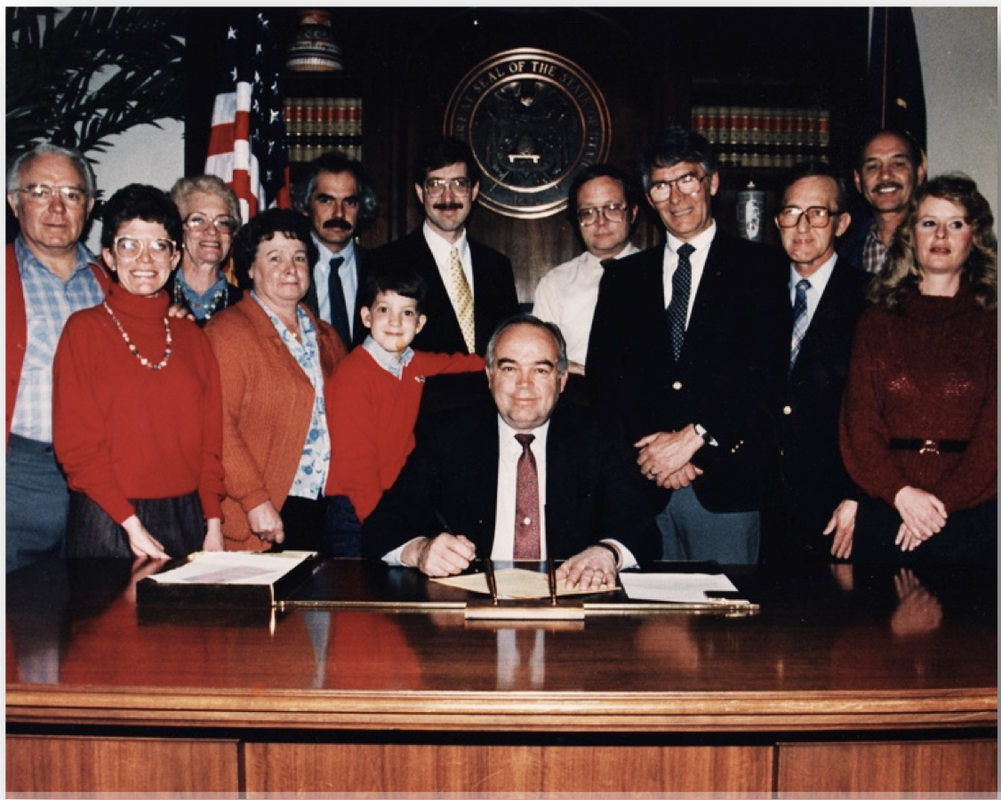
Signing to permit purchase of TTYs for free distribution in 1988. Governor Norman Bangeter sitting. L-R: Lee Shepherd, Kristi Mortensen, Shanna Mortensen, Donna Lee Westberg, Tim Funk (assisted Dave Mortensen on the Hill), Ben Edwards, Mr. Edwards, Roy Cochran, Senator Darrel Renstrom, D-Ogden (He helped passed the SB 101 bill), Dave Mortensen, Art Valdez
Dave went to the United Way in 1978 and got funding to start the first Interpreter Service for the Deaf. UAD was the first to manage Utah's Relay Service. UAD maintained that program for a few years until he went to the Legislature in 1987 and asked for Senate Bill 101 to establish a permanent interpreting service to assist Utah Relay Service (Dave Mortensen, Renae M. White, Don M. Mortensen, and Kristi L. Mortensen, personal communication, April 17, 2009). Dave worked hard at the Utah capitol to get phone surcharges to fund a relay service and TTY distribution program in Utah (Kinney, UAD Bulletin, March 2002).
The idea of awarding outstanding Deaf people in each state came from the 1978 National Association of the Deaf conference. Dave proposed establishing the Golden Hand Award in Utah. In 1979, he received the first Golden Hand Award from the Utah Association of the Deaf. It was supposed to be a paper certificate. Still, he felt a plaque would be more appropriate, and a plaque has been awarded every time since (Dave Mortensen, Renae M. White, Don M. Mortensen, and Kristi L. Mortensen, personal communication, April 17, 2009).
When the National Association of the Deaf asked each state to have a Miss Deaf (State) contestant attend the National Association of the Deaf's centennial year anniversary in 1980 in Cincinnati, Ohio, Dave, as UAD president, implemented the Miss Deaf Utah Pageant in 1979 (Dave Mortensen, Renae M. White, Don M. Mortensen, and Kristi L. Mortensen, personal communication, April 17, 2009).
The idea of awarding outstanding Deaf people in each state came from the 1978 National Association of the Deaf conference. Dave proposed establishing the Golden Hand Award in Utah. In 1979, he received the first Golden Hand Award from the Utah Association of the Deaf. It was supposed to be a paper certificate. Still, he felt a plaque would be more appropriate, and a plaque has been awarded every time since (Dave Mortensen, Renae M. White, Don M. Mortensen, and Kristi L. Mortensen, personal communication, April 17, 2009).
When the National Association of the Deaf asked each state to have a Miss Deaf (State) contestant attend the National Association of the Deaf's centennial year anniversary in 1980 in Cincinnati, Ohio, Dave, as UAD president, implemented the Miss Deaf Utah Pageant in 1979 (Dave Mortensen, Renae M. White, Don M. Mortensen, and Kristi L. Mortensen, personal communication, April 17, 2009).
Dave served on the following committees:
• Public Service Commission on the distribution of TTYs
• Committee on Interpreting
• Utah Relay Committee, as Chairman
• Committee to encourage hospitals to have interpreters for Deaf patients
• Committee to request lawyers to hire interpreters when with a deaf client
• Utah Telecom Directory for several years as editor
Dave had been a strong advocate for the Utah Deaf community. Shanna Christiansen Mortensen received a Presidential Award from the Utah Association for the Deaf in 1995 for her long patience with 22 years of providing much background support to her husband, Dave's service to the Utah Association for the Deaf. Her lifetime membership in the Utah Association for the Deaf was also awarded (UAD Bulletin, July 1995).
• Public Service Commission on the distribution of TTYs
• Committee on Interpreting
• Utah Relay Committee, as Chairman
• Committee to encourage hospitals to have interpreters for Deaf patients
• Committee to request lawyers to hire interpreters when with a deaf client
• Utah Telecom Directory for several years as editor
Dave had been a strong advocate for the Utah Deaf community. Shanna Christiansen Mortensen received a Presidential Award from the Utah Association for the Deaf in 1995 for her long patience with 22 years of providing much background support to her husband, Dave's service to the Utah Association for the Deaf. Her lifetime membership in the Utah Association for the Deaf was also awarded (UAD Bulletin, July 1995).
Dave stated in the September 1996 UAD Bulletin that he retired early at 58 as a "buy-out" from the NAC after 31 years of service. He worked at Valley Mental Health until 1996, when he retired at 65 after 23 years of service. To sum it up, he worked for 54 years; the two jobs overlapped, and Dave spent eight years at the University of Utah studying for his MSW (Mortensen, UAD Bulletin, September 1996). He also spent two years teaching American Sign Language classes at Salt Lake Community College (Dave Mortensen, Renae M. White, Don M. Mortensen, and Kristi L. Mortensen, personal communication, April 17, 2009). In addition, he was President of the UAD for 22 years while working and attending school. Dave felt his time was well spent and stated that many board members helped and deserved as much credit and a pat on the back for their work during those years (Mortensen, UAD Bulletin, September 1996).
Dave was the recipient of the following honors:
• 1972: National Association of the Deaf Award for excellence in cultural achievement news publication
• July 1973: Certification from Registry of Interpreting for the Deaf in reverse interpreting
• August 1976: Certification from Utah Registry of Interpreters for the Deaf in reverse interpreting
• 1976-1979: Certification of Appreciation from Utah State Board of Education for service on the Utah State Advisory Committee
• May 1977: Served as the delegate to the White House Conference on Handicapped Individuals in recognition of dedicated services
• 1979: Utah Association for the Deaf Golden Hand Award
• June 1981: Meritorious Service Award in recognition of valuable service on the Board of UAD
• June 1987: Certification of Appreciation in contribution unlimited time on SB 101
• January 1990: Utah State Committee of Consumer Service for strong consumer advocacy
• March 1990: Utah State Office of Rehabilitation – Coalition for People with Disabilities
• 1993: Guerts/Knowles Outstanding Volunteer Award: in recognition of exemplary service rendered to offenders at the Utah State Prison
• January 1995: F.O.E. Aerie #76 Achievement Award for inspiration, strength, and determination to overcome any obstacles
• July 1998: Award from the National Association of the Deaf Knights of the Flying Fingers
• 1999: Utah Schools for the Deaf and the Blind Legacy Award for USDB Alumni Achievement
• June 2003: Utah Educational Interpreter Award as a deaf community advocate in the field of educational interpreting
Dave received the Distinguished Service Award in September 2007 for his long-term service to the Utah Association for the Deaf, particularly his work with the Utah Legislature. He actively sought their assistance when the majority of his district's senators and representatives were too cowardly or fearful to go out and lobby on matters crucial to the Utah Deaf community. He was able to persuade lawmakers to take notice and learn more about deaf issues in general as a result (UAD Bulletin, October 2007, p. 1 & 5).
Dave was the recipient of the following honors:
• 1972: National Association of the Deaf Award for excellence in cultural achievement news publication
• July 1973: Certification from Registry of Interpreting for the Deaf in reverse interpreting
• August 1976: Certification from Utah Registry of Interpreters for the Deaf in reverse interpreting
• 1976-1979: Certification of Appreciation from Utah State Board of Education for service on the Utah State Advisory Committee
• May 1977: Served as the delegate to the White House Conference on Handicapped Individuals in recognition of dedicated services
• 1979: Utah Association for the Deaf Golden Hand Award
• June 1981: Meritorious Service Award in recognition of valuable service on the Board of UAD
• June 1987: Certification of Appreciation in contribution unlimited time on SB 101
• January 1990: Utah State Committee of Consumer Service for strong consumer advocacy
• March 1990: Utah State Office of Rehabilitation – Coalition for People with Disabilities
• 1993: Guerts/Knowles Outstanding Volunteer Award: in recognition of exemplary service rendered to offenders at the Utah State Prison
• January 1995: F.O.E. Aerie #76 Achievement Award for inspiration, strength, and determination to overcome any obstacles
• July 1998: Award from the National Association of the Deaf Knights of the Flying Fingers
• 1999: Utah Schools for the Deaf and the Blind Legacy Award for USDB Alumni Achievement
• June 2003: Utah Educational Interpreter Award as a deaf community advocate in the field of educational interpreting
Dave received the Distinguished Service Award in September 2007 for his long-term service to the Utah Association for the Deaf, particularly his work with the Utah Legislature. He actively sought their assistance when the majority of his district's senators and representatives were too cowardly or fearful to go out and lobby on matters crucial to the Utah Deaf community. He was able to persuade lawmakers to take notice and learn more about deaf issues in general as a result (UAD Bulletin, October 2007, p. 1 & 5).

W. David Mortensen receives the Distinguished Service Award in September 2007 for his long-term service to the Utah Association for the Deaf, particularly his work with the Utah Legislature. L-R: Robert G. Sanderson, Dave Mortensen, Miss Deaf America, Chelsea, and Utah Association for the Deaf president Rob Kerr
Dave, a long-serving UAD president, was asked in the 1997 UAD Bulletin, "What's ahead for the UAD to be doing?" He responded that, "There are and will be a continuous stream of various matters popping up, matters that might stop our onward movement to achieve more enhancement to the quality of our lives. Looking back on the years I spent as president, it seems it was only yesterday when my work started. I do believe that many achievements were accomplished during my tenure. This doesn't mean that it is the end of the road for me. No, the road we are traveling on has no "Deaf End." He also stated:
"The UAD is a household word among the deaf and hard of hearing community. Why? Issues that improve and enhance the quality of our lives have been brought into reality. There are many more issues that will be worked on in the coming years. The deaf and hard of hearing have always had to work and fight for what they felt was rightfully part of their lives. I cannot keep thinking of how many things that has been brought up, and goals have been set, and work is progressing. We don't always succeed the first time, but we don't give up, either. "Dave had spent a good part of his life, leading the UAD. Whatever had been accomplished during this time, he was proud of it because it benefited everyone, not just a single person. He said, "If I had my life to live again, would I go through it? You bet!" (Mortensen, UAD Bulletin, July 1997, p. 3).
"The UAD is a household word among the deaf and hard of hearing community. Why? Issues that improve and enhance the quality of our lives have been brought into reality. There are many more issues that will be worked on in the coming years. The deaf and hard of hearing have always had to work and fight for what they felt was rightfully part of their lives. I cannot keep thinking of how many things that has been brought up, and goals have been set, and work is progressing. We don't always succeed the first time, but we don't give up, either. "Dave had spent a good part of his life, leading the UAD. Whatever had been accomplished during this time, he was proud of it because it benefited everyone, not just a single person. He said, "If I had my life to live again, would I go through it? You bet!" (Mortensen, UAD Bulletin, July 1997, p. 3).
Dave's interests included gardening, reading, and involvement in the Utah Deaf community. Dave was a member of the Church of Jesus Chris of Latter-day Saints, where he was the Sunday school president for 13 years and a Sunday school instructor and priesthood instructor at Salt Lake Valley Branch, later Ward, beginning in 1971. He worked as a Sunday school and priesthood instructor for 23 years until the Salt Lake Valley Ward split into the 1st and 2nd Wards in September 1998. In addition, Dave Mortensen worked as executive secretary for the Salt Lake Valley 2nd Ward for the Deaf for three years (Dave Mortensen, Renae M. White, Don M. Mortensen, and Kristi L. Mortensen, personal communication, April 17, 2009).
In 2013, Dave was appointed president emeritus by the Utah Association of the Deaf. He succeeded Dr. Robert G. Sanderson, who passed away in February 2012 (Kinney & Kinner, UAD Bulletin, August 2013).
In 2013, Dave was appointed president emeritus by the Utah Association of the Deaf. He succeeded Dr. Robert G. Sanderson, who passed away in February 2012 (Kinney & Kinner, UAD Bulletin, August 2013).
Jodi Becker Kinner, an Utah Deaf community historian, proposed honoring Dave for his exemplary service at the UAD meeting in 2013, and her proposal was approved. On March 29, 2014, a special ceremony was held to unveil Dave's Lifetime Advocacy Award and portrait with brief biography honoring more than 40 years of advocacy contributions to the Utah Deaf community, in collaboration with the UAD Honoring Event Committee, Utah Division of Services to the Deaf and Hard of Hearing, and Utah Association of the Deaf. In addition, over 50 people were served brunch. Speakers at Dave's honoring ceremony included UAD president Philippe Montalette, DSDHH director Marilyn Call, retired USOR executive director Don Uchida, and Valerie G. Kinney, who discussed various aspects of Dave's life from childhood to the present (Kinney, UAD Bulletin, April 2014).
At Dave's honoring ceremony, the DSDHH director, Marilyn Call, praised "his tireless efforts over the years to fight for deaf rights in education, the workplace, interpreting, and medical fields." Dave was overwhelmed by the honor and stated, "His ultimate goal all along was to provide deaf people with equal access to everything hearing people had." His daughter, Kristi, noted, "He is a good reminder for us that when we see a barrier, we need to do something and speak up. We have all kinds of accessibility and technology today. Our lives are much better because of him" (Lee, KSL, March 29, 2014). The plaques, his portrait, and a brief biography are displayed in the Sanderson Community Center museum area for all to see and remember. His work was frequently hidden behind the scenes, but his contributions were significant. Dave had advocated for civil and accessibility rights for the local Deaf community, leaving a valuable legacy for future generations.
Dave passed away on January 20, 2018, in West Jordan, Utah, surrounded by those he loved and loved him in return, at the home of his daughter Kristi Lee Mortensen (Obituary for Warren David Mortensen).
Dave passed away on January 20, 2018, in West Jordan, Utah, surrounded by those he loved and loved him in return, at the home of his daughter Kristi Lee Mortensen (Obituary for Warren David Mortensen).
Did You Know?
Ron Nelson, Kristi Mortensen's husband, explained in the September 2003 UAD Bulletin that USDB Superintendent Boyd E. Nelson is his great-uncle (his father's uncle). Boyd Nelson only stayed with USDB for a few years before moving to New Jersey as State Superintendent of Schools (Nelson, UAD Bulletin, September 2003).
Note
Dave Mortensen, Renae M. White, Don M. Mortensen, and Kristi L. Mortensen, e-mail message to Jodi Becker Kinner, April 17, 2009.
Robert Sanderson & Valerie G. Kinney, e-mail message to Jodi Becker Kinner, July 8, 2011.
Robert Sanderson & Valerie G. Kinney, e-mail message to Jodi Becker Kinner, July 8, 2011.
References
“Awards Presented at the Banquet.” UAD Bulletin, vol. 19.2 (July 1995): 3.
“Governor’s Commission Honors Deaf Woman.” UAD Bulletin, vol. 26.1 (June 2002): 1.
Green, Mark. Utah man honored for lifetime of work with people who are deaf. Fox13. (March 29, 2014).http://fox13now.com/2014/03/29/utah-man-honored-for-lifetime-of-work-with-people-who-are-deaf/
“Highlights of UAD Board Meeting.” UAD Bulletin, vol. 23.6 (November 1999): 5.
Kinney, Valerie. “Utah Deaf Trivia.” UAD Bulletin, vol. 25.10 (March 2002): 3.
Kinney, Valerie and Kinner, Jodi. “W. David Mortensen Becomes President Emeritus.” UAD Bulletin, vol, 37 - 03 (August 2013): 1.
Kinney, Valerie. Dave Mortensen Horning Unveiling. UAD Bulletin, vol. 37-11. (April 2014): 1.
Lee, Jason. “Utah man honored for being decades-long 'voice' of state's deaf community.” (March 29, 2014). http://www.ksl.com/?nid=148&sid=29264903#6A8qmCTxLrrA4jrp.99
McEntee, Marni. “Social Work has an insider’s view of the problems growing up deaf.” Deseret News, June 26, 1986.
Mortensen, Dave. “UAD President’s Message.” UAD Bulletin, vol. 20.4 (September 1996): 4.
Mortensen, Dave. “The Grand Banquet.” UAD Bulletin, vol. 21.1 (July 1997): 3.
Mortensen, Kristi. “The Grand Banquet.” UAD Bulletin, vol. 21.1 (July 1996): 3.
Nelson, Ron. “President’s Message.” UAD Bulletin, vol. 27.4 (September 2003): 2.
Obituary for Warren David Mortensen.
“Prestigious Awards Given During UAD Conference.” UAD Bulletin, vol. 31.5 (October 2007): 1 & 5.
“W. David Mortensen.” UAD Bulletin, Vol. 11, No. 2 (July 1976): 2.
“Governor’s Commission Honors Deaf Woman.” UAD Bulletin, vol. 26.1 (June 2002): 1.
Green, Mark. Utah man honored for lifetime of work with people who are deaf. Fox13. (March 29, 2014).http://fox13now.com/2014/03/29/utah-man-honored-for-lifetime-of-work-with-people-who-are-deaf/
“Highlights of UAD Board Meeting.” UAD Bulletin, vol. 23.6 (November 1999): 5.
Kinney, Valerie. “Utah Deaf Trivia.” UAD Bulletin, vol. 25.10 (March 2002): 3.
Kinney, Valerie and Kinner, Jodi. “W. David Mortensen Becomes President Emeritus.” UAD Bulletin, vol, 37 - 03 (August 2013): 1.
Kinney, Valerie. Dave Mortensen Horning Unveiling. UAD Bulletin, vol. 37-11. (April 2014): 1.
Lee, Jason. “Utah man honored for being decades-long 'voice' of state's deaf community.” (March 29, 2014). http://www.ksl.com/?nid=148&sid=29264903#6A8qmCTxLrrA4jrp.99
McEntee, Marni. “Social Work has an insider’s view of the problems growing up deaf.” Deseret News, June 26, 1986.
Mortensen, Dave. “UAD President’s Message.” UAD Bulletin, vol. 20.4 (September 1996): 4.
Mortensen, Dave. “The Grand Banquet.” UAD Bulletin, vol. 21.1 (July 1997): 3.
Mortensen, Kristi. “The Grand Banquet.” UAD Bulletin, vol. 21.1 (July 1996): 3.
Nelson, Ron. “President’s Message.” UAD Bulletin, vol. 27.4 (September 2003): 2.
Obituary for Warren David Mortensen.
“Prestigious Awards Given During UAD Conference.” UAD Bulletin, vol. 31.5 (October 2007): 1 & 5.
“W. David Mortensen.” UAD Bulletin, Vol. 11, No. 2 (July 1976): 2.
John "Jack" F. White, Athletic Leader
For more than 40 years, John "Jack" F. White had been a figure in Utah sports. He held every office in the Northwest Athletic Association of the Deaf, but his years as a player, coach, manager, and athletic director for the Utah Athletic Club of the Deaf (UCAD) teams are best remembered. He also held practically all of the UCAD's offices and was a loyal supporter of the club and community. He had been a delegate to national tournaments for the American Athletic Association of the Deaf five times. Jack's commitment to the sporting climate and sportsmanship has made an unforgettable mark on many people's lives.
Edited by Dan V. Mathis, a Deaf grandson of John F. White
Gary L. Leavitt, a Deaf student at the University of Utah at the time, wrote a paper for his history class called "The Silent Sportsmanship: John "Jack" F. White" in 2005
Gary L. Leavitt, a Deaf student at the University of Utah at the time, wrote a paper for his history class called "The Silent Sportsmanship: John "Jack" F. White" in 2005
John F. White was known to the Utah Deaf community as "Jack." He was born to Fredrick John Scranton White from England and Ruth Glass from Salt Lake City, Utah, on July 19, 1910. It has been said that the doctor did not properly grasp his head during Jack's delivery, putting a severe strain on the ear's nerves, and he subsequently became Deaf. His parents tried to find medical assistance to restore his hearing but to no avail. There was no "treatment" to make it happen. Jack remained deaf all his life, creating a unique legacy enriched with challenges, opportunities, and fulfillment.
Jack's early exposure to language was through the medium of "home signs," a type of non-standardized sign language developed by the family to be used in their home. During the first few years of his life, being an active and curious boy, Jack acquired his language through this "home sign" system. He did not learn formal sign language until he enrolled at the Utah School for the Deaf (USD) in Ogden, Utah, at the age of seven in 1917, where he lived daily, going home only on odd weekends and during holidays. He quickly acquired mastery of sign language from his teachers and his peers.
While a student at USD, Jack's interest in and love for sports grew, thanks to his eventual brother-in-law, Charles Fowkes, Vida's brother. Charles, a much older adolescent, challenged him when he was only a young teenager to participate in school's sports activities, or he would be thrown into the swimming pool. As a result, Jack became a sports enthusiast with great athletic ability and knowledge of the games; he joined the basketball, baseball, and football teams for USD.
While a student at USD, Jack's interest in and love for sports grew, thanks to his eventual brother-in-law, Charles Fowkes, Vida's brother. Charles, a much older adolescent, challenged him when he was only a young teenager to participate in school's sports activities, or he would be thrown into the swimming pool. As a result, Jack became a sports enthusiast with great athletic ability and knowledge of the games; he joined the basketball, baseball, and football teams for USD.
In 1930, Wayne E. Stewart, the student captain of the basketball team, wrote a report about the team's success. Their record may have been 4-13, but they had done their best. Jack had contributed 12 points during the season, only playing in six games.
The following year, Jack became captain of the basketball and football teams. For the basketball team, he wrote the reports for the ensuing season. He had a knack for sports writing, and his skill only improved with further reportage. His team had the most successful season until that time: nineteen victories, six losses. The team was cohesive and strong for the Ogden school. Jack himself contributed 145 points within the span of those twenty-four games.
If Jack had been "mainstreamed," chances are he would not have gotten to play the sports he loved so much. At that time, deafness was looked upon very negatively, and because of communication barriers, most coaches would not have given a Deaf student fresh off the street a chance to play for the team. In addition, the communication system that needed to be developed to bring a Deaf student into play was usually thought to be overwhelming and a waste of time for most hearing sports enthusiasts, or so it would seem.
The following year, Jack became captain of the basketball and football teams. For the basketball team, he wrote the reports for the ensuing season. He had a knack for sports writing, and his skill only improved with further reportage. His team had the most successful season until that time: nineteen victories, six losses. The team was cohesive and strong for the Ogden school. Jack himself contributed 145 points within the span of those twenty-four games.
If Jack had been "mainstreamed," chances are he would not have gotten to play the sports he loved so much. At that time, deafness was looked upon very negatively, and because of communication barriers, most coaches would not have given a Deaf student fresh off the street a chance to play for the team. In addition, the communication system that needed to be developed to bring a Deaf student into play was usually thought to be overwhelming and a waste of time for most hearing sports enthusiasts, or so it would seem.
Jack was a quarterback on the football team. USD was fortunate to have his experience and leadership on the team. He often passed the football field at Ogden High School, where the school's football team would practice and hold their games. He knew his team needed a good challenge, so he approached the coach of the Ogden High School team to discuss a possible scrimmage between the hearing and Deaf teams. Back then, the USD football team did not have regular uniforms or protective gear like what Ogden High School's team had. Instead, they wore thick long-sleeve shirts, jeans, homemade cleats, and deep pegs for the game. Although the Deaf team was smaller than the high school team, the Deaf players developed physical strength through USD's vocational training programs. Therefore, the Ogden High School team seemed to have a greater advantage. To the chagrin of the hearing team, the Deaf team proved to be stronger, more cohesive, and a worthy opponent of their hearing counterparts, winning the scrimmage game, 20-16. With all the practice and rivalry between the two teams, Ogden High School that year parlayed the drills into their victory: they took the state championship in 1932.
At USD, Jack learned to become a printer and a Linotype operator. He graduated from USD in 1932. One of his earliest jobs was working for the University of Utah Printing Press. Before landing the job there, he approached the press boss about working in the press. He offered two weeks of work without pay to prove he had all the skills and was a hard worker. The boss agreed, and two weeks passed. He was impressed with Jack's work. He decided to hire him. With the training and experience he had gained through school and the workplace, Jack was offered a job in Salt Lake City with the Newspaper Agency Corporation. He was not alone in those years when he worked with the NAC. There were a total of twelve Deaf people working with him at the agency. By the time 1987 rolled around with the freight-train advance of technology, the NAC had seen many changes. Linotypes had gone the way of the horse and buggy, and the computer was the order of the day. Computer literacy became a modern and required skill that many Deaf printers didn't have, and the workforce was eventually reduced from twelve to three of those long-time workers. Jack retired in 1987 at 77, after a career of 55 years in the printing industry and 42 years in the NAC, to be specific.
After graduating from USD and moving to the Salt Lake area, Jack found he had a lot of time on his hands. The school year was over, and marriage was not a pressing issue for him. His work occupied merely eight hours a day. At home, under the feet of his parents, he needed to do something. His attention and focus turned to the "other love of his life": sports. His initial interest in sports remained strong. In 1932, no sports activity per se was organized for the deaf, so Jack set out to rectify this. Through his ingenuity and persistence, he founded the Salt Lake Silent Club. He eventually held the posts of player, coach, and manager of the organization.
Soon after Jack's graduation, he had a slew of girlfriends, but one particular lady caught his eye from the Utah School for the Deaf: Vida Fowkes, whom he married in the Salt Lake LDS Temple on October 31, 1938. Their marriage lasted 67 years until Jack died in 2005. They had three children: two daughters and one son. While raising their family, the whole household communicated in sign language, and all three children signed before they spoke. The eldest child, Carol, has a son named Dan V. Mathis, who is also deaf like his grandparents. The entire family of Jack and Vida, through their youngest great-grandchild, has used or learned to use some sign language. Another interesting family note: Vida Fowkes and Kenneth C. Burdett, a long-time teacher and administrator of the Utah School for the Deaf, were first cousins.
Soon after Jack's graduation, he had a slew of girlfriends, but one particular lady caught his eye from the Utah School for the Deaf: Vida Fowkes, whom he married in the Salt Lake LDS Temple on October 31, 1938. Their marriage lasted 67 years until Jack died in 2005. They had three children: two daughters and one son. While raising their family, the whole household communicated in sign language, and all three children signed before they spoke. The eldest child, Carol, has a son named Dan V. Mathis, who is also deaf like his grandparents. The entire family of Jack and Vida, through their youngest great-grandchild, has used or learned to use some sign language. Another interesting family note: Vida Fowkes and Kenneth C. Burdett, a long-time teacher and administrator of the Utah School for the Deaf, were first cousins.
Getting friends to play competitive games was a real challenge at first. Jack would go to apply for his team's league membership. Many hearing people thought this was a joke! Deaf people in sports? Sure, they could play other deaf teams, but why do the deaf play the hearing? Not all hearing people were ready for that one. Finally, the Silent Club was accepted into a league with the help of some wise and understanding folks at the Salt Lake County Parks and Recreation Division. Jack personally would counsel and coach the referees on how the deaf would be watching him for signals throughout the game and what signs meant. Since most of the referees had some ability to signal with game-related signs, the transition appeared to be a smooth one. Jack would go on to step up basketball games between the Silent Club and other hearing teams in the area. The Silent Club continued its illustrious career until the summer of 1945.
1945 brought news of a sports federation operating out of Los Angeles: the Far West Athletic Association of the Deaf. At the same time, the American Athletic Association of the Deaf was founded in Washington, D.C. Jack informed his group of an upcoming tourney in Los Angeles, California, and the fees that would be involved to go and play in that invitational.
Only some things went as smoothly as one might imagine. Jack informed four of his team's best players about the tourney, only to find later that the L.A. Deaf Club team had convinced all four to move to Los Angeles, find better jobs than they had in Utah, and become part of their team! Jack was furious at this theft (or "betrayal") and decided this blow would not defeat him, so he went around to eight other people at the club whose skills at basketball were not quite as good as the four members who had defected. He raised a team for the tournament in a relatively short time.
1945 brought news of a sports federation operating out of Los Angeles: the Far West Athletic Association of the Deaf. At the same time, the American Athletic Association of the Deaf was founded in Washington, D.C. Jack informed his group of an upcoming tourney in Los Angeles, California, and the fees that would be involved to go and play in that invitational.
Only some things went as smoothly as one might imagine. Jack informed four of his team's best players about the tourney, only to find later that the L.A. Deaf Club team had convinced all four to move to Los Angeles, find better jobs than they had in Utah, and become part of their team! Jack was furious at this theft (or "betrayal") and decided this blow would not defeat him, so he went around to eight other people at the club whose skills at basketball were not quite as good as the four members who had defected. He raised a team for the tournament in a relatively short time.
When it came time to go to the tournament, more problems arose. Many of the eight needed help to afford transportation, housing, and food for such a trip from Salt Lake City and back. Jack, out of his faith in the team and his love for the sport and its accompanying competition, took about $200.00 out of his savings to pay for the expenses incurred on the trip. The team did their best, winning the consolation trophy for their 2-1 record. A good showing for a recently constructed team!
After the tournament in 1945, Jack returned home to organize the Utah Athletic Club for the Deaf, signaling the demise of the Silent Club. In 1947, the Utah team, which Jack still coached, drove to Oakland's second FAAD tournament. The FAAD officers asked him to organize the 1948 FAAD tournament in Salt Lake City as president of UACD. He organized new committees to arrange parties, dinners, and raffles to help build up their UACD fund for the tournament. He rented the old Deseret Gym for $200 for two nights. Finally, they had enough money to pay for transportation for other teams. The tournament was a big success.
After the tournament in 1945, Jack returned home to organize the Utah Athletic Club for the Deaf, signaling the demise of the Silent Club. In 1947, the Utah team, which Jack still coached, drove to Oakland's second FAAD tournament. The FAAD officers asked him to organize the 1948 FAAD tournament in Salt Lake City as president of UACD. He organized new committees to arrange parties, dinners, and raffles to help build up their UACD fund for the tournament. He rented the old Deseret Gym for $200 for two nights. Finally, they had enough money to pay for transportation for other teams. The tournament was a big success.
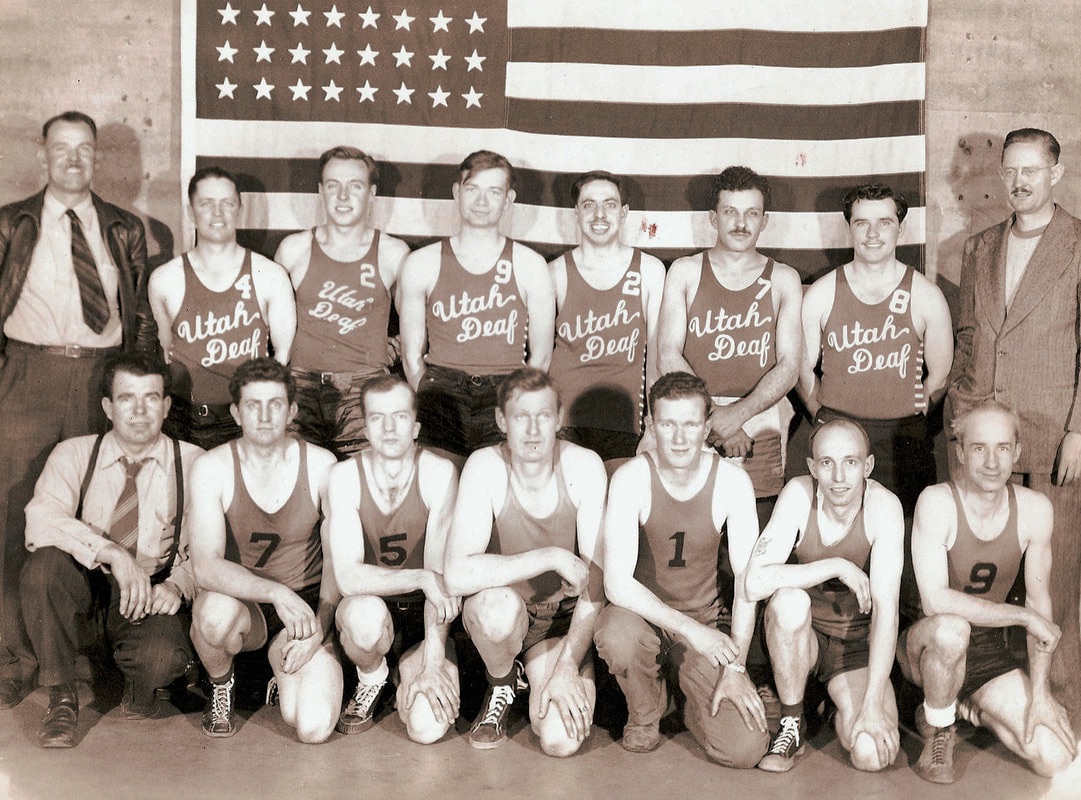
The 1947 Utah Athletic Club for the Deaf Tournament in Oakland, California. Front Row: Coach (Joseph Burdett?), #7 Earl Smith (His son, Evern Smith was a hearing interpreter), #5 Paul Wood, (hidden number) player?, # 1 player ?, ,(hidden number) player ?, # 9 John F. White. Back Row: Coach (Joseh Burnett), #4 player? , # 2 player?, # 9 Bruce Eyre, # 2 Eugene Plumby, #7 player ?, # 8 Shirley Barney (person with mustache), Ross Thurston (what is his #)?
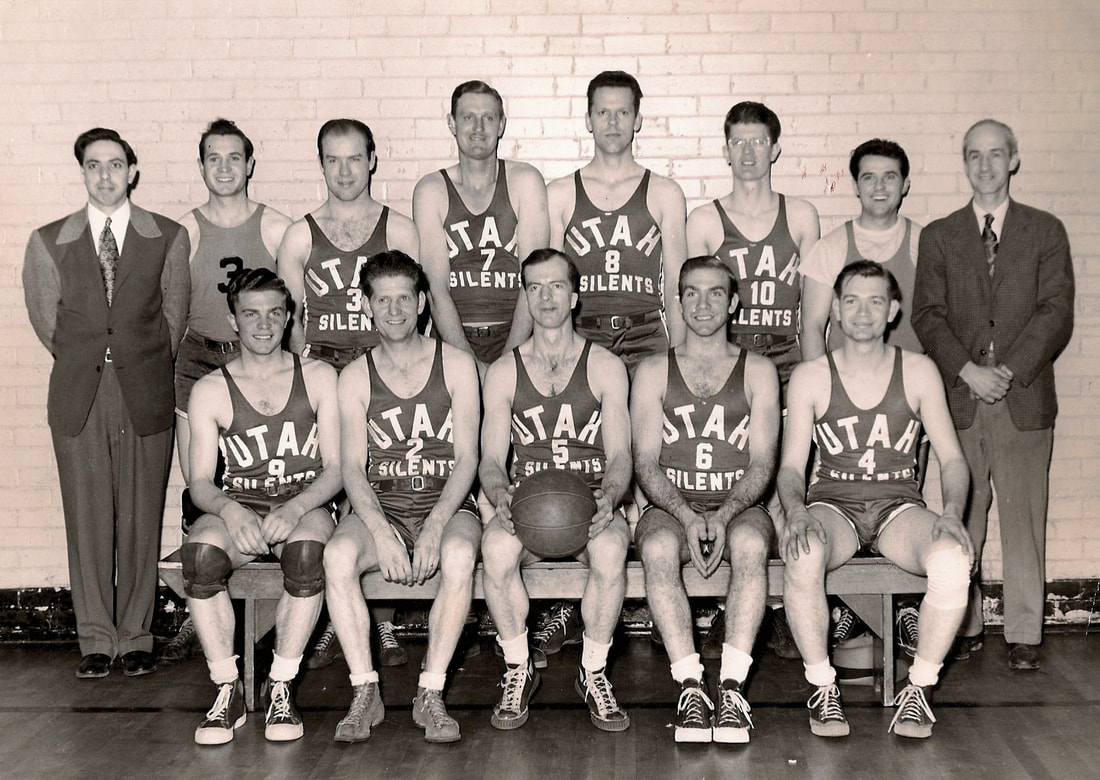
The 1948 Utah Athletic Club for the Deaf. Front Row: #9 Dicky Bess, #2 player, #5 player, #6 player #4 Kenneth Caraveau, Back Row: Coach? Paul Wood (#?), Kirk Allred (#?), Bruce Eyre (#?), #3 player, #7 player, #8 player, #10 Lloyd Perkins,?, ?, Phil Thorston, Don Jacob Shirley standing, Eugene Barney, John F. White, Plumby
The group competed with mainly hearing teams until around 1956 when a new organization emerged: the Northwest Athletic Association of the Deaf. The NWAAD comprised Deaf teams from Northern California, Oregon, Washington, Idaho, Montana, and Utah. No longer were the Deaf teams forced to play their hearing counterparts. Now they could compete against each other and become a force unto themselves in the athletic world.
The UACD continued to contend with hearing teams through the Monday Night Sports Program with the Salt Lake County Recreation Department. While the teams in the Deaf circuit, the Far West Athletic Association of the Deaf, the Northwest Athletic Association of the Deaf, and the American Athletic Association of the Deaf, were deaf only. Individual teams could compete against whomever they wished.
Taking the championship at the 11th annual NWAAD games in San Francisco, California, the UACD proved they were a definite force to be reckoned with. Jack ensured that this team adhered to all of the NWAAD's rules, which worked in their favor. When the UACD went up against the team from Oakland, the games were very well played, but the game was later forfeited in favor of the Utah team. Oakland had too many team members on the floor at one time, which was declared to violate NWAAD regulations.
Jack, at that time, was manager for the UACD, chief fund-raiser, and overall enthusiastic promoter for the club. Using his natural link to his work at the newspaper and the publicity the club could afford, Jack began putting out visual all-points bulletins to raise funds to send the deaf champions to the AAAD national tourney in Philadelphia, Pennsylvania. This would be the first trip for a Utah team to that national meet. In honor of their bravery, the team was awarded the 1964 "Sportsmanship Trophy."
Taking the championship at the 11th annual NWAAD games in San Francisco, California, the UACD proved they were a definite force to be reckoned with. Jack ensured that this team adhered to all of the NWAAD's rules, which worked in their favor. When the UACD went up against the team from Oakland, the games were very well played, but the game was later forfeited in favor of the Utah team. Oakland had too many team members on the floor at one time, which was declared to violate NWAAD regulations.
Jack, at that time, was manager for the UACD, chief fund-raiser, and overall enthusiastic promoter for the club. Using his natural link to his work at the newspaper and the publicity the club could afford, Jack began putting out visual all-points bulletins to raise funds to send the deaf champions to the AAAD national tourney in Philadelphia, Pennsylvania. This would be the first trip for a Utah team to that national meet. In honor of their bravery, the team was awarded the 1964 "Sportsmanship Trophy."
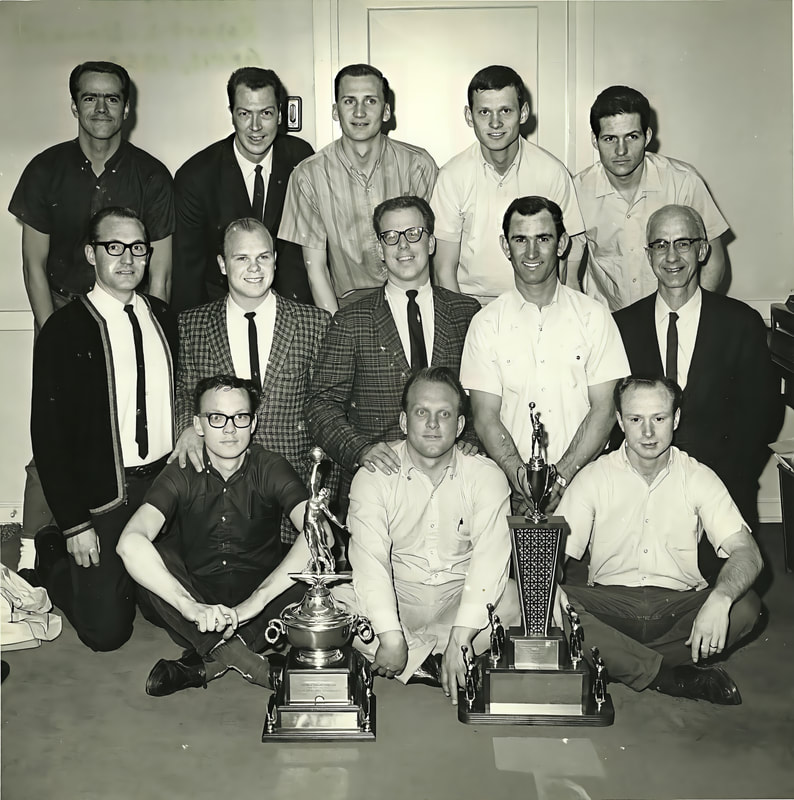
Members of the Utah Athletic Club for the Deaf, district champs of Northern Athletic Association, pose with trophies: front from left, Roy Cochran, Roy Milborn, Carl Obson, middle: Bruce Harvey, Ronald Perkins, Leon Curtis, coach: Ed Bell, John F. White, manager: back, Norman Williams, Robert Bonnell, Jay Christensen, Eric Przybyla, and John Murray. UAD Bulletin, February 1964
Jack was invited to continue his involvement on a national level. Five times he was elected as a delegate to the AAAD games in the capacity of a member of their administrative body. In the course of his fifth time as a delegate, he placed his bid for the opportunity to host the 1977 AAAD games in Salt Lake City. The bid was accepted with rousing support.
The 33rd annual American Association of the Deaf national basketball tournament materialized in Salt Lake City in 1977, the first ever held in Utah. In the program of the events at this meet, a special dedication to John F. White and Rodney W. Walker is found, honoring these two for their many years of dedication and service to the promotion of sports among the Deaf on a national level.
Jack wore three hats during the 1977 tournament. Not only did he serve as regional president, but he was also the coach for the UACD and secretary to the administrative committee. With all the work involved and not many people volunteering to shoulder the massive workload, Jack vowed, "Never again!" The out-of-pocket funds alone stretched the Salt Lake City team and its supporters to the maximum. With Jack's competent leadership and management skills, the tournament was somewhat of a Pyrrhic victory: it was a definite coup for the UACD, but the expenditure of money and manpower almost made it not worth the effort!
The 33rd annual American Association of the Deaf national basketball tournament materialized in Salt Lake City in 1977, the first ever held in Utah. In the program of the events at this meet, a special dedication to John F. White and Rodney W. Walker is found, honoring these two for their many years of dedication and service to the promotion of sports among the Deaf on a national level.
Jack wore three hats during the 1977 tournament. Not only did he serve as regional president, but he was also the coach for the UACD and secretary to the administrative committee. With all the work involved and not many people volunteering to shoulder the massive workload, Jack vowed, "Never again!" The out-of-pocket funds alone stretched the Salt Lake City team and its supporters to the maximum. With Jack's competent leadership and management skills, the tournament was somewhat of a Pyrrhic victory: it was a definite coup for the UACD, but the expenditure of money and manpower almost made it not worth the effort!
The competition (not competition) between the Deaf teams and other teams continued. Finally, in 1982, Jack had his first turn at many future awards. In the January 25, 1982, edition of the Salt Lake Tribune, John Mooney interviewed the Deaf inductee to the NWAAD Hall of Fame for his byline, Sports Mirror.
For his many years of dedication and leadership, Jack was feted and made a member of this distinguished group of Deaf sportspeople.
In 1991, the Utah Association for the Deaf recognized Jack for his lifetime of work and support of his community. The inscription on the plaque with which he was awarded reads as follows: Utah Association for the Deaf, President's Award, given to John F. White for his many years of service to the Utah Deaf Community.
With his advancing age and myriad health concerns, Jack retired from sports in 1992. Even then, his interest in sports was unflagging. Two years later, in 1994, Jack was inducted into the National Hall of Fame at the AAAD Golden Anniversary National Basketball Tournament in Akron, Ohio. He was one of the six inductees.
During the Utah Athletic Club of the Deaf 50th Anniversary Celebration on September 27, 1997, Jack received a UACD Sportsmanship Award for his lifetime contribution to sports activities for the Deaf.
For his many years of dedication and leadership, Jack was feted and made a member of this distinguished group of Deaf sportspeople.
In 1991, the Utah Association for the Deaf recognized Jack for his lifetime of work and support of his community. The inscription on the plaque with which he was awarded reads as follows: Utah Association for the Deaf, President's Award, given to John F. White for his many years of service to the Utah Deaf Community.
With his advancing age and myriad health concerns, Jack retired from sports in 1992. Even then, his interest in sports was unflagging. Two years later, in 1994, Jack was inducted into the National Hall of Fame at the AAAD Golden Anniversary National Basketball Tournament in Akron, Ohio. He was one of the six inductees.
During the Utah Athletic Club of the Deaf 50th Anniversary Celebration on September 27, 1997, Jack received a UACD Sportsmanship Award for his lifetime contribution to sports activities for the Deaf.
Jack had been active in Utah sports for more than 40 years. He held all offices in the NWAAD but was best remembered for his years as a player, coach, manager, and athletic director of UACD teams. He also held nearly all the offices of the UACD and had always been a stalwart booster of the club and community. In addition, he had been an AAAD delegate five times to national tournaments.
Jack's contribution to the climate of sports and sportsmanship has left an indelible mark on the lives of many. Within not only the Deaf community in Utah but nationwide, here is a hitherto untold story for all sports-minded people of one who changed the face of sports not only for the Deaf but for the lives of many hearing people as well.
Jack's contribution to the climate of sports and sportsmanship has left an indelible mark on the lives of many. Within not only the Deaf community in Utah but nationwide, here is a hitherto untold story for all sports-minded people of one who changed the face of sports not only for the Deaf but for the lives of many hearing people as well.
Jack's life included being a dedicated husband to Vida and a devoted father to Carol, Jack, and Sherri. He loved to see his grandchildren's and great-grandchildren's successful life endeavors in academics and athletics. Other than spending time with family, his passions were reading newspapers (especially the sports section), attending Utah Jazz and University of Utah football and basketball games, having pets (cats and dogs), doing yard work, and traveling. He was also an active member of The Church of Jesus Christ of Latter-day Saints and held several callings and positions serving in the Deaf congregation.
Jack passed away on December 23, 2005, at 95, in his hometown, Salt Lake City, Utah.
Jack passed away on December 23, 2005, at 95, in his hometown, Salt Lake City, Utah.
Note
Dan V. Mathis, e-mail message to Jodi Becker Kinner, July 1, 2009.
Reference
Leavitt, Gary L. "The Silent Sportsmanship: John "Jack" F. White" for the history course at the University of Utah, 2005.
Rodney W. Walker, Spiritual Leader
Rodney W. Walker had been involved in the Utah Deaf community for quite some time. He was the president of the Utah Association of the Deaf, a delegate to the National Association of the Deaf, president of the Utah Athletic Club of the Deaf, president of the Northwest Athletic Association of the Deaf, and national chairman of the American Athletic Association of the Deaf basketball tournament in Salt Lake City. He was also a member of the National Fraternal Society of the Deaf Salt Lake City Division No. 56, United Utah Organizations of the Deaf, and Gallaudet University Alumni Association's Beehive Chapter.
Rodney W. Walker was born deaf at home in Driggs, Idaho, on February 23, 1914, to parents Chester Bryon Walker and Ada Sheets Wilson. Emerson, his older brother, was also deaf. Emerson died at five from a ruptured appendix in 1917, leaving Rodney (not necessarily as) the family's only Deaf member. He and his family created and used in-home signs to communicate. As a child, he experienced isolation (Walker, 2006). Rodney stated in an interview with LDS Church News, "My family used some minimal home signs, but I often felt a lack of full communication" (First Sealer Serving in Salt Lake Temple, LDS Church News, August 8, 1998).
He couldn't understand his teacher or hearing classmates while attending a public school near his home. So it was decided that he would attend a special school. Rodney was five years old when his parents and a friend drove him from Driggs, Idaho, to Ogden, Utah, in their family's 1916 Cadillac touring car. He learned the manual alphabet and signs from his classmates (Walker, 2006).
He couldn't understand his teacher or hearing classmates while attending a public school near his home. So it was decided that he would attend a special school. Rodney was five years old when his parents and a friend drove him from Driggs, Idaho, to Ogden, Utah, in their family's 1916 Cadillac touring car. He learned the manual alphabet and signs from his classmates (Walker, 2006).
He did not learn the gospel until he was 11 when he attended the Ogden Branch for the Deaf of The Church of Jesus Christ of Latter-day Saints. At the time, students over ten, residents of the Main Building, and members of The Church of Jesus Christ of Latter-day Saints attended the Ogden Branch for the Deaf. As a result, Rodney held various church positions, including deacon and priest. In addition, he participated in Young Men's Mutual Improvement Association classes and activities (Walker, 2006).
Rodney's close friend, Joseph B. Burnett, who had just finished his first year at Gallaudet College, inspired him to attend there after he graduated from USD in 1933. He applied for post-graduate work at USD, where he would study the subjects needed for the Gallaudet College entrance exam. During the school year 1933-34, he worked as a boy supervisor while studying for the exam. Despite passing the exam, he was concerned about his ability to succeed because of his English challenges. He decided not to let this deter him from enrolling at Gallaudet College and went (Walker, 2006).
In the fall of 1936, he reunited with USD alumni Ned Wheeler, John Glassett, Dolores Atkinson, Earl Jones, Earl Rogerson, Robert Sanderson, Robert Lewis, Verl Thorup, and Kyle Workman. In his "My Life Story" book, he proudly stated, "It was the highest number of Utahns who were at Gallaudet College, the number never surpassed since then" (Walker, 2006).
Rodney was a member of the Kappa Gamma Fraternity, the football, basketball, and track teams, the Kappa Gamma Fraternity Dance, and the Football Homecoming Dance at Gallaudet. He was at Gallaudet for five years. He earned a Bachelor of Science degree in math and chemistry in 1939 (Walker, 2006). Rodney was unable to attend The Church of Jesus Christ of Latter-day Saints during his five years at Gallaudet due to limited Deaf services (First Sealer serving in Salt Lake Temple, LDS Church News, August 8, 1998).
Rodney returned to Utah after graduating from Gallaudet College and working as a data integrator for the American Smelting and Refining Company for 38 years. He retired in 1978 (Walker, 2006).
Rodney married Georgia Hendricks in the Salt Lake Temple on October 22, 1940. They had two sons, Rodney Dale and Richard Gary. Georgia passed away on July 2, 1988. Rodney married Joan Patricia (Pat) Seegmiller at the Jordan River Temple on September 16, 1989. Pat was well-connected to the Deaf community through her son, Nathan Van De Graaf, and her late Deaf father, Carlos Seegmiller (Walker, 2006).
During an interview with the LDS Church News in 1998, Rodney responded by explaining how he became involved in church capacities, as follows:
"In the early 1940s, George Hill, general superintendent of the Sunday School, once asked Rodney: "As a Deaf man, where do you go to church? How many deaf, regardless of religion, live in Salt Lake City?" Rodney decided to do an informal statistical survey of the Deaf in Salt Lake City and their status in the church. The results of the survey found its way to the General Authorities of the Church. In 1948, the Sunday School of the Deaf was organized into the Salt Lake Valley Branch for the Deaf. Interestingly, the branch was first considered a foreign language branch. There, Rodney was called as branch Sunday School teacher. Several months later, the branch was transferred to the Salt Lake Park Stake and a priesthood quorum was organized. He served as a quorum instructor and counselor in the Young Men's Mutual Improvement Association. The first ward of the Deaf, the Salt Lake Valley Ward for the Deaf, was created in 1971. He later served as bishop of this ward and the Salt Lake Park Stake High Council for thirteen years" (LDS Church News).
In addition, Rodney worked at the Jordan River and Salt Lake Temples. He credited his deep involvement in the LDS Church to his first wife, Georgia (Walker, 2006).
"In the early 1940s, George Hill, general superintendent of the Sunday School, once asked Rodney: "As a Deaf man, where do you go to church? How many deaf, regardless of religion, live in Salt Lake City?" Rodney decided to do an informal statistical survey of the Deaf in Salt Lake City and their status in the church. The results of the survey found its way to the General Authorities of the Church. In 1948, the Sunday School of the Deaf was organized into the Salt Lake Valley Branch for the Deaf. Interestingly, the branch was first considered a foreign language branch. There, Rodney was called as branch Sunday School teacher. Several months later, the branch was transferred to the Salt Lake Park Stake and a priesthood quorum was organized. He served as a quorum instructor and counselor in the Young Men's Mutual Improvement Association. The first ward of the Deaf, the Salt Lake Valley Ward for the Deaf, was created in 1971. He later served as bishop of this ward and the Salt Lake Park Stake High Council for thirteen years" (LDS Church News).
In addition, Rodney worked at the Jordan River and Salt Lake Temples. He credited his deep involvement in the LDS Church to his first wife, Georgia (Walker, 2006).
Rodney, in addition to his church responsibilities, was elected president of the Utah Association of the Deaf at the 1948 convention, succeeding E. Ross Thurston. During his first year as president, he encountered numerous issues with Deaf peddlers selling "Manual Alphabet" cards, including a message with "pity" words on the back. The peddlers sold the cards by passing them to people and then returning to collect money. They would then vanish (Walker, 2006). According to President Walker, "activities of the sympathy peddlers" pose a "problem for the honest and respectful deaf people of Utah, and that the merchandise they offer is sold for more than it is worth" (Salt Lake Telegram, March 31, 1949).
Out-of-state Deaf peddlers and imposters were becoming more active in Utah towns, posing a problem for the honest and respectful Deaf people of Utah and the United States. President Walker states, "Utah is becoming known among deaf peddlers as an easy place to make money, which goes against the pride of all honest, hard-working deaf people everywhere" (Deaf Peddlers and Imposters, 1949). Thus, on April 5, 1949, he issued a warning in the Salt Lake Telegram entitled "Give Them a 49 Helping Hand, Not a Handout" against "out-of-state" deaf peddlers and imposters" who had recently been active in Salt Lake City, Ogden, and other towns in Utah (Salt Lake Telegram, April 5, 1949). He urged that tax dollars be spent on maintaining the Utah School for the Deaf and Gallaudet College to educate Deaf people and assist them in becoming respectable citizens of Utah and the United States. Many Deaf people had met the public's expectations of becoming an asset, with good jobs, families, and homes (Bulletin, April 1, 1949; Deaf Peddlers and Imposters, 1949).
Out-of-state Deaf peddlers and imposters were becoming more active in Utah towns, posing a problem for the honest and respectful Deaf people of Utah and the United States. President Walker states, "Utah is becoming known among deaf peddlers as an easy place to make money, which goes against the pride of all honest, hard-working deaf people everywhere" (Deaf Peddlers and Imposters, 1949). Thus, on April 5, 1949, he issued a warning in the Salt Lake Telegram entitled "Give Them a 49 Helping Hand, Not a Handout" against "out-of-state" deaf peddlers and imposters" who had recently been active in Salt Lake City, Ogden, and other towns in Utah (Salt Lake Telegram, April 5, 1949). He urged that tax dollars be spent on maintaining the Utah School for the Deaf and Gallaudet College to educate Deaf people and assist them in becoming respectable citizens of Utah and the United States. Many Deaf people had met the public's expectations of becoming an asset, with good jobs, families, and homes (Bulletin, April 1, 1949; Deaf Peddlers and Imposters, 1949).
Peddlers would occasionally appear in Salt Lake City and other Utah towns. Some peddlers could hear and pretended to be deaf people to gain sympathy and make quick money. Deaf Utah residents were dissatisfied with the situation. Finally, President Walker and the association agreed that the Deaf peddlers were physically capable of working and earning their own money without the aid of others (Walker, 2006).
In April 1949, President Walker launched a campaign against professional panhandlers. UAD, in collaboration with the Utah Division of the National Fraternal Society of the Deaf, issued a public education campaign to stop professional Deaf peddlers' activities. Rodney W. Walker, president of UAD, John Palmer, president of the NFSD's Salt Lake Division No. 56, and Robert Welsh, president of the NFSD's Ogden Division No. 127, wrote an article titled "Do Not Give Money to Deaf Peddlers and Imposters" (Rodney, Palmer, & Welsch, The Bulletin, April 15, 1949).
President Walker also wrote an article about Deaf peddlers and mailed a copy to each newspaper publisher in most of Utah's counties. Some newspapers responded to his request by printing the articles.
Despite the publications, a few peddlers continued to beg for money in the Salt Lake City area. They avoided contact with any Deaf people because they were aware that UAD was against their practice of soliciting easy money, whereas they could work hard to earn their living (Walker 2006).
In April 1949, President Walker launched a campaign against professional panhandlers. UAD, in collaboration with the Utah Division of the National Fraternal Society of the Deaf, issued a public education campaign to stop professional Deaf peddlers' activities. Rodney W. Walker, president of UAD, John Palmer, president of the NFSD's Salt Lake Division No. 56, and Robert Welsh, president of the NFSD's Ogden Division No. 127, wrote an article titled "Do Not Give Money to Deaf Peddlers and Imposters" (Rodney, Palmer, & Welsch, The Bulletin, April 15, 1949).
President Walker also wrote an article about Deaf peddlers and mailed a copy to each newspaper publisher in most of Utah's counties. Some newspapers responded to his request by printing the articles.
Despite the publications, a few peddlers continued to beg for money in the Salt Lake City area. They avoided contact with any Deaf people because they were aware that UAD was against their practice of soliciting easy money, whereas they could work hard to earn their living (Walker 2006).
Fast forward to 1998, when Rodney, an 84-year-old descendant of Utah pioneers, was named the first Deaf temple sealer, according to the LDS Church News. Members were overjoyed when it was announced at the Salt Lake Park Stake conference, which included the Salt Lake Valley Ward for the Deaf, that Rodney had been called a Deaf Sealer (LDS Church News).
Rodney shared that in 1997, Salt Lake Temple President Carlos E. Asay envisioned a full Deaf program at the temple, including a Deaf sealer. A patron can receive the full beauty of the temple ordinances by using sign language (LDS Church News). He was a temple sealer until his death in 2007.
During the LDS Church News interview, Rodney stated that his first interest in genealogy began when he returned from Gallaudet College in 1935. While staying at his uncle's house, he was shown his uncle's pedigree charts, which dated back to the late 1200s. Rodney gradually invested his energy in the John Walker Family Organization after being appointed to the committee on September 14, 1947. Rodney was a major contributor to the book "Ancestry and Descendants of John Walker," published by this organization in 1953. He eventually became the executive secretary and worked tirelessly for the organization, writing the newsletter, maintaining the current addresses of over 4,300 family members, and compiling five books of family history (LDS Church News). He was the only Deaf officer of the John Walker Family Organization and spoke at the World Conference on Records in 1981 (UAD Bulletin, July 1981).
Rodney shared that in 1997, Salt Lake Temple President Carlos E. Asay envisioned a full Deaf program at the temple, including a Deaf sealer. A patron can receive the full beauty of the temple ordinances by using sign language (LDS Church News). He was a temple sealer until his death in 2007.
During the LDS Church News interview, Rodney stated that his first interest in genealogy began when he returned from Gallaudet College in 1935. While staying at his uncle's house, he was shown his uncle's pedigree charts, which dated back to the late 1200s. Rodney gradually invested his energy in the John Walker Family Organization after being appointed to the committee on September 14, 1947. Rodney was a major contributor to the book "Ancestry and Descendants of John Walker," published by this organization in 1953. He eventually became the executive secretary and worked tirelessly for the organization, writing the newsletter, maintaining the current addresses of over 4,300 family members, and compiling five books of family history (LDS Church News). He was the only Deaf officer of the John Walker Family Organization and spoke at the World Conference on Records in 1981 (UAD Bulletin, July 1981).
Rodney reported collecting over 16,000 names of his ancestors, and he was a distant cousin of Priscilla Burdett's first husband, Earl Rogerson (Walker, 2006). Rodney's wife, Pat, mentioned in the LDS Church News that he typed the John Walker Family Organization letter, had it printed, folded, and stapled, and sorted the letters by ZIP code. His work was truly "a labor of love" (LDS Church News). At a family reunion, he was showered with gratitude for his tireless efforts. Pat stated, "This is his way of bonding with his family." "He does it on his own," she added. "If others try to help, they interrupt his smoothly oiled system" (LDS Church News).
Rodney was a dependable spiritual, social, and sports leader (Dr. Robert Sanderson & Valerie Kinney, personal communication, July 8, 2011). He had long been involved in the Utah Deaf community. He was president of the Utah Association for the Deaf, a delegate to the National Association of the Deaf, the National Fraternal Society of the Deaf, president of the Utah Athletic Club of the Deaf, president of the Northwest Athletic Association of the Deaf, and national chairman of the American Athletic Association of the Deaf basketball tournament in Salt Lake City. He also joined the Salt Lake City Division No. 56 of the National Fraternal Society of the Deaf, United Utah Organizations of the Deaf, and the Beehive Chapter of the Gallaudet University Alumni Association (Walker, 2006). Norma Matheson, wife of Utah Governor Scott Matheson, presented him with the Golden Key Award for his outstanding achievement on May 22, 1981. The award was presented on behalf of the Governor's Committee on Handicapped Employment (UAD Bulletin, July 1981).
After teaching an American Sign Language class at Salt Lake Community College since 1990, he received the college's Teaching Excellence Award in 1992. His award was inducted into the UAD Hall of Fame (UAD Bulletin, March 1993; Walker, 2006). Rodney was one of five instructors chosen from 500 adjunct instructors for the award (UAD Bulletin, July 1992). In addition, he received the Golden Hand Award for community service at the UAD conference in 1993 (UAD Bulletin, July 1993, p. 3).
Rodney passed away on August 2, 2007. He shaped himself into a man to be admired and loved. He had accomplished much; he never stopped working, giving, serving, and helping, and he never complained (Walker, 2006; Patricia Walker, personal communication, November 25, 2008).
Rodney passed away on August 2, 2007. He shaped himself into a man to be admired and loved. He had accomplished much; he never stopped working, giving, serving, and helping, and he never complained (Walker, 2006; Patricia Walker, personal communication, November 25, 2008).
Did You Know?
Carlos Watson Seegmiller, Joan Patricia Seegmiller's father, was the first Deaf graduate of Utah State University, where he earned a degree in structural engineering and architecture. He was a highway draftsman for the United States Bureau of Public Roads for 30 years. He also worked as a cartographic and landscape draftsman for the Forest Services for seven years (UAD Bulletin, July 1992).
Notes
Patricia Walker, e-mail message to Jodi Becker Kinner, November 25, 2008.
Robert Sanderson & Valerie Kinney, e-mail message to Jodi Becker Kinner, July 8, 2011.
Robert Sanderson & Valerie Kinney, e-mail message to Jodi Becker Kinner, July 8, 2011.
References
“Beggars: Group Launches Campaign Against Professional Panhandlers.” Deseret News, April 5, 1949.
“Beggar Warning Sounded in S.L.” Salt Lake Telegram, March 31, 1949.
“CONGRATULATIONS.” UAD Bulletin, v. 16, no. 2, (July 1992): 1.
“Deaf Peddlers and Imposters.” 1949.
“Do Not Give to Deaf Peddlers And Imposters.” The Bulletin, April 1, 1949.
“First Sealer Serving in Salt Lake Temple.” Deseret News, August 8, 1988. http://www.ldschurchnews.com/articles/31252/Deaf-sealer-serving-in-Salt-Lake-Temple.html
“Golden Hand Award.” UAD Bulletin, vol. 18, no. 2 (July 1993): 3.
“Golden Key Award Goes to Rodney Walker.” UAD Bulletin, vol. 5, no. 2 (July 1981): 4.
“This Month’s Profile: Rodney Walker.” UAD Bulletin, vol. 17, no. 10 (March 1993): 8.
“To A Greater Glory.” UAD Bulletin, v. 16, no. 2 (July 1992): 5.
Walker, Rodney W., Palmer, John, & Welsh, Robert. “Do Not Give Money to Deaf Peddlers and imposters.” The Bulletin,April 15, 1949.
Walker, Rodney, W. My Life Story, 2006.
“Beggar Warning Sounded in S.L.” Salt Lake Telegram, March 31, 1949.
“CONGRATULATIONS.” UAD Bulletin, v. 16, no. 2, (July 1992): 1.
“Deaf Peddlers and Imposters.” 1949.
“Do Not Give to Deaf Peddlers And Imposters.” The Bulletin, April 1, 1949.
“First Sealer Serving in Salt Lake Temple.” Deseret News, August 8, 1988. http://www.ldschurchnews.com/articles/31252/Deaf-sealer-serving-in-Salt-Lake-Temple.html
“Golden Hand Award.” UAD Bulletin, vol. 18, no. 2 (July 1993): 3.
“Golden Key Award Goes to Rodney Walker.” UAD Bulletin, vol. 5, no. 2 (July 1981): 4.
“This Month’s Profile: Rodney Walker.” UAD Bulletin, vol. 17, no. 10 (March 1993): 8.
“To A Greater Glory.” UAD Bulletin, v. 16, no. 2 (July 1992): 5.
Walker, Rodney W., Palmer, John, & Welsh, Robert. “Do Not Give Money to Deaf Peddlers and imposters.” The Bulletin,April 15, 1949.
Walker, Rodney, W. My Life Story, 2006.
Ned C. Wheeler, Conservative Leader
Ned C. Wheeler founded the Utah Scholarship Foundation for the Deaf. He oversaw the fund and gave out scholarships with the assistance of a governance board from 1975 until his death in 1981. The Ned C. Wheeler Scholarship Foundation for the Deaf was renamed shortly after his death. Before his retirement in 1980, Ned worked as a civil engineer for Ogden for 40 years. Ned was a member and chairman of the Governor's Advisory Council for the Utah Schools for the Deaf and Blind from 1968 until 1981. Ned also served on the National Association of the Deaf's Ways and Means Committee from 1966 to 1968. He was the convention chairman for the 1968 National Association of the Deaf Conference in Las Vegas. He was even the National Fraternal Society of the Deaf's Grand Western Vice President. He was elected to the Gallaudet College Board of Trustees in 1972.
Ned C. Wheeler was born hearing in Ogden, Utah, on March 1, 1915. His parents were L. Claude Wheeler and Vera Royle (Standard-Examiner, December 11, 1981). When he was in seventh grade, he, age 13, lost his hearing due to spinal meningitis. After two years of trying to make it in public schools, he gave up and enrolled at the Utah School for the Deaf in Ogden, Utah, in 1931, where he thrived socially and academically in sign language. He graduated in 1934. Ned explained in the interview that mainstreaming offers nothing to people who are deaf, even those with late adventitious deafness. It is not comparable to a good deaf program at our school (Peterson, The Deaf American, September 1976).
Ned attended Gallaudet College for three years (Gallaudet University Alumni Cards, 1866-1959). He went home in the spring of 1937 and married Edith Deininger of Wisconsin on November 23, 1937. They were parents of three children: two daughters and one son. It is believed that Ned did not return to Gallaudet College due to the 1930s Great Depression (Edith Wheeler, private interview with Valerie G. Kinney, March 9, 2009; Peterson, The Deaf American, September 1976).
While at Gallaudet College, Ned studied architecture. When he left college, there was no work in the architecture field. He eventually landed a drafting position with the Forest Service in the civil engineering field. Ned finally obtained a bachelor's degree in civil engineering from the University of Utah. After graduating, he worked as a draftsman in the City Engineering Department. He usually interacted orally at work. He also relied on the pad and pencil for all important communications. He taught some of his employees sign language. Ned noted that they go on to better jobs when they become proficient in sign language, demonstrating that those with strong learning skills can always improve themselves (Peterson, The Deaf American, September 1976).
Ned founded and operated Engineering Consultant, Inc. from 1948 until 1967 (R.W.T., The Utah Eagle, February 1973, p. 3). He managed on the side of his city position through Engineering Consultant, Inc. He was in charge of the city's engineering office staff and handled every engineering design appropriately. This included building sewers, water systems, distribution lines, roadway improvements, street surfacing, and all park improvements (Peterson, The Deaf American, September 1976).
As previously stated, Ned started as a draftsman and then as a design engineer for the engineering division before being promoted to office engineer in 1962. He has worked in various drafting and engineering positions for the county and the city since 1938 (R.W.T., The Utah Eagle, February 1972, p. 3).
As previously stated, Ned started as a draftsman and then as a design engineer for the engineering division before being promoted to office engineer in 1962. He has worked in various drafting and engineering positions for the county and the city since 1938 (R.W.T., The Utah Eagle, February 1972, p. 3).
Ned worked as a civil engineer for Ogden City for 40 years before retiring in 1980. He has been a member of the American Society of Civil Engineers since 1950. In 1974, the Ogden City Council recognized him as an Outstanding Public Employee (The Ogden Standard-Examiner, December 11, 1981).
Outside of work, Ned was also involved on a local and national level in the following positions:
- Member of the Utah Association of the Deaf Board of Directors,
- Member of the Ways and Means Committee of the National Association of the Deaf
- Convention Chairman for the 1968 National Association of the Deaf Conference in Las Vegas, Nevada
- Chairman of the Governor's Advisory Council for the Utah Schools for the Deaf and the Blind
- Grand Western Vice President of the National Federal Society of the Deaf and
- Member of the Gallaudet College Board of Directors (The Utah Eagle, February 1972; Peterson, The Deaf American, September 1976).
In the interview with Gene Peterson for The Deaf American magazine in 1976, Ned expressed a strong interest in the National Fraternal Society of the Deaf and was a significant figure in establishing the Ogden Frat Division. He indicated that he truly believed in the need for this organization for the deaf since attending his first convention in Chicago in 1951 and a sense of potential for the Frat to promote the Deaf community (Peterson, The Deaf American, September 1976).
Edith, Ned's wife, was also successful in her own right. She worked for the Weber County Recorder's Office for 20 years after raising their family, rising to a responsible supervisory position while always ready and willing to support Ned in his advocacy on behalf of the Deaf community (Peterson, The Deaf American, September 1976).
Edith, Ned's wife, was also successful in her own right. She worked for the Weber County Recorder's Office for 20 years after raising their family, rising to a responsible supervisory position while always ready and willing to support Ned in his advocacy on behalf of the Deaf community (Peterson, The Deaf American, September 1976).
Ned was a conservative leader (Dr. Robert Sanderson & Valerie G. Kinney, personal interview, July 8, 2011). Ned was a notable leader from the 1940s until his death in 1981. He gave a lot of his free time to various organizations. Locally, he served as president of the Utah Association of the Deaf for three years and as chairman of the Board of Directors for 15 years (Valerie G. Kinney, personal communication, March 9, 2009). According to "The Deaf Education History in Utah," Ned was a member and chairman of the Governor's Advisory Council to the Utah Schools for the Deaf and the Blind from 1968 to 1981. While chairman of the Governor's Advisory Council in 1970, he was the instrument in replacing the "Y" System with the Two-Track Program, designed to give parents the option of choosing between oral and total communication. At the time, the "Y" System policy in 1962 required all students in the Primary Department to begin in the oral program and couldn't transfer to the Simultaneous Communication Division unless they had "failed" the oral program by the age of 11 or 6th grade.
While advocating for deaf education in Utah in 1976, Ned shared in the interview that there had been a lot of mainstreaming during the past few years. Nonetheless, it appears that the younger generation, despite graduating from a so-called "talking" high school, quickly joined the Utah Deaf community to fulfill their social lives. He'd also not met someone who didn't want to hang out with signing deaf individuals outside of school. He saw that mainstream deaf individuals had joined the Frat for social growth since they had not had the necessary education 'to make a go of it in the flight for daily bread' (Peterson, The Deaf American, September 1976, p. 4). His firsthand experience of losing his hearing and attending public schools made him more likely to understand the challenges faced by Deaf students in a mainstream setting, driving him to advocate for deaf education in Utah.
While advocating for deaf education in Utah in 1976, Ned shared in the interview that there had been a lot of mainstreaming during the past few years. Nonetheless, it appears that the younger generation, despite graduating from a so-called "talking" high school, quickly joined the Utah Deaf community to fulfill their social lives. He'd also not met someone who didn't want to hang out with signing deaf individuals outside of school. He saw that mainstream deaf individuals had joined the Frat for social growth since they had not had the necessary education 'to make a go of it in the flight for daily bread' (Peterson, The Deaf American, September 1976, p. 4). His firsthand experience of losing his hearing and attending public schools made him more likely to understand the challenges faced by Deaf students in a mainstream setting, driving him to advocate for deaf education in Utah.
The 1982 Utahn Yearbook stated, "He was an inspiration to the USDB's students, patrons, and staff." Ned and his wife, Edith, were always interested in the school and strove to make it better. In addition to his prestigious accomplishments, he was always willing to get involved in the small day-to-day problems of the school. The week of his death in 1981, Ned had planned to help organize a museum for the school" (Utahn, 1982). We would have our own museum at the Utah School for the Deaf if he hadn't died. Unfortunately, this did not happen.
Ned was informed on January 27, 1972, that Gallaudet College had unanimously elected him to serve on the Board of Directors, starting on January 20, 1972. It was a great honor for Ned, Utah School for the Deaf, and the State of Utah, that he was chosen to serve on the board of his alma mater, the Utah School for the Deaf. He became the first Utahn to serve on the most important governing body of the world's only liberal arts college. This was one of the greatest honors given to a former USD student. Dr. Robert G. Sanderson and Celia May Laramie Baldwin, both USD graduates, were appointed to Gallaudet's first nine-person Board of Fellows, making the school even more proud (The Utah Eagle, February 1972).
From 1975 until his death in 1981, Ned, as the founder of the Utah Scholarship Foundation for the Deaf, supervised the fund and scholarship awards through a governance board. Following his death, the scholarship foundation was renamed the Ned C. Wheeler Scholarship Foundation for the Deaf (Edith Wheeler, private interview with Valerie G. Kinney, March 9, 2009).
Despite his busy schedule, he found time to hold high rank in his Ogden Branch for the Deaf. Traveling and woodworking were two of his favorite hobbies. When his children were young, he made wooden toys for each of them for Christmas. He made a grandfather clock for Edith before he died (The Utah Eagle, February 1972). He also enjoyed fishing, camping, golfing, and bowling (Edith Wheeler, private interview with Valerie G. Kinney, March 9, 2009).
Despite his busy schedule, he found time to hold high rank in his Ogden Branch for the Deaf. Traveling and woodworking were two of his favorite hobbies. When his children were young, he made wooden toys for each of them for Christmas. He made a grandfather clock for Edith before he died (The Utah Eagle, February 1972). He also enjoyed fishing, camping, golfing, and bowling (Edith Wheeler, private interview with Valerie G. Kinney, March 9, 2009).
Notes
Edith Wheeler, private interview with Valerie G. Kinney, March 9, 2009.
Robert Sanderson & Valerie G. Kinney, e-mail message to Jodi Becker Kinner, July 8, 2011.
Valerie G. Kinney, e-mail message to Jodi Becker Kinner, March 9, 2009.
Robert Sanderson & Valerie G. Kinney, e-mail message to Jodi Becker Kinner, July 8, 2011.
Valerie G. Kinney, e-mail message to Jodi Becker Kinner, March 9, 2009.
References
Peterson, Gene. "Ned Wheeler, Engineer...With Gene Peterson." The Deaf American, vol. 29, no. 1 (September 1976). 3-5.
R.W.T. “Gallaudet Board Gets USD Grad.” The Utah Eagle, Vol. 83, No. 5 (February 1972): 3.
The Utahn Yearbook, 1982.
R.W.T. “Gallaudet Board Gets USD Grad.” The Utah Eagle, Vol. 83, No. 5 (February 1972): 3.
The Utahn Yearbook, 1982.
G. Leon Curtis, Outgoing Leader
G. Leon Curtis was a well-known hard-of-hearing LDS member both in Utah and across the country. He was president of the Utah Association of the Deaf from 1965 to 1968. During the 1965 Utah State Legislature session, he lobbied the legislature for proper deaf adult services under the Office of Rehabilitation Services, which eventually led to the founding of the Sanderson Community Center of the Deaf and Hard of Hearing. In 1985, Leon and his wife, Connie's oldest daughter, Susan Ann, starred as a young hearing girl named Margaret with deaf parents in the film "Love is Never Silent," in which prominent parts were portrayed by Ed Waterstreet and Phyllis Frelich, both veteran members of the National Theatre for the Deaf.
G. Leon Curtis was born hearing to Guy A. Curtis and Agnes Rasmussen on Labor Day, September 3, 1932, at Dee Memorial Hospital in Ogden, Utah. He was the youngest of the five children. His siblings were Afton, Von, Dan, and Max. He was told that Afton, his Deaf sister, prayed and begged for a baby sister. When he and his mother returned home from the hospital, Afton saw him and fell in love. They had been very close since then (Leon Curtis, personal communication, February 7, 2009).
Leon's parents brought him to Dee Memorial Hospital in 1938 for a tonsillectomy. When the surgeon removed his adenoids, he cut too deeply, which damaged his hearing. His hearing loss was not even acknowledged when he failed the second-grade spelling test at Madison Elementary School. His teacher brought him to an audiologist, who tested his hearing. Leon Curtis had hearing loss, according to a private communication from February 7, 2009.
Leon, like his Deaf sister Afton, attended the Utah School for the Deaf in Ogden in 1940, where Afton and her husband, Kenneth C. Burdett, worked as teachers (Leon Curtis, personal communication, February 7, 2009).
In 1946, he began his day at Central Junior High School and progressed to Ogden High School. He went to the Utah School for the Deaf every afternoon. He graduated from Ogden High School in 1951 (Leon Curtis, personal communication, February 7, 2009).
Leon, like his Deaf sister Afton, attended the Utah School for the Deaf in Ogden in 1940, where Afton and her husband, Kenneth C. Burdett, worked as teachers (Leon Curtis, personal communication, February 7, 2009).
In 1946, he began his day at Central Junior High School and progressed to Ogden High School. He went to the Utah School for the Deaf every afternoon. He graduated from Ogden High School in 1951 (Leon Curtis, personal communication, February 7, 2009).
Leon studied pharmacy at the University of Utah in 1952. He had difficulty deciding whether to study pharmacy or forestry service at Utah State University. In the end, he went to the pharmacy. His father had a heart attack in 1953, so he couldn't continue his education at the University of Utah. He decided to start a printing business at that time (Leon Curtis, personal communication, February 7, 2009).
In 1954, Leon graduated from Nashville, Tennessee's Southern School of Printing. He first worked for the Salt Lake Tribune in Salt Lake City, Utah. Later, he worked for the Ogden Standard-Examiner in Ogden, Utah (Leon Curtis, personal communication, February 7, 2009).
Leon was a member of The Church of Jesus Christ of Latter-day Saints and taught seminary at the Ogden Branch for the Deaf from 1961 to 1968. From the Utah School for the Deaf, the students walked two blocks to their 6:30 a.m. class. Many of these students were able to go on a mission after finishing their education program (Leon Curtis, personal communication, February 7, 2009). Leon was the Deaf Seminary's first hard of hearing teacher. In 1968, he began teaching with the assistance of J. Wayne Noble and Stephen Mecham. His leadership taught the gospel orally, in sign language, and Braille. Each class had about fifteen people sign up for it, and he taught it at the branch until 1969 when he quit and returned to Weber State College (George, -, Leon Curtis, personal communication, 2013).
After Max W. Woodbury, president of the Ogden Branch for the Deaf for 51 years, was released from the position, Leon was called branch president in 1968. He had two counselors, Kenneth L. Kinner and William Ronald Johnston, and a clerk, Arvel H. Christensen (The Ogden Standard Examiner, February 4, 1967; The UAD Bulletin, Winter 1967). He was president for one year when he decided to return to college in 1969 (Leon Curtis, personal communication, February 7, 2009).
In 1972, Leon attended Weber State University and got a bachelor's degree in sociology and psychology. He earned a Master of Science in Rehabilitation Counseling from the University of Arizona in Tucson, Arizona, in 1973. He also has a special degree in management, which he got from San Diego State University in 1990 (Leon Curtis, personal communication, February 7, 2009).
After Leon graduated from the University of Arizona, he worked as a school counselor for six years at the Arizona School for the Deaf. During that time, he was also an assistant football coach. In 1976, their team won the state championship for the first time in the school's history (Leon Curtis, personal communication, February 7, 2009).
After Leon graduated from the University of Arizona, he worked as a school counselor for six years at the Arizona School for the Deaf. During that time, he was also an assistant football coach. In 1976, their team won the state championship for the first time in the school's history (Leon Curtis, personal communication, February 7, 2009).
At the end of 1979, Leon was hired as the state coordinator for the deaf at the Department of Social and Health Services in Olympia, Washington. As the program grew from two to twelve staff members, he became the director of the Office of the Deaf and Hard of Hearing. He was one of only three of the 12,000 people who work at DSHS to get an award. He retired from the Office of the Deaf and Hard of Hearing in October 2004. This office is part of the State Government Department of Social and Health Services (Leon Curtis, personal communication, February 7, 2009).
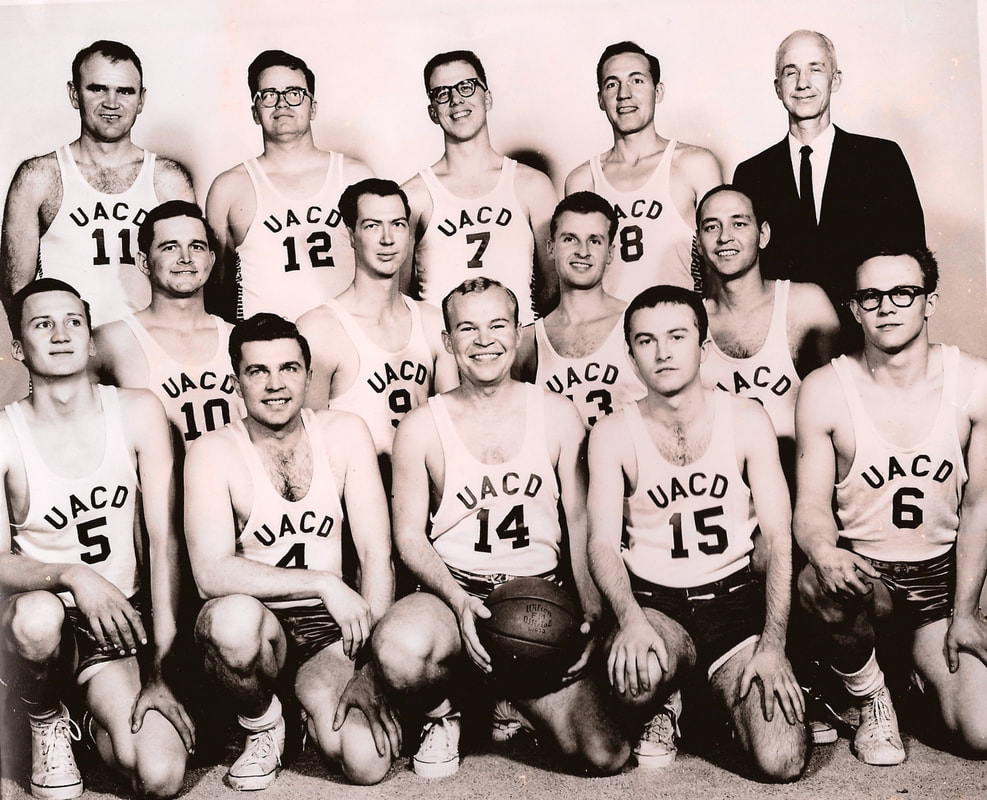
The Utah Athletics Club of the Deaf team at the Northwest Athletic Association of the Deaf Tournament in Salt Lake City, Utah in 1962. Front row L-R: R: .J. Christensen, R. Bess, R. Potter, K. Stewart, R. Kerr; 2nd Row L-R: R. Johnston, R. Bonnell, V. Jones, A. Valdez; 3rd row, L-R: R. Loveland, K. Nelson, L. Curtis, B. Harvey, John F. White (manager/coach)
Leon was very involved in sports like basketball and softball from 1954 to 1972. He also held different jobs for the Northwest Athletic Association of the Deaf (NWAAD) and the American Athletic Association of the Deaf (AAAD). NWAAD and AAAD inducted him into the Hall of Fame in 1983 and 1988, respectively (Leon Curtis, personal communication, February 7, 2009).

1964 UCAD Basketball Team. District champs of Northern Athletic Association, pose with trophies: front from left, Roy Cochran, Roy Milborn, Carl Obson, middle: Bruce Harvey, Ronald Perkins, Leon Curtis, coach: Ed Bell, John White, manager: back, Norman Williams, Robert Bonnell, Jay Christensen, Eric Przybyla, and John Murray. The UAD Bulletin, February 1964
Leon was a well-known Deaf Latter-day Saint in Utah, just as he was national. Leon said that from 1965 to 1968, he was president of the Utah Association of the Deaf. He was the UAD's treasurer from 1956 to 1963 and secretary for two years. During the 1965 Utah State Legislature session, he and other UAD officers pushed for better services for Deaf adults through the Office of Rehabilitation Services. This eventually led to the establishment of the Sanderson Community Center for the Deaf and Hard of Hearing (Curtis, UAD Bulletin, Spring 1965; Sanderson, 2004). He was president of the Arizona Association of the Deaf from 1976 to 1979 (Leon Curtis, personal communication, February 7, 2009).
Later, Leon served as a board member for Region 4 on the NAD Board of Directors from 1984 to 1990 and again from 1996 to 2004. He received the Golden Hand Award from the Washington State Association of the Deaf in 2001 and the Golden Hand Award and the Flying Fingers Award from the National Association of the Deaf in 2002 (Leon Curtis, personal communication, February 7, 2009).
Later, Leon served as a board member for Region 4 on the NAD Board of Directors from 1984 to 1990 and again from 1996 to 2004. He received the Golden Hand Award from the Washington State Association of the Deaf in 2001 and the Golden Hand Award and the Flying Fingers Award from the National Association of the Deaf in 2002 (Leon Curtis, personal communication, February 7, 2009).
The Mayor of Lacey chose Leon to be a City of Lacey Planning Commission member from 1993 to 1997. In addition, the city hired an interpreter to help him work well with other commission members (Leon Curtis, personal communication, February 7, 2009).
Leon was the keynote speaker at the UAD Convention in 1997. During his speech, he recalled his memories of living in Utah before moving away. The National Association of the Deaf was very impressed with what the Utah Association of the Deaf had done in Utah, according to Leon (K. Mortensen, UAD Bulletin, July 1997, p. 3). Kristi Mortensen, a UAD Convention attendee, told us about some of the best parts of Leon's speech at the end, which she said were:
"EVERYBODY wants it,
ANYBODY can do it.
SOMEBODY had to do it, but
So
EVERYBODY will not get it,
ANYBODY cannot do it,
SOMEBODY won't do it,
Because
NOBODY is willing to do it" (D. Mortensen, UAD Bulletin, July 1997, p. 3)
Leon was the keynote speaker at the UAD Convention in 1997. During his speech, he recalled his memories of living in Utah before moving away. The National Association of the Deaf was very impressed with what the Utah Association of the Deaf had done in Utah, according to Leon (K. Mortensen, UAD Bulletin, July 1997, p. 3). Kristi Mortensen, a UAD Convention attendee, told us about some of the best parts of Leon's speech at the end, which she said were:
"EVERYBODY wants it,
ANYBODY can do it.
SOMEBODY had to do it, but
So
EVERYBODY will not get it,
ANYBODY cannot do it,
SOMEBODY won't do it,
Because
NOBODY is willing to do it" (D. Mortensen, UAD Bulletin, July 1997, p. 3)
Leon, then director of Washington State's Office of the Deaf and Hard of Hearing, received the Governor's Distinguished Management Leadership Award in 2003. According to the letter he received:
"…outstanding managers are invaluable assets to state government, and this award offers special recognition to those who have demonstrated excellence in the performance of their responsibilities. Your leadership, initiative, and expertise reflect your strong commitment to public service and your quality management abilities."
Leon was honored at the Governor's Mansion on June 4 of that year. He retired in August after 23 years of service (UAD Bulletin, June 2003, p. 3).
"…outstanding managers are invaluable assets to state government, and this award offers special recognition to those who have demonstrated excellence in the performance of their responsibilities. Your leadership, initiative, and expertise reflect your strong commitment to public service and your quality management abilities."
Leon was honored at the Governor's Mansion on June 4 of that year. He retired in August after 23 years of service (UAD Bulletin, June 2003, p. 3).
Leon had five daughters. He had Sonia and Rebecca (Becky) from his first marriage to Eleanor Kay Kinner and Susan, Marie, and Sherrie from his second marriage to Connie Perkins. They have fifteen grandchildren and nine great-grandchildren (Leon Curtis, February 7, 2009, personal communication).
Susan Ann, Leon and Connie's eldest daughter starred as young Margaret, a young hearing girl with Deaf parents, in the 1985 film "Love is Never Silent." Ed Waterstreet and Phyllis Frelich, both longtime members of the National Theatre for the Deaf, played Margaret's parents. From the 1930s to the late 1960s, the film was an emotional drama that lasted over 30 years. "Love Is Never Silent" was nominated for an Emmy and aired as a Hallmark Hall of Fame special (Corry, 1985; UAD Bulletin, December 2006, p. 4).
Susan Ann, Leon and Connie's eldest daughter starred as young Margaret, a young hearing girl with Deaf parents, in the 1985 film "Love is Never Silent." Ed Waterstreet and Phyllis Frelich, both longtime members of the National Theatre for the Deaf, played Margaret's parents. From the 1930s to the late 1960s, the film was an emotional drama that lasted over 30 years. "Love Is Never Silent" was nominated for an Emmy and aired as a Hallmark Hall of Fame special (Corry, 1985; UAD Bulletin, December 2006, p. 4).
Leon wrote a poem called "Can't Hear, But..." about his feelings about being deaf in 1991. It was published in the National Association of the Deaf's main publication, the NAD Broadcaster.Leon wrote a poem called "Can't Hear, But..." about his feelings about being deaf in 1991. It was published in the National Association of the Deaf's main publication, the NAD Broadcaster.
Can’t Hear, But... By G. Leon Curtis
But I can feel...
I can’t hear the dog yelp when I step on its foot,
But I can feel the dog’s bite on my leg, or see the dog hopping around the room in pain.
I can’t hear the knocks in the motor of my car, but I can feel the rough vibration.
I can’t hear the words my daughters say on the telephone, but I can feel that they speak in a nice way.
I can’t hear my daughter’s voice in the chorus, or playing the piano, but I can feel the happiness and peace.
I can’t hear the loudness on the TV, but I can feel the vibration a few minutes later or someone will come and turn it down.
But I can see...
I can’t hear the car’s honks, but I can see the red faced angry driver behind me.
I can’t hear the doorbell, but I can see my dog barking at the door, or light blinking off and on.
I can’t hear the words, but I can see the written/printed words.
I can’t hear the man behind me asking for the time, but I can see his serious look on his face as I turn around.
I can’t hear the voice from the speaker, but I can see the interpreter relaying the message.
I can’t hear the words from a song, but I can see the singer’s faces and feel the vibration.
I can’t hear the children’s voices, but I can see their smiling faces.
I can’t hear the angry voice, but I can see angry faces.
I can’t hear the burp, but I can see the embarrassed faces.
I can’t hear the announcement, but I can see the confusion/concerned looks on the people’s faces.
I can’t hear the children arguing, or what it was about, but I can see the hurts on their faces and I will try to mend their conflicts.
I can’t hear the child cry, but I can see the tears on her face. I can’t hear evil, but I can see evil.
I can’t hear the siren from a police car or fire truck, but I can see the red lights flashing in my rear view mirror.
But I can smell...
I can’t hear the gas released from a guy’s stomach, but I can smell the gas.
I can’t hear the timer on the stove, but I can smell the burning cake.
I can’t hear, but so what! I am doing just fine!
The NAD Broadcaster and UAD Bulletin, Vol. 15, No. 3. August 1991.
I can’t hear the dog yelp when I step on its foot,
But I can feel the dog’s bite on my leg, or see the dog hopping around the room in pain.
I can’t hear the knocks in the motor of my car, but I can feel the rough vibration.
I can’t hear the words my daughters say on the telephone, but I can feel that they speak in a nice way.
I can’t hear my daughter’s voice in the chorus, or playing the piano, but I can feel the happiness and peace.
I can’t hear the loudness on the TV, but I can feel the vibration a few minutes later or someone will come and turn it down.
But I can see...
I can’t hear the car’s honks, but I can see the red faced angry driver behind me.
I can’t hear the doorbell, but I can see my dog barking at the door, or light blinking off and on.
I can’t hear the words, but I can see the written/printed words.
I can’t hear the man behind me asking for the time, but I can see his serious look on his face as I turn around.
I can’t hear the voice from the speaker, but I can see the interpreter relaying the message.
I can’t hear the words from a song, but I can see the singer’s faces and feel the vibration.
I can’t hear the children’s voices, but I can see their smiling faces.
I can’t hear the angry voice, but I can see angry faces.
I can’t hear the burp, but I can see the embarrassed faces.
I can’t hear the announcement, but I can see the confusion/concerned looks on the people’s faces.
I can’t hear the children arguing, or what it was about, but I can see the hurts on their faces and I will try to mend their conflicts.
I can’t hear the child cry, but I can see the tears on her face. I can’t hear evil, but I can see evil.
I can’t hear the siren from a police car or fire truck, but I can see the red lights flashing in my rear view mirror.
But I can smell...
I can’t hear the gas released from a guy’s stomach, but I can smell the gas.
I can’t hear the timer on the stove, but I can smell the burning cake.
I can’t hear, but so what! I am doing just fine!
The NAD Broadcaster and UAD Bulletin, Vol. 15, No. 3. August 1991.
Leon passed away on February 11, 2021. He enjoyed reading and outdoor activities such as fishing, camping, and hunting (Obituary of G. Leon Curtis). We appreciate his lifelong services and contributions to the Utah Deaf community and the national Deaf community.
Notes
Leon Curtis, e-mail message to Jodi Becker Kinner, February 7, 2009.
Leon Curtis, e-mail message to Jodi Becker Kinner, January 9, 2013.
Leon Curtis, e-mail message to Jodi Becker Kinner, January 9, 2013.
References
“20 Years Ago.” UAD Bulletin, vol. 30.7 (December 2006): 4.
Corry, John. “'Love is Never Silent’, on deafness in a family,” December 9, 1985. http://www.nytimes.com/1985/12/09/arts/love-is-never-silent-on-deafness-in-a-family.html
Curtis, Leon. “The President’s Corner.” UAD Bulletin, vol. 3, no. 6 (Spring 1965): 2.
Curtis, Leon, G. “Can’t Hear, But…”UAD Bulletin, vol. 15, no. 3 (August 1991): 14.
“From the UAD President’s Desk.” UAD Bulletin, 21.2 (July 1997): 2.
George, S.L (-).
“Honors.” UAD Bulletin, vol. 27.1 (June 2003): 3.
Obituary of G. Leon Curtis.
Ogden Standard Examiner, February 4, 1967.
“President Woodbury Honored For 50 Years of Service.” UAD Bulletin, vol. 4, no. 5 (Winter 1967): 2.
Sanderson, R. G. “A Brief History of the Origins of the Robert G. Sanderson Community Center of the Deaf and Hard of Hearing,” March 9, 2004.
The NAD Broadcaster and UAD Bulletin, vol. 15, no. 3 (August 1991).
Corry, John. “'Love is Never Silent’, on deafness in a family,” December 9, 1985. http://www.nytimes.com/1985/12/09/arts/love-is-never-silent-on-deafness-in-a-family.html
Curtis, Leon. “The President’s Corner.” UAD Bulletin, vol. 3, no. 6 (Spring 1965): 2.
Curtis, Leon, G. “Can’t Hear, But…”UAD Bulletin, vol. 15, no. 3 (August 1991): 14.
“From the UAD President’s Desk.” UAD Bulletin, 21.2 (July 1997): 2.
George, S.L (-).
“Honors.” UAD Bulletin, vol. 27.1 (June 2003): 3.
Obituary of G. Leon Curtis.
Ogden Standard Examiner, February 4, 1967.
“President Woodbury Honored For 50 Years of Service.” UAD Bulletin, vol. 4, no. 5 (Winter 1967): 2.
Sanderson, R. G. “A Brief History of the Origins of the Robert G. Sanderson Community Center of the Deaf and Hard of Hearing,” March 9, 2004.
The NAD Broadcaster and UAD Bulletin, vol. 15, no. 3 (August 1991).
Ronald C. Burdett, Successful Leader
Ronald C. Burdett, better known as Ron, was born in Odgen, Utah. His parents, Kenneth C. Burdett and Afton Curtis, were deaf. They graduated and taught at the Utah School for the Deaf. Like his parents, he also attended the USD. With oralism expanding and education declining, he left USD during his senior year in 1965 to attend Gallaudet College, where he graduated in 1970 with a bachelor's degree in computer studies and accounting and a master's degree in special education and rehabilitation from California State University, Northridge. Ron eventually succeeded in various professions, including Vice President of Community Relations at Sorenson Communications. On September 29, 2016, the Ron Burdett, '70, Seminar Room on the second level of the Sorenson Language and Communication Center building was named after Ron in recognition of his numerous contributions to the Deaf community.
Ronald C. Burdett, known as Ron, is no stranger to Utah. He was born to Deaf parents Kenneth C. Burdett and Afton Curtis, who graduated from and taught at the Utah School for the Deaf (USD).
In 1962, the school implemented a new policy that embraced the Dual Division (known as the "Y" system), which meant that all children had to start in the Oral Division and were not allowed to enter the Simultaneous Communication Division until they were 11 or in sixth grade (The Utah Eagle, February 1968; Wight, The Ogden Standard-Examiner, October 19, 1970). Ron, then a sophomore, joined other high school students in a student strike against the new Dual Track Division, which would have each track have its own separate classrooms, dormitory facilities, recess, and co-curricular activities (but not athletics) (The Utah Eagle, February 1968; The Ogden Standard-Examiner, October 19, 1970; Celia May Laramie Baldwin, personal communication, April 15, 2012). Ron was one of many students who opposed the new Dual Track Division's operation because a "wall" formed when oral and simultaneous communication students were not allowed to interact with one another.
Ron was finishing his junior year as the USD education system was deteriorating academically and socially, and student morale was low. In 1964, he attended his classmate Celia May Laramie Baldwin's 100th-year reunion at Gallaudet and was "sold" on attending the college. Enrolling in Gallaudet's college preparatory program would prepare him for college-level work the following year. After passing his entrance exams in the summer of 1965, he headed to Washington, DC. He enrolled as a prep student for his senior year of high school (The UAD Bulletin, Fall 1966). Ron's father, a Gallaudet College alumnus, had encouraged him to "take the plunge." He earned a bachelor's degree in computer studies and accounting from Gallaudet College in 1970 and a master's in special education and rehabilitation from California State University, Northridge.
Ron eventually achieved success in his various careers. He had been a professor and Dean of Deaf Studies and Special Services at Ohlone College, president of the California Association for Postsecondary Education and Disability, division director of the Southern Utah Deaf and Hard of Hearing Division, and Vice President of Community Relations at Sorenson Communications, Inc. (UAD Bulletin, March 2006).
Ron eventually achieved success in his various careers. He had been a professor and Dean of Deaf Studies and Special Services at Ohlone College, president of the California Association for Postsecondary Education and Disability, division director of the Southern Utah Deaf and Hard of Hearing Division, and Vice President of Community Relations at Sorenson Communications, Inc. (UAD Bulletin, March 2006).
On September 29, 2016, Gallaudet University named a room after Ron Burdett, '70, who made numerous contributions to the Deaf community. The Ron Burdett, '70, Seminar Room is on the second floor of the Sorenson Language and Communication Center building. He recognized Gallaudet as a pivotal starting point for his leadership and success as a Gallaudet graduate. "Like so many students before and after me, Gallaudet offered me many opportunities to learn, lead, and pursue my goals," said Burdett at the ceremony. "Being immersed in an academic environment prepared me for my career and extracurricular activities, where I met a diverse group of people." "I didn't realize it at the time, but this was a great preparation for my future community relations work at Sorenson Communications, where I met thousands of deaf people" (Greenman, Gallaudet: On The Green, October 3, 2016).
What would Ron have become if it hadn't been for the Dual Division or Gallaudet University? Since graduating from Gallaudet in 1970, he has made significant contributions as an educator and administrator in the workplace. "Ron embodies advocacy, equality, and inclusion, and is a role model for our emerging deaf and hard of hearing leaders," Gallaudet President Roberta J. Cordano said (Greenman, Gallaudet: On The Green, October 3, 2016). His work ethic and leadership abilities are an inspiration to the Deaf community. Utah is fortunate to have Ron as an example of an outstanding Deaf individual who has succeeded in all his endeavors.
Aside from that, our ASL/English Bilingual Program at the Utah School for the Deaf (USD) in Ogden, Utah, is named after Ron's father, Kenneth C. Burdett, in recognition of his selfless service to the school. From 1934 to 1974, he worked at the school. He was a student, Boy's Supervisor, Head Basketball Coach, Athletic Director, Teacher, Printing Instructor, and Curriculum Coordinator at USD for 52 years.
Aside from that, our ASL/English Bilingual Program at the Utah School for the Deaf (USD) in Ogden, Utah, is named after Ron's father, Kenneth C. Burdett, in recognition of his selfless service to the school. From 1934 to 1974, he worked at the school. He was a student, Boy's Supervisor, Head Basketball Coach, Athletic Director, Teacher, Printing Instructor, and Curriculum Coordinator at USD for 52 years.
References
Celia May Laramie Baldwin, personal communication, April 15, 2012.
Greenname, Andrew. "Ron Burdett, '70, honored at Sorenson naming ceremony." Gallaudet: On
The Green, October 3, 2016.
"New Developments in Utah's Educational Programs for the Deaf." The Utah Eagle, vol. 79, no.
5 (February 1968): 13 – 15.
"Ron Burdett Begins New Job at Sorenson." UAD Bulletin, Vol. 29.10 (March 2006): 5-6.
"Wins UAD Award." The UAD Bulletin, Vol. 4, No. 1 (Fall 1966): 1.
Wright, Ray. "Deaf Teaching Methods Debated." Ogden Standard-Examiner, October 19, 1970.
Greenname, Andrew. "Ron Burdett, '70, honored at Sorenson naming ceremony." Gallaudet: On
The Green, October 3, 2016.
"New Developments in Utah's Educational Programs for the Deaf." The Utah Eagle, vol. 79, no.
5 (February 1968): 13 – 15.
"Ron Burdett Begins New Job at Sorenson." UAD Bulletin, Vol. 29.10 (March 2006): 5-6.
"Wins UAD Award." The UAD Bulletin, Vol. 4, No. 1 (Fall 1966): 1.
Wright, Ray. "Deaf Teaching Methods Debated." Ogden Standard-Examiner, October 19, 1970.
John Wallace McMills, Business Mind Leader
At age six in 1888, John Wallace McMills entered the Utah School for the Deaf in Salt Lake City, Utah. While in school, he learned a variety of trades. John excelled at horseshoeing, repairing, and fabricating harnesses. Shoemaking became his life's work. Following his father's health decline, John dropped out of school to become the primary breadwinner for the McMills family. His mother relied on him for a steady source of income. John, at the age of 20, opened his first shoemaking and repair shop in Tooele, Utah, around 1902. In 1903 or 1904, he moved his business to Mercur, Utah, to support his family. Following his marriage to Pearl Ault in 1910, John opened a new shop in Salt Lake City, Utah, in 1926 and later relocated to San Francisco, California, to run his shoemaking business. Due to Pearl's health issues, he and their two daughters, Eva and Lucy, relocated to Utah to run his last business, J.W. McMills Shoe Repairing Co., located at 267 E. 5th South in Salt Lake City. John was well-known in the local business community. Furthermore, the Deaf community respected John and frequently sought his advice. In 1952, he retired and sold his business. In 1916, he was a founding member of Salt Lake City Division No. 56, an insurance company.
Edited by Jean Pearl Greenwood Thomas, Daughter of Lucy Pearl McMills and Virgil Rogers Greenwood. Lucy is the third child of John Wallace and Pearl Ault McMills
John Wallace McMills was born on January 9, 1882, in Grass Creek, Summit County, Utah Territory, in the United States. His birthplace was also in Almy, Wyoming. John's father, Charles Paterson McMills worked in mines. When Charles' wife, Isabella's family, moved to Utah from
Scotland, her parents, Jane McCormick Wilson and John Wallace, lived in Coalville, Utah. The home of Isabella's parents was small and not close to the mines. Isabella and Charles set up a home in a cave near the coal mine in Grass Creek. Their son, John Wallace McMills, was born in this cave. As far as we know, the entrance to Grass Creek is no longer accessible to the public.
Scotland, her parents, Jane McCormick Wilson and John Wallace, lived in Coalville, Utah. The home of Isabella's parents was small and not close to the mines. Isabella and Charles set up a home in a cave near the coal mine in Grass Creek. Their son, John Wallace McMills, was born in this cave. As far as we know, the entrance to Grass Creek is no longer accessible to the public.
John's father, Charles, was a machinist for Her Majesty Queen Victoria aboard ships. After arriving in America, Charles worked as a mine machinist. He repaired and installed mining shafts and other equipment in mines in Wyoming and Utah. After John was born, Charles and Isabella moved to Salt Lake City, Utah, where Charles helped to install the shaft in the Salt Lake City Temple. After the work on the temple shaft was completed, John's family moved to Tooele, Utah, where Charles worked in the mines of Ophir and Mercur as a machinist, again working on mine shafts and equipment used in mining.
John was the eldest son of nine children. John became deaf at the age of four when he contracted meningitis. He was playing with his brothers during John's youth when he ran
through the screen door. As a result, John cut his leg on the screen door. This injury was severe and left John lame throughout his life. However, this setback did not interfere with his strong determination to live his life and do anything his mind was set to. John was a fast walker and walked everywhere he went.
When it was discovered that John was deaf, his parents enrolled him in the Utah School for the Deaf in Salt Lake City, Utah, in 1888. He learned many trades while at school. John excelled in shoemaking, repairing, and making harnesses for horses and cattle. Shoemaking became his lifelong trade.
John was the eldest son of nine children. John became deaf at the age of four when he contracted meningitis. He was playing with his brothers during John's youth when he ran
through the screen door. As a result, John cut his leg on the screen door. This injury was severe and left John lame throughout his life. However, this setback did not interfere with his strong determination to live his life and do anything his mind was set to. John was a fast walker and walked everywhere he went.
When it was discovered that John was deaf, his parents enrolled him in the Utah School for the Deaf in Salt Lake City, Utah, in 1888. He learned many trades while at school. John excelled in shoemaking, repairing, and making harnesses for horses and cattle. Shoemaking became his lifelong trade.
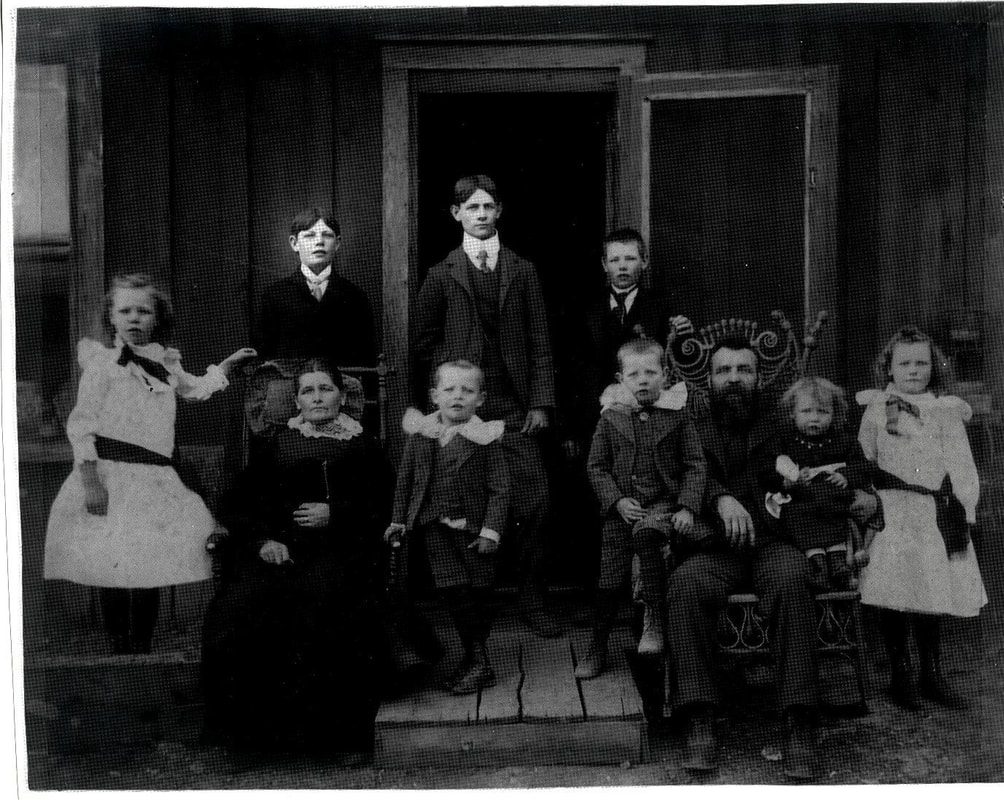
Family of Isabella Wallace and Charles Pateson McMills: Jean Wallace, Charles Wallace, John Wallace the oldest, William Wallace, David Wallace, Ruth Wallace, Mary Wallace George Wallace, and James Wallace (James is not pictured, deceased as a baby, buried in the SLC cemetery). Parents are sitting down. Toole, Utah @ FamilySearch.org
John's father, Charles, contracted black lung while working aboard steamships in England. Charles' health was very poor during his years in America. He purchased harnesses and shoemaking and repair equipment for John in about 1902 because he could no longer work and support his family. John, at the age 20, dropped out of the Utah School for the Deaf to become a primary breadwinner for the McMills family. Other children worked as well. However, John's mother depended on him for a steady income.
In about 1902, John set up his first business in Tooele, Utah. He relocated his business to Mercur, Utah, in about 1903 or 1904, continuing to support his family. On November 30, 1904, his father, Charles, passed away from a black lung in Tooele and was buried in the family plot in Tooele, Utah.
John had a good business in Tooele. However, more money was to be made in the mining town of Mercur. Mercur began growing after the fire of 1902. John moved his shop and started another business in Mercur. John's sister, Jeannie Wallace McMills, traveled each Friday by train to Mercur to collect the money John earned for the family. While in Mercur, John spent most of his time making harnesses for horses and mules. He also produced and repaired shoes.
In about 1902, John set up his first business in Tooele, Utah. He relocated his business to Mercur, Utah, in about 1903 or 1904, continuing to support his family. On November 30, 1904, his father, Charles, passed away from a black lung in Tooele and was buried in the family plot in Tooele, Utah.
John had a good business in Tooele. However, more money was to be made in the mining town of Mercur. Mercur began growing after the fire of 1902. John moved his shop and started another business in Mercur. John's sister, Jeannie Wallace McMills, traveled each Friday by train to Mercur to collect the money John earned for the family. While in Mercur, John spent most of his time making harnesses for horses and mules. He also produced and repaired shoes.

Family of Isabella Wallace and Charles Pateson McMills: Jean Wallace, Charles Wallace, John Wallace the oldest, William Wallace, David Wallace, Ruth Wallace, Mary Wallace George Wallace, and James Wallace (James is not pictured, deceased as a baby, buried in the SLC cemetery). Parents are sitting down. Toole, Utah
John Wallace McMills first shop was in the Tooele Family home of Charles and Isabella McMills
John's sister, Jeannie, met Pearl Ault in Mercur and introduced them. John already knew Pearl. They were former classmates. John and Pearl were dating each other. Pearl worked as a cook in the boarding house run by her sister Rachel Ault Elton. John's mother, Isabella, was not pleased to learn he was dating a girl.
John's mother expected John to stay with her all her life as a single male adult. Nevertheless, John and Pearl's friendship blossomed into love. John's mother did everything she could to stop the marriage between John and Pearl. Isabella even made John move to Salt Lake City, Utah, and relocate his business. After arriving in Salt Lake City, Isabella wanted a home, so she arranged with a wood mill to provide the lumber and equipment necessary, and John built his mother, a house and a large chicken coop on Lake Street in Salt Lake City. The skills of woodworking and building were also learned at the deaf school. John found work and started working at a local shoe repair shop in Salt Lake City until he could secure his shop.
John married Pearl Ault on June 15, 1910. His mother, Isabella, refused to allow Pearl to live in the house when he brought her home, so John and Pearl lived in the chicken coop until Isabella finally relented and allowed Pearl into the house. John and his mother had turbulent discussions regarding John's shop and living quarters. Isabella wanted to sell dry goods in John's shop. He refused his mother's demands. Realizing Isabella had no power over her son John, she needed additional income and began searching for other options.
During Isabella's search for income, she met a former acquaintance from Scotland, Robert Campbell. She married him. Shortly after their marriage, Isabella and Robert moved to San Francisco, California, where most of Isabella and Charles' sons had already relocated.
John's mother expected John to stay with her all her life as a single male adult. Nevertheless, John and Pearl's friendship blossomed into love. John's mother did everything she could to stop the marriage between John and Pearl. Isabella even made John move to Salt Lake City, Utah, and relocate his business. After arriving in Salt Lake City, Isabella wanted a home, so she arranged with a wood mill to provide the lumber and equipment necessary, and John built his mother, a house and a large chicken coop on Lake Street in Salt Lake City. The skills of woodworking and building were also learned at the deaf school. John found work and started working at a local shoe repair shop in Salt Lake City until he could secure his shop.
John married Pearl Ault on June 15, 1910. His mother, Isabella, refused to allow Pearl to live in the house when he brought her home, so John and Pearl lived in the chicken coop until Isabella finally relented and allowed Pearl into the house. John and his mother had turbulent discussions regarding John's shop and living quarters. Isabella wanted to sell dry goods in John's shop. He refused his mother's demands. Realizing Isabella had no power over her son John, she needed additional income and began searching for other options.
During Isabella's search for income, she met a former acquaintance from Scotland, Robert Campbell. She married him. Shortly after their marriage, Isabella and Robert moved to San Francisco, California, where most of Isabella and Charles' sons had already relocated.
John secured a new shop on December 14, 1926, located at 261 East and 5th South in Salt Lake City. With business booming for John, tragedy struck the family in late 1927. John was out late working on his car. There was no electricity in the garage where he was working. John used a
kerosene lantern while he worked on his car. It was late, and Pearl sent her daughter, Lucy, to get her father for supper. Lucy told her father that her mother wanted John and Lucy to return home. Somehow, the kerosene lantern set fire to the car John was working on, and he was severely burned on the right side of his body and his right hand. John was rushed to the hospital. The burns were so severe on his hand that the doctors wanted to amputate his right hand. Eva, John's eldest daughter, protested, but the doctors were determined. Eva called Uncle Charlie John's brother. Uncle Charlie told the doctors that they could not amputate his right hand. He insisted and told the doctors they would cut off his hand, which he earned a living with and communicated in sign language. Uncle Charlie was forceful! The doctors reluctantly agreed to Charlie's demands, wrapped John's right hand in bandages, and sent him home.
When the bandages were removed, it was apparent that all the fingers on John's right hand had grown together. As a result, his hand was completely immobile. Unable to work, John's brothers, Charles (who lives in Utah) and David (who lives in San Francisco), sent John by train to his brother David's home. David found a specialist that could operate on John's hand to separate and rehabilitate it. While John was in San Francisco, Pearl and John's two daughters, Eva and Lucy, went to live in Cedar Fort, Utah, with Pearl's sister, Mamie Ault Calton.
While John was recovering from surgery on his hand, he searched for a place in San Francisco where he could set up his business again. Finally, he found a great location, wrote to Pearl, and told her he had found a place where he could set up a business and never move back to Utah. John worked in a movie theater with his brother, David, to secure enough money for train fares for his wife, Pearl, and the girls to travel to San Francisco. Uncle David's home was
not very large, so Eva was sent to San Bruno to take care of her grandmother, Isabella. Pearl became a live-in cook and housekeeper for Mr. Comosie, a businessman in San Francisco. Lucy and John stayed with David's family. Life was hard in San Francisco. Everyone had to work.
kerosene lantern while he worked on his car. It was late, and Pearl sent her daughter, Lucy, to get her father for supper. Lucy told her father that her mother wanted John and Lucy to return home. Somehow, the kerosene lantern set fire to the car John was working on, and he was severely burned on the right side of his body and his right hand. John was rushed to the hospital. The burns were so severe on his hand that the doctors wanted to amputate his right hand. Eva, John's eldest daughter, protested, but the doctors were determined. Eva called Uncle Charlie John's brother. Uncle Charlie told the doctors that they could not amputate his right hand. He insisted and told the doctors they would cut off his hand, which he earned a living with and communicated in sign language. Uncle Charlie was forceful! The doctors reluctantly agreed to Charlie's demands, wrapped John's right hand in bandages, and sent him home.
When the bandages were removed, it was apparent that all the fingers on John's right hand had grown together. As a result, his hand was completely immobile. Unable to work, John's brothers, Charles (who lives in Utah) and David (who lives in San Francisco), sent John by train to his brother David's home. David found a specialist that could operate on John's hand to separate and rehabilitate it. While John was in San Francisco, Pearl and John's two daughters, Eva and Lucy, went to live in Cedar Fort, Utah, with Pearl's sister, Mamie Ault Calton.
While John was recovering from surgery on his hand, he searched for a place in San Francisco where he could set up his business again. Finally, he found a great location, wrote to Pearl, and told her he had found a place where he could set up a business and never move back to Utah. John worked in a movie theater with his brother, David, to secure enough money for train fares for his wife, Pearl, and the girls to travel to San Francisco. Uncle David's home was
not very large, so Eva was sent to San Bruno to take care of her grandmother, Isabella. Pearl became a live-in cook and housekeeper for Mr. Comosie, a businessman in San Francisco. Lucy and John stayed with David's family. Life was hard in San Francisco. Everyone had to work.
As it happened, Emma, David's wife, and Mary John's sister, decided to put Lucy in a Catholic orphanage. Lucy heard them talking. This hurt Lucy deeply. With her sister Eva gone, her mother gone, and her father working, she felt alone and afraid. While sitting outside, Lucy cried her little heart out. When David got home, he asked Lucy why she was crying. Lucy told Uncle David of the plan to put her in an orphanage. David was furious with his wife and sister. Then, Lucy was sent to live with her mother at Mr. Comosie's house. Lucy had to be very quiet and remain unseen while Pearl was working. Lucy was grateful and much happier with her mother.
Tragedy again struck the family when Pearl's appendix burst while working for Mr. Comosie in San Francisco. When she got to the hospital, the doctors immediately performed the surgery. Unfortunately, it appeared that during surgery, Pearl had passed away. The doctors stitched up Pearl's wound from the surgery and had her taken to the morgue. Pearl removed the silver dollars from her eyes while in the morgue. When one of the orderlies noticed Pearl moving, he rushed her to a room where they were warming Pearl's body temperature. The doctors told John that Pearl could not live in San Francisco because the weather was too damp, and she would not be able to recover from pneumonia she contracted from her surgery.
Tragedy again struck the family when Pearl's appendix burst while working for Mr. Comosie in San Francisco. When she got to the hospital, the doctors immediately performed the surgery. Unfortunately, it appeared that during surgery, Pearl had passed away. The doctors stitched up Pearl's wound from the surgery and had her taken to the morgue. Pearl removed the silver dollars from her eyes while in the morgue. When one of the orderlies noticed Pearl moving, he rushed her to a room where they were warming Pearl's body temperature. The doctors told John that Pearl could not live in San Francisco because the weather was too damp, and she would not be able to recover from pneumonia she contracted from her surgery.
After this long ordeal, John was convinced that they must return to Utah and again start their business on 5th South, Salt Lake City. Unfortunately, when they arrived, the person renting John's equipment and shop would not return the shop and equipment. John worked long and hard to regain ownership of his shop. Finally, the shop and equipment were returned with the
help of Bishop Fetzer of the Salt Lake City 8th Ward, a leader in The Church of Jesus Christ of Latter-day Saints.
The depression had begun by the time John restarted his business. He started to train the members of The Church of Jesus Christ of Latter-day Saints as apprentices in the shoemaking and repair trade in exchange for commodities and some financial compensation from the church. John also taught local hearing men the trade to earn extra money. John was tenacious and full of determination all his life. He would not be discouraged or distracted from his goals. Eva, John's daughter, was the only person John could interpret for him. She had to fingerspell every word for John. If spelling accuracy were required, Eva would interpret. If John could not understand a word, he would use his dictionary to ensure he understood everything relating to his dealings with people who could hear. John did not like people who could hear because they would try to cheat him or undercut his price. One day, his granddaughter, Jean, realized she was a "hearing" person. Crushed at the thought that she was a hearing person, she asked her mother, Lucy, about this. Lucy told Jean, "You're not a hearing person. Grandpa loves you very much. "Don't you doubt that Grandpa loves you and you are not hearing."
John was a stickler for well-made shoes. Each fall, when school started, Jean and her brothers and sisters would have to line up with their new shoes in hand for their grandfather John McMills to inspect. Their mother, Lucy, waited and held her breath, hoping the shoes would meet with her father's approval. Often, John would make the sign for "no good" (right index and middle fingers held together, drawn across the palm) and then make a fist with his right hand,
hitting his palm. Lucy would lower her head and shake it; oh no, her father would toss the
shoes back at us one by one. Buying shoes for school was a nightmare and a struggle between the latest fashions and good old saddle oxfords!
help of Bishop Fetzer of the Salt Lake City 8th Ward, a leader in The Church of Jesus Christ of Latter-day Saints.
The depression had begun by the time John restarted his business. He started to train the members of The Church of Jesus Christ of Latter-day Saints as apprentices in the shoemaking and repair trade in exchange for commodities and some financial compensation from the church. John also taught local hearing men the trade to earn extra money. John was tenacious and full of determination all his life. He would not be discouraged or distracted from his goals. Eva, John's daughter, was the only person John could interpret for him. She had to fingerspell every word for John. If spelling accuracy were required, Eva would interpret. If John could not understand a word, he would use his dictionary to ensure he understood everything relating to his dealings with people who could hear. John did not like people who could hear because they would try to cheat him or undercut his price. One day, his granddaughter, Jean, realized she was a "hearing" person. Crushed at the thought that she was a hearing person, she asked her mother, Lucy, about this. Lucy told Jean, "You're not a hearing person. Grandpa loves you very much. "Don't you doubt that Grandpa loves you and you are not hearing."
John was a stickler for well-made shoes. Each fall, when school started, Jean and her brothers and sisters would have to line up with their new shoes in hand for their grandfather John McMills to inspect. Their mother, Lucy, waited and held her breath, hoping the shoes would meet with her father's approval. Often, John would make the sign for "no good" (right index and middle fingers held together, drawn across the palm) and then make a fist with his right hand,
hitting his palm. Lucy would lower her head and shake it; oh no, her father would toss the
shoes back at us one by one. Buying shoes for school was a nightmare and a struggle between the latest fashions and good old saddle oxfords!
John continued to work for his own business until 1952. Then he retired and sold his business. You can see the damage to his right hand in this photo. The only finger he lost was the little finger on his right hand.
Eva worked for her father until she secured employment at fourteen and worked for various department stores in Salt Lake City. John was well-known to businesses in that area. In addition, the Deaf community respected John and would visit him often for advice. Eventually, Lucy worked for her father in the shop. She polished and dyed shoes every day after school until she married in 1936.
John was an avid reader. John was never without the Bible and the dictionary; these books were always by his side. His favorite books to read were detective stories, and he especially enjoyed Alfred Hitchcock movies. When visiting Grandpa McMills and Auntie Eva, Jean accompanied her grandfather to the movies on Saturday afternoons. John taught Sunday school at the LDS Deaf Ward in Salt Lake City, on 5th South and 8th East. Jean remembers watching her grandfather teach his class. John loved walking, and Jean would walk up 5th South to meet her grandfather and walk home after early morning priesthood meetings.
Eva worked for her father until she secured employment at fourteen and worked for various department stores in Salt Lake City. John was well-known to businesses in that area. In addition, the Deaf community respected John and would visit him often for advice. Eventually, Lucy worked for her father in the shop. She polished and dyed shoes every day after school until she married in 1936.
John was an avid reader. John was never without the Bible and the dictionary; these books were always by his side. His favorite books to read were detective stories, and he especially enjoyed Alfred Hitchcock movies. When visiting Grandpa McMills and Auntie Eva, Jean accompanied her grandfather to the movies on Saturday afternoons. John taught Sunday school at the LDS Deaf Ward in Salt Lake City, on 5th South and 8th East. Jean remembers watching her grandfather teach his class. John loved walking, and Jean would walk up 5th South to meet her grandfather and walk home after early morning priesthood meetings.
John took pictures of his family often. He had his cameras, tripods, and a dark room to develop the pictures in his tiny apartment bathroom in Salt Lake City, and he also had a darkroom made especially for him in Lucy's home in Ogden.
John Wallace McMills was fun-loving and such a tease. He always made everyone laugh. He loved playing checkers and always had time for games with his grandchildren. He loved his family, friends, and little children. John particularly loved Billy and took him under his wing. Billy Billiter was a little deaf boy. His father was Ferda Billiter. Billy was not only deaf; he had an additional disability.
John Wallace McMills was fun-loving and such a tease. He always made everyone laugh. He loved playing checkers and always had time for games with his grandchildren. He loved his family, friends, and little children. John particularly loved Billy and took him under his wing. Billy Billiter was a little deaf boy. His father was Ferda Billiter. Billy was not only deaf; he had an additional disability.
John's 90th birthday party was held on January 9, 1972, at the Salt Lake Valley Branch for the Deaf. John was so happy and thrilled to meet and greet all his many friends wishing him well. He often brushed the tears from his eyes and giggled as his friends came through. John passed away that same year, in June 1972.
Jean Pearl Greenwood Thomas, a well-known interpreter in Utah, is the daughter of Lucy Pearl McMills and Virgil Rogers Greenwood. Her mother, Lucy, also an interpreter, is the third child of Deaf parents, John Wallace McMillis and Pearl Ault. John and Pearl McMills' first baby, John Ault McMills, died shortly after birth. He is buried at Cedar Fort. John and Pearl had three children: John Ault, Eva Alice, and Lucy Pearl.
Jean Pearl Greenwood Thomas, a well-known interpreter in Utah, is the daughter of Lucy Pearl McMills and Virgil Rogers Greenwood. Her mother, Lucy, also an interpreter, is the third child of Deaf parents, John Wallace McMillis and Pearl Ault. John and Pearl McMills' first baby, John Ault McMills, died shortly after birth. He is buried at Cedar Fort. John and Pearl had three children: John Ault, Eva Alice, and Lucy Pearl.
The information collected for this account is from letters written between Pearl Ault McMills and her husband, John Wallace McMills. The letters are in the possession of Jean Greenwood Thomas. In addition, family histories are written by Lucy Pearl McMills and Eva Alice McMills Prudence Fowler (Eva is one person with three last names). The comma should be after Fowler. Oral histories were passed on by Pearl Ault McMills, John Wallace McMills, Eva Alice McMills, Lucy Pearl McMills, and Linda Alice Greenwood. Jean Pearl Greenwood Thomas learned about her grandfather, John W. McMills, through personal experiences.

John Wallace McMills was a founding member of Salt Lake City Division No. 56., an insurance company, founded for and by Deaf community members. After an unknown dispute, John resigned from FRAT. Members of the Utah Fraternal Society of the Deaf. John Wallace McMills is the first person sitting on the left

